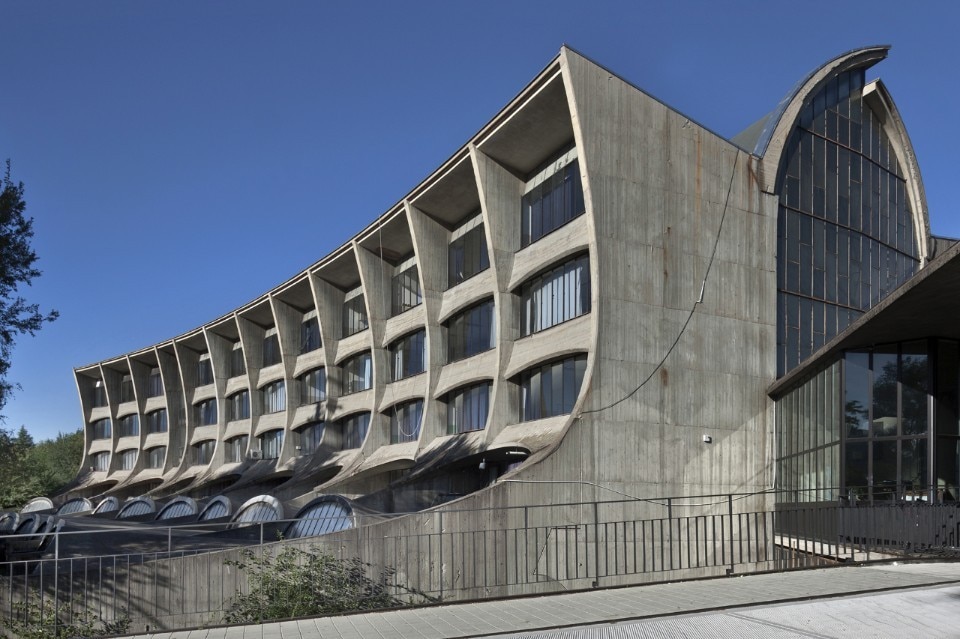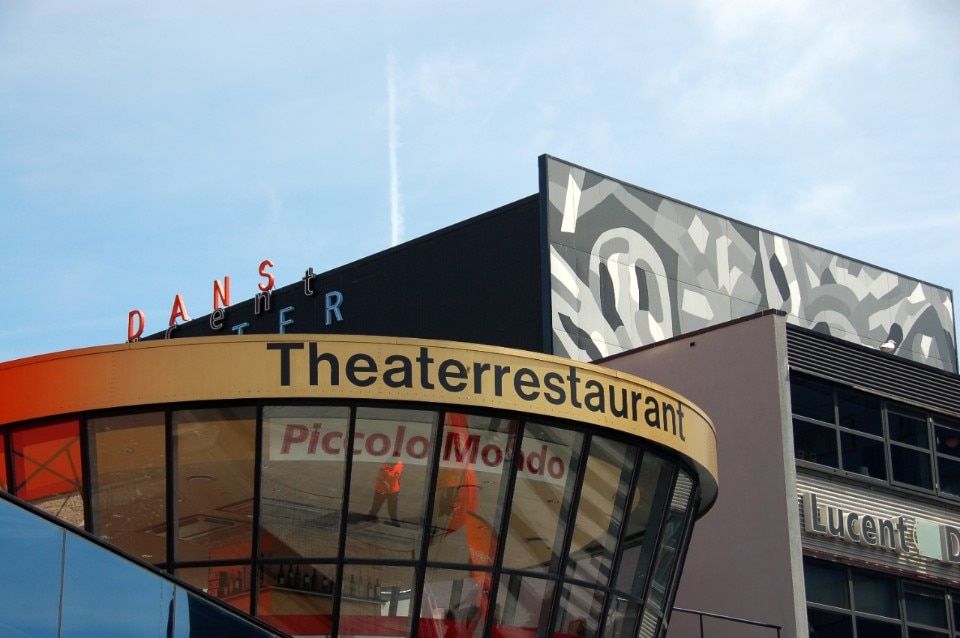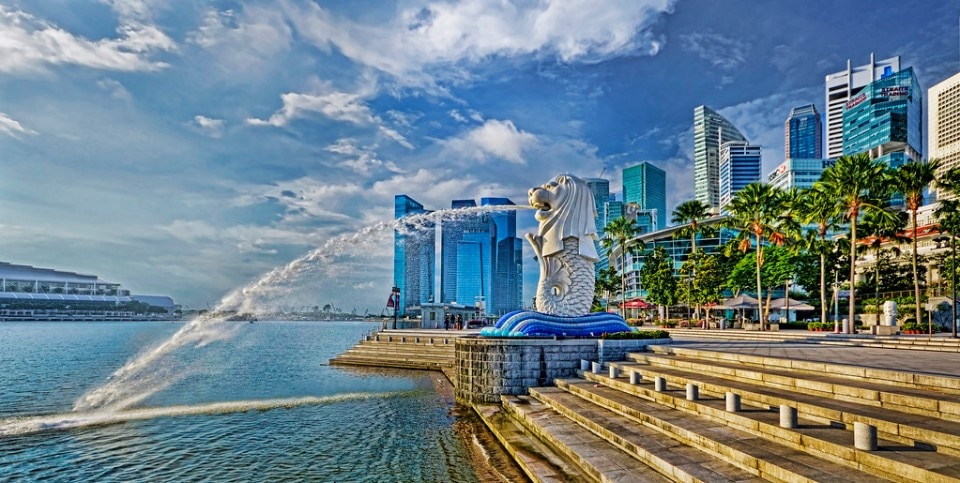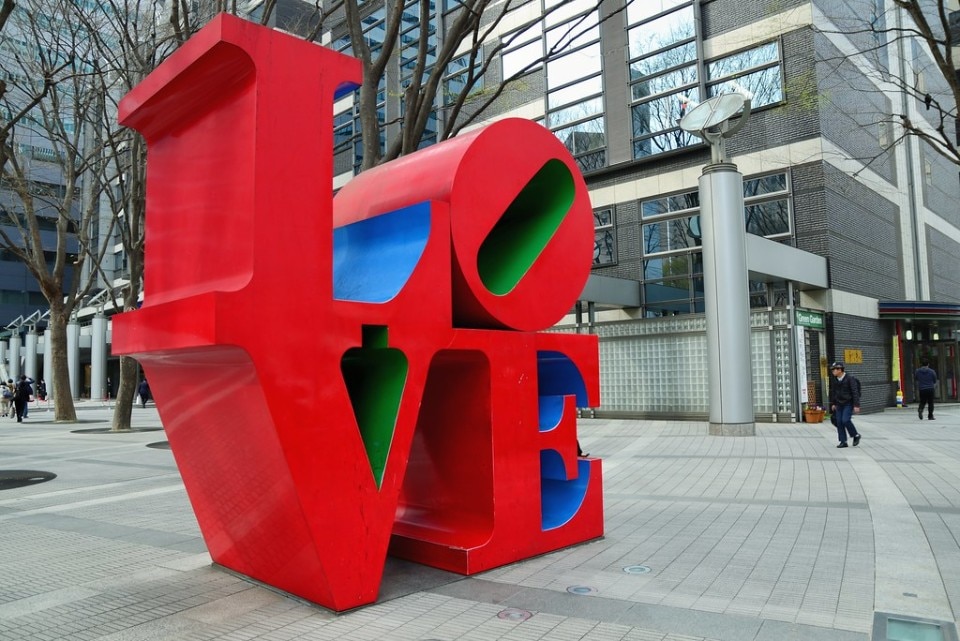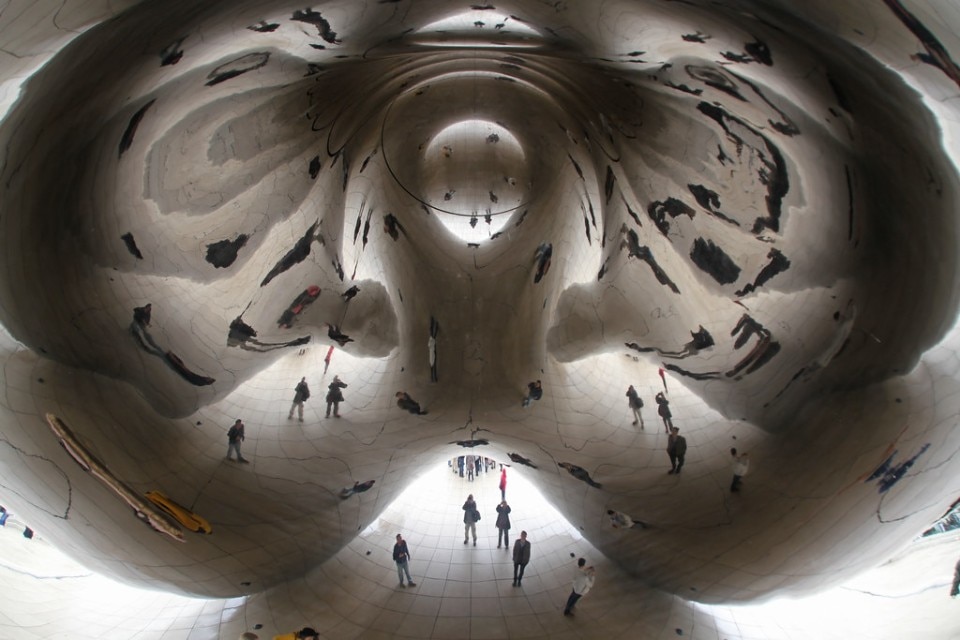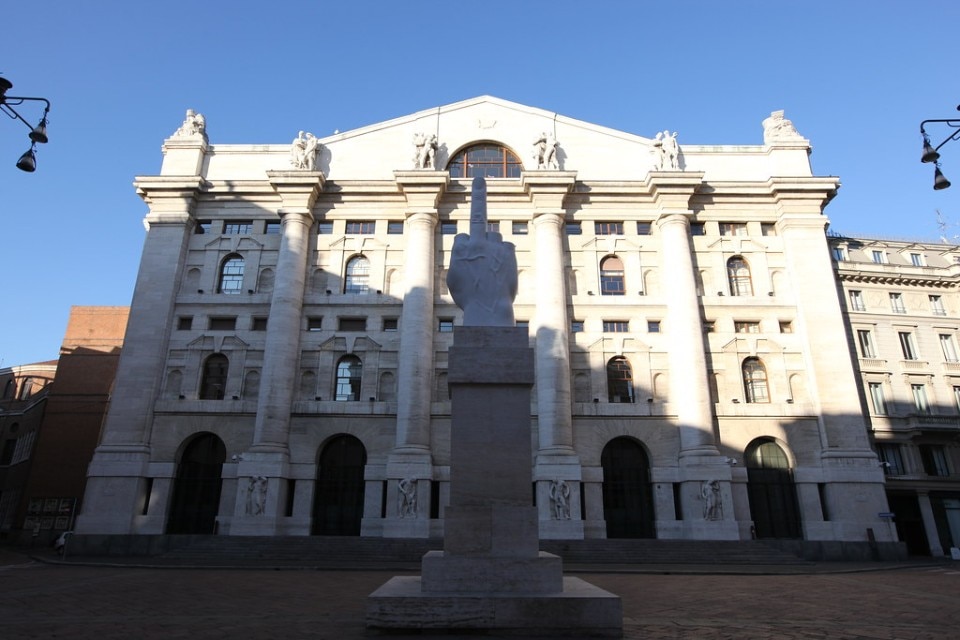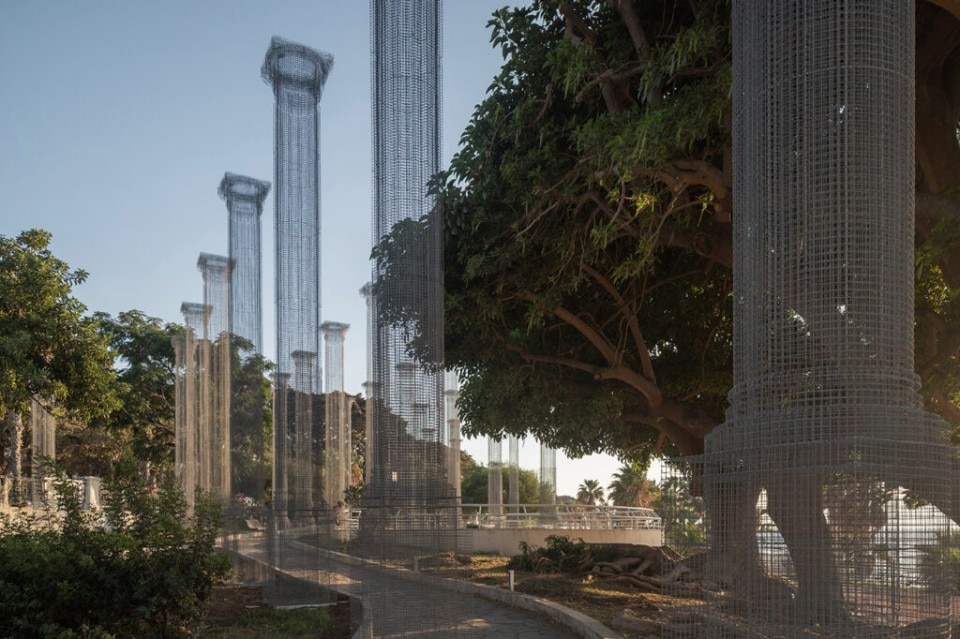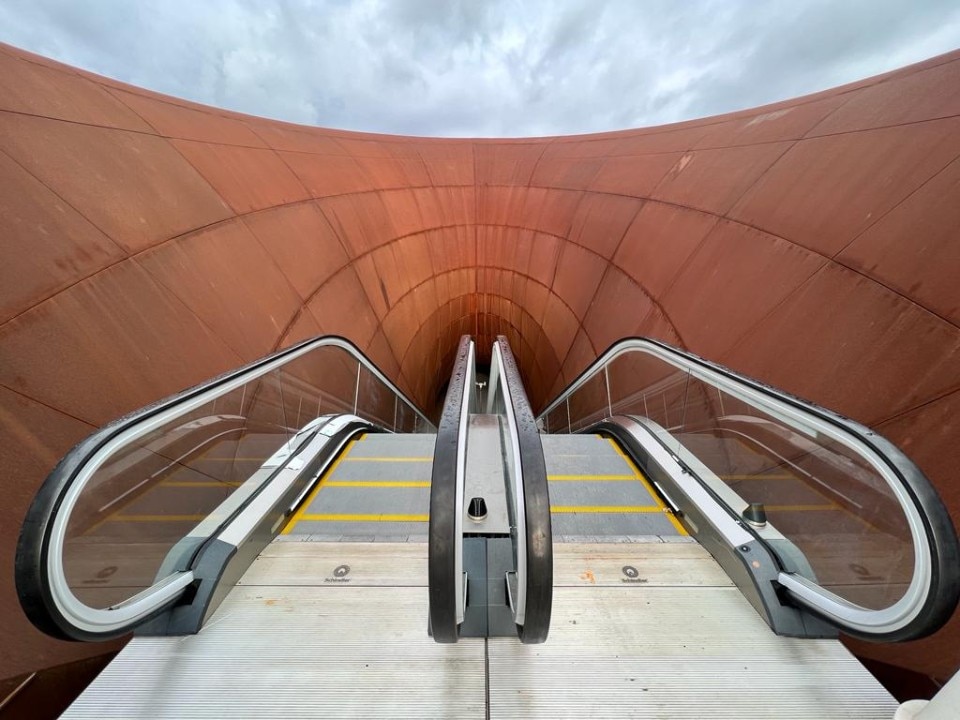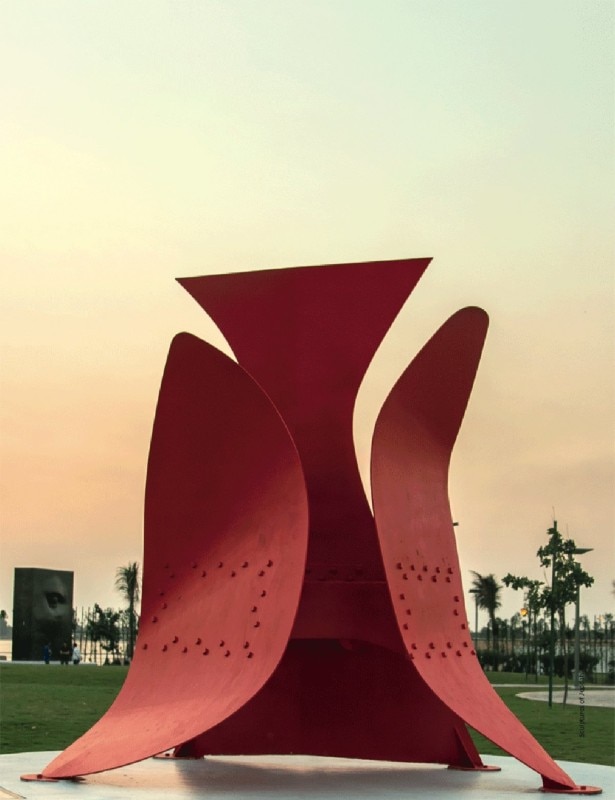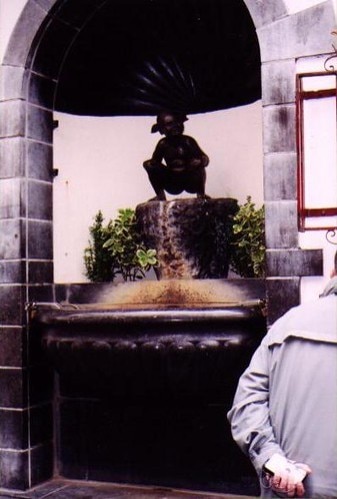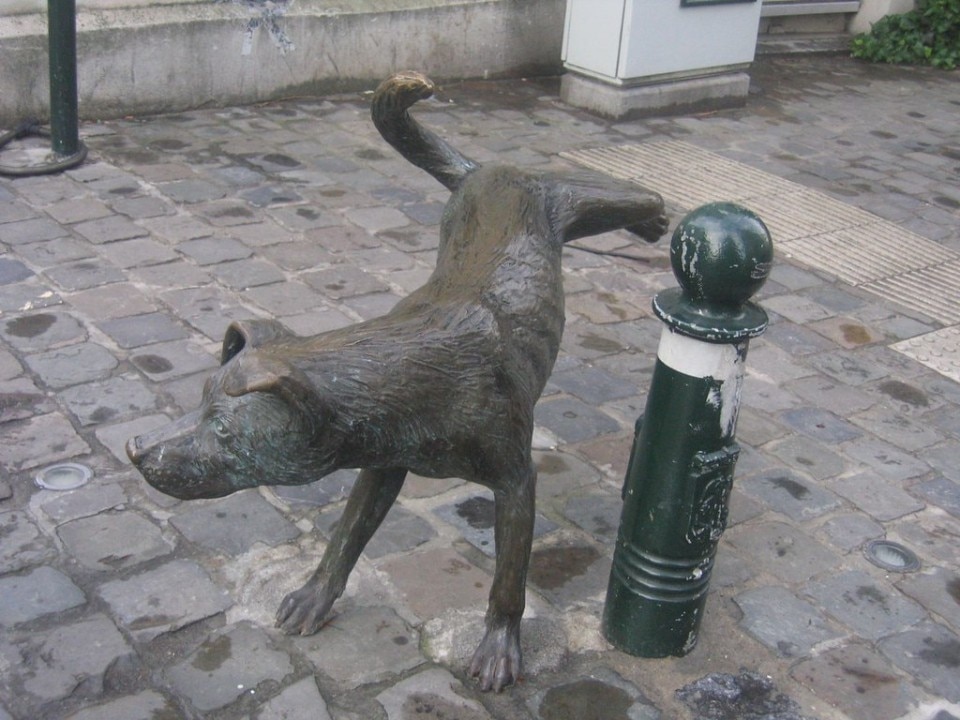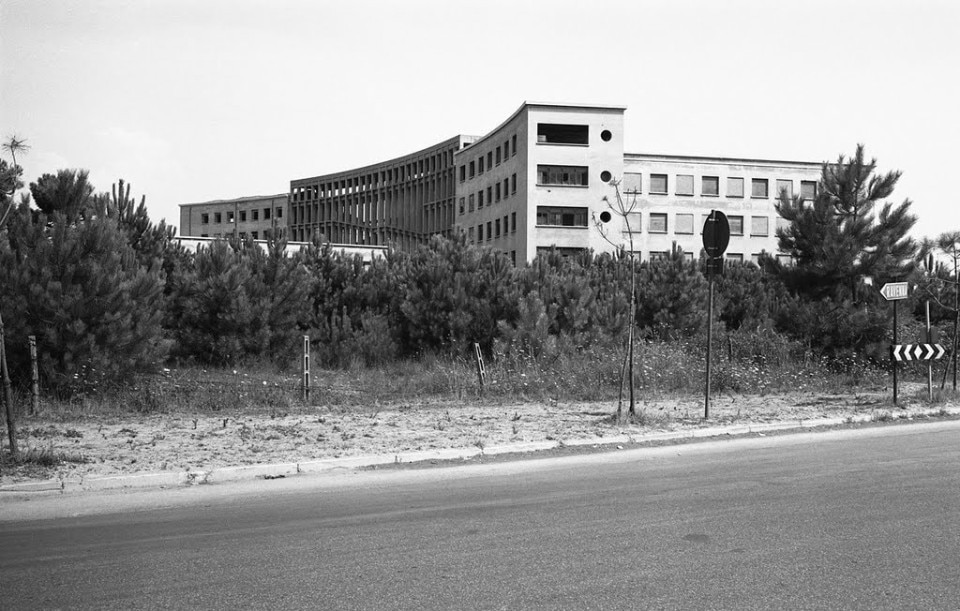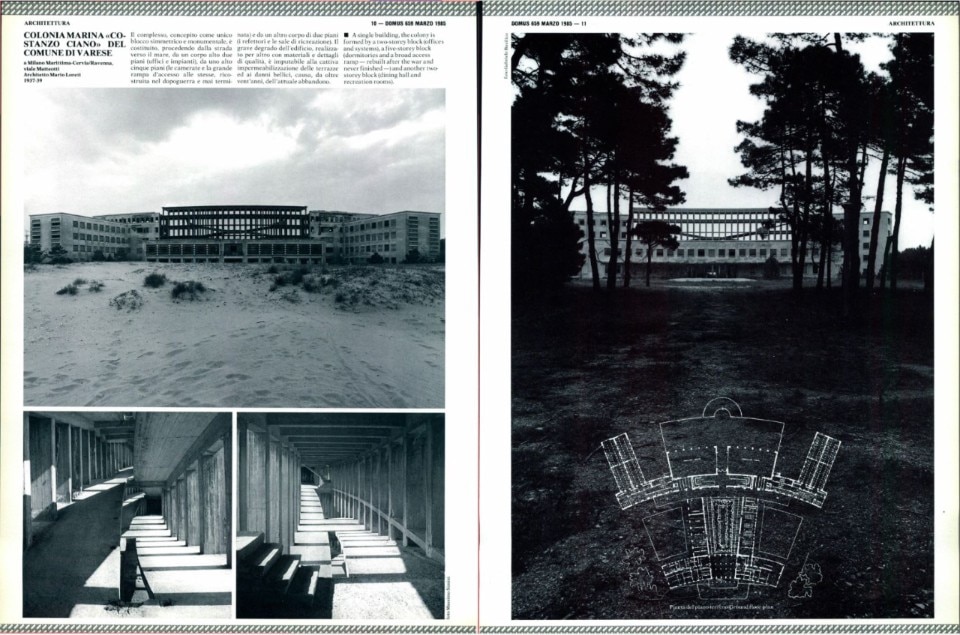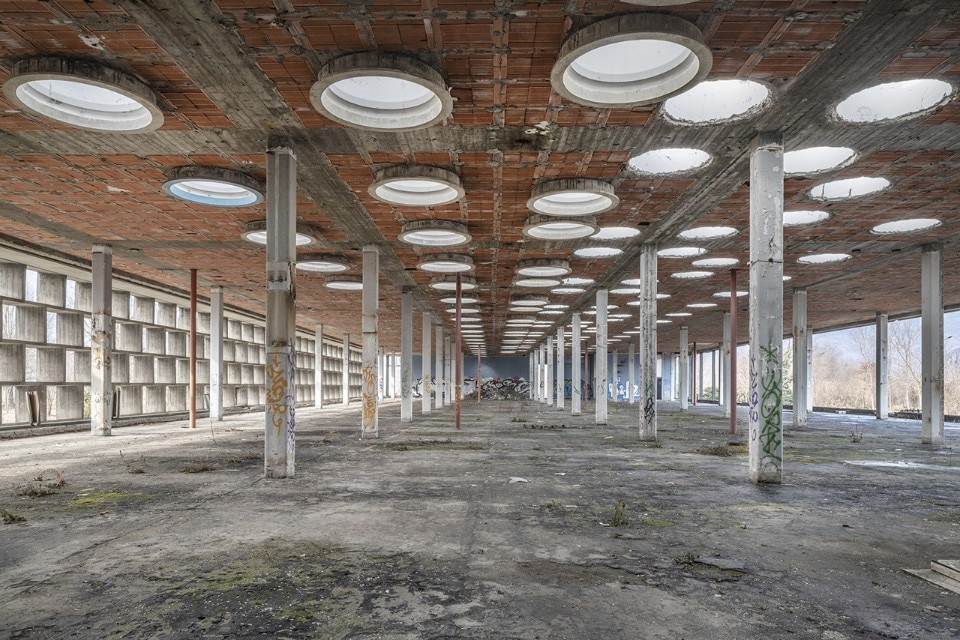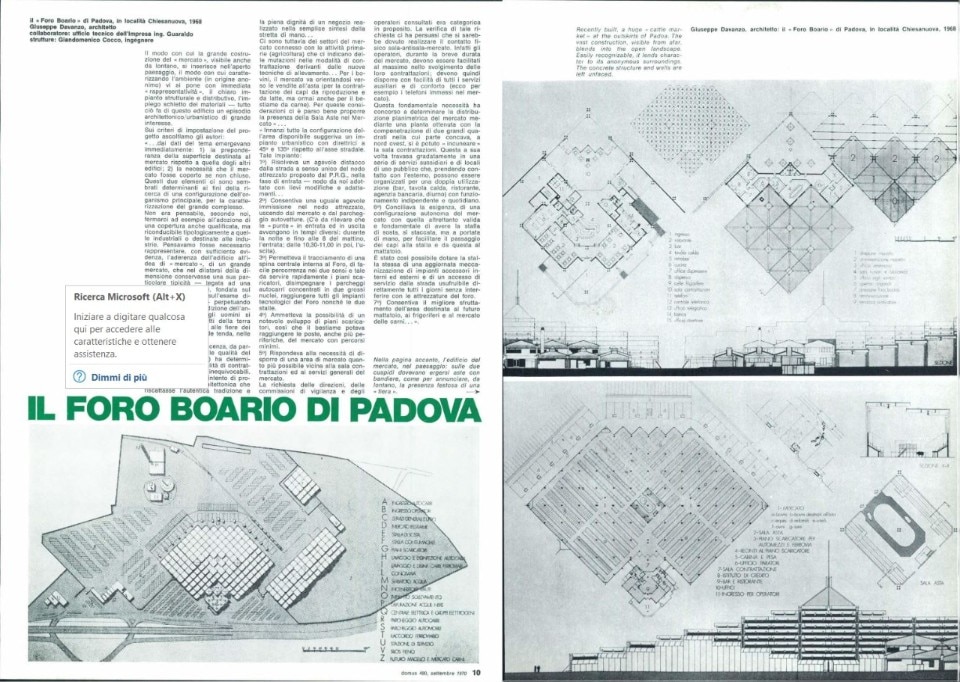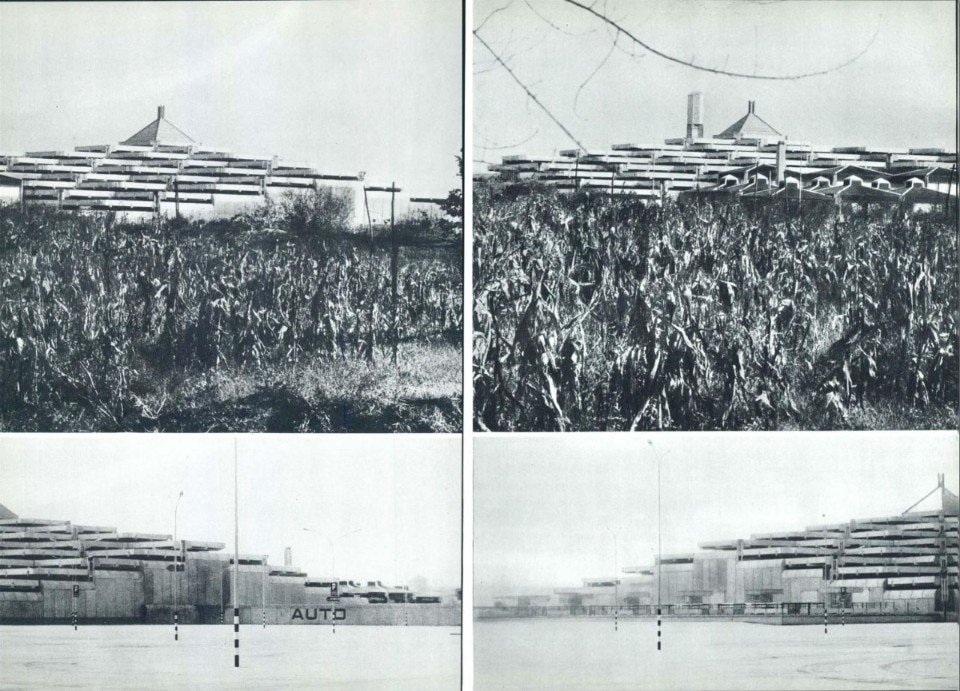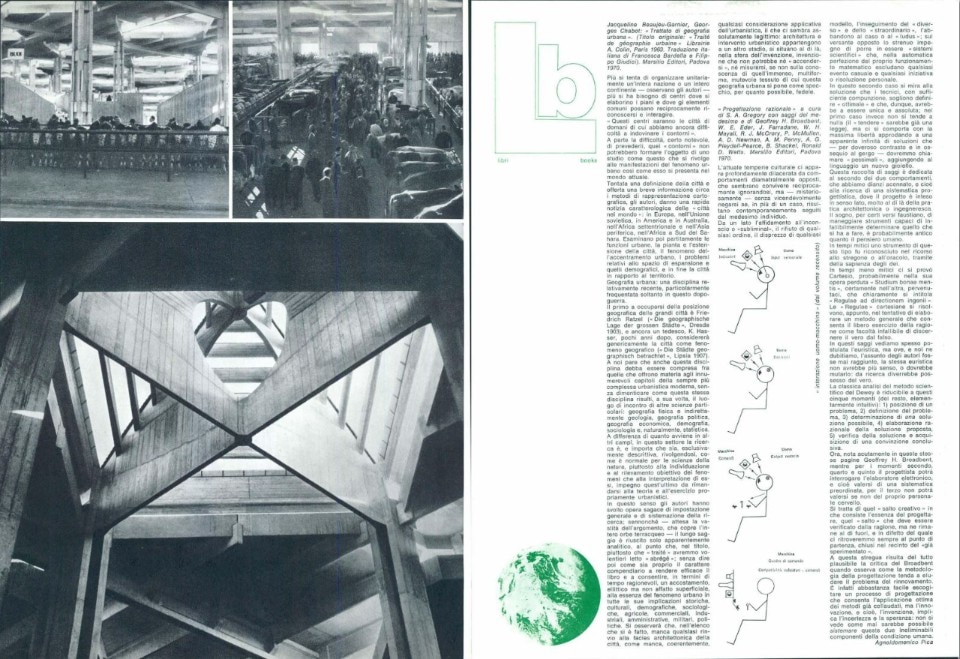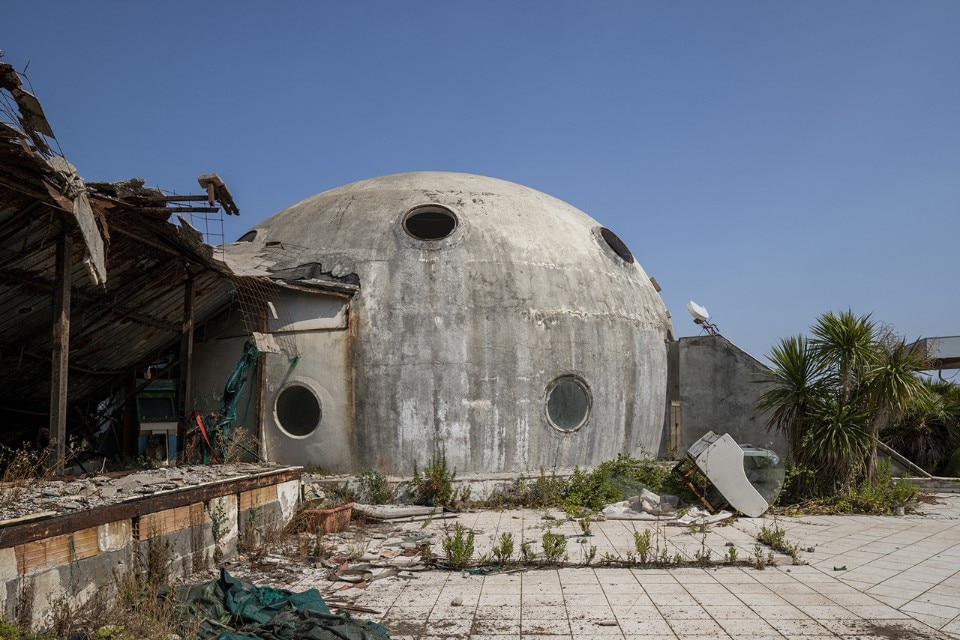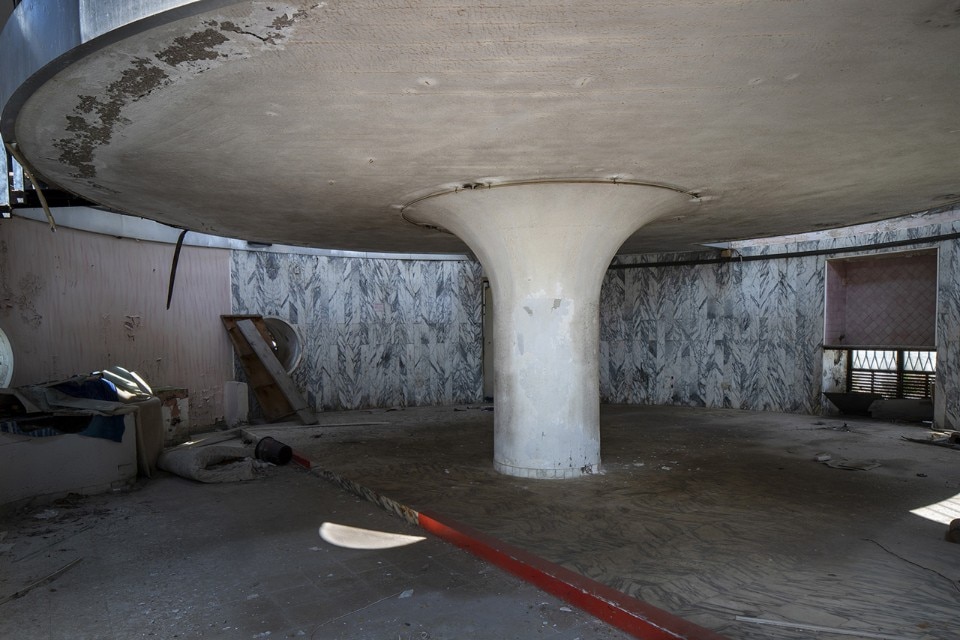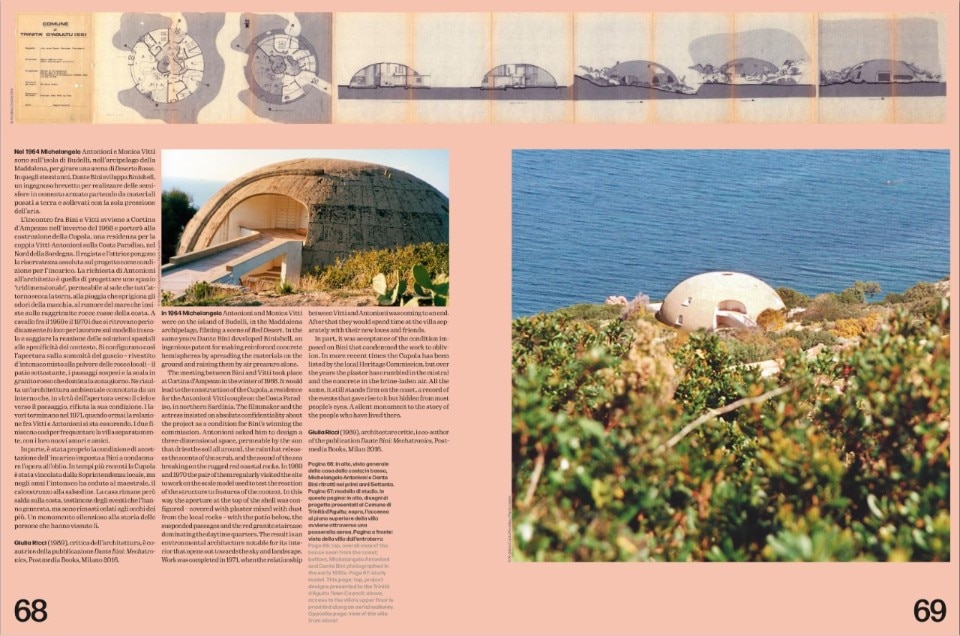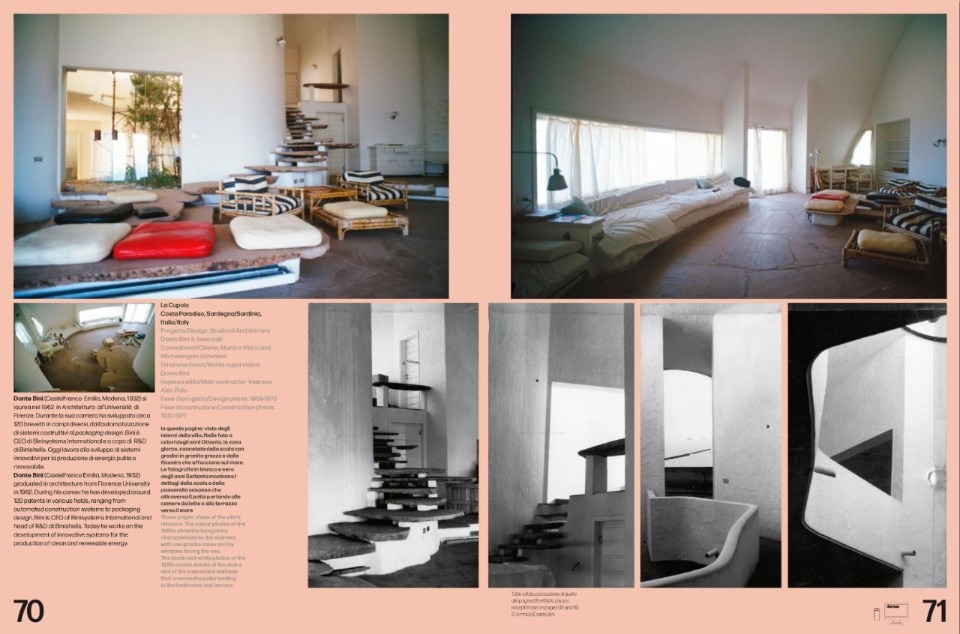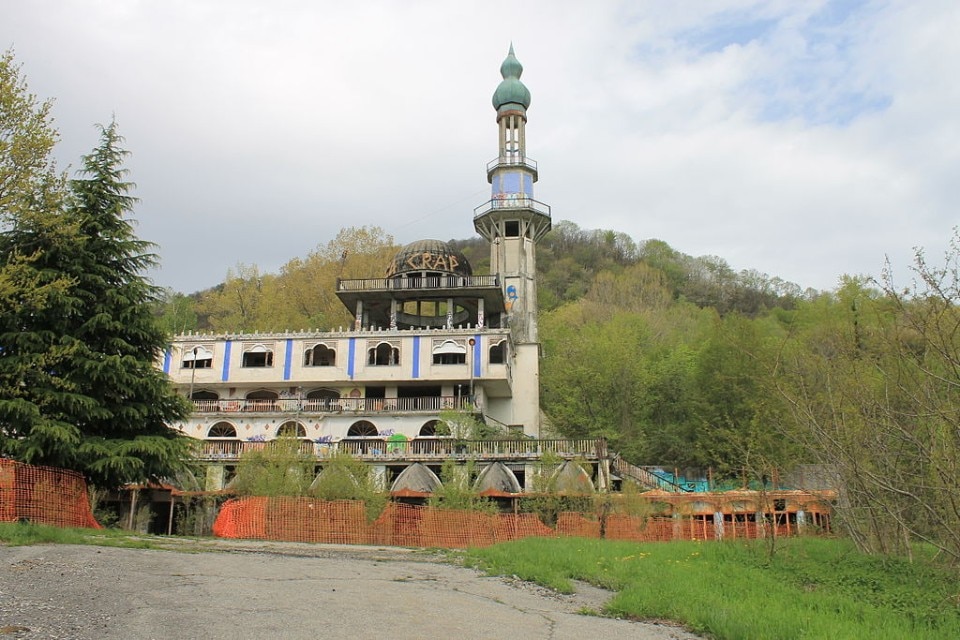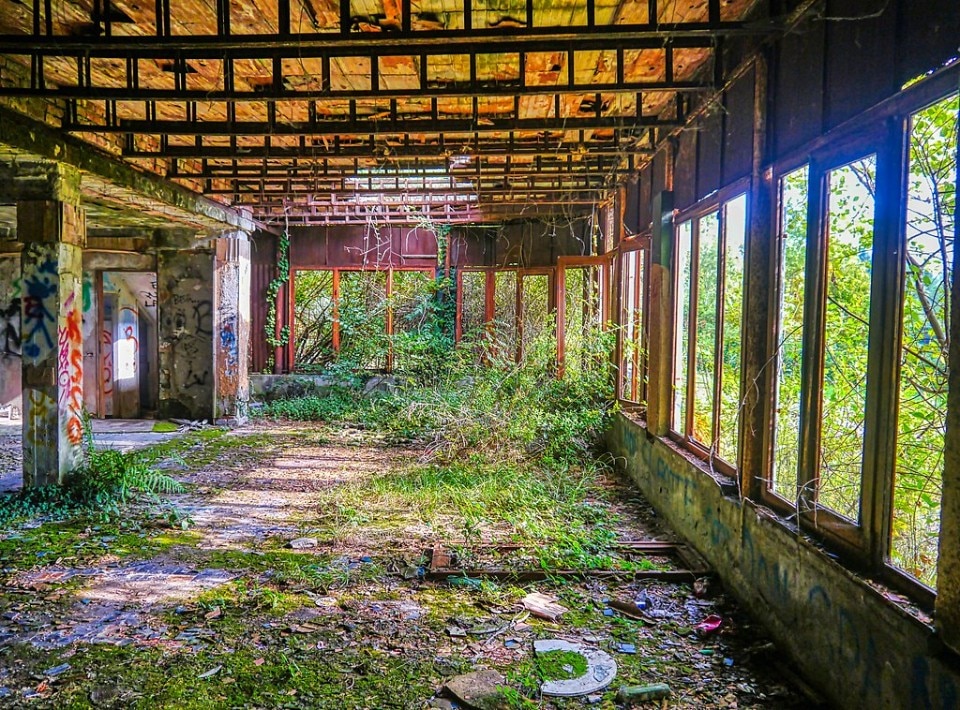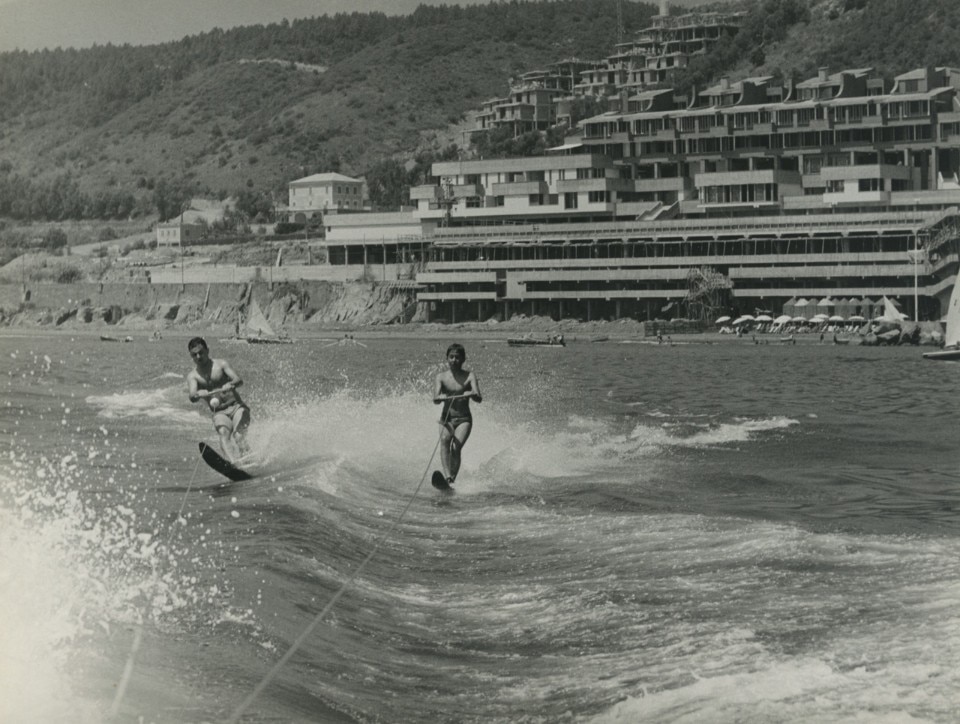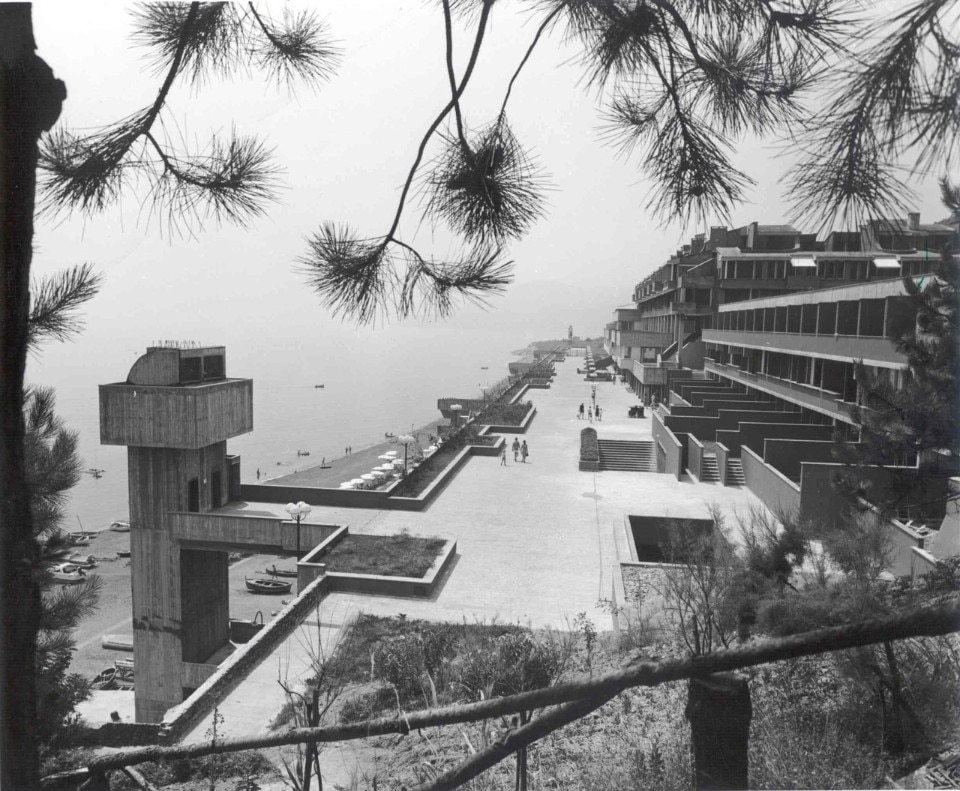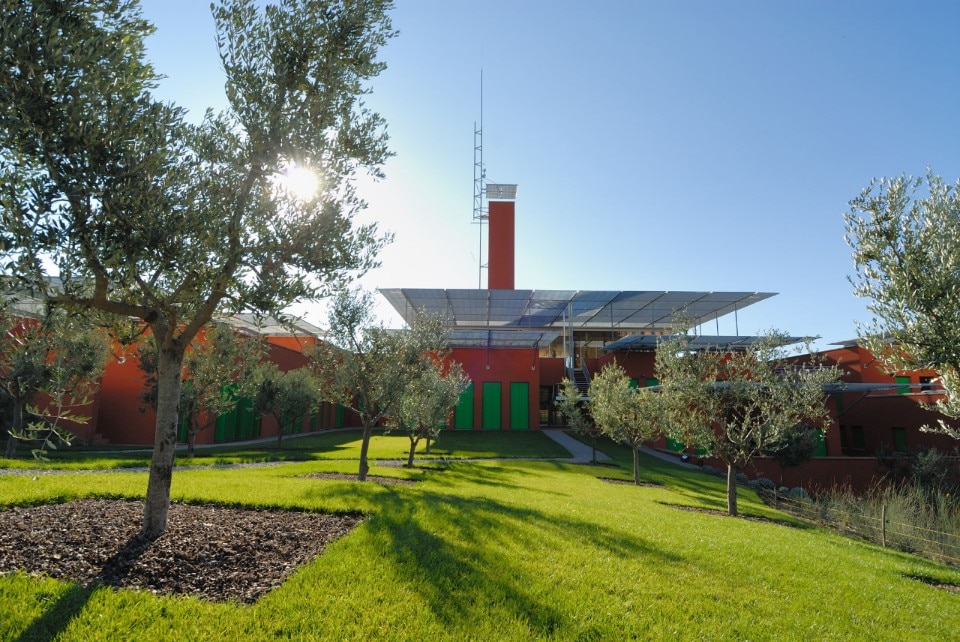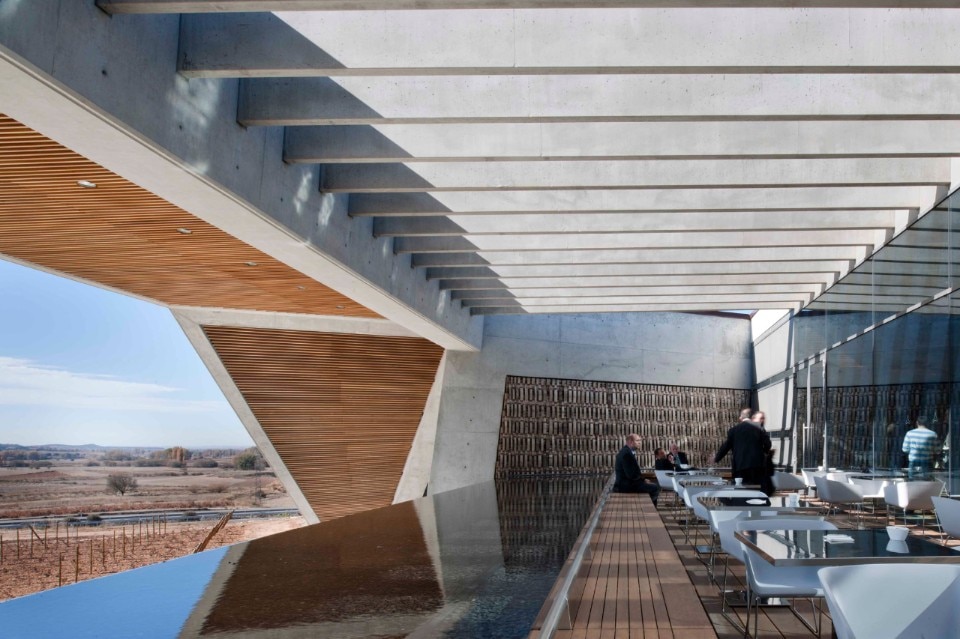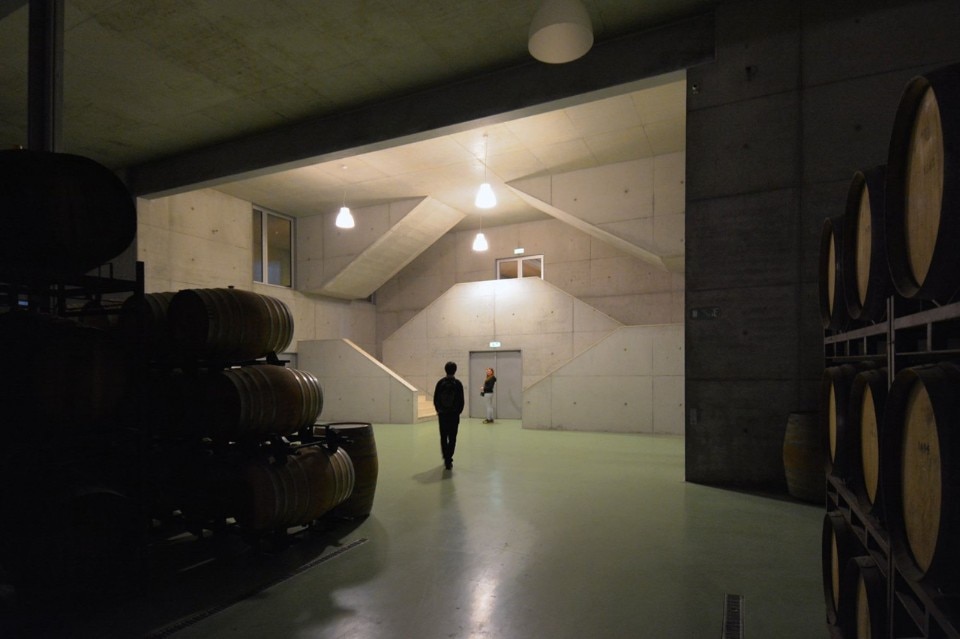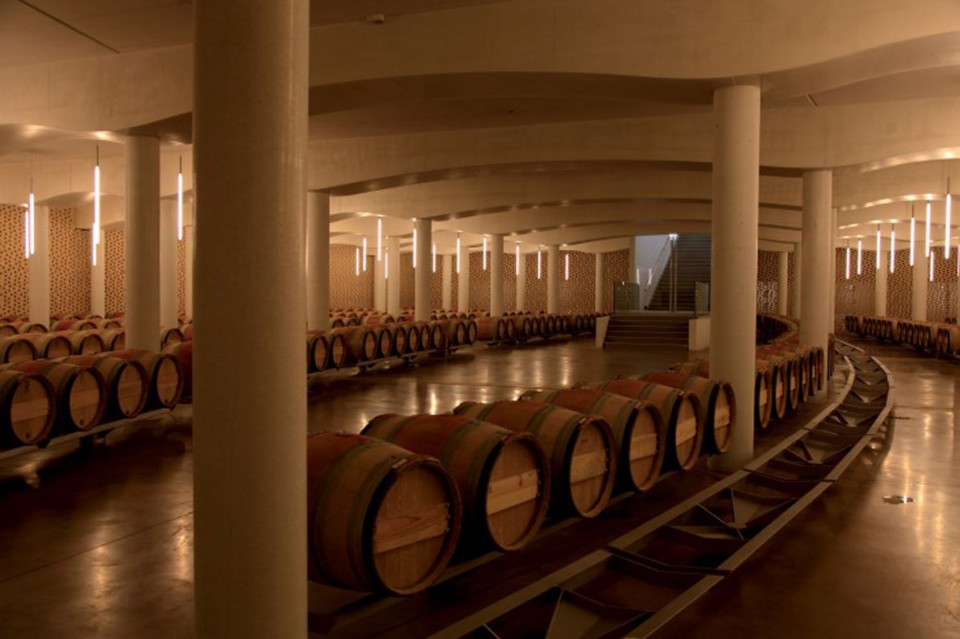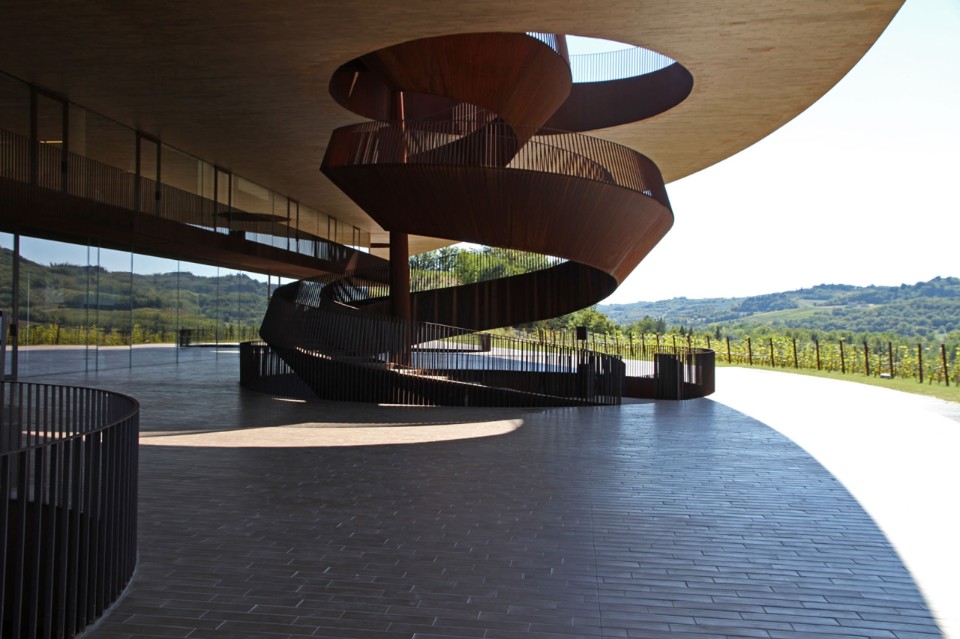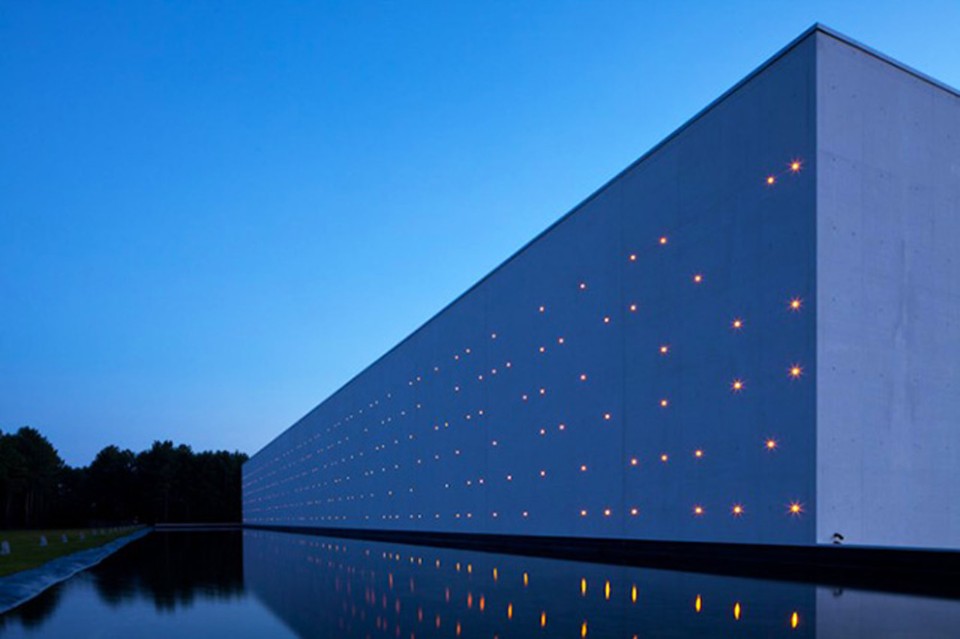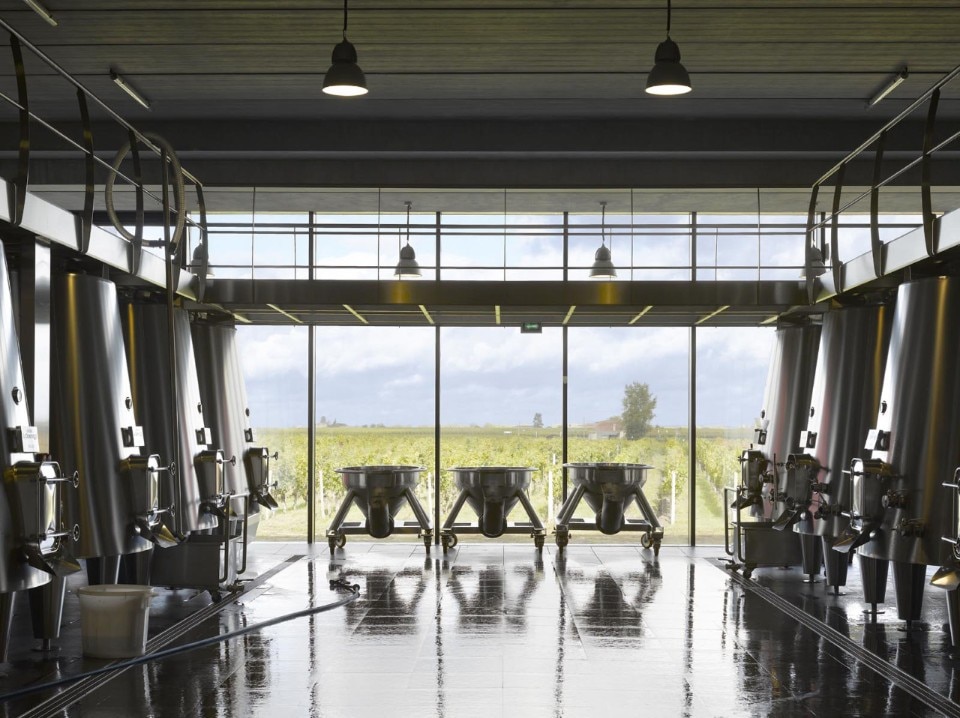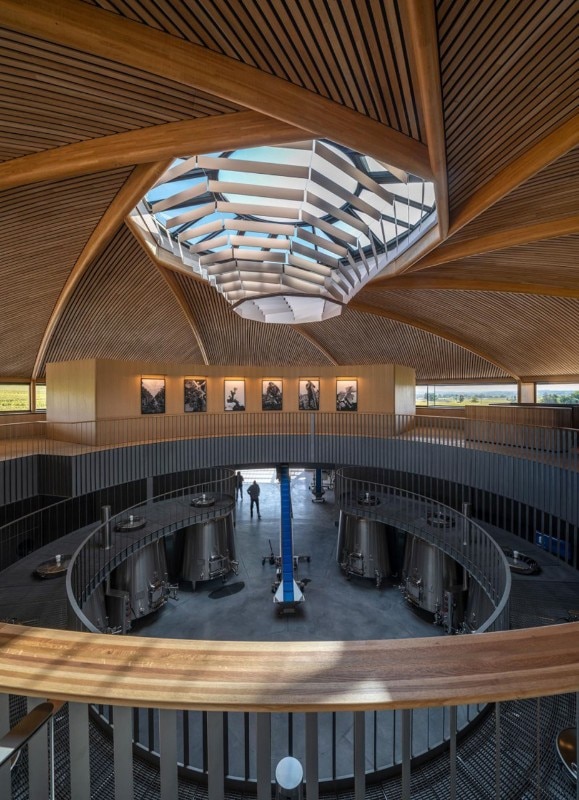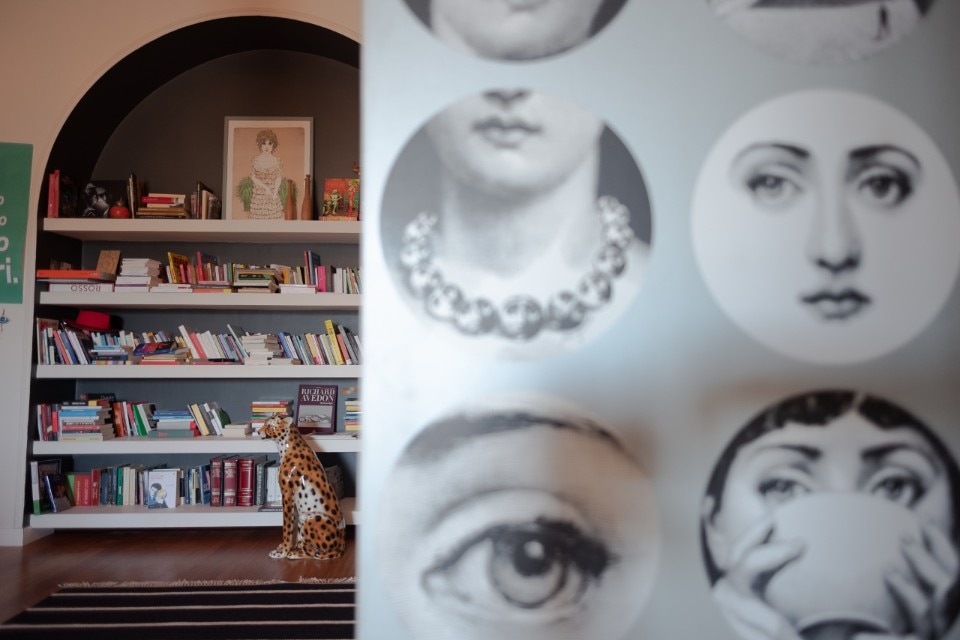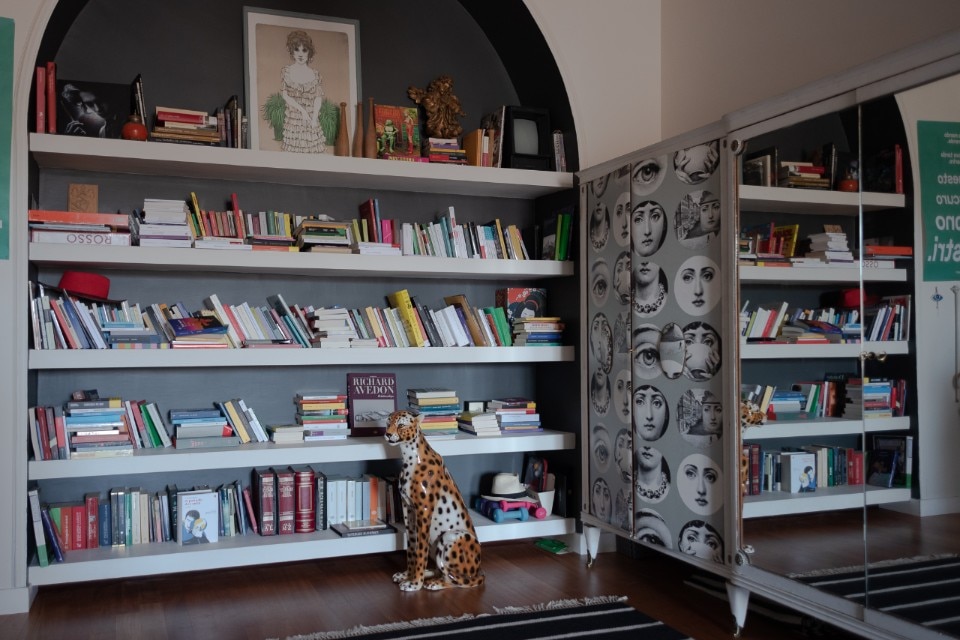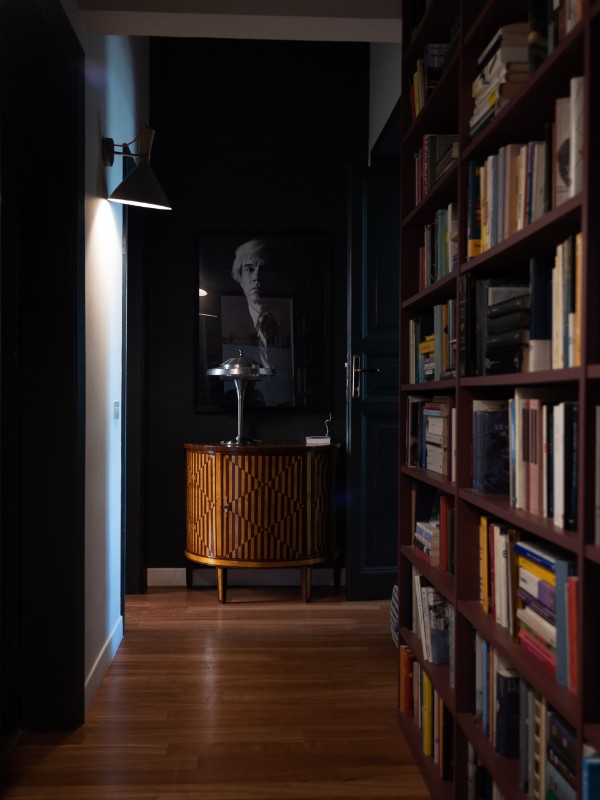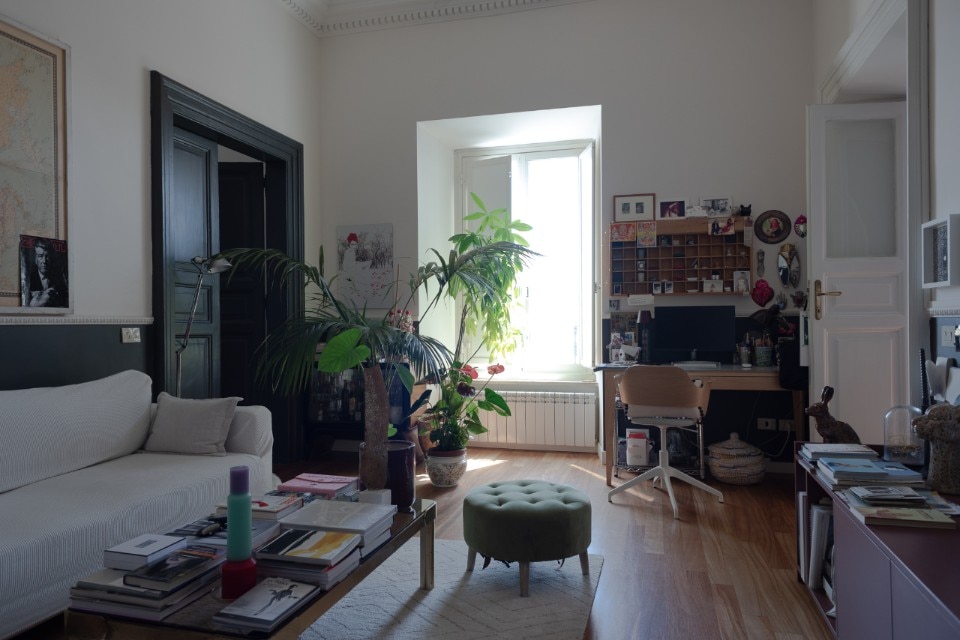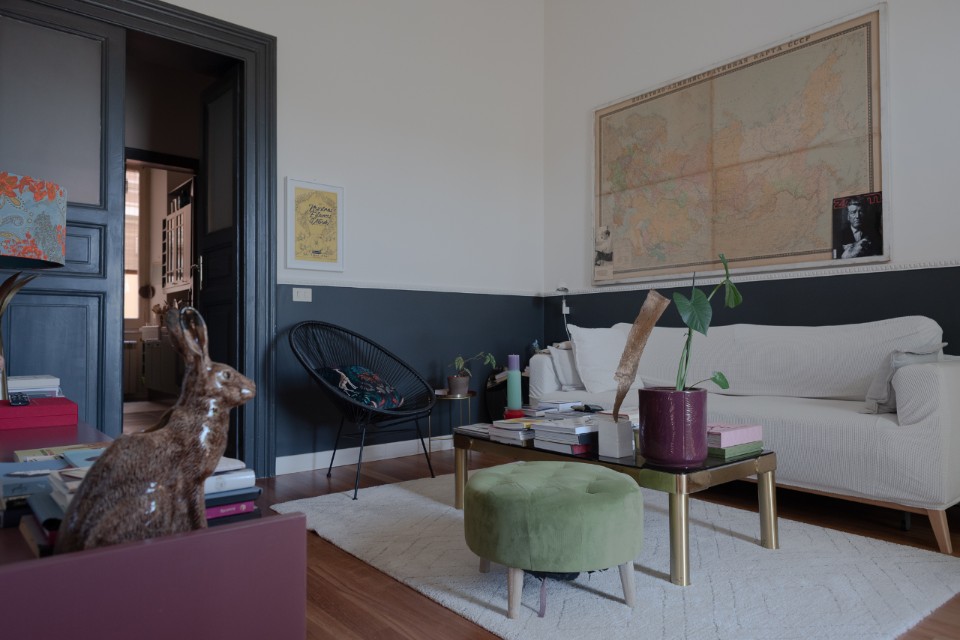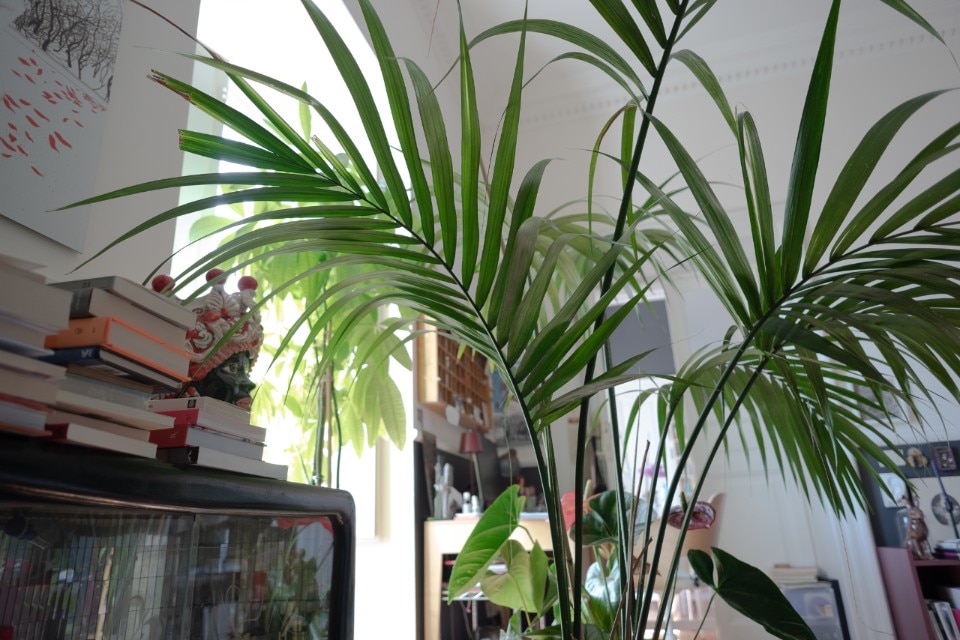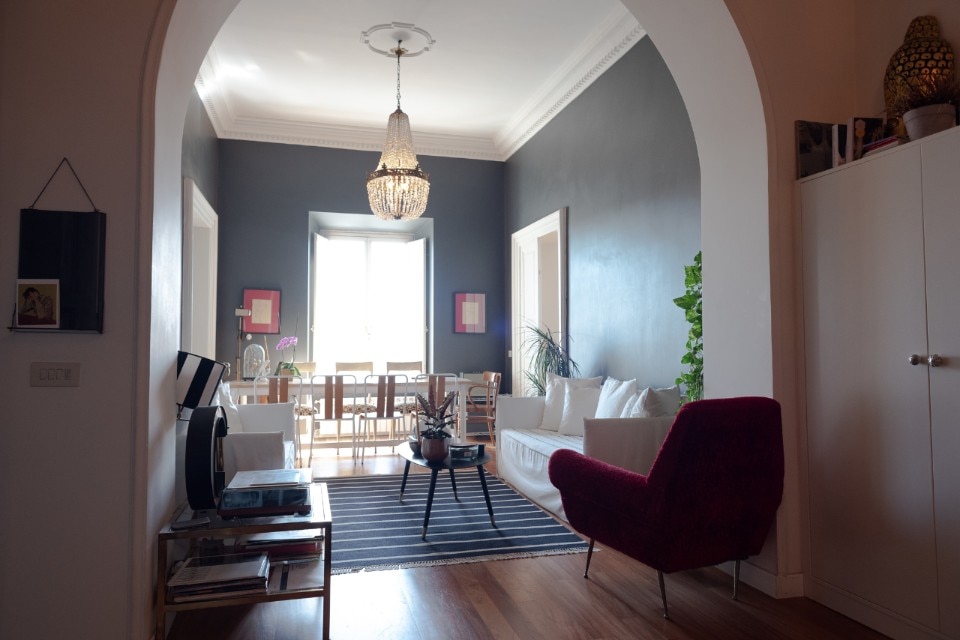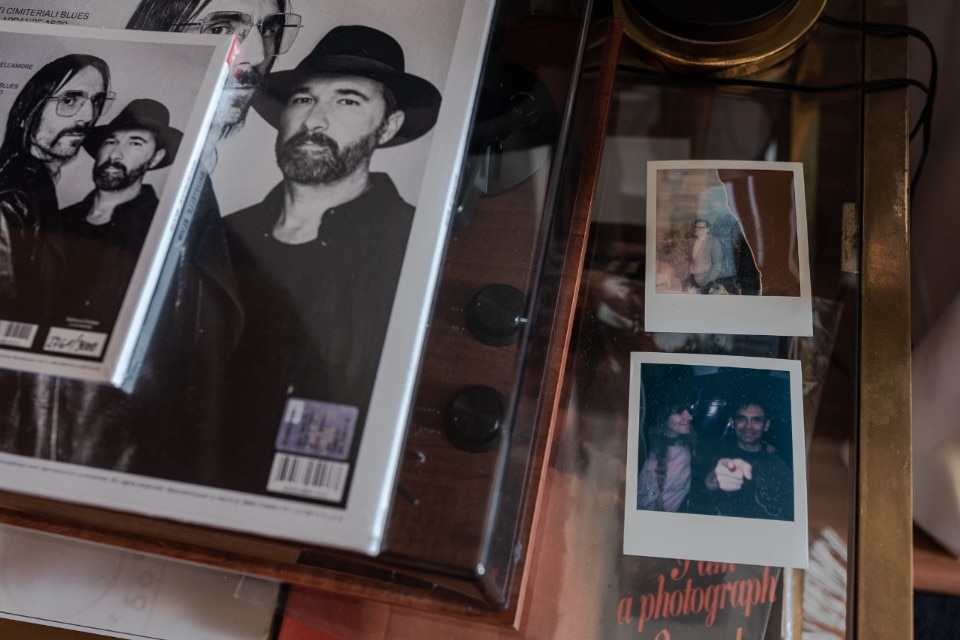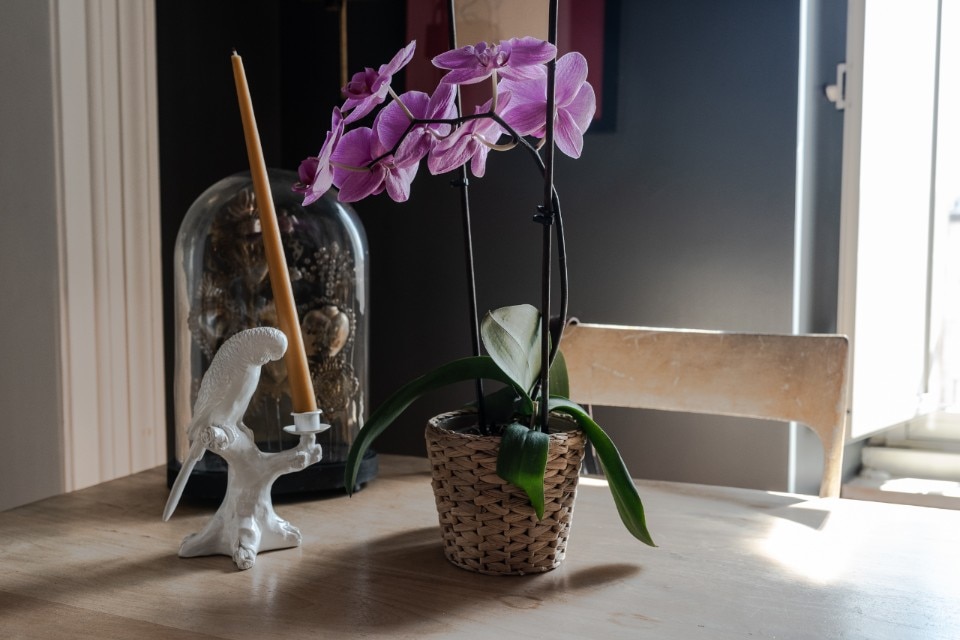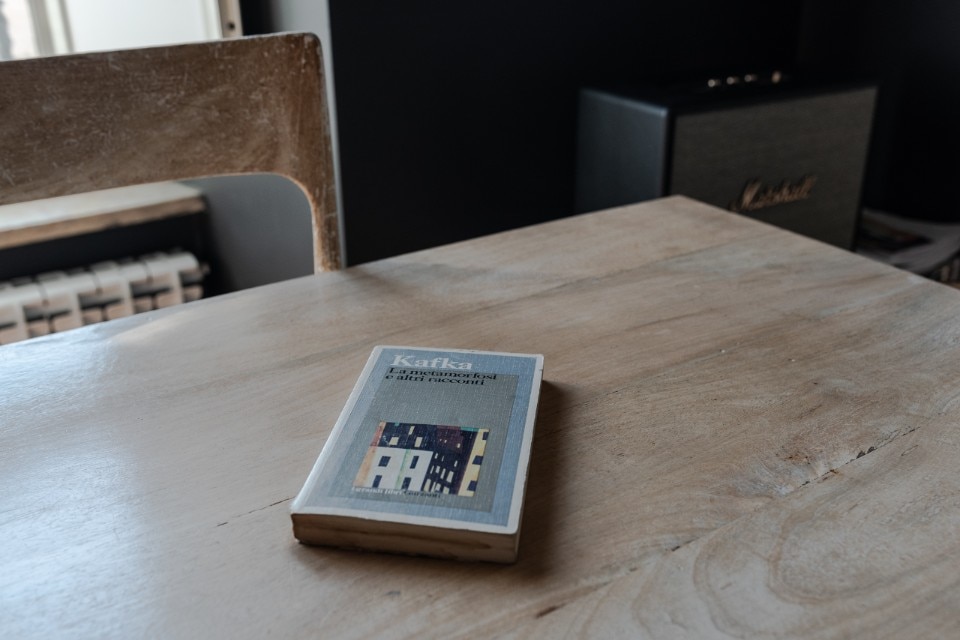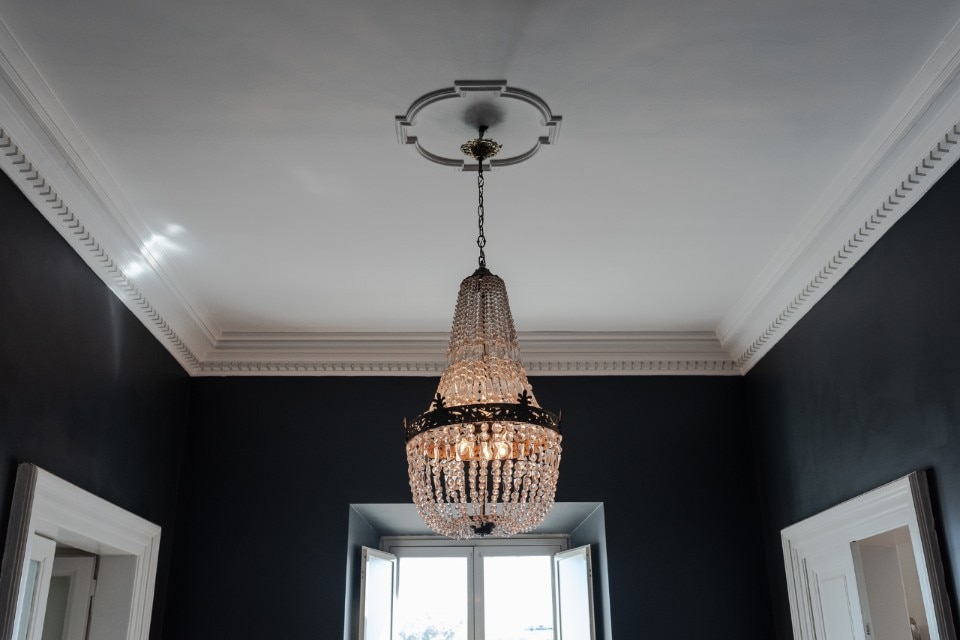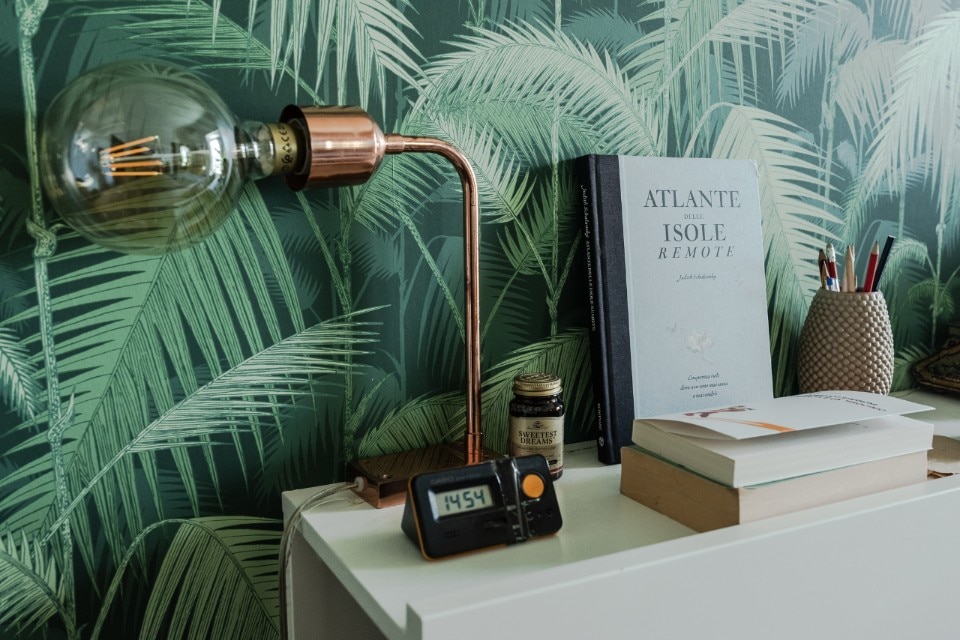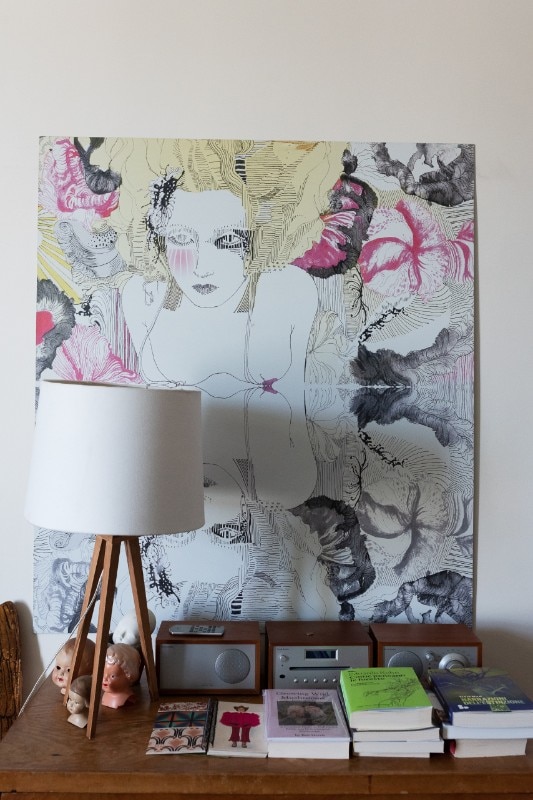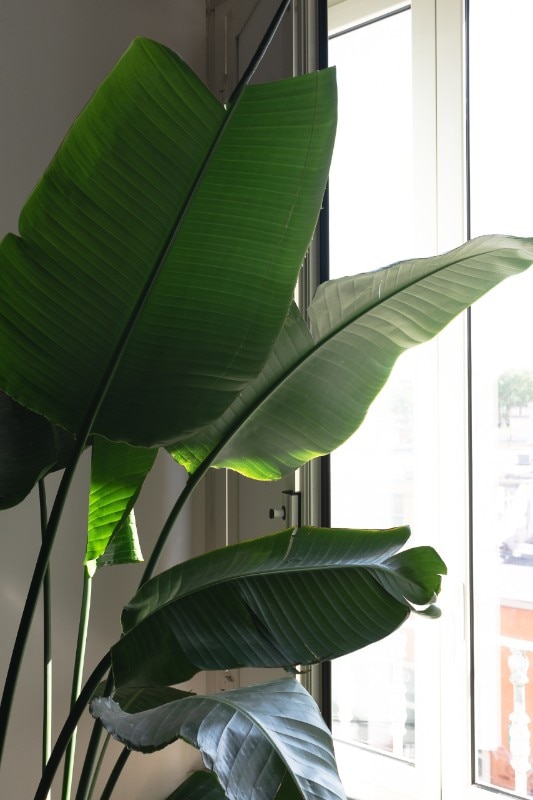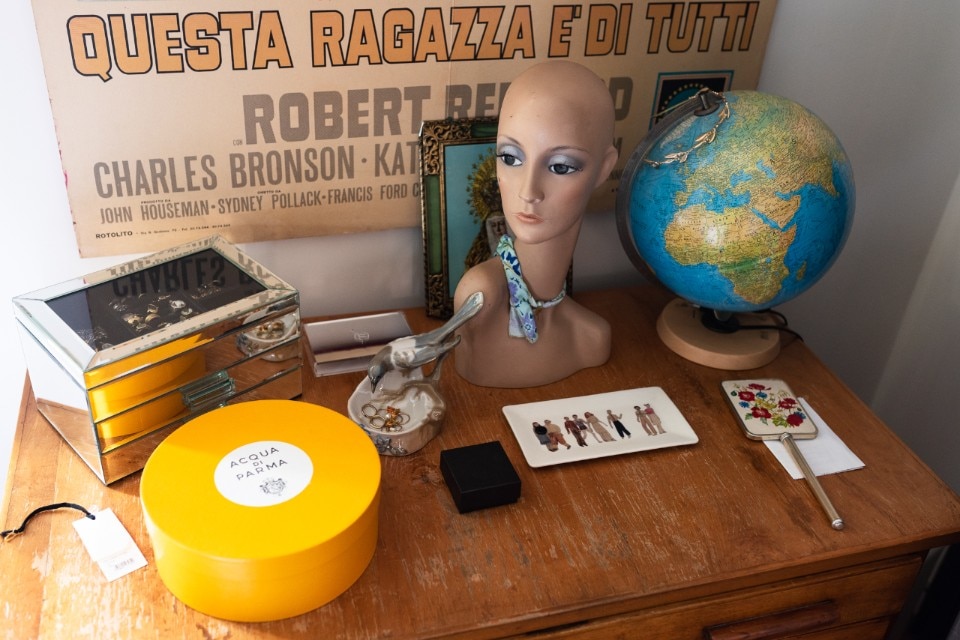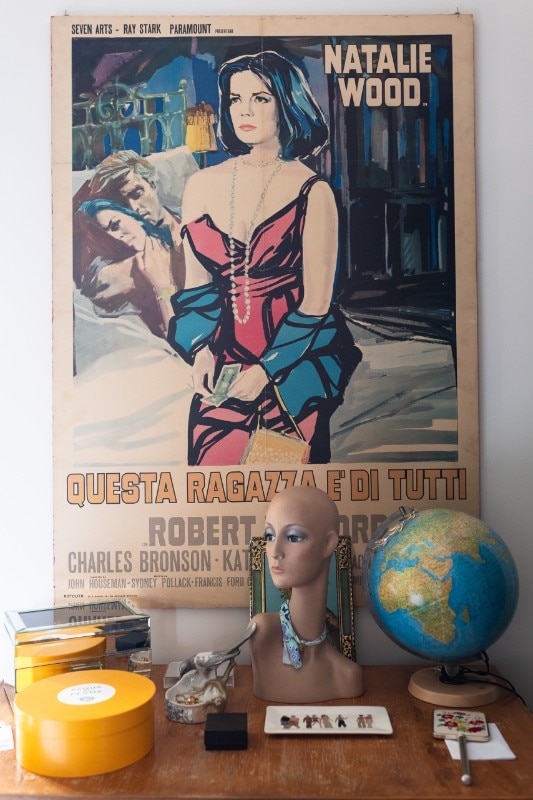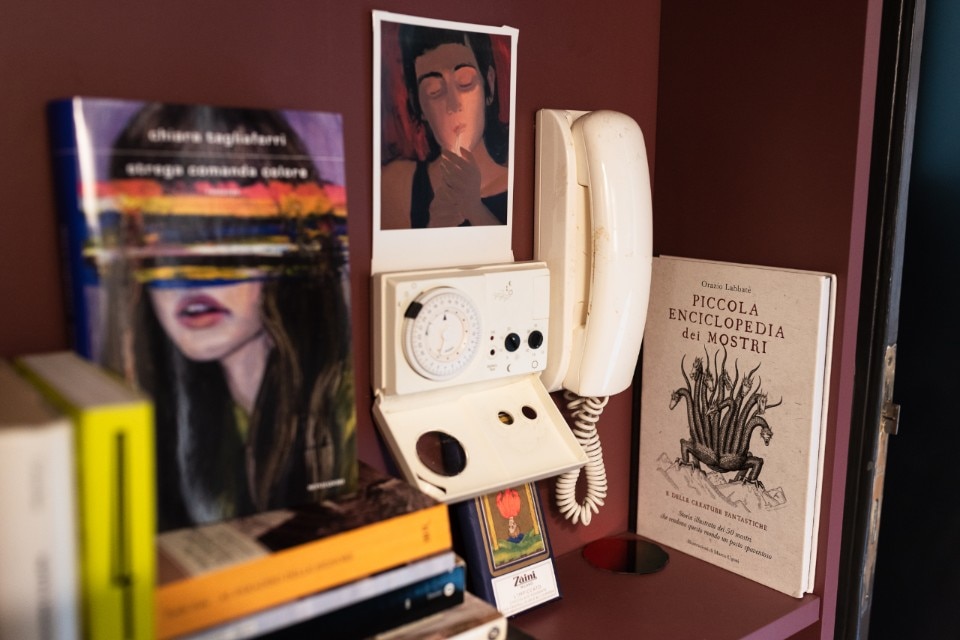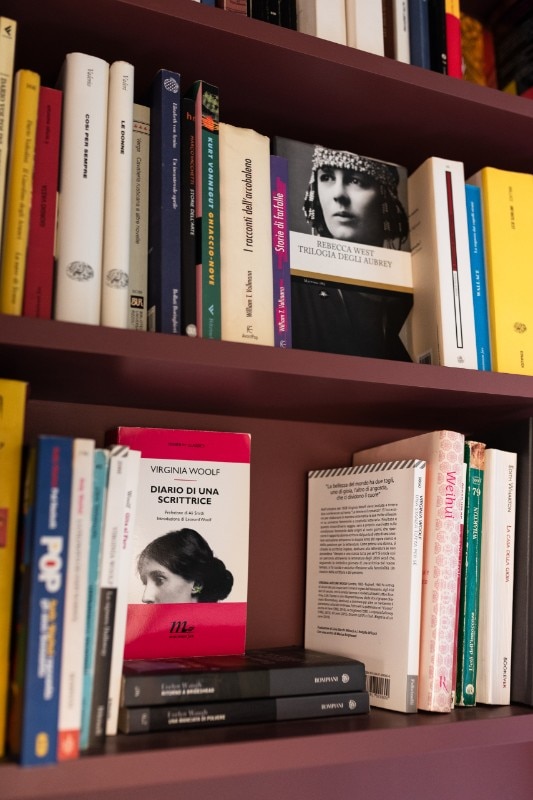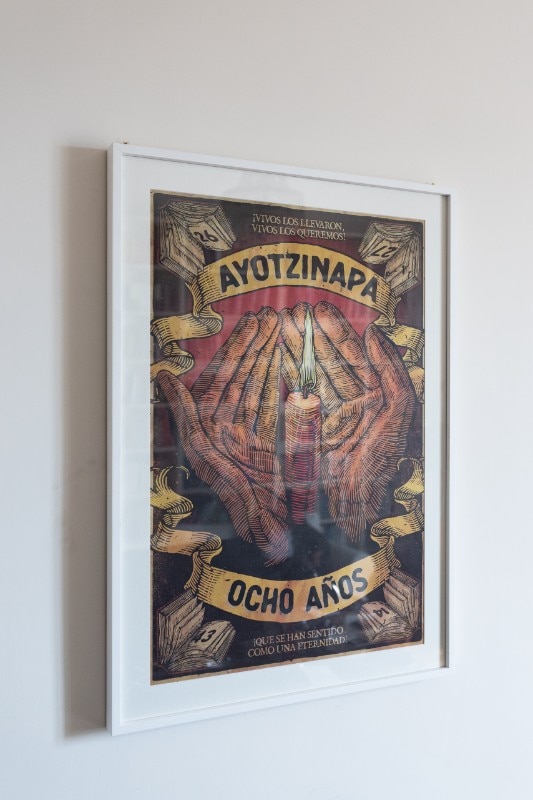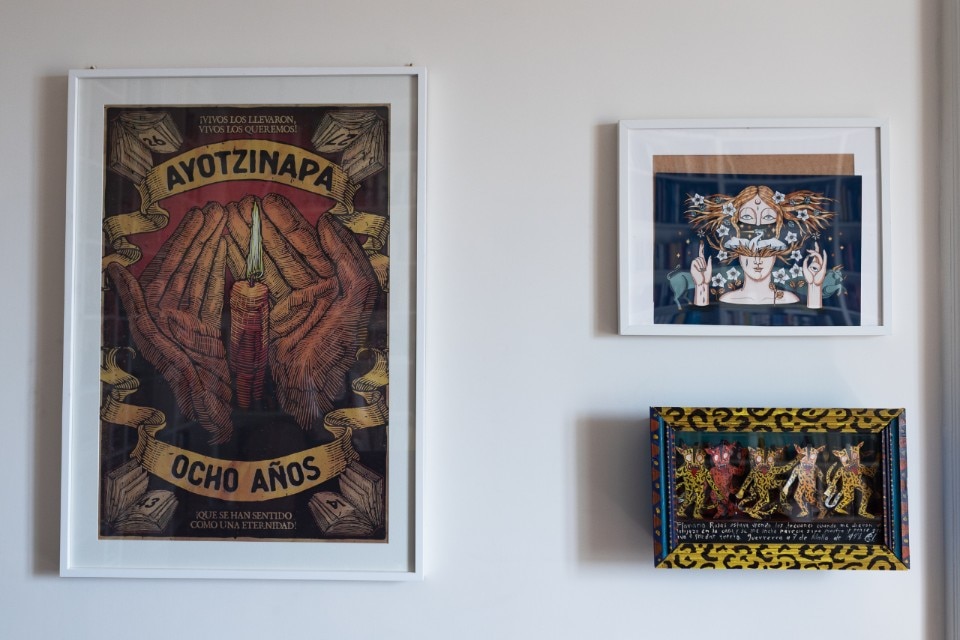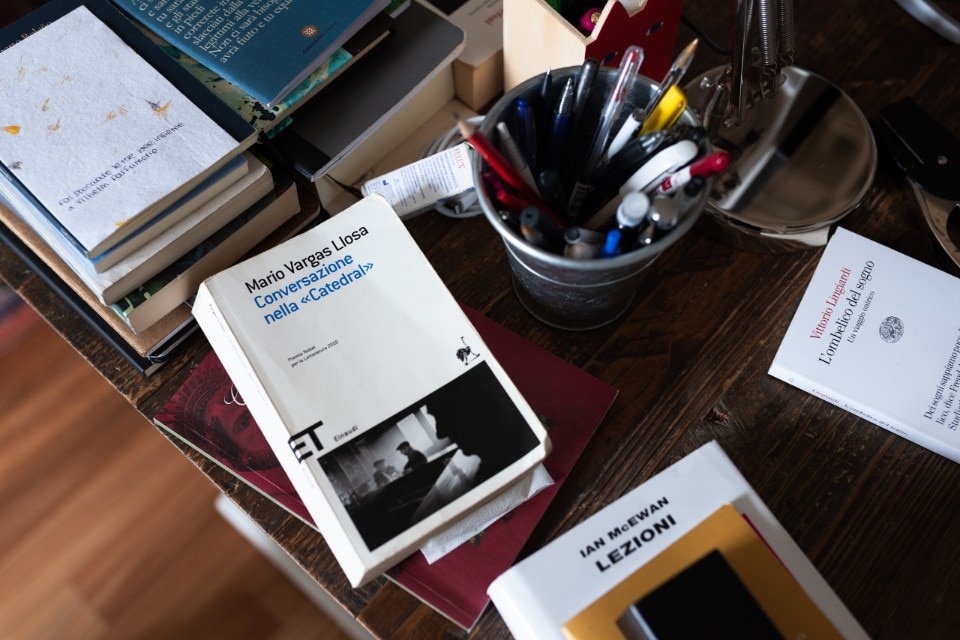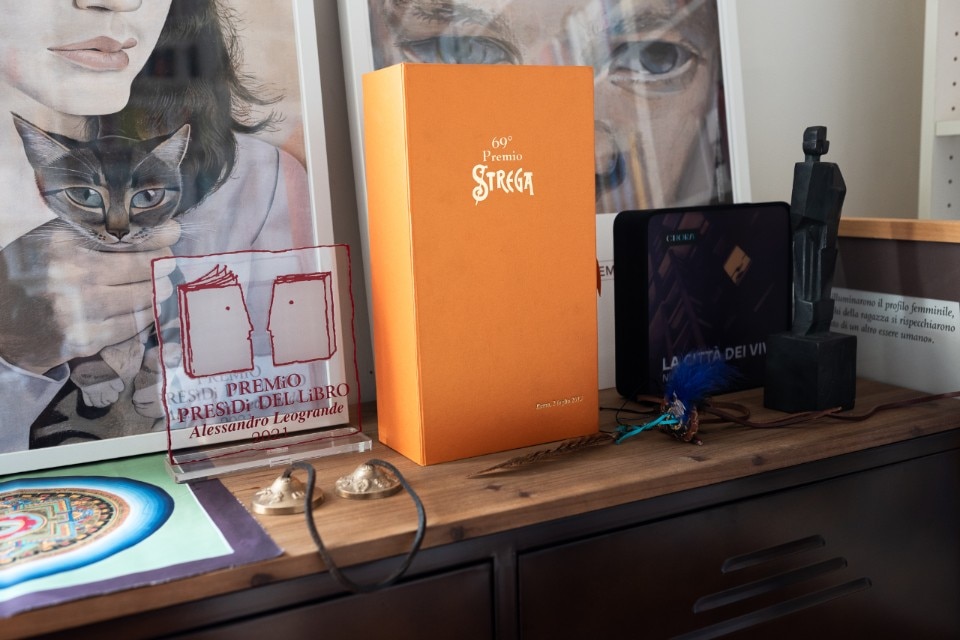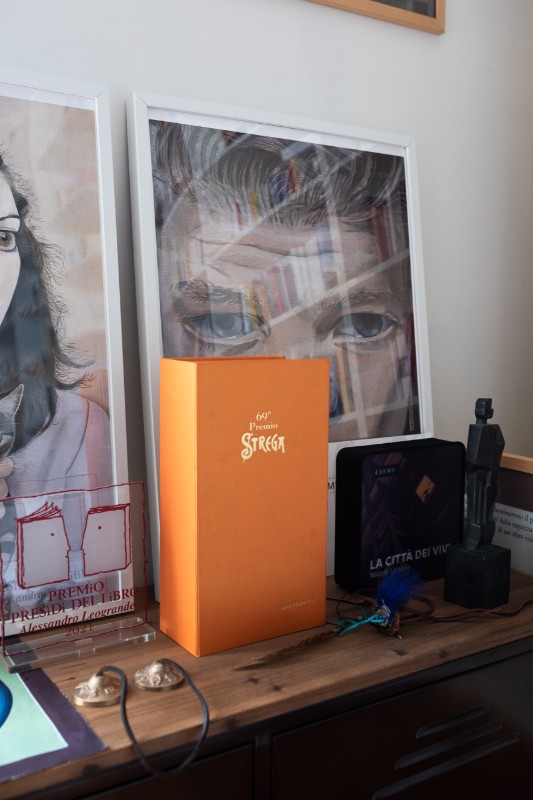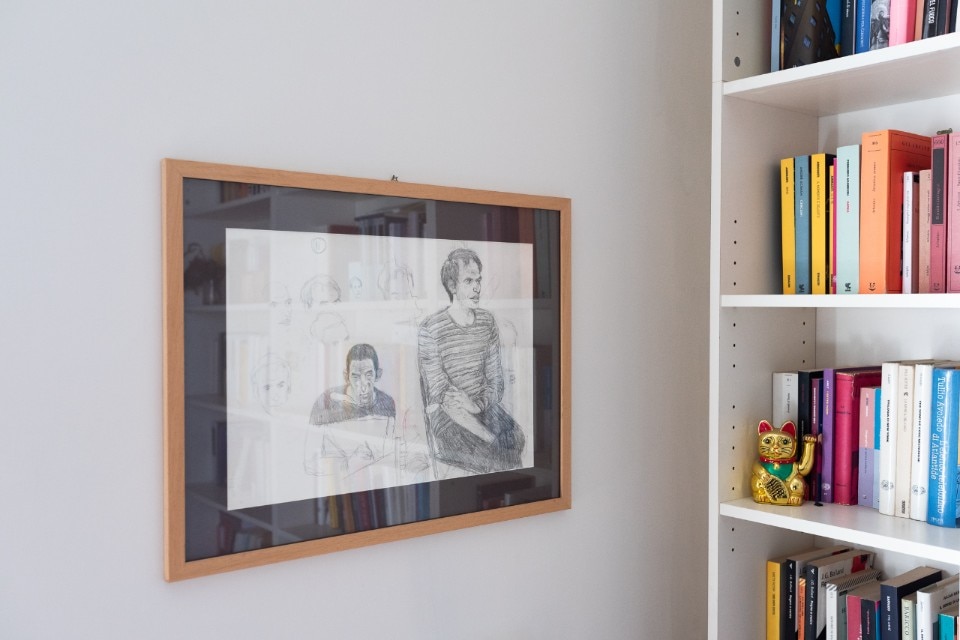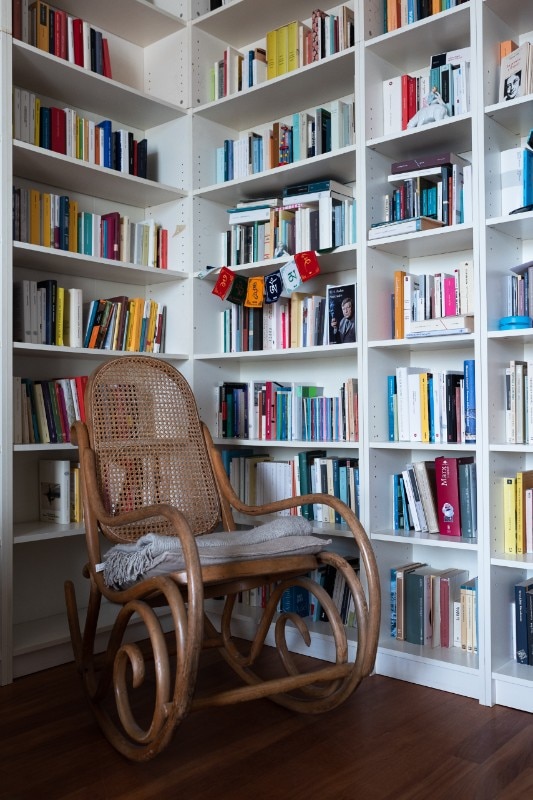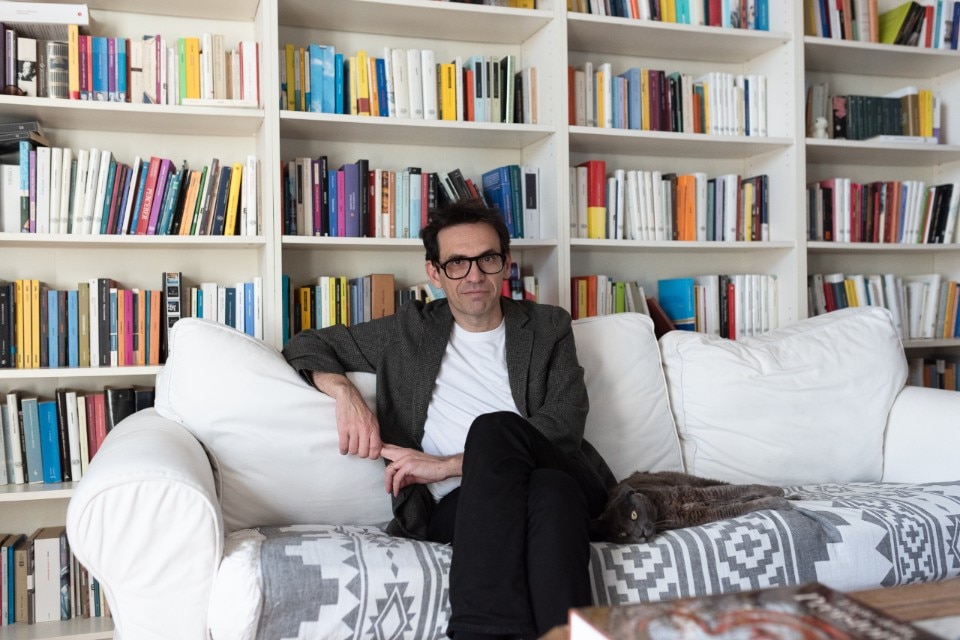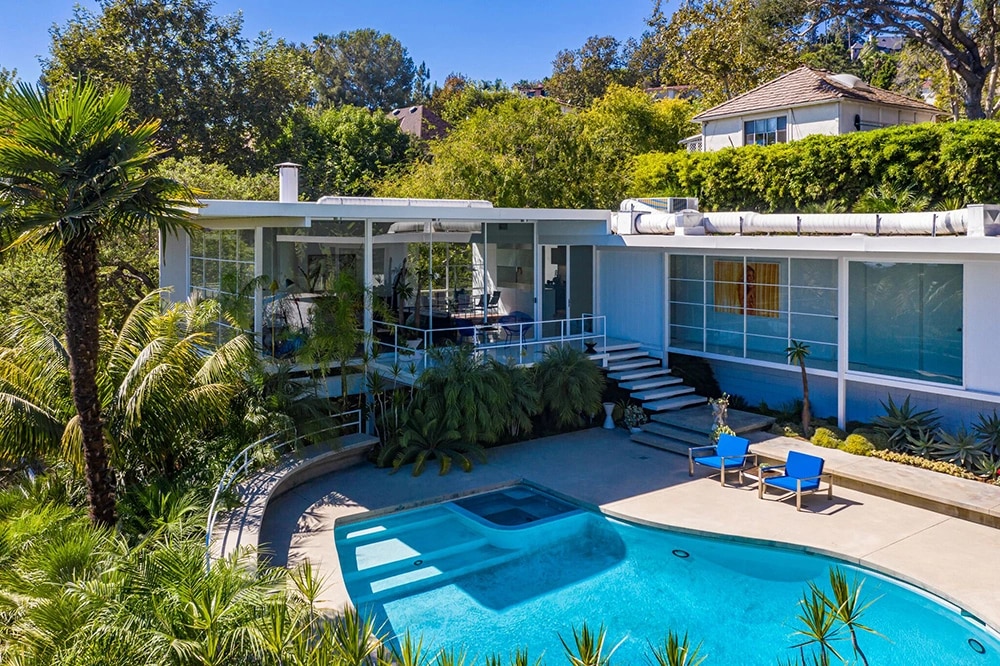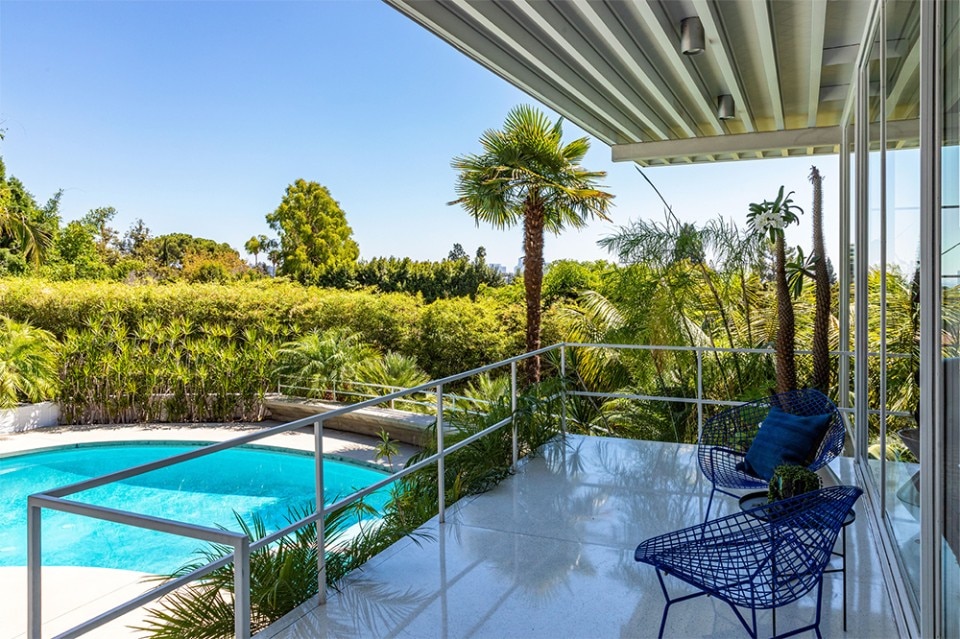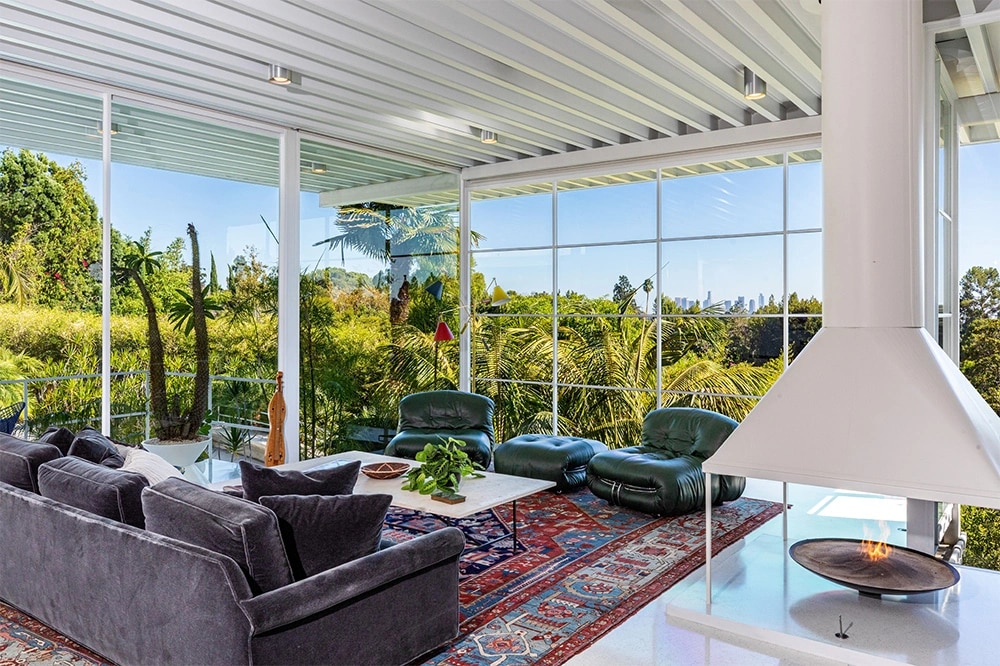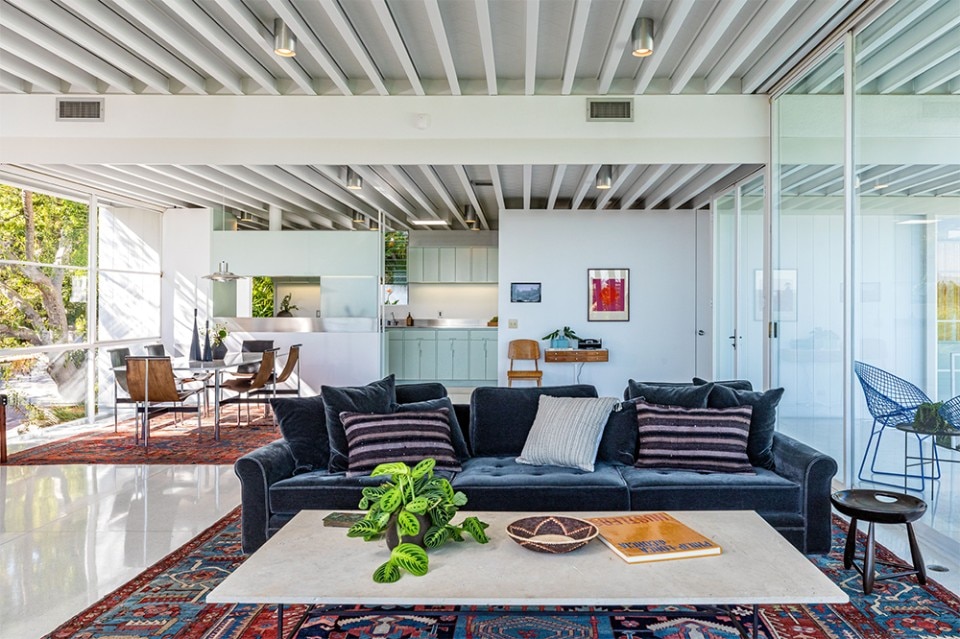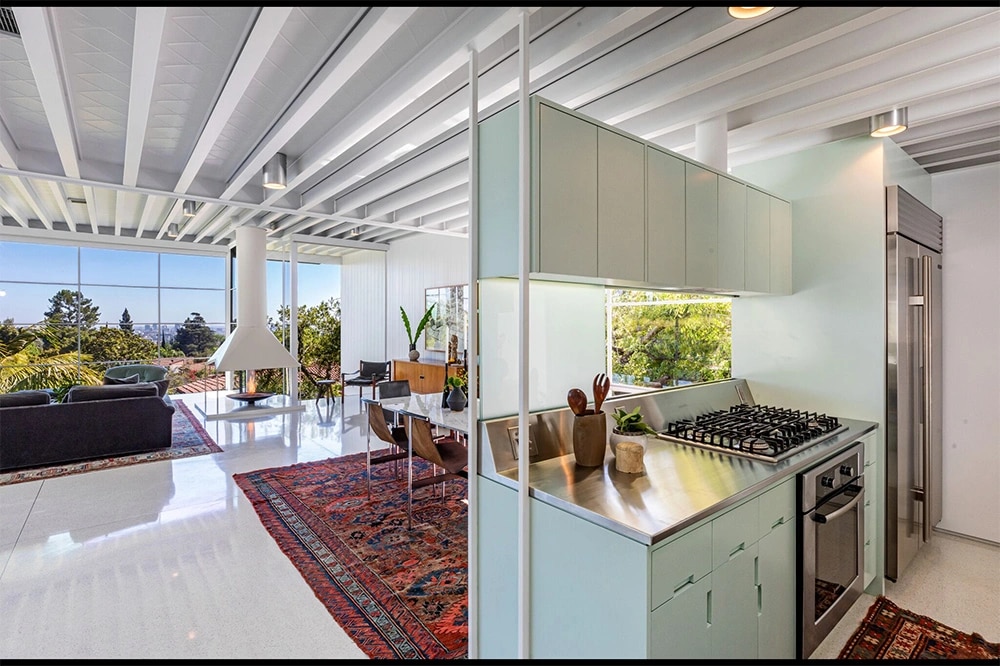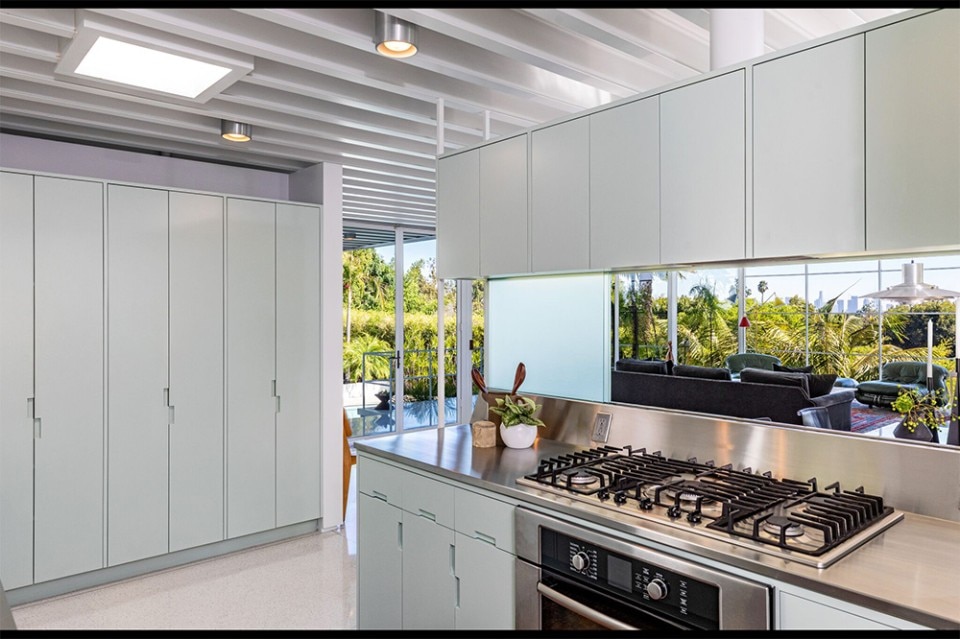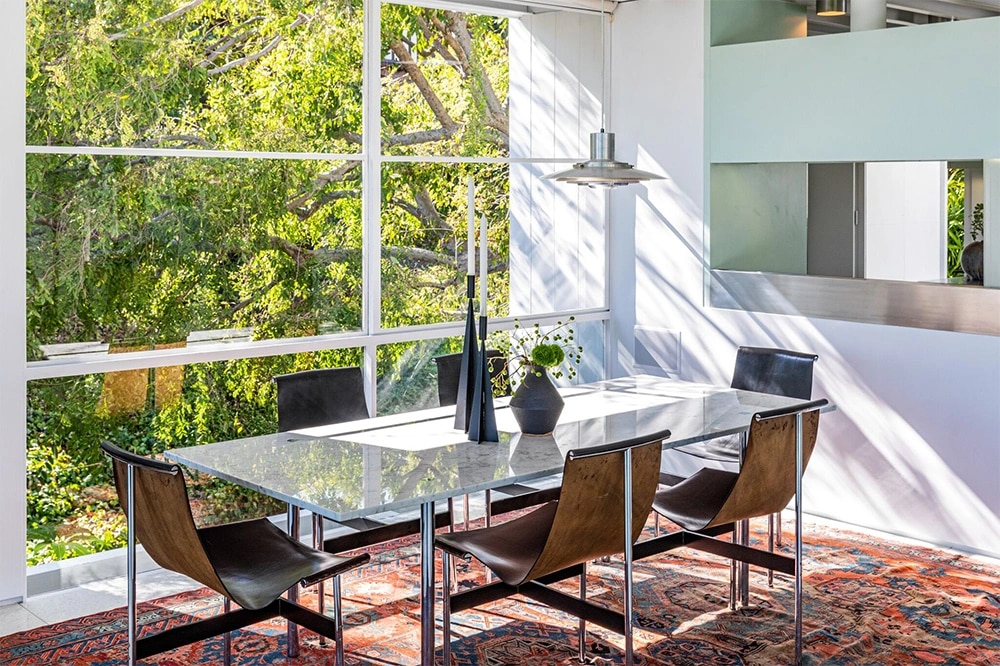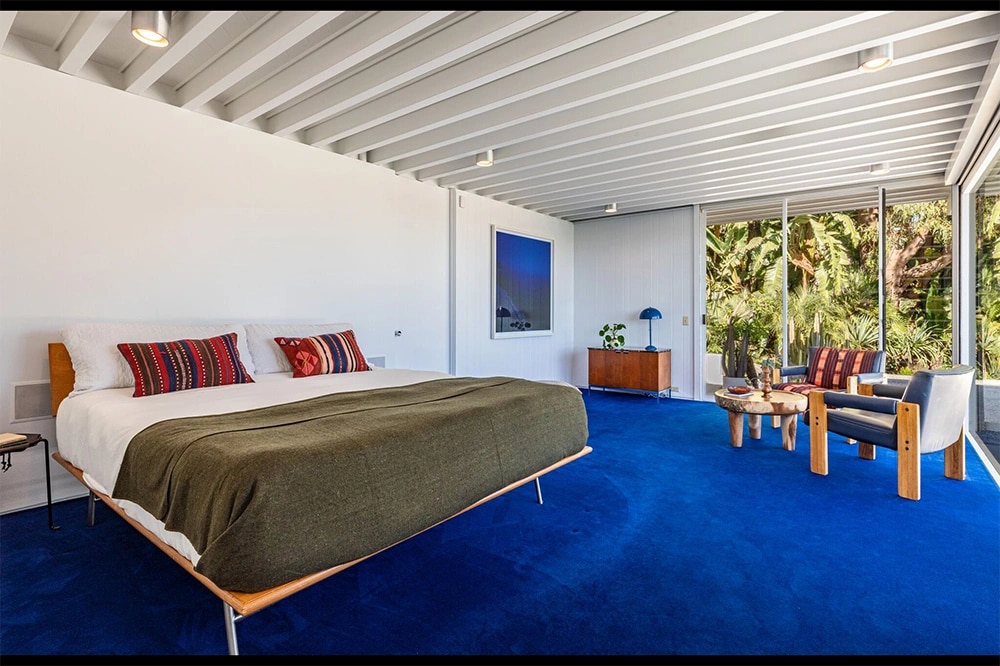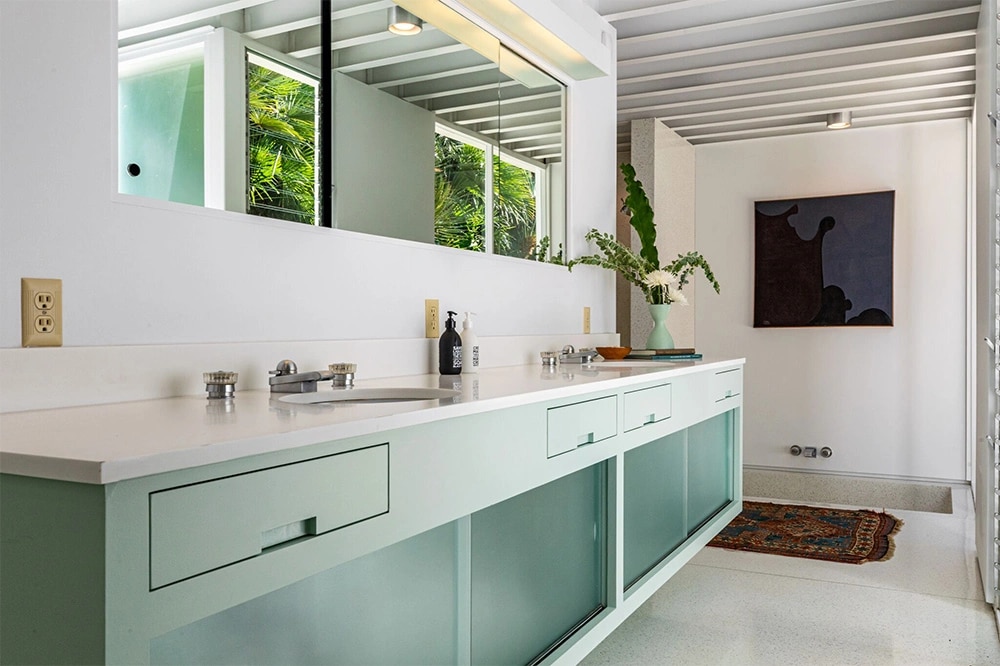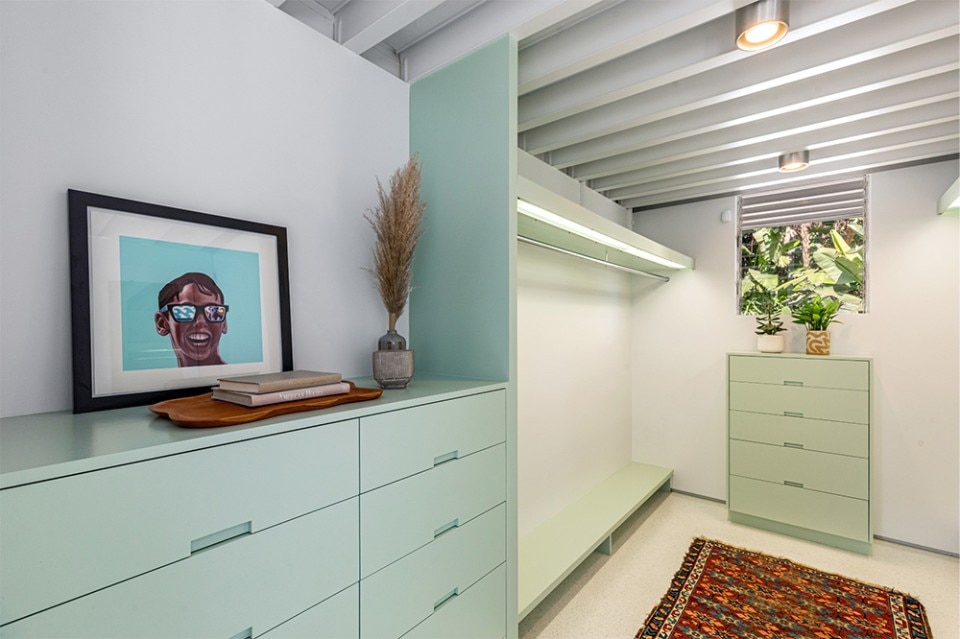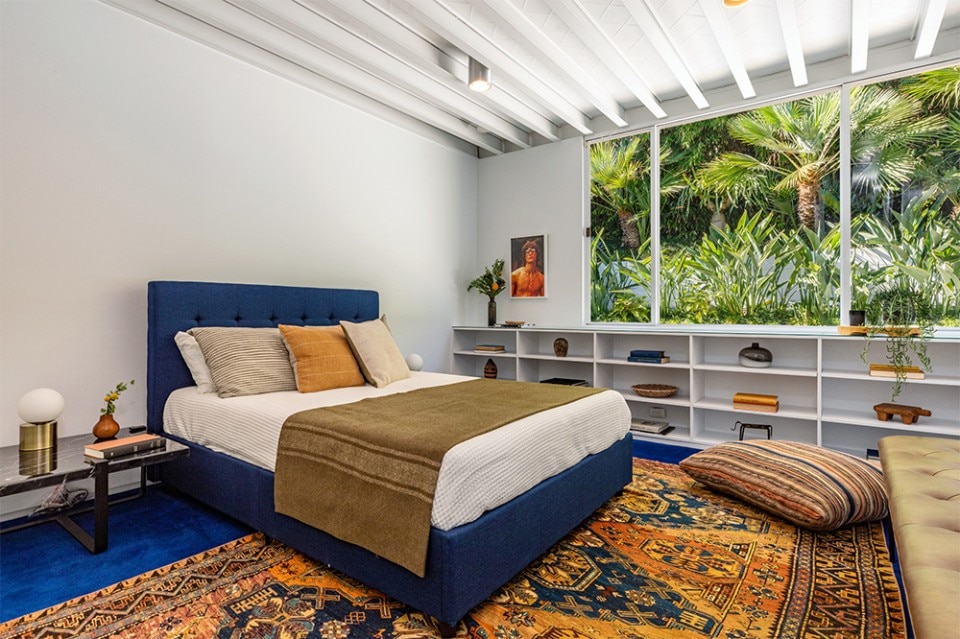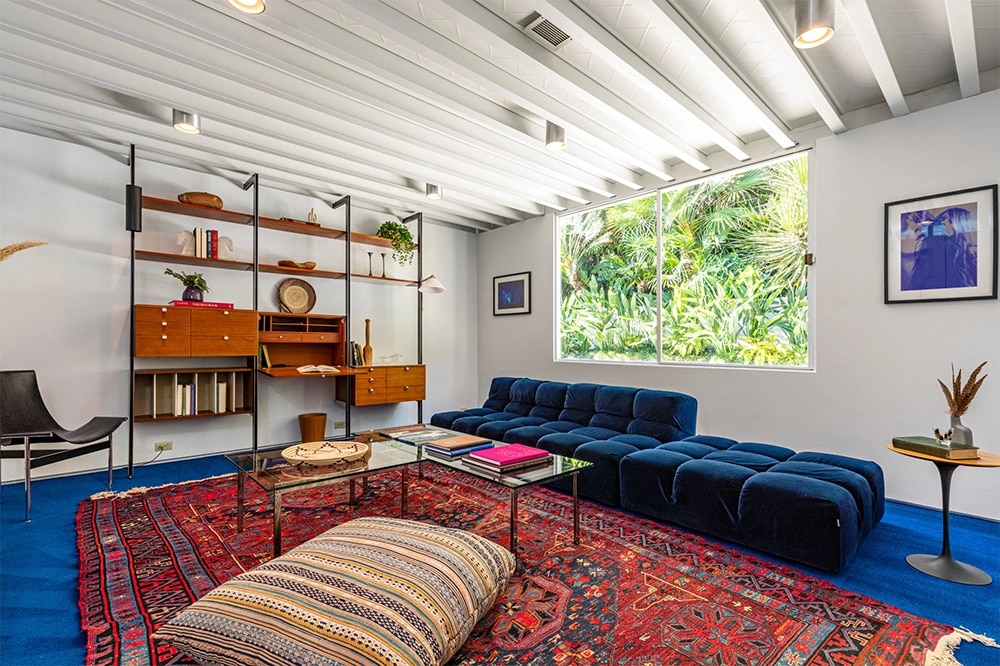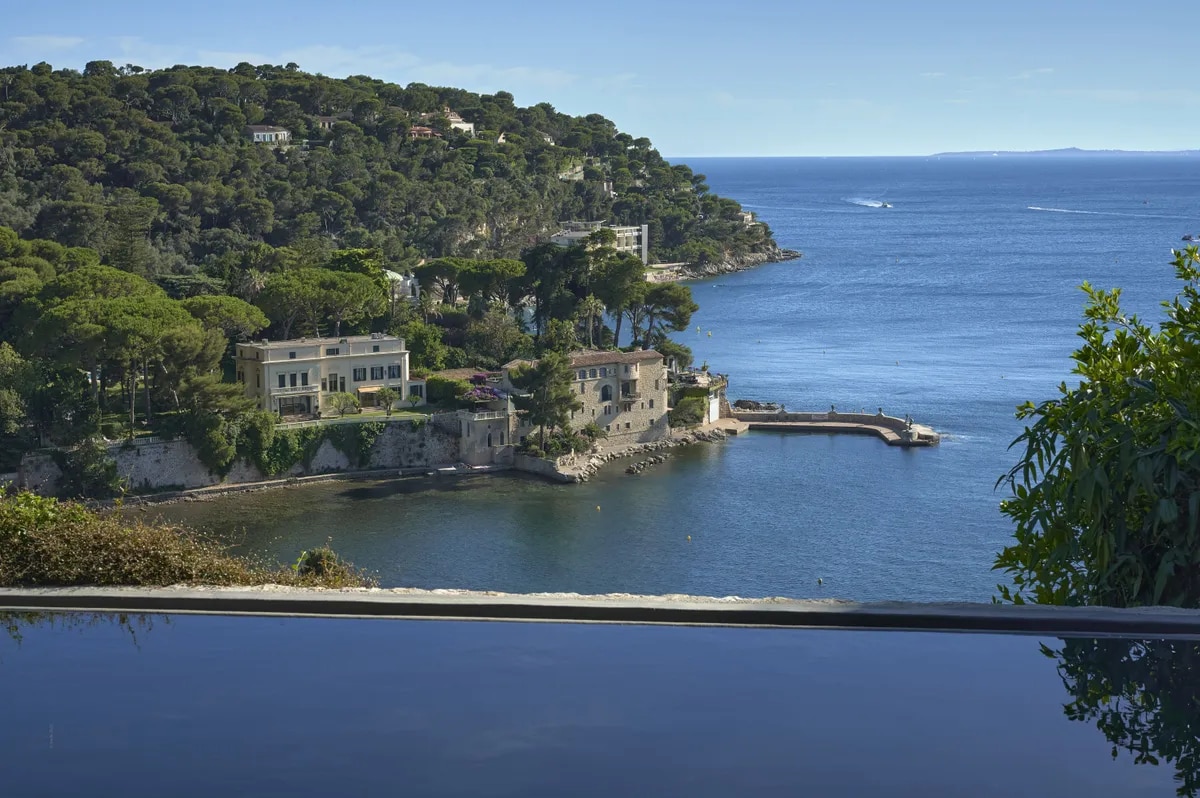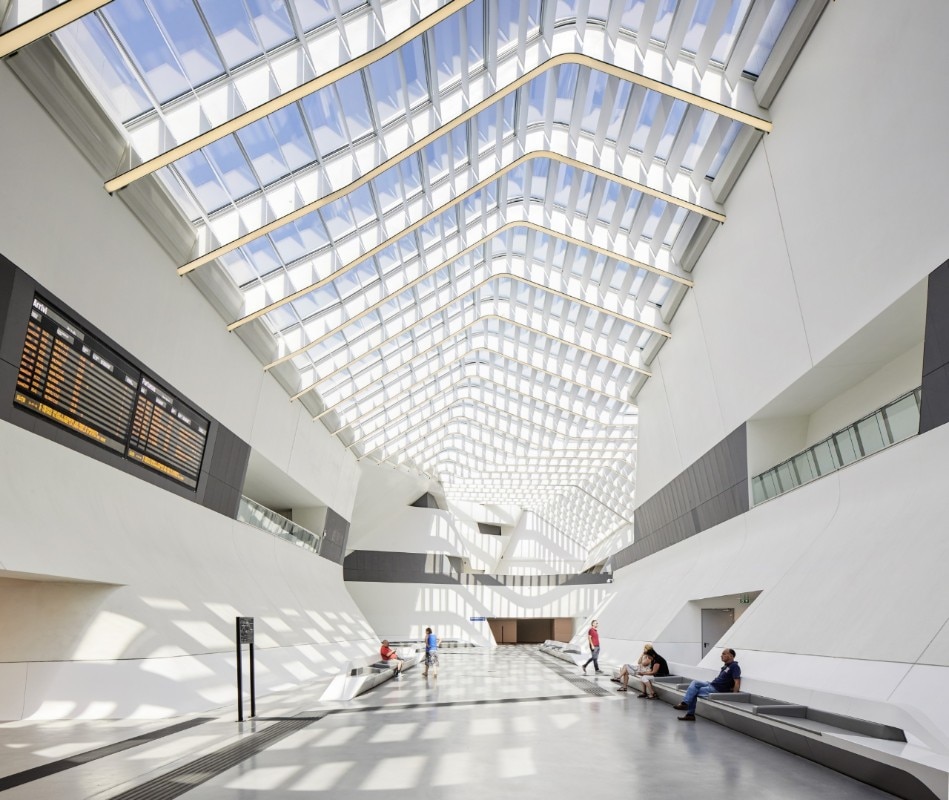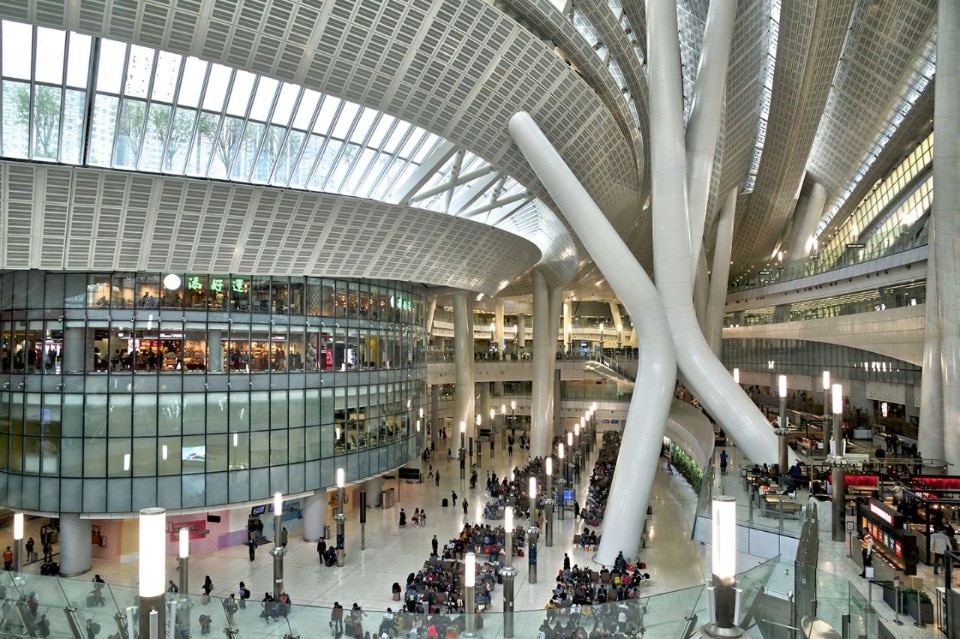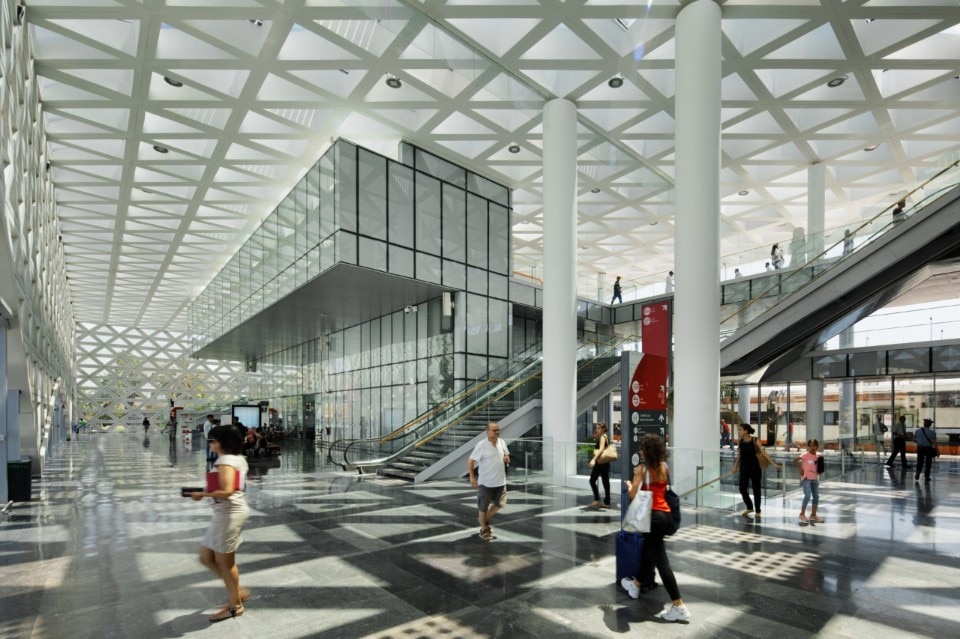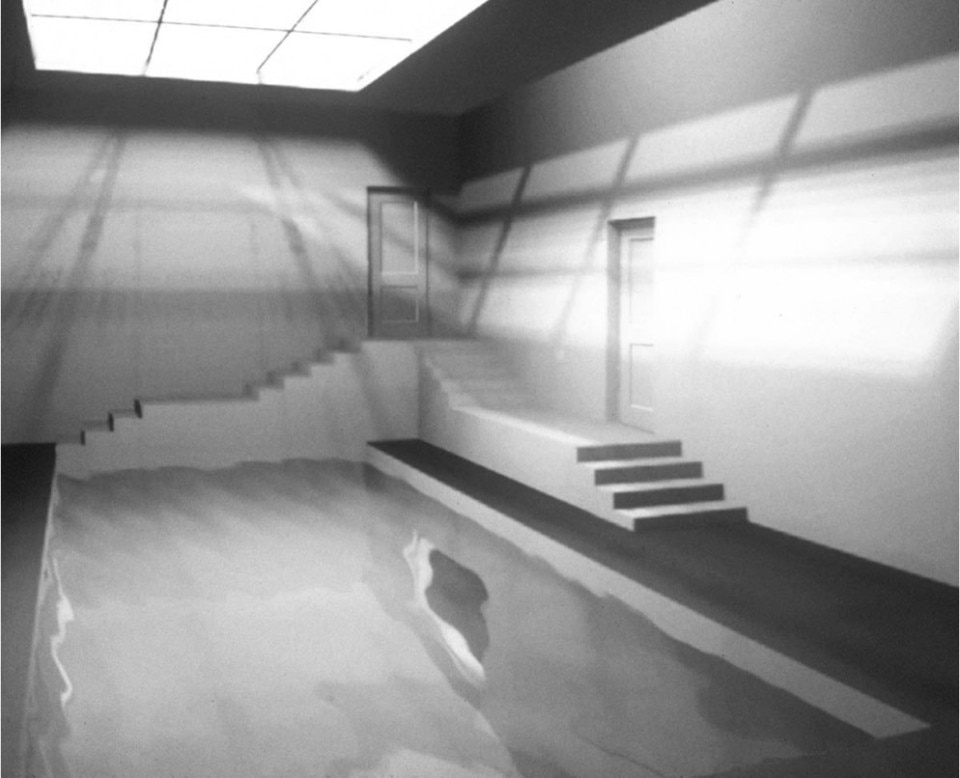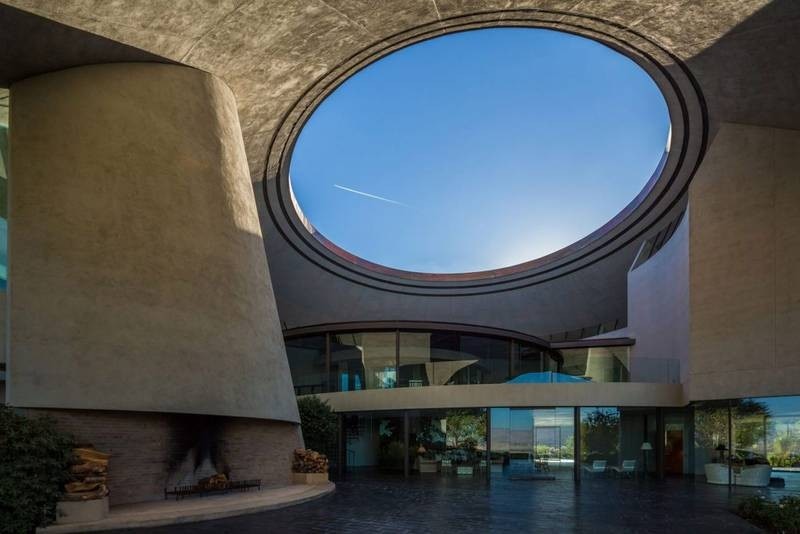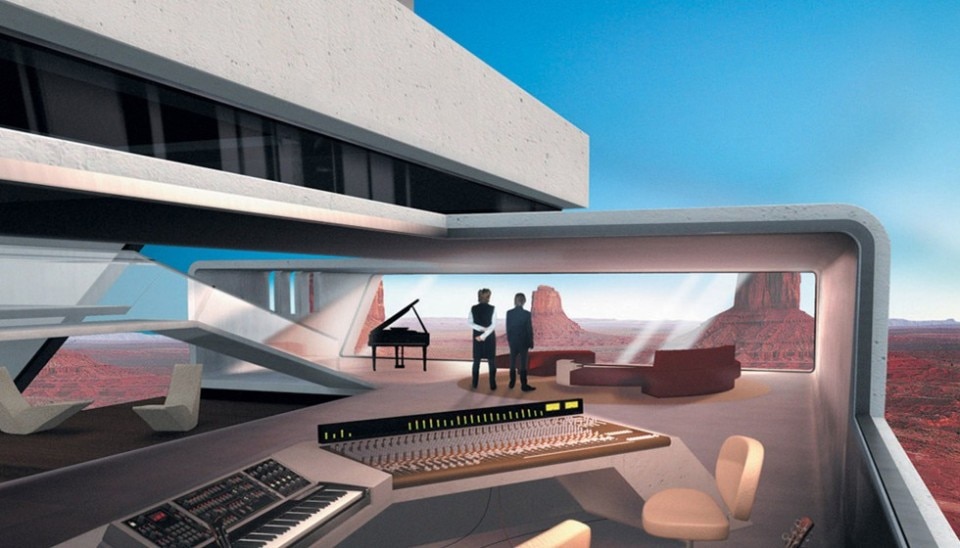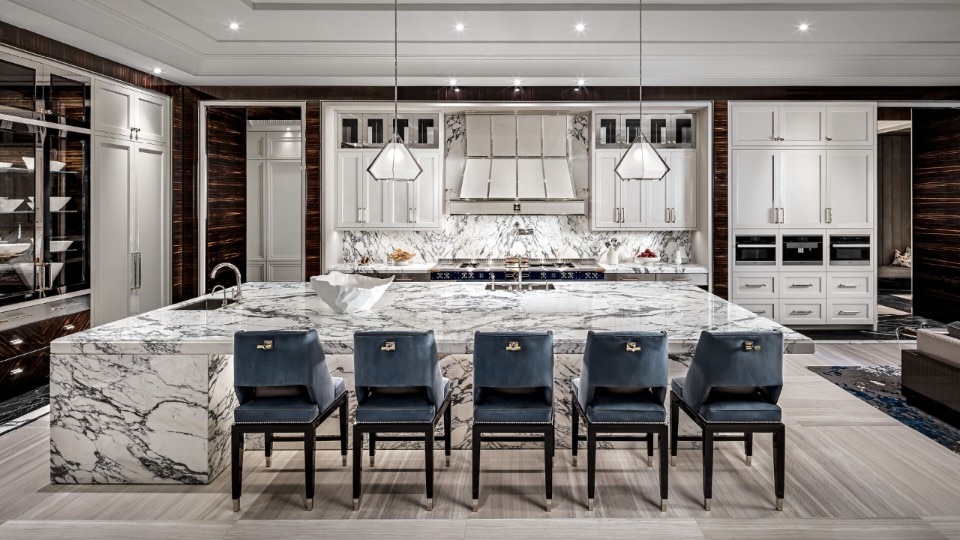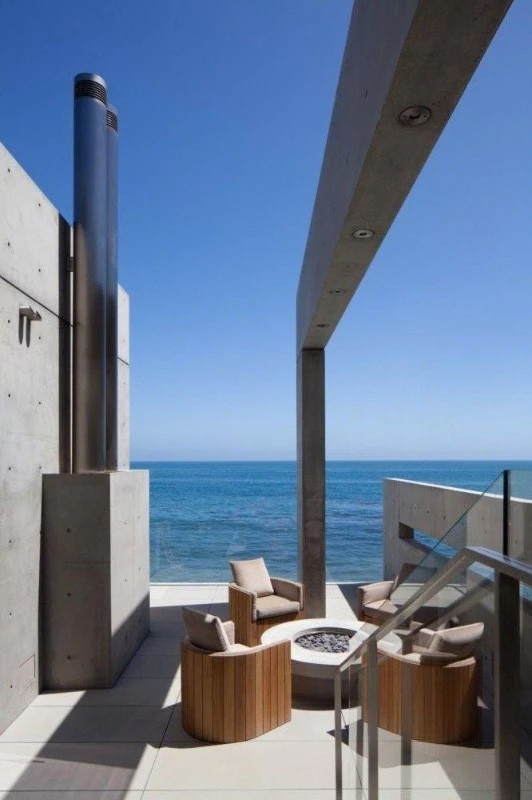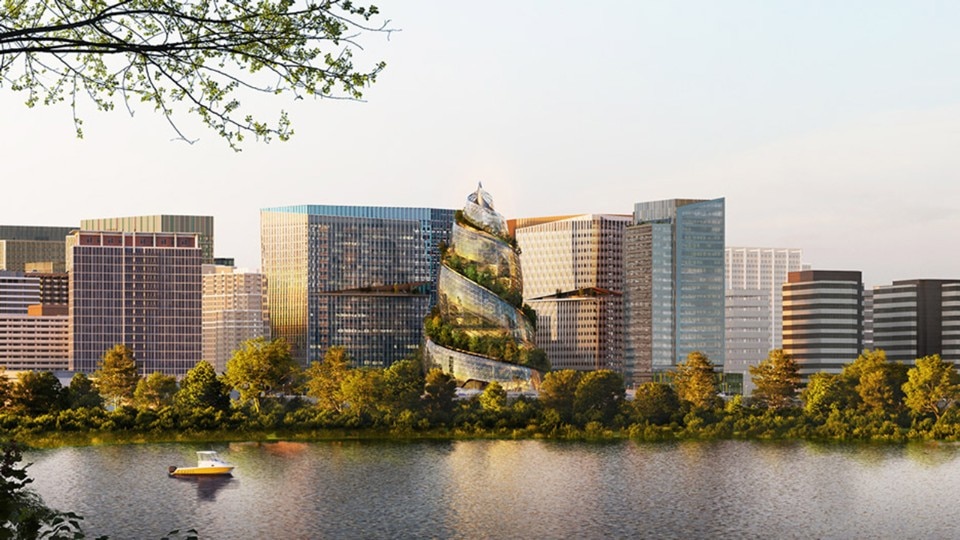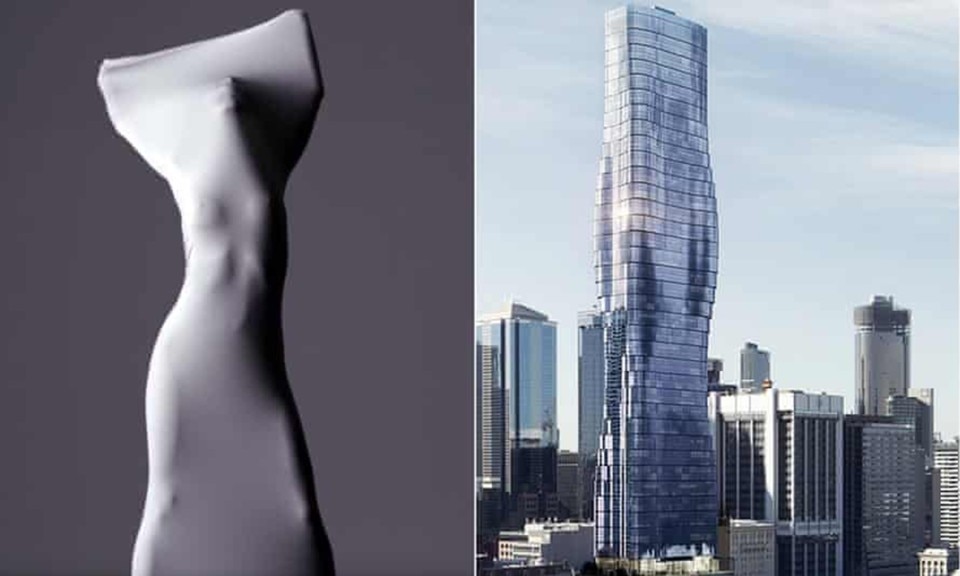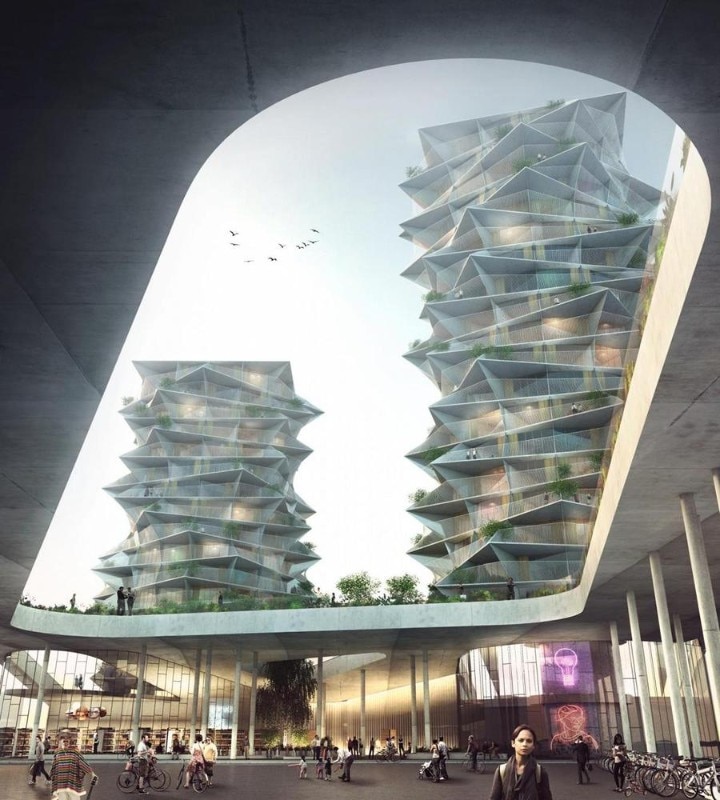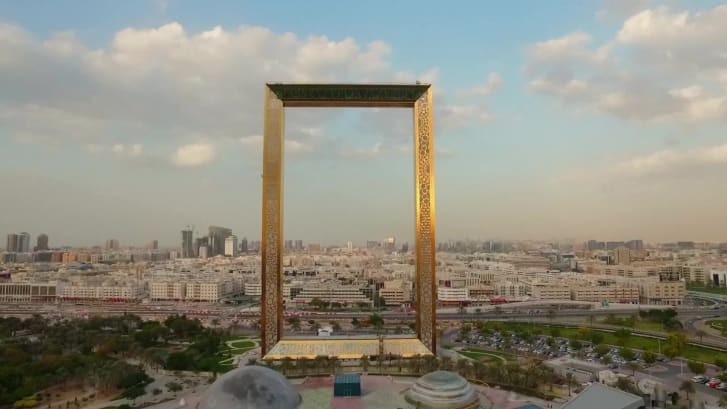The end of the year, a time for evaluations. And an excellent opportunity to be surprised by what has happened in the last twelve months. Between great confirmations and unexpected results, that’s what happens when you look at the list of articles published on the Domus website that you, dear readers (or as it is often said in the digital context, “users”), have liked most here (increasingly through direct access to the homepages) or on our ever-expanding digital platforms, on our social media, or in one of our newsletters, to which you can subscribe here.
This shortlist of articles is dominated by “collections,” or articles that bring together several examples of the same type. And there is something for everyone, from infrastructures (train stations), to the dense archive piece on the 50 most important houses ever published in Domus in its almost 100-year history, to fashion (sneakers), to abandonment, almost in a nostalgic leap towards the 90s, to the weird (weirdest skyscrapers), a category that dominates in every field of knowledge and entertainment.
There is, of course, Brutalism, which has gone from a niche phenomenon to a ubiquitous social media trend. But there’s also room for films, which always perform well at Domus thanks to the affinity between cinema, design and architecture, for gossip, which is popular everywhere, and for our series “a casa di” (at home with), here with the Italian writer Nicola Lagioia, the most read this year.
Finally, a bridge to the future: we decided to add three pieces of content created for social media and not for the website, namely three reels that we published on our TikTok and Instagram, projecting ourselves already into a year in which our digital presence will be even more pervasive and less and less tied to the idea of being a mere “digital conversion” of a paper magazine into digital.
Because they said the future would be in the digital world, but that future is already the present.
01
50 architecture to know: homes around the world and in history
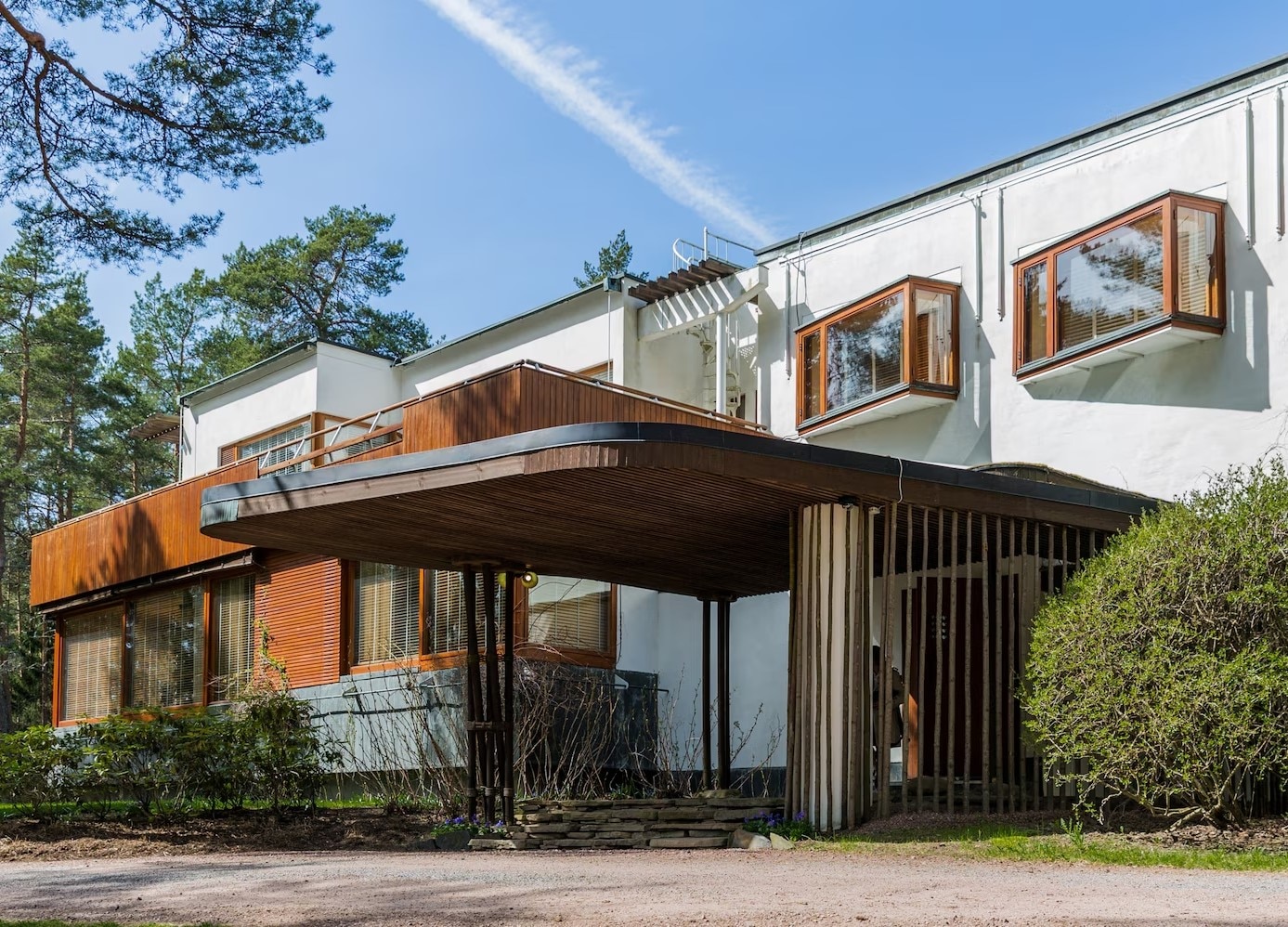
 View gallery
View gallery
“Everything is Architecture”, wrote Hans Hollein in 1968, at the height of the radical and international design movements. In the past, architecture was an art exclusively reserved for public buildings, monuments and aristocratic palaces, so the simple houses were hardly ever involved in the projects that have made the history of architecture, even though it is common knowledge that there also exists, especially for this archetype, an “architecture without architects”, as Giuseppe Pagano and Bernard Rudofsky taught us. Read more
02
15 architectural icons that no longer exist

 View gallery
View gallery
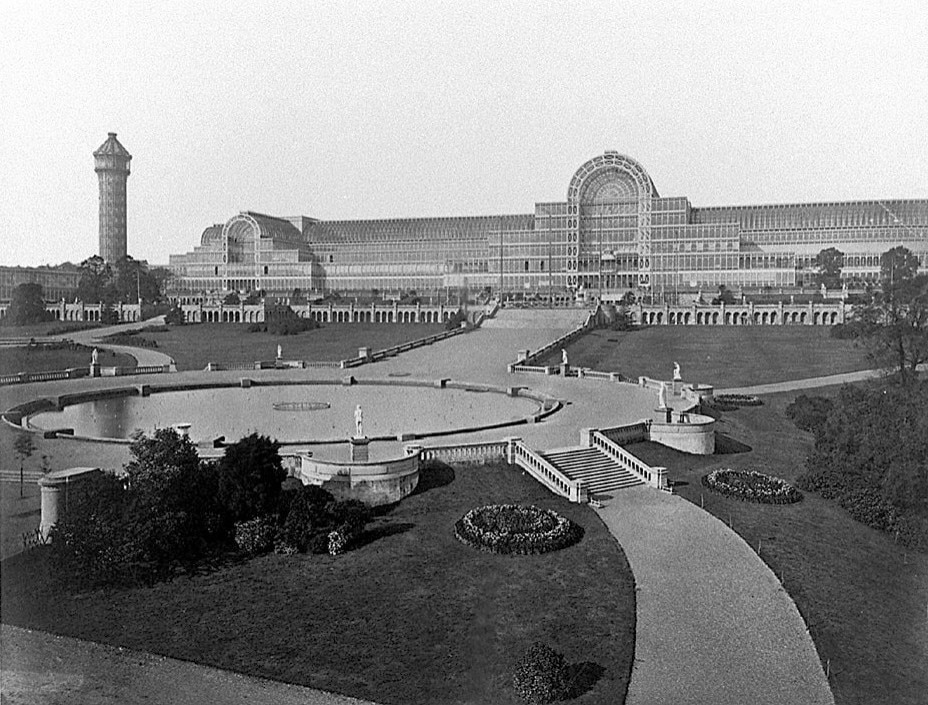
Joseph Paxton, Crystal Palace, London, Great Britain (1851-1936)
Built as part of the 1851 London World's Exhibition to highlight the qualities of emerging technologies in glass and steel, the Pavilion was originally installed in Hyde Park, before being moved to another part of the town. Destroyed by fire in 1936, it inspired many other buildings that made lightness and transparency a plus in spite of the bulky architecture of the past.
Photo by Philippe Henry Delamotte on wikimedia commons
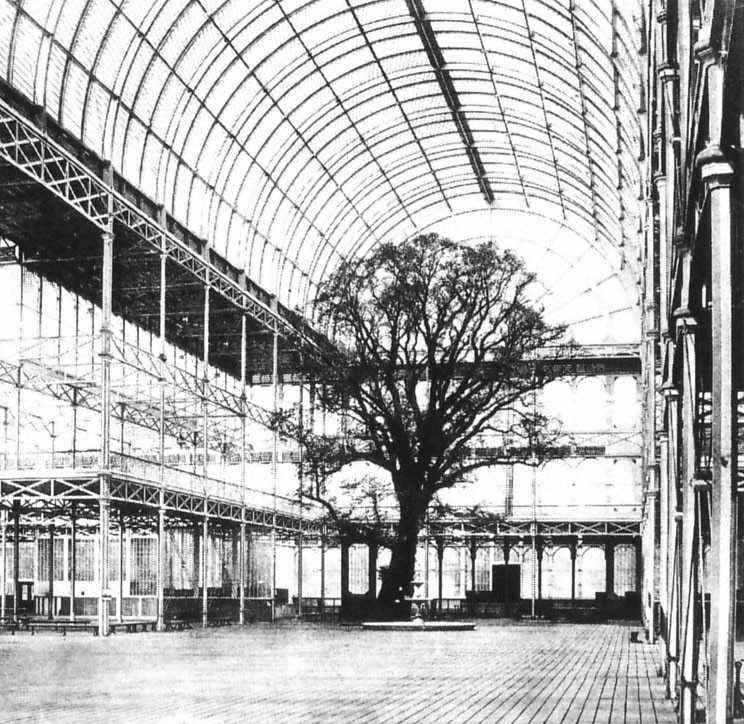
Joseph Paxton, Crystal Palace, London, Great Britain (1851-1936)
Photo on wikimediacommons
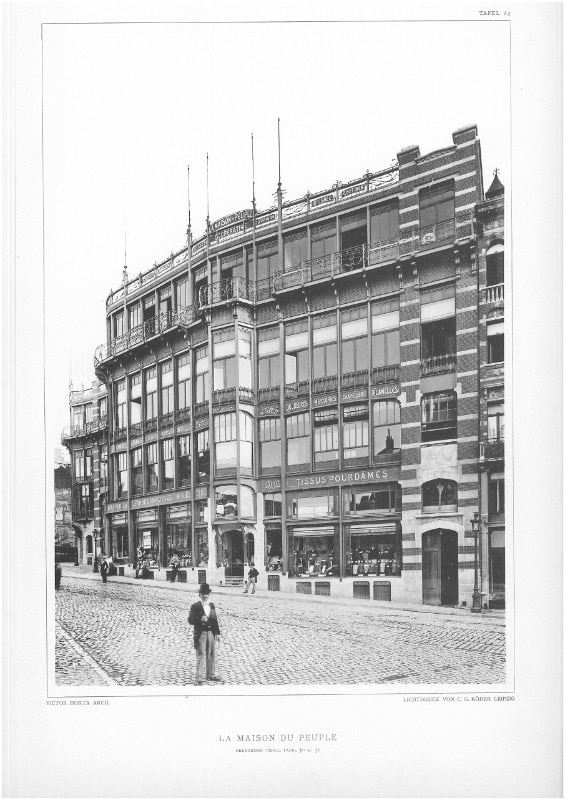
Victor Horta, La Maison du Peuple, Brussels, Belgium (1896 -1965)
The Art Nouveau complex, commissioned by the Belgian Workers’ Party, was distributed over four floors in an irregular plot and was characterised by maximum functionality and ornamental sobriety (unlike other Horta's achievements). The building was demolished in 1965 and replaced by a skyscraper, not without controversy at what was considered an architectural crime.
Photo on wikimedia commons
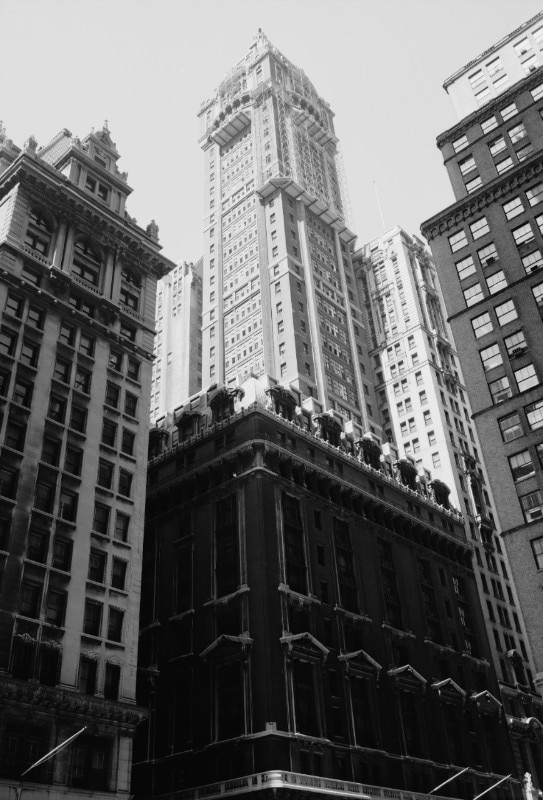
Ernest Flag, Singer Building, New York, USA (1899-1969)
The 187m, 47-storey building that housed the headquarters of the Singer Manufacturing Company, a famous sewing machine manufacturer, was in the years following its construction the tallest building in the world and a strongly recognised landmark in Manhattan. Community efforts to have it recognised as a historical landmark were useless: it was demolished in the late 1960s and replaced by the current One Liberty Plaza.
Photo by Jack E. Boucher on wikidata
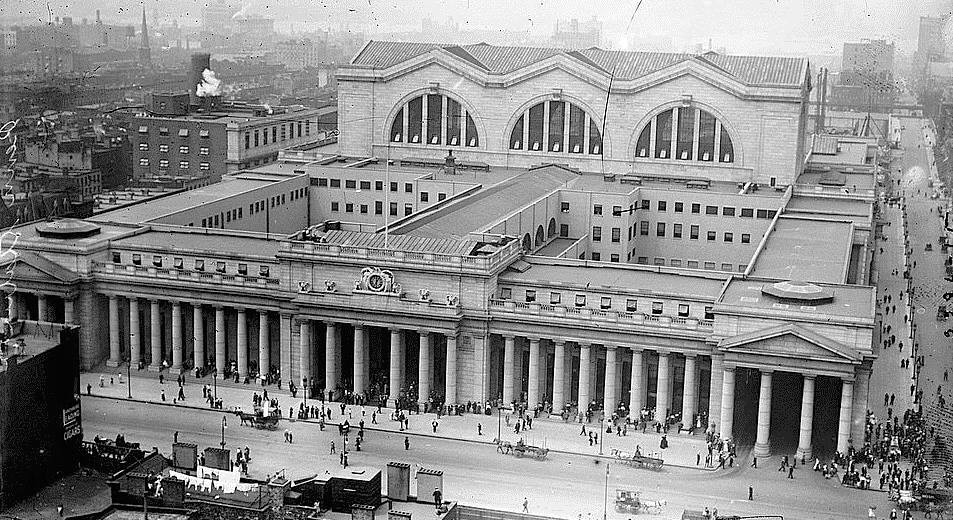
McKim, Mead & White, Pennsylvania Station, New York, USA (1910-1963)
The Beaux Arts style building, originally a hub in early 20th century New York and a community landmark, was demolished in 1963 due to declining rail transit flows. In its place there is Madison Square Garden and the current version of Penn Station.
Photo on wikimedia commons
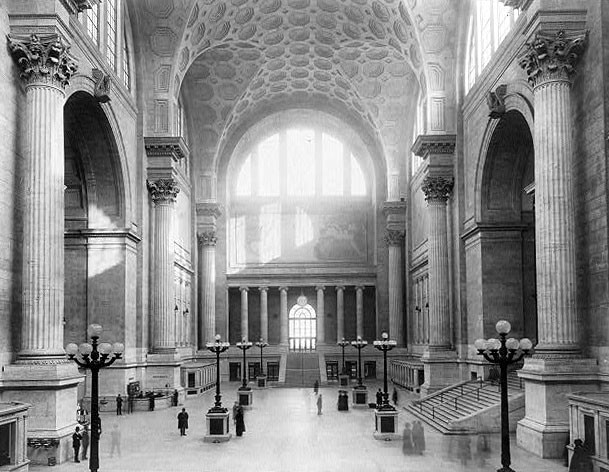
McKim, Mead & White, Pennsylvania Station, New York, USA (1910-1963)
Photo on wikimedia commons
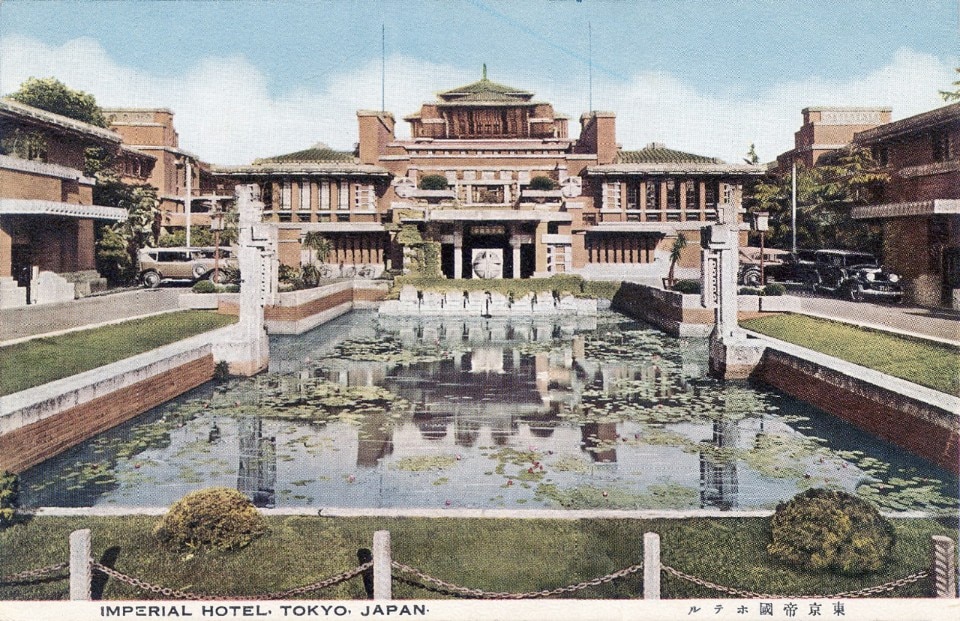
Frank Lloyd Wright, Imperial Hotel, Tokyo, Japan (1923-1967)
The complex was designed by the master of organic architecture, here still influenced by the Mayan revivalism that he was also experimenting with in the same years in Ennis House in Los Angeles. Having survived earthquakes, the timeworn building was demolished in 1963 to make way for the third version of the hotel.
Photo on wikimedia commons
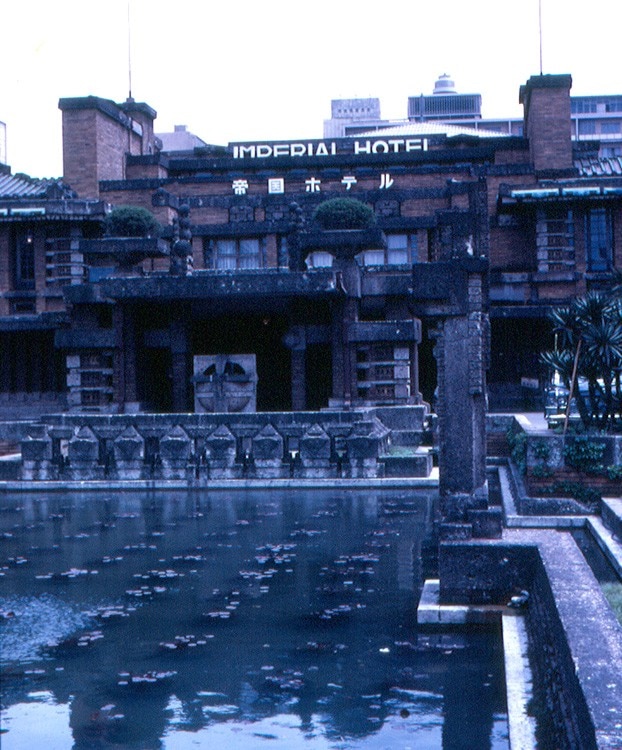
Frank Lloyd Wright, Imperial Hotel, Tokyo, Japan (1923-1967)
Photo by Roger W on CreativeCommons
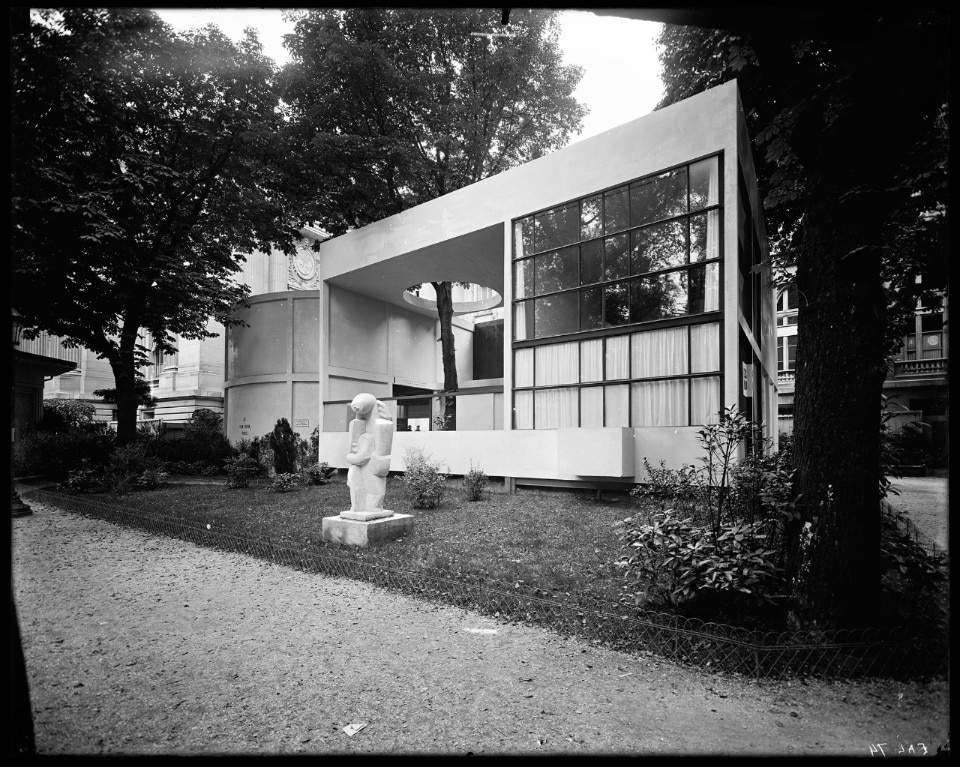
Le Corbusier, Esprit Nouveau Pavilion, Paris, France 1925
The Pavilion, conceived for the 1925 International Exhibition of Decorative Arts in Paris, was a full-scale prototype of a standardised dwelling composed of mass-produced elements, which aimed to promote the benefits of efficient and inexpensive technologies to meet housing demand and the need for quality housing in cities. It was widely opposed by the organisers of the event who tried to conceal it because of the disruptive, revolutionary message and explicit disavowal of Art Deco that the Expo represented. Decades after it was dismantled, a faithful copy was reconstructed in 1977 in Bologna, which now houses an exhibition venue.
Photo on wikimedia commons
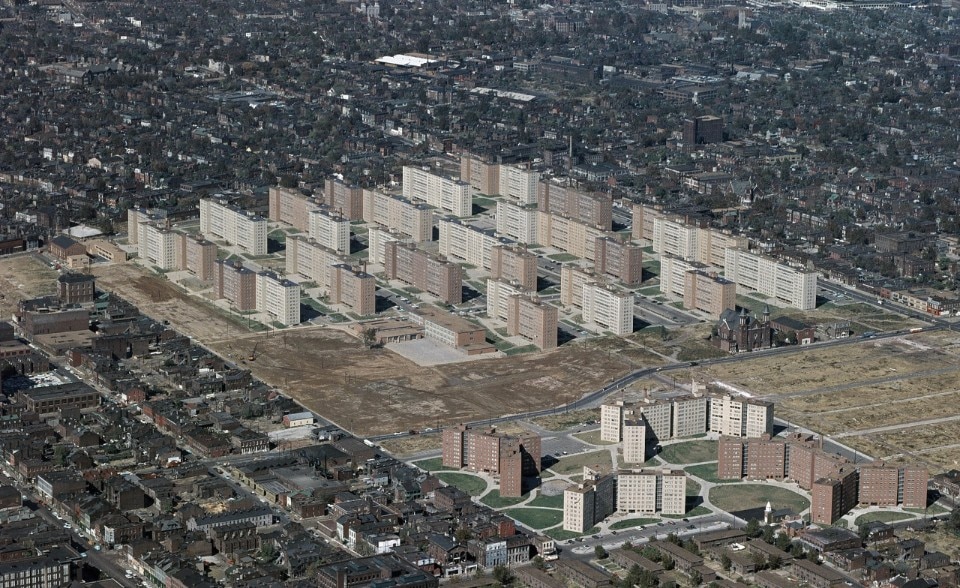
Minoru Yamasaki, Pruitt-Igoe, Saint Louis, USA (1955-1974)
The large social housing project was conceived to meet the city's pressing housing need in the post-war years. In the period immediately following its construction, living conditions in the complex slowly began to decline into deep socio-economic and environmental degradation. The demolition of the 33 mammoth buildings took place between 1972 and 1974 and was accompanied by an intense debate on public social housing policies that regarded the housing complex as an obvious symbol of national failure. The demolition of the Pruitt-Igoe was one of the first demolitions of modern architectural buildings and was described by architectural theorist and historian Charles Jencks as "the day modern architecture died".
Photo United States Geological Survey – United States Geological Survey from Wikipedia
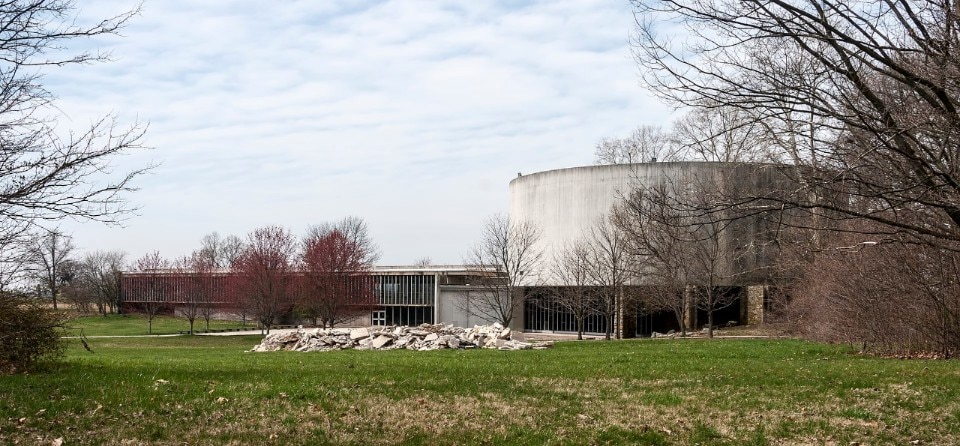
Richard Neutra, Gettysburg Cyclorama, Gettysburg, Pensylvania, USA (1958-2013)
Designed by one of the pioneers of Californian modernism, the visitor centre at the site of the Battle of Pickett's Charge during the American Civil War in 1863 housed an 1883 cyclorama by Paul Philippoteaux and an observation deck. Due to high maintenance and restoration costs, the building was demolished despite public protests and the fact that it was considered a site of outstanding historical and architectural importance.
Photo by Acroterion on wikimedia commons
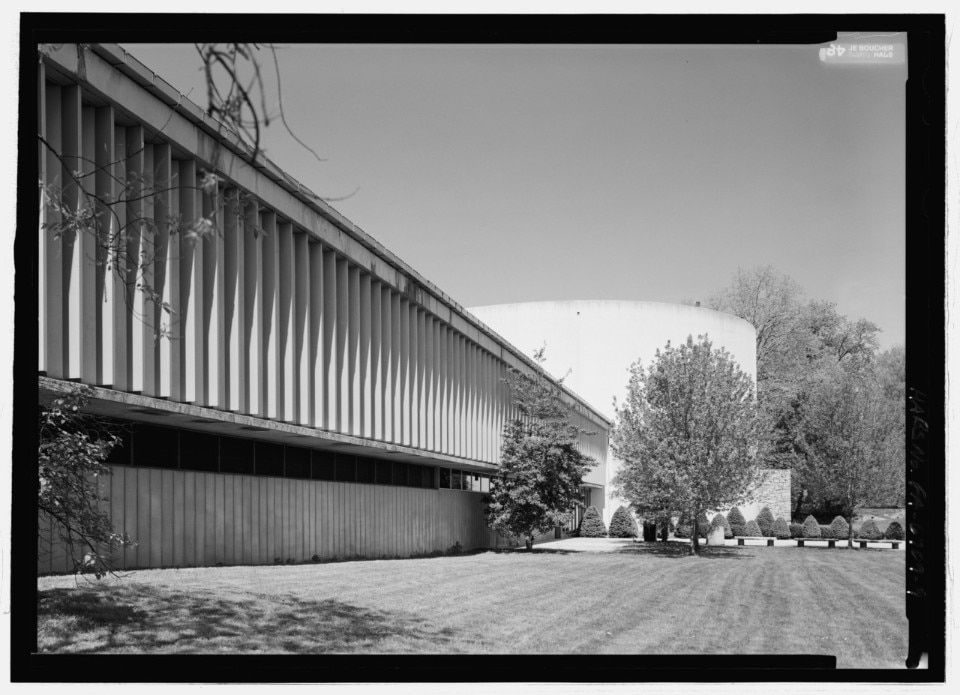
Richard Neutra, Gettyburg Cyclorama, Gettysburg, Pensylvania, USA (1958-2013)
Photo by Jack Boucher on wikimedia commons
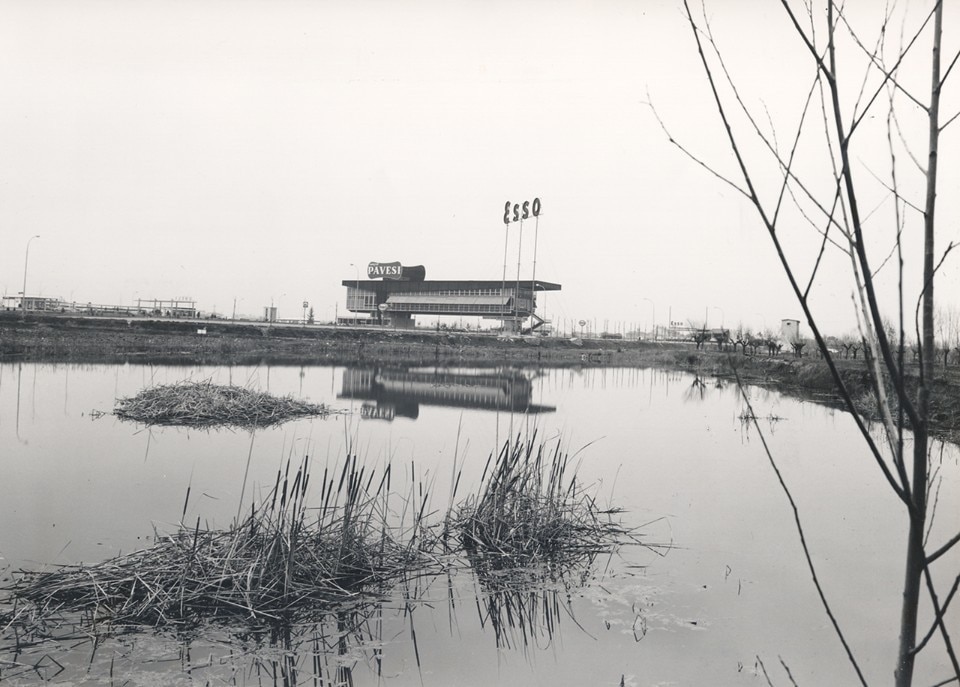
Angelo Bianchetti, Autogrill Pavesi, Montepulciano, Siena, Italy (1967-2021)
In the era of the economic boom in which Italy looked to the future with optimism and freedom sped by on four wheels, in the footsteps of the American way of life, the Pavesi bridge-type autogrill between the Bettolle-Valdichiana and Chiusi-ChiancianoTerme tollbooths was a point of reference for tourists, holidaymakers and commuters who savoured a moment of relaxation here. Autostrade per l’Italia is replacing it with two turrets, more functional, less poetic. A memory of a somewhat naive and happily dreamy past that is unlikely to return
Photo on wikimedia commons
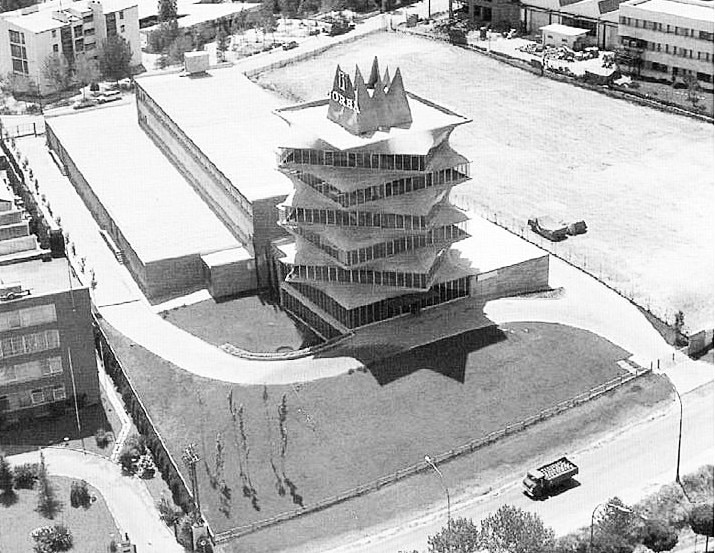
Miguel Fisac, Laboratorios Jorba, Madrid, Spain (1970-1999)
The building on the outskirts of Madrid was an example of the balance between lightness and materiality: the articulation of the floors, staggered 45 degrees apart, suggested the image of an Asian temple (the building was commonly referred to as 'the Pagoda') while the virtuosic use of rough concrete with traces of wooden formwork winked at Brutalism. Not recognised as a historical asset to be protected, it was demolished in 1999 to make way for a new tertiary building.
Photo on wikimedia commons
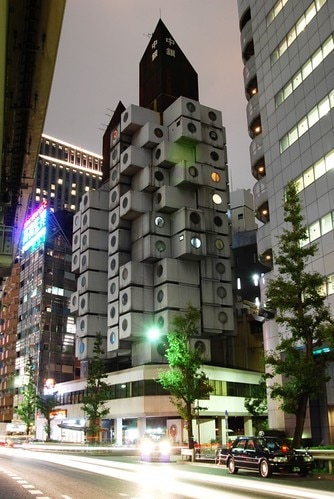
Kisho Kurokawa, Nakagin Capsule Tower Building, Tokyo, Japan (1972-2022)
This mixed-use (residential and tertiary) complex is considered one of the most representative examples of the Japanese Metabolist movement, which saw the city and society as living organisms in continuous growth and transformation, to whose needs only technology could provide concrete answers. The intervention consisted of two interconnected towers containing 140 prefabricated, independent capsules, each replaceable every 25 years. Severely degraded over the years, it was demolished due to the high costs for its renovation.
Photo by Scarletgreen on CreativeCommons
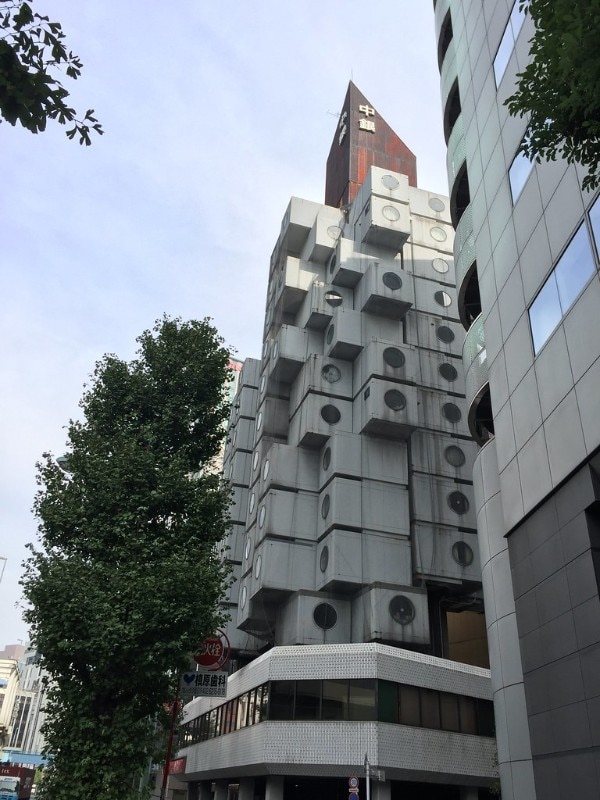
Kisho Kurokawa, Nakagin Capsule Tower Building, Tokyo, Japan (1972-2022)
Photo by Ncole458 on CreativeCommons
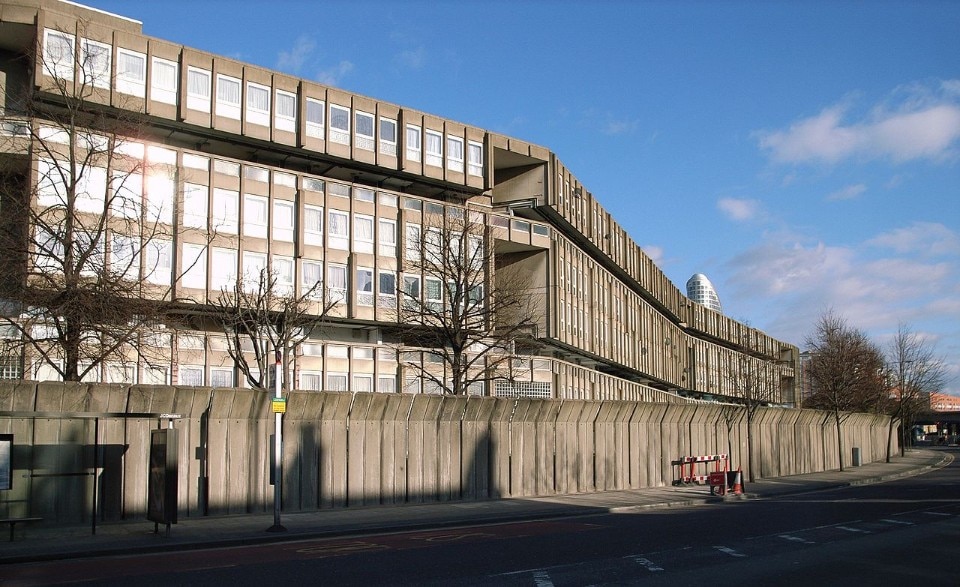
Alison & Peter Smithson, Robin Hood Gardens, London, UK (1972-2017)
The mammoth precast concrete complex consisted of two buildings (10 and 7 storeys, totalling 213 flats). Conceived as a manifesto of progressive social housing in opposition to the rigidity of the Modern Movement, the Smithsons' project developed the theme of collective housing in close connection with that of public space (from the vast central open space to the distributive paths at height) as an essential hub of community life and sociability. Although authoritative voices were raised to prevent its dismantling due to its advanced state of decay, the work was demolished: on the occasion of the 16th International Architecture Exhibition, the Victoria and Albert Museum in London exhibited a fragment of a façade of the complex in the Pavilion of Applied Arts.
Photo by Stevecadman on wikimedia commons
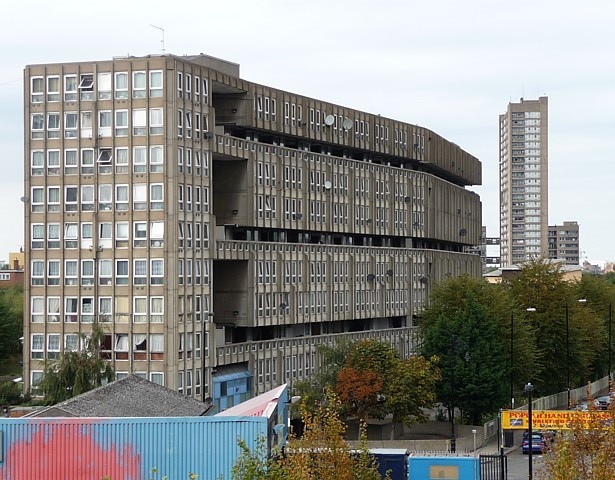
Alison & Peter Smithson, Robin Hood Gardens, London, UK (1972-2017)
Photo by Stephen Richards on wikimedia commons
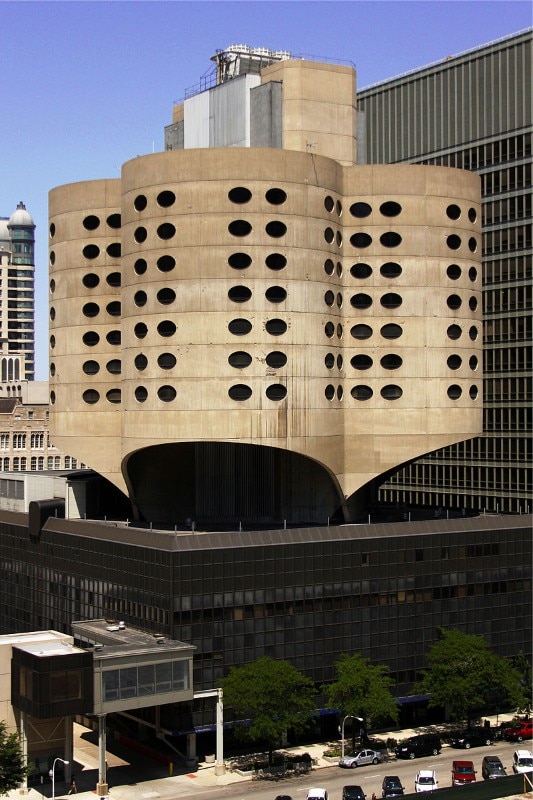
Bertrand Goldberg, Prentice Women's Hospital and Maternity Center, Chicago, USA (1973-2013)
The Brutalist complex was characterised by a 9-storey concrete quatrefoil tower with oval windows, cantilevered over a 5-storey rectangular body. Used as a maternity centre, with medical stations in the central core and patient wards in the four lobes, the complex curvilinear structure entered building history through the use of early computer-aided design techniques. The building was razed in 2013 when the owners, Northwestern University, needed to locate new medical research facilities in the area.
Photo by Umbugbene on wikipedia

Minoru Yamasaki, World Trade Center, New York, USA (1973-2001)
At 417m and 415m high, the twin towers were the tallest buildings in the world when they opened. The complex, built with the aim of revitalising Lower Manhattan, was inspired by the 1939 New York World's Fair exhibition, called the World Trade Center, based on an idea of global peace pursued through trade (a vision difficult to realise and drastically disregarded by history). The story of their destruction, due to the terrorist attack of 11 September 2001, is sadly well known.
Photo by pingnews.com on CreativeCommons

OMA, Netherlands Dance Theatre, The Hague, The Netherlands (1987-2015)
The complex in the centre of The Hague, in a rapidly changing area, housed not only the dance theatre designed by OMA, but also a concert hall and a hotel by other designers. The theatre was divided into three parallel programmatic zones: the stage area and the 1,001-seat auditorium; the central area with the rehearsal studios; the area of the offices, dressing rooms and dancers' common rooms. The theatre had a structure of steel beams and girders, using metal cladding with sheet rock covered with stucco, marble and gold foil. The roof had a self-supporting structure of a double layer of trapezoid folded sheet steel.
Photo by Rory Hyde on Flickr

Joseph Paxton, Crystal Palace, London, Great Britain (1851-1936)
Built as part of the 1851 London World's Exhibition to highlight the qualities of emerging technologies in glass and steel, the Pavilion was originally installed in Hyde Park, before being moved to another part of the town. Destroyed by fire in 1936, it inspired many other buildings that made lightness and transparency a plus in spite of the bulky architecture of the past.
Photo by Philippe Henry Delamotte on wikimedia commons

Joseph Paxton, Crystal Palace, London, Great Britain (1851-1936)
Photo on wikimediacommons

Victor Horta, La Maison du Peuple, Brussels, Belgium (1896 -1965)
The Art Nouveau complex, commissioned by the Belgian Workers’ Party, was distributed over four floors in an irregular plot and was characterised by maximum functionality and ornamental sobriety (unlike other Horta's achievements). The building was demolished in 1965 and replaced by a skyscraper, not without controversy at what was considered an architectural crime.
Photo on wikimedia commons

Ernest Flag, Singer Building, New York, USA (1899-1969)
The 187m, 47-storey building that housed the headquarters of the Singer Manufacturing Company, a famous sewing machine manufacturer, was in the years following its construction the tallest building in the world and a strongly recognised landmark in Manhattan. Community efforts to have it recognised as a historical landmark were useless: it was demolished in the late 1960s and replaced by the current One Liberty Plaza.
Photo by Jack E. Boucher on wikidata

McKim, Mead & White, Pennsylvania Station, New York, USA (1910-1963)
The Beaux Arts style building, originally a hub in early 20th century New York and a community landmark, was demolished in 1963 due to declining rail transit flows. In its place there is Madison Square Garden and the current version of Penn Station.
Photo on wikimedia commons

McKim, Mead & White, Pennsylvania Station, New York, USA (1910-1963)
Photo on wikimedia commons

Frank Lloyd Wright, Imperial Hotel, Tokyo, Japan (1923-1967)
The complex was designed by the master of organic architecture, here still influenced by the Mayan revivalism that he was also experimenting with in the same years in Ennis House in Los Angeles. Having survived earthquakes, the timeworn building was demolished in 1963 to make way for the third version of the hotel.
Photo on wikimedia commons

Frank Lloyd Wright, Imperial Hotel, Tokyo, Japan (1923-1967)
Photo by Roger W on CreativeCommons

Le Corbusier, Esprit Nouveau Pavilion, Paris, France 1925
The Pavilion, conceived for the 1925 International Exhibition of Decorative Arts in Paris, was a full-scale prototype of a standardised dwelling composed of mass-produced elements, which aimed to promote the benefits of efficient and inexpensive technologies to meet housing demand and the need for quality housing in cities. It was widely opposed by the organisers of the event who tried to conceal it because of the disruptive, revolutionary message and explicit disavowal of Art Deco that the Expo represented. Decades after it was dismantled, a faithful copy was reconstructed in 1977 in Bologna, which now houses an exhibition venue.
Photo on wikimedia commons

Minoru Yamasaki, Pruitt-Igoe, Saint Louis, USA (1955-1974)
The large social housing project was conceived to meet the city's pressing housing need in the post-war years. In the period immediately following its construction, living conditions in the complex slowly began to decline into deep socio-economic and environmental degradation. The demolition of the 33 mammoth buildings took place between 1972 and 1974 and was accompanied by an intense debate on public social housing policies that regarded the housing complex as an obvious symbol of national failure. The demolition of the Pruitt-Igoe was one of the first demolitions of modern architectural buildings and was described by architectural theorist and historian Charles Jencks as "the day modern architecture died".
Photo United States Geological Survey – United States Geological Survey from Wikipedia

Richard Neutra, Gettysburg Cyclorama, Gettysburg, Pensylvania, USA (1958-2013)
Designed by one of the pioneers of Californian modernism, the visitor centre at the site of the Battle of Pickett's Charge during the American Civil War in 1863 housed an 1883 cyclorama by Paul Philippoteaux and an observation deck. Due to high maintenance and restoration costs, the building was demolished despite public protests and the fact that it was considered a site of outstanding historical and architectural importance.
Photo by Acroterion on wikimedia commons

Richard Neutra, Gettyburg Cyclorama, Gettysburg, Pensylvania, USA (1958-2013)
Photo by Jack Boucher on wikimedia commons

Angelo Bianchetti, Autogrill Pavesi, Montepulciano, Siena, Italy (1967-2021)
In the era of the economic boom in which Italy looked to the future with optimism and freedom sped by on four wheels, in the footsteps of the American way of life, the Pavesi bridge-type autogrill between the Bettolle-Valdichiana and Chiusi-ChiancianoTerme tollbooths was a point of reference for tourists, holidaymakers and commuters who savoured a moment of relaxation here. Autostrade per l’Italia is replacing it with two turrets, more functional, less poetic. A memory of a somewhat naive and happily dreamy past that is unlikely to return
Photo on wikimedia commons

Miguel Fisac, Laboratorios Jorba, Madrid, Spain (1970-1999)
The building on the outskirts of Madrid was an example of the balance between lightness and materiality: the articulation of the floors, staggered 45 degrees apart, suggested the image of an Asian temple (the building was commonly referred to as 'the Pagoda') while the virtuosic use of rough concrete with traces of wooden formwork winked at Brutalism. Not recognised as a historical asset to be protected, it was demolished in 1999 to make way for a new tertiary building.
Photo on wikimedia commons

Kisho Kurokawa, Nakagin Capsule Tower Building, Tokyo, Japan (1972-2022)
This mixed-use (residential and tertiary) complex is considered one of the most representative examples of the Japanese Metabolist movement, which saw the city and society as living organisms in continuous growth and transformation, to whose needs only technology could provide concrete answers. The intervention consisted of two interconnected towers containing 140 prefabricated, independent capsules, each replaceable every 25 years. Severely degraded over the years, it was demolished due to the high costs for its renovation.
Photo by Scarletgreen on CreativeCommons

Kisho Kurokawa, Nakagin Capsule Tower Building, Tokyo, Japan (1972-2022)
Photo by Ncole458 on CreativeCommons

Alison & Peter Smithson, Robin Hood Gardens, London, UK (1972-2017)
The mammoth precast concrete complex consisted of two buildings (10 and 7 storeys, totalling 213 flats). Conceived as a manifesto of progressive social housing in opposition to the rigidity of the Modern Movement, the Smithsons' project developed the theme of collective housing in close connection with that of public space (from the vast central open space to the distributive paths at height) as an essential hub of community life and sociability. Although authoritative voices were raised to prevent its dismantling due to its advanced state of decay, the work was demolished: on the occasion of the 16th International Architecture Exhibition, the Victoria and Albert Museum in London exhibited a fragment of a façade of the complex in the Pavilion of Applied Arts.
Photo by Stevecadman on wikimedia commons

Alison & Peter Smithson, Robin Hood Gardens, London, UK (1972-2017)
Photo by Stephen Richards on wikimedia commons

Bertrand Goldberg, Prentice Women's Hospital and Maternity Center, Chicago, USA (1973-2013)
The Brutalist complex was characterised by a 9-storey concrete quatrefoil tower with oval windows, cantilevered over a 5-storey rectangular body. Used as a maternity centre, with medical stations in the central core and patient wards in the four lobes, the complex curvilinear structure entered building history through the use of early computer-aided design techniques. The building was razed in 2013 when the owners, Northwestern University, needed to locate new medical research facilities in the area.
Photo by Umbugbene on wikipedia

Minoru Yamasaki, World Trade Center, New York, USA (1973-2001)
At 417m and 415m high, the twin towers were the tallest buildings in the world when they opened. The complex, built with the aim of revitalising Lower Manhattan, was inspired by the 1939 New York World's Fair exhibition, called the World Trade Center, based on an idea of global peace pursued through trade (a vision difficult to realise and drastically disregarded by history). The story of their destruction, due to the terrorist attack of 11 September 2001, is sadly well known.
Photo by pingnews.com on CreativeCommons

OMA, Netherlands Dance Theatre, The Hague, The Netherlands (1987-2015)
The complex in the centre of The Hague, in a rapidly changing area, housed not only the dance theatre designed by OMA, but also a concert hall and a hotel by other designers. The theatre was divided into three parallel programmatic zones: the stage area and the 1,001-seat auditorium; the central area with the rehearsal studios; the area of the offices, dressing rooms and dancers' common rooms. The theatre had a structure of steel beams and girders, using metal cladding with sheet rock covered with stucco, marble and gold foil. The roof had a self-supporting structure of a double layer of trapezoid folded sheet steel.
Photo by Rory Hyde on Flickr
If sometimes wrecking balls and explosive mines are greeted with relief by those who perceive in a specific built work a disfigurement to urban decorum or human dignity (just think of the vituperated Vele in Scampia), it also happens that the destruction of an architecture takes place with deep regret beyond the Kantian aesthetic judgement of the “beautiful” or other subjectivistic evaluative parameters. Read more
03
15 works of public art that became the symbol of a city
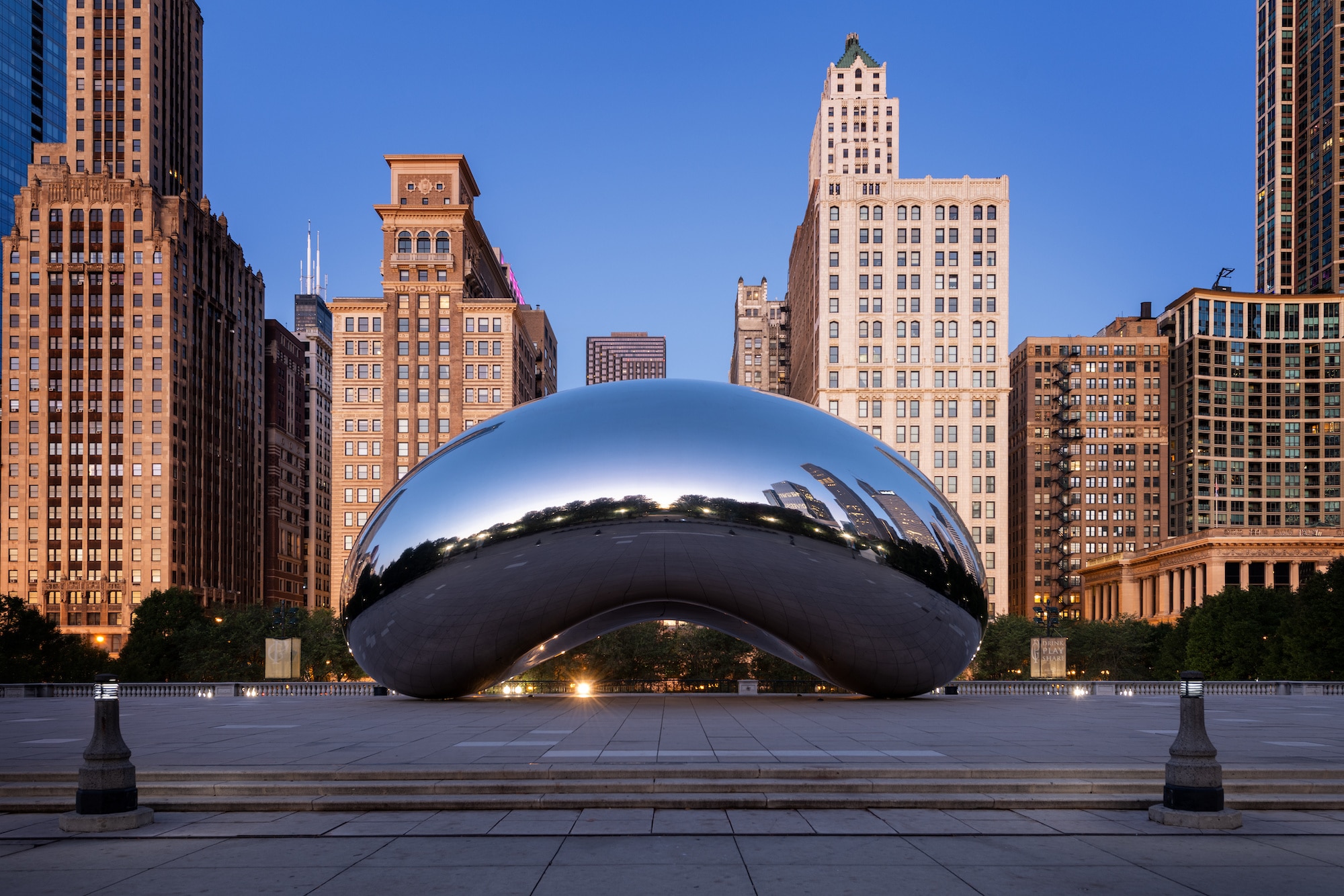
 View gallery
View gallery

Frédéric Auguste Bartholdi, Statue of Liberty, New York, USA 1886
Donated by the French to celebrate American independence, the 93 m high Statue of Liberty has dominated the entire bay of Manhattan since 1886. Since the days when it appeared, for many migrants, as the first 'face' of the United States of America, the iconic monument has become not only the symbol of the city but also of the possibility of realising one's dreams.
Photo Liviob from Wordpress

Frédéric Auguste Bartholdi, Statue of Liberty, New York, USA 1886
Photo cisko66 from Wordpress
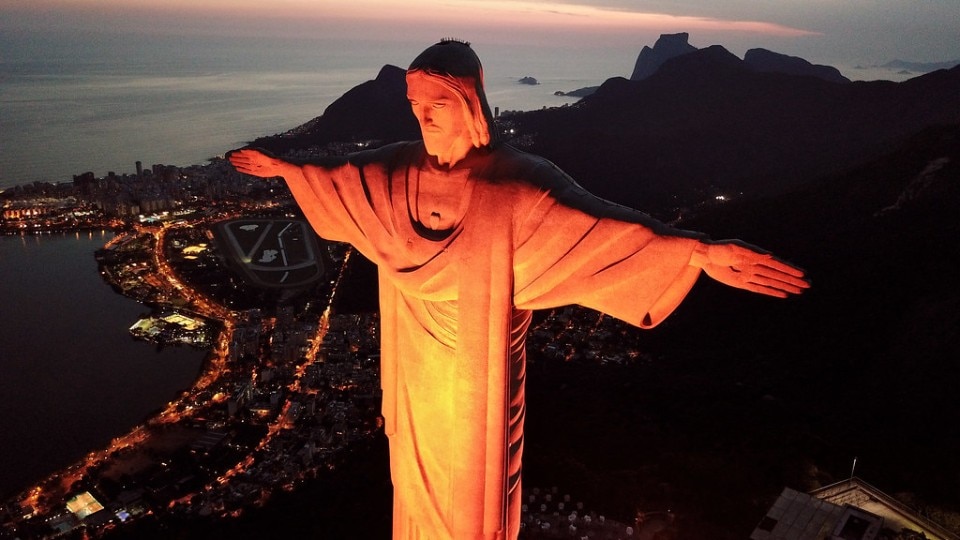
Paul Landowski, Heitor da Silva Costa, Gheorghe Leonida, Albert Irenée Caquot, Christ the Redeemer, Rio de Janeiro, Brazil 1931
The 38 m high soapstone statue rising from the top of Corcovado is par excellence 'the' symbol of Rio de Janeiro and the entire country: it depicts Jesus Christ with outstretched arms embracing the entire city in an ideal gesture, redeeming humanity.
Photo UNWomen gallery from Wordpress
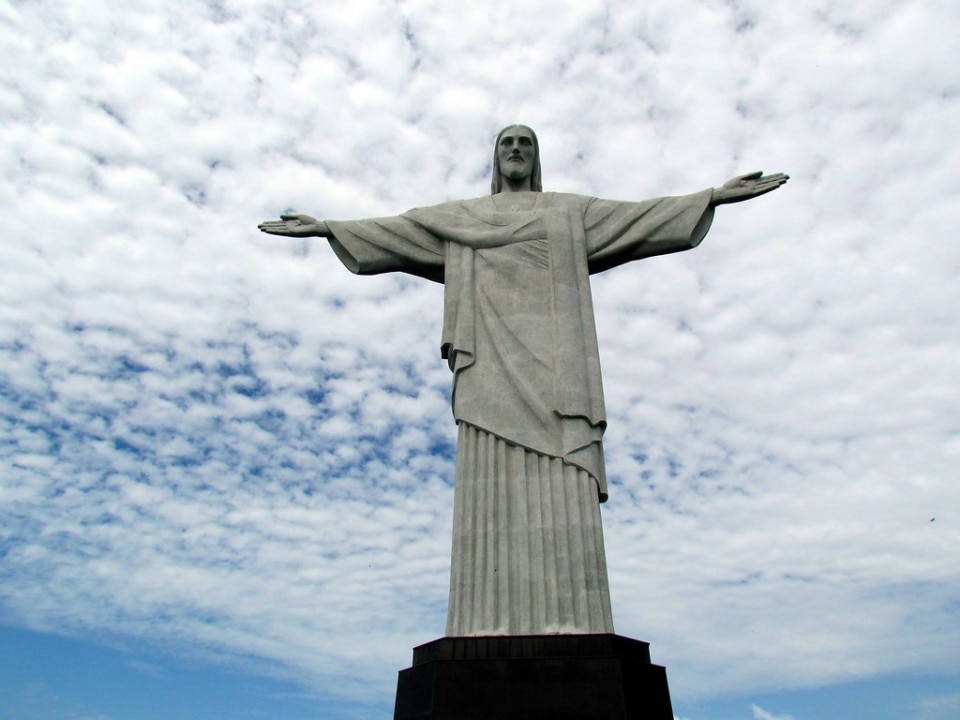
Paul Landowski, Heitor da Silva Costa, Gheorghe Leonida, Albert Irenée Caquot, Christ the Redeemer, Rio de Janeiro, Brazil 1931
Photo David Berkowitz from Wordpress
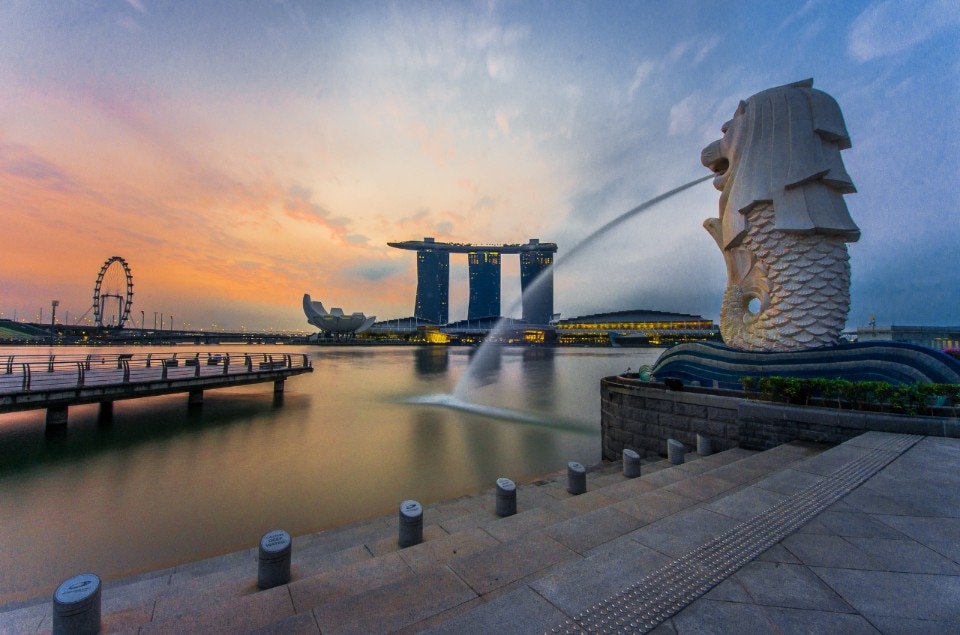
Lim Nang Seng, Merlion, Singapore, 1972
Located in the bustling Merlion Park, the 8.6m high sculpture spitting water represents the Merlion, a mythical creature with the head of a lion and the body of a fish regarded as the mascot and national symbol of Singapore. A little further away is a second 2m-high statue depicting a puppy (also of a Merlion, of course).
Photo Fad3away from Wordpress
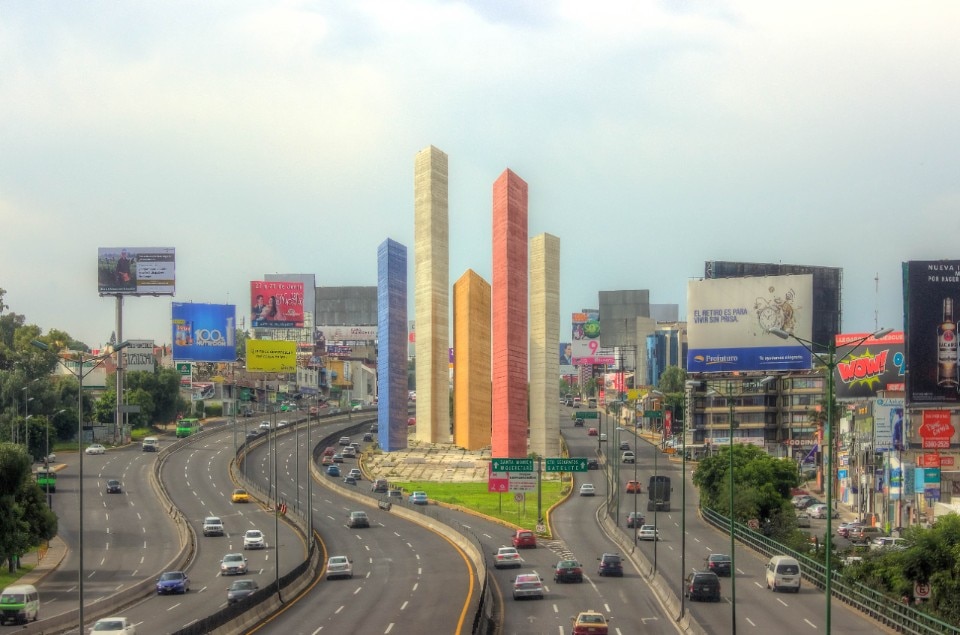
Luis Barragán, Mathias Goeritz, Torres de Satélite, Naucalpan de Juárez, Mexico 1958
The five prismatic concrete towers of varying heights (up to 52 m) and flamboyant colours are an effective synthesis of architecture and sculpture: originally conceived as a fountain at the gates of Ciudad Satélite, on the outskirts of Mexico City, even today these 'needles' stuck in the sky are a powerful territorial landmark.
Photo Octavio Alonso Maya from Wordpress
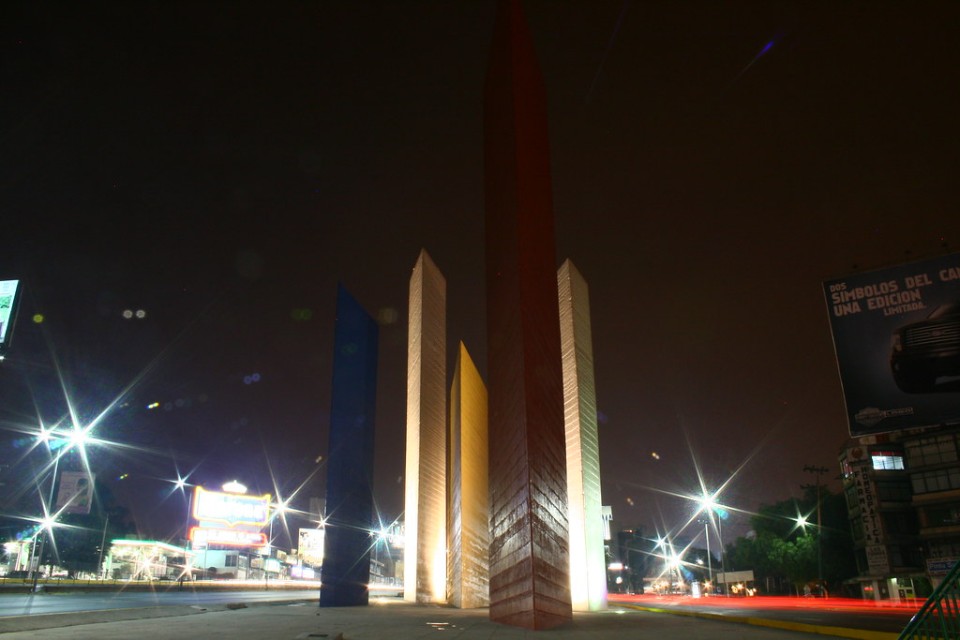
Luis Barragán, Mathias Goeritz, Torres de Satélite, Naucalpan de Juárez, Mexico 1958
Photo Christian Gonzáles Verón from Wordpress

Robert Indiana, LOVE, Philadelphia, USA 1976
In the park dedicated to John Fitzgerald Kennedy in the heart of Philadelphia, the bright red, winking sculpture was designed to celebrate the birth of the United States of America in the site of their founding and the spirit of the 'city of brotherly love'.
Photo Trustypics from Wordpress
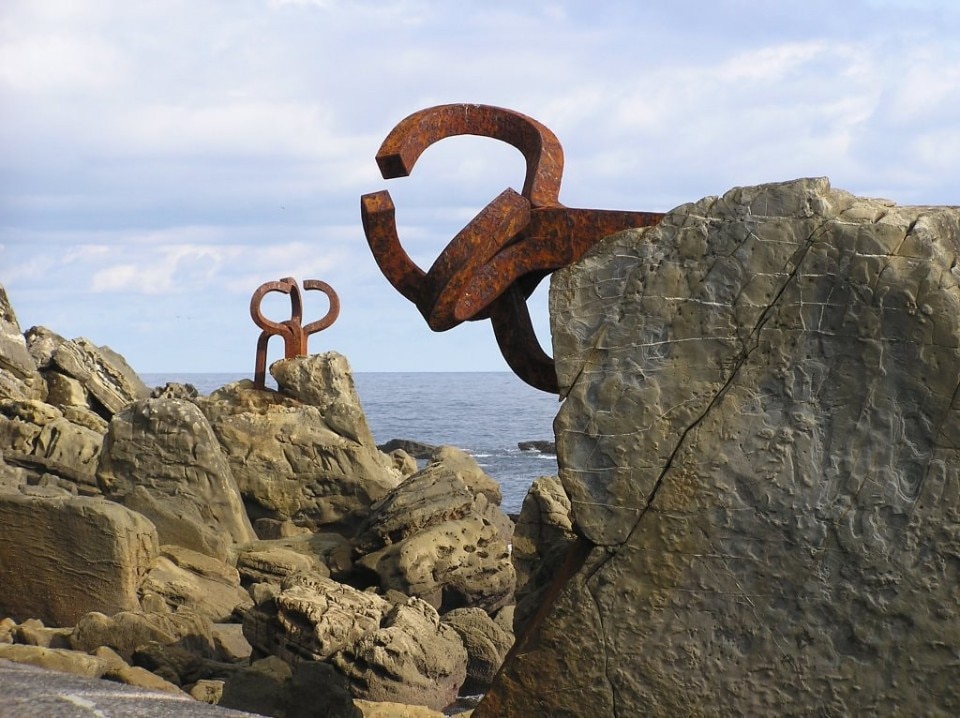
Eduardo Chillida, El Peine del Viento, San Sebastián, Spain 1977
At the extreme western tip of the Bahia de la Concha, there is one of Chillida's best-known compositions and strongly representative of the city: El Peine del Viento, a sculptural ensemble composed of pink granite terraces and three rusty iron elements set on the rocks, intended as one with the wind, water and waves. On very windy days, the air passes through a system of tubes emitting a magical, surreal sound.
Photo Babalooba from Wordpress
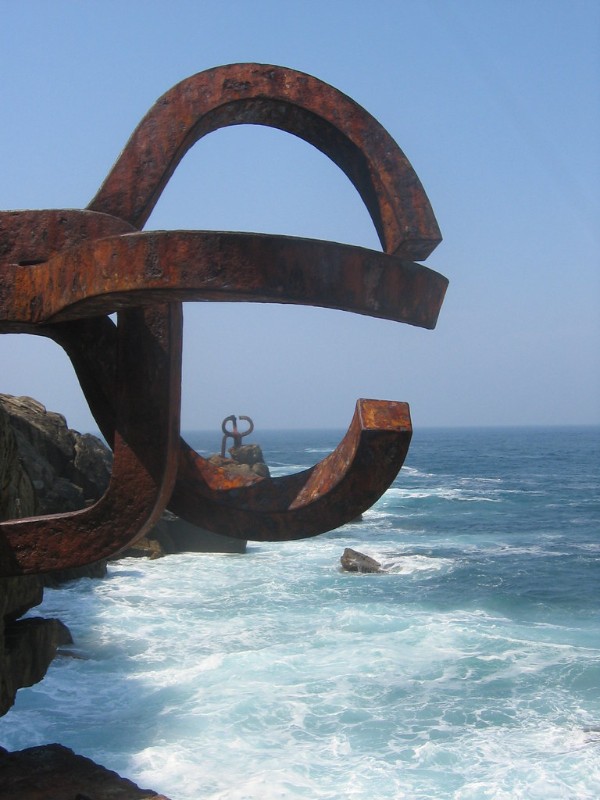
Eduardo Chillida, El Peine del Viento, San Sebastián, Spain 1977
Photo Burdellet from Wordpress
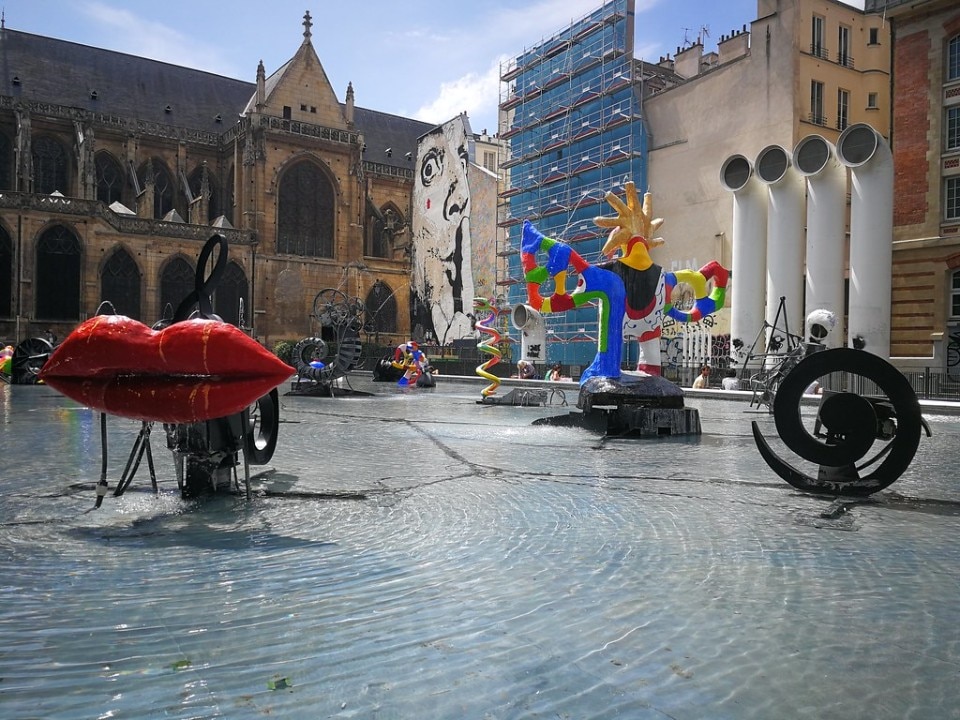
Jean Tinguely, Niki de Saint Phalle, Fontaine des Automates, Paris, France 1983
Located in the Igor Stravinsky Square near the Centre Georges Pompidou, the joyful fountain consisting of a 580 m2 basin and 16 colourful aluminium sculptures that move thanks to water jets is a pleasant attraction for adults and children alike.
Photo Art_inthecity from Wordpress
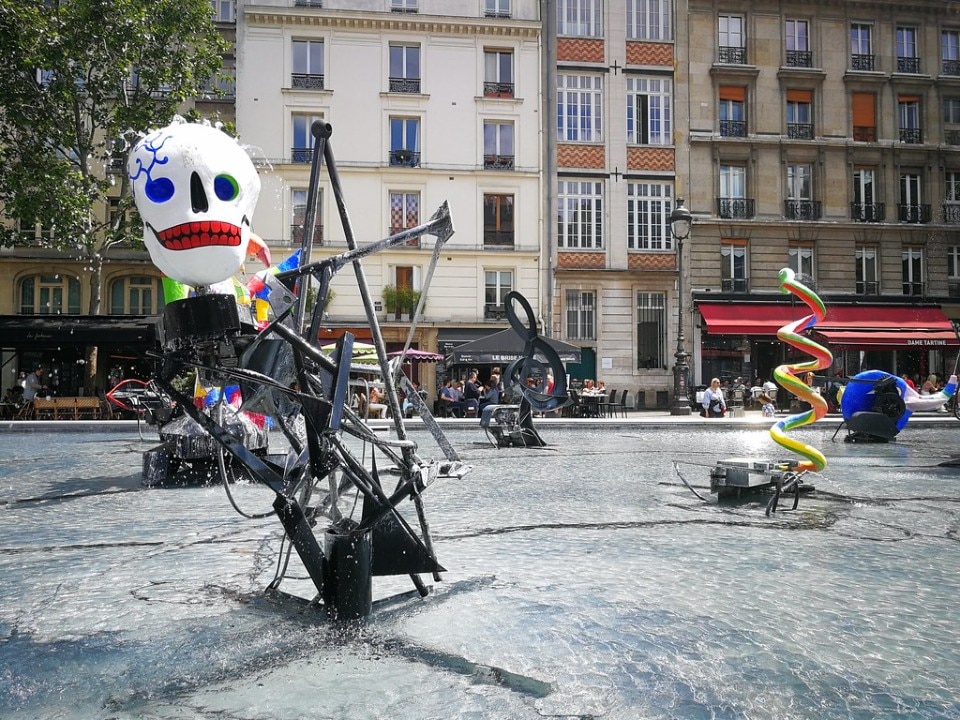
Jean Tinguely, Niki de Saint Phalle, Fontaine des Automates, Paris, France 1983
Photo Art_inthecity from Wordpress
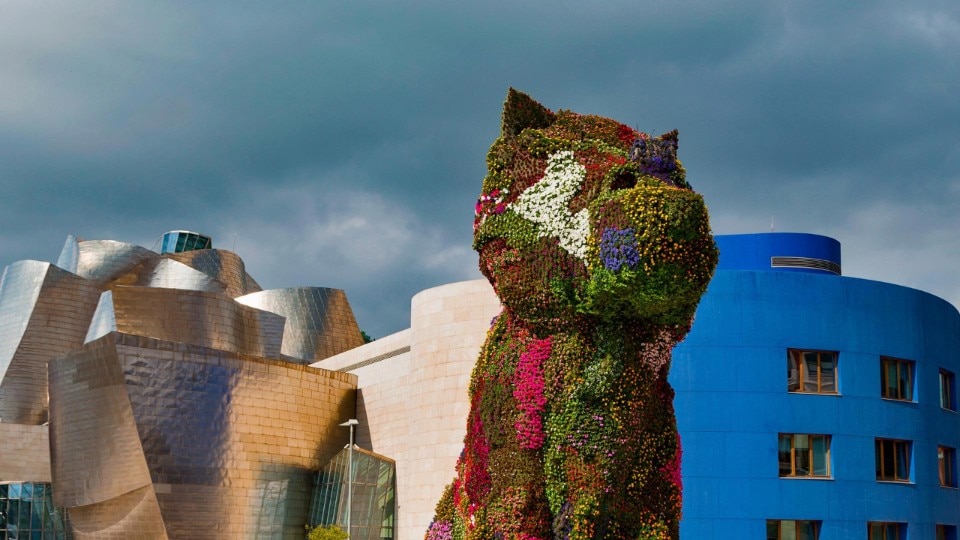
Jeff Koons, Puppy, Bilbao, Spain 1997
Coherently with Koons' expressive language, the monumental West Highland terrier puppy situated in front of the Guggenheim Museum and covered with petunias, marigolds and begonias on a stainless steel structure makes kitsch an effective marketing tool. As well as of Bilbao, it is a symbol of 'love, warmth and happiness', according to the artist.
Photo Andymag from Wordpress

Alvar Gullichsen, Posanka, Turku, Finland 1999
The statue, located near the campus area of the University of Turku and the Turku Student Village, is a hybrid between a marzipan pig ('possu') and a rubber duck ('ankka'): every winter, tradition dictates that the statue is given a Santa Claus hat and, on Walpurgis Night, a student cap to playfully celebrate the return of spring and the (goliardic?) spirit of the place.
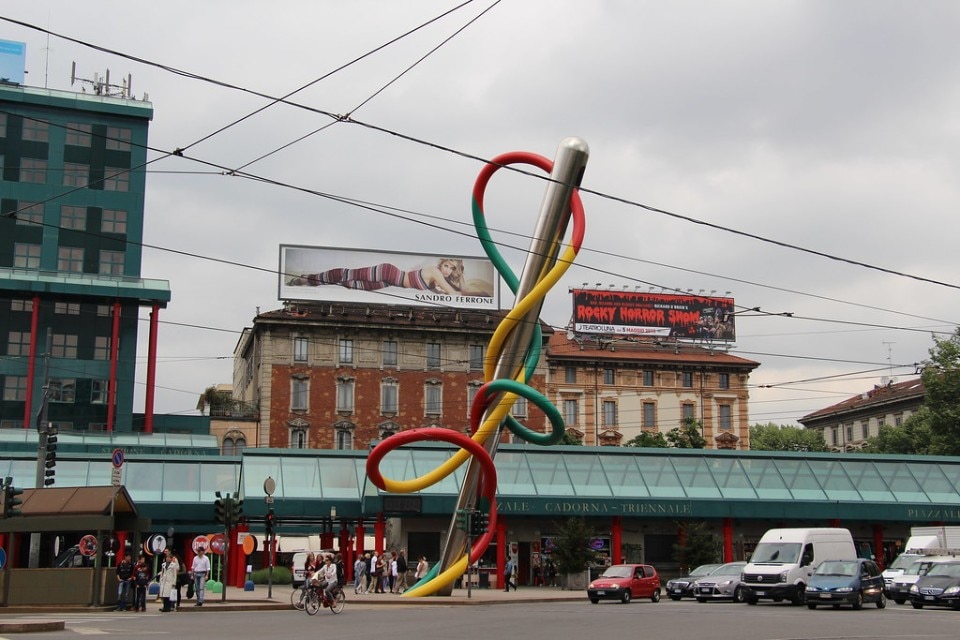
Claes Oldenburg and Coosje van Bruggen, Needle, thread and knot, Milan 2000
As part of the redevelopment of Cadorna Station and the surrounding square designed by Gae Aulenti in 1997, the sculpture is intended as a monument celebrating Milan: an allusion to the colours of the metro lines, the shapes of the city's coat of arms, and the 'sartorial' and creative tools from which the 'fashion capital' originates.
Photo Corno.fulgur75 from Wordpress
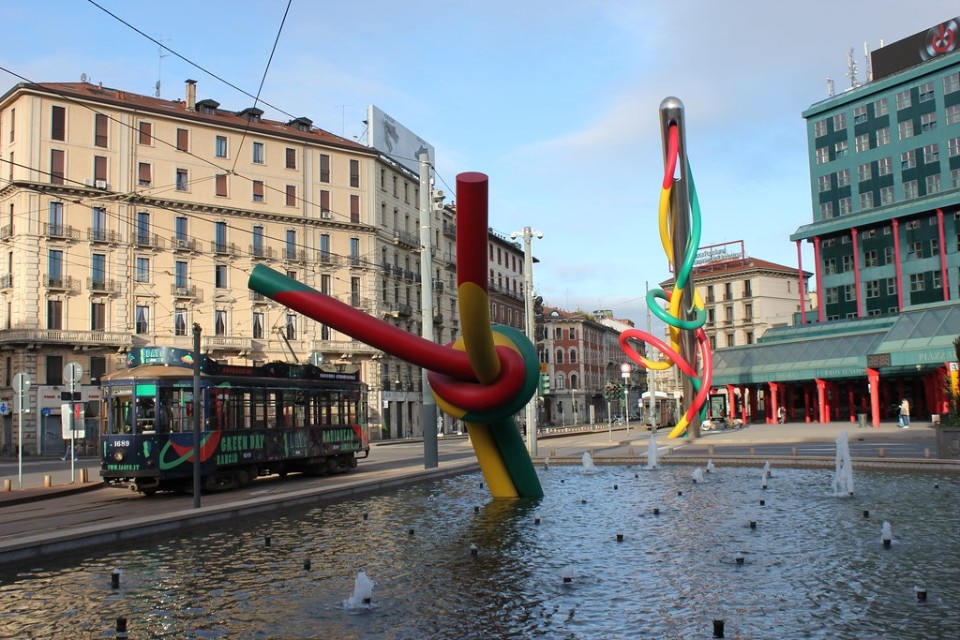
Claes Oldenburg and Coosje van Bruggen, Needle, thread and knot, Milan 2000
Photo Rémy de Valenciennes from Wordpres
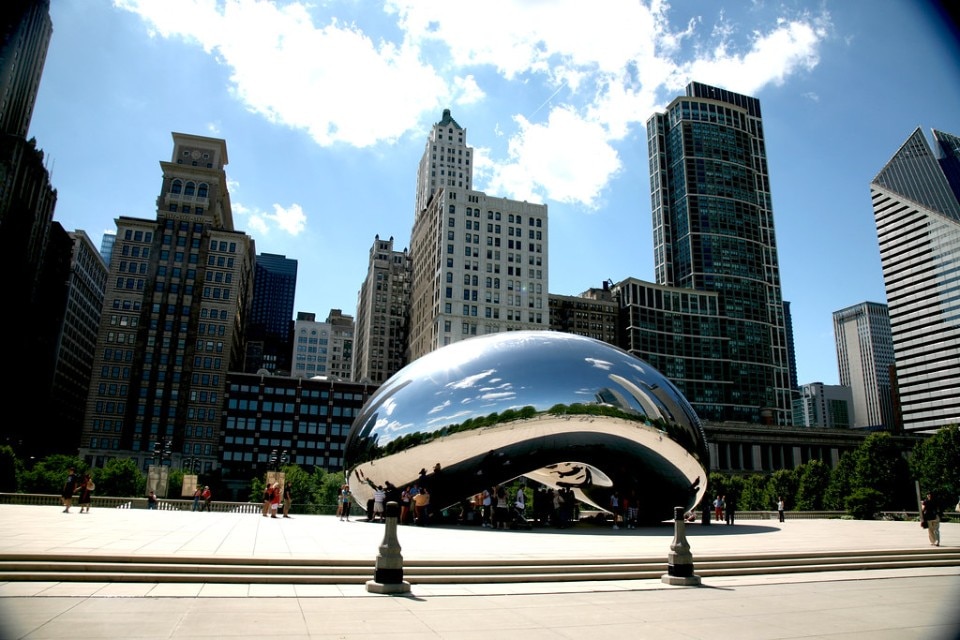
Anish Kapoor, Cloud Gate, Chicago, USA 2006
Located in the middle of the AT&T Plaza in Millennium Park, the bean-shaped sculpture clad in 168 stainless steel plates, with no externally visible welds, is inspired by the fluid consistency of mercury: the reflective surface distorts the city skyline and multiplies the play of reflections, capturing the attention and curiosity of those passing under and around it.
Photo Vincent Desjardins from Wordpress

Maurizio Cattelan, L.O.V.E., Milan, Italy 2010
Photo www.ralfsteinberger.com from Wordpress
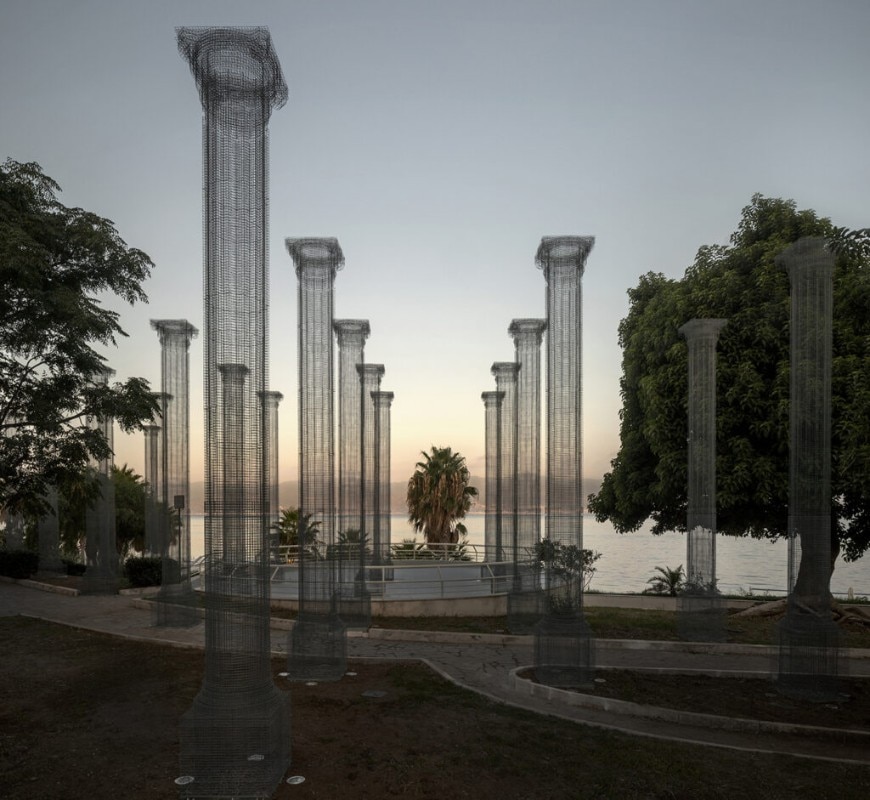
Edoardo Tresoldi, Opera, Reggio Calabria, Italy 2020
The permanent installation on the promenade of Reggio Calabria, which can be lived-in and is completely usable by citizens and visitors, is characterised by a macroscopic wire mesh structure and is a tribute to the contemplative relationship between the individual and the landscape, here evoked through a classical architectural language and material transparencies.
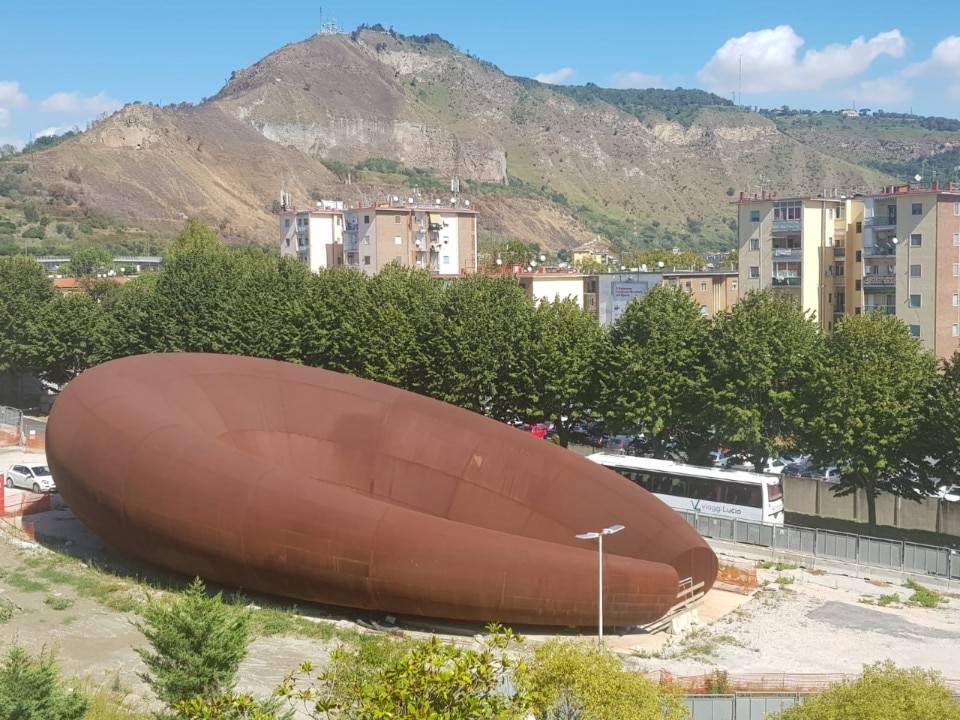
Anish Kapoor, Sculpture in the Monte S. Angelo metro, Naples, Italy 2022
The gigantic sculpture in the form of an inverted steel funnel located at the exit of the Monte Sant' Angelo station completes the installation conceived about twenty years ago by Kapoor and consisting of another work positioned at the main entrance. The artist's intention is to create a work of art that is not only contemplative but can be actively experienced by passing through it and living it.
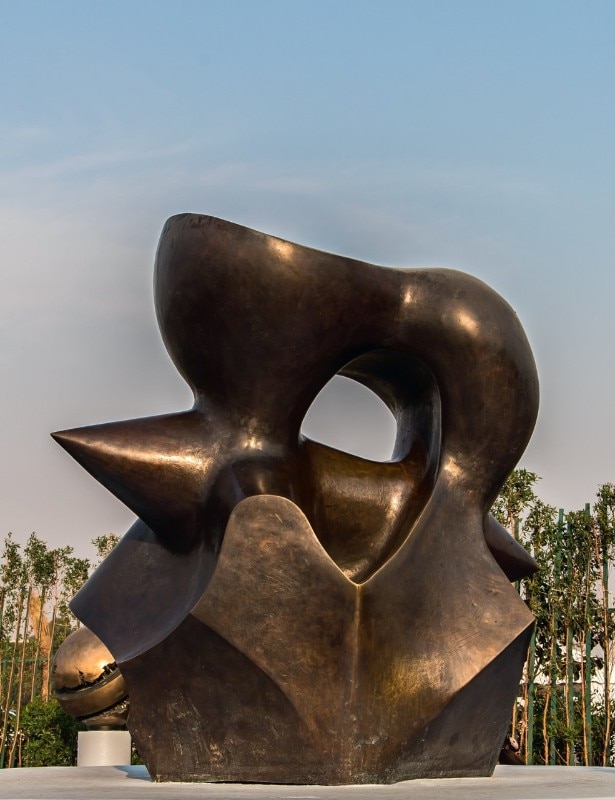
Urban sculptures, Jeddah, Saudi Arabia (Henry Moore, large Spindle Piece)
Thanks to the far-sighted vision of its administrators, between the 1970s and 1980s Jeddah activated a process of urban development with contemporary art at its centre: more than 600 sculptures, conceived by the world's greatest artists - including Arnaldo Pomodoro, Henry Moore, Alexander Calder,... - were placed in squares, streets and roundabouts with the aim of evoking a sense of wonder and putting the spotlight on the city as a place of cultural and artistic innovation.
Henry Moore, Large Spindle Piece, 1968

Urban sculptures, Jeddah, Saudi Arabia
Arnaldo Pomodoro, Rotating First Section n.3, 1975

Peeing statues, Brussels, Belgium
The three 'peeing statues' - Manneken Pis (1619), his little sister Jeanneke Pis (1985) and the little dog Het Zinneke (1998) - form an iconic monument of the city. The works, placed at the vertices of an imaginary triangle in the historic centre, refer to an expressive imagery - that of the urinating figure - that evokes the concepts of fantasy, innocence and bravado and, in this case, also the city's welcoming values and its capacity for interchange and integration.
Manneken-Pis, 1619. Photo Marco Crupi Visual Artist from Wordpress

Frédéric Auguste Bartholdi, Statue of Liberty, New York, USA 1886
Donated by the French to celebrate American independence, the 93 m high Statue of Liberty has dominated the entire bay of Manhattan since 1886. Since the days when it appeared, for many migrants, as the first 'face' of the United States of America, the iconic monument has become not only the symbol of the city but also of the possibility of realising one's dreams.
Photo Liviob from Wordpress

Frédéric Auguste Bartholdi, Statue of Liberty, New York, USA 1886
Photo cisko66 from Wordpress

Paul Landowski, Heitor da Silva Costa, Gheorghe Leonida, Albert Irenée Caquot, Christ the Redeemer, Rio de Janeiro, Brazil 1931
The 38 m high soapstone statue rising from the top of Corcovado is par excellence 'the' symbol of Rio de Janeiro and the entire country: it depicts Jesus Christ with outstretched arms embracing the entire city in an ideal gesture, redeeming humanity.
Photo UNWomen gallery from Wordpress

Paul Landowski, Heitor da Silva Costa, Gheorghe Leonida, Albert Irenée Caquot, Christ the Redeemer, Rio de Janeiro, Brazil 1931
Photo David Berkowitz from Wordpress

Lim Nang Seng, Merlion, Singapore, 1972
Located in the bustling Merlion Park, the 8.6m high sculpture spitting water represents the Merlion, a mythical creature with the head of a lion and the body of a fish regarded as the mascot and national symbol of Singapore. A little further away is a second 2m-high statue depicting a puppy (also of a Merlion, of course).
Photo Fad3away from Wordpress

Luis Barragán, Mathias Goeritz, Torres de Satélite, Naucalpan de Juárez, Mexico 1958
The five prismatic concrete towers of varying heights (up to 52 m) and flamboyant colours are an effective synthesis of architecture and sculpture: originally conceived as a fountain at the gates of Ciudad Satélite, on the outskirts of Mexico City, even today these 'needles' stuck in the sky are a powerful territorial landmark.
Photo Octavio Alonso Maya from Wordpress

Luis Barragán, Mathias Goeritz, Torres de Satélite, Naucalpan de Juárez, Mexico 1958
Photo Christian Gonzáles Verón from Wordpress

Robert Indiana, LOVE, Philadelphia, USA 1976
In the park dedicated to John Fitzgerald Kennedy in the heart of Philadelphia, the bright red, winking sculpture was designed to celebrate the birth of the United States of America in the site of their founding and the spirit of the 'city of brotherly love'.
Photo Trustypics from Wordpress

Eduardo Chillida, El Peine del Viento, San Sebastián, Spain 1977
At the extreme western tip of the Bahia de la Concha, there is one of Chillida's best-known compositions and strongly representative of the city: El Peine del Viento, a sculptural ensemble composed of pink granite terraces and three rusty iron elements set on the rocks, intended as one with the wind, water and waves. On very windy days, the air passes through a system of tubes emitting a magical, surreal sound.
Photo Babalooba from Wordpress

Eduardo Chillida, El Peine del Viento, San Sebastián, Spain 1977
Photo Burdellet from Wordpress

Jean Tinguely, Niki de Saint Phalle, Fontaine des Automates, Paris, France 1983
Located in the Igor Stravinsky Square near the Centre Georges Pompidou, the joyful fountain consisting of a 580 m2 basin and 16 colourful aluminium sculptures that move thanks to water jets is a pleasant attraction for adults and children alike.
Photo Art_inthecity from Wordpress

Jean Tinguely, Niki de Saint Phalle, Fontaine des Automates, Paris, France 1983
Photo Art_inthecity from Wordpress

Jeff Koons, Puppy, Bilbao, Spain 1997
Coherently with Koons' expressive language, the monumental West Highland terrier puppy situated in front of the Guggenheim Museum and covered with petunias, marigolds and begonias on a stainless steel structure makes kitsch an effective marketing tool. As well as of Bilbao, it is a symbol of 'love, warmth and happiness', according to the artist.
Photo Andymag from Wordpress

Alvar Gullichsen, Posanka, Turku, Finland 1999
The statue, located near the campus area of the University of Turku and the Turku Student Village, is a hybrid between a marzipan pig ('possu') and a rubber duck ('ankka'): every winter, tradition dictates that the statue is given a Santa Claus hat and, on Walpurgis Night, a student cap to playfully celebrate the return of spring and the (goliardic?) spirit of the place.

Claes Oldenburg and Coosje van Bruggen, Needle, thread and knot, Milan 2000
As part of the redevelopment of Cadorna Station and the surrounding square designed by Gae Aulenti in 1997, the sculpture is intended as a monument celebrating Milan: an allusion to the colours of the metro lines, the shapes of the city's coat of arms, and the 'sartorial' and creative tools from which the 'fashion capital' originates.
Photo Corno.fulgur75 from Wordpress

Claes Oldenburg and Coosje van Bruggen, Needle, thread and knot, Milan 2000
Photo Rémy de Valenciennes from Wordpres

Anish Kapoor, Cloud Gate, Chicago, USA 2006
Located in the middle of the AT&T Plaza in Millennium Park, the bean-shaped sculpture clad in 168 stainless steel plates, with no externally visible welds, is inspired by the fluid consistency of mercury: the reflective surface distorts the city skyline and multiplies the play of reflections, capturing the attention and curiosity of those passing under and around it.
Photo Vincent Desjardins from Wordpress

Maurizio Cattelan, L.O.V.E., Milan, Italy 2010
Photo www.ralfsteinberger.com from Wordpress

Edoardo Tresoldi, Opera, Reggio Calabria, Italy 2020
The permanent installation on the promenade of Reggio Calabria, which can be lived-in and is completely usable by citizens and visitors, is characterised by a macroscopic wire mesh structure and is a tribute to the contemplative relationship between the individual and the landscape, here evoked through a classical architectural language and material transparencies.

Anish Kapoor, Sculpture in the Monte S. Angelo metro, Naples, Italy 2022
The gigantic sculpture in the form of an inverted steel funnel located at the exit of the Monte Sant' Angelo station completes the installation conceived about twenty years ago by Kapoor and consisting of another work positioned at the main entrance. The artist's intention is to create a work of art that is not only contemplative but can be actively experienced by passing through it and living it.

Urban sculptures, Jeddah, Saudi Arabia (Henry Moore, large Spindle Piece)
Thanks to the far-sighted vision of its administrators, between the 1970s and 1980s Jeddah activated a process of urban development with contemporary art at its centre: more than 600 sculptures, conceived by the world's greatest artists - including Arnaldo Pomodoro, Henry Moore, Alexander Calder,... - were placed in squares, streets and roundabouts with the aim of evoking a sense of wonder and putting the spotlight on the city as a place of cultural and artistic innovation.
Henry Moore, Large Spindle Piece, 1968

Urban sculptures, Jeddah, Saudi Arabia
Arnaldo Pomodoro, Rotating First Section n.3, 1975

Peeing statues, Brussels, Belgium
The three 'peeing statues' - Manneken Pis (1619), his little sister Jeanneke Pis (1985) and the little dog Het Zinneke (1998) - form an iconic monument of the city. The works, placed at the vertices of an imaginary triangle in the historic centre, refer to an expressive imagery - that of the urinating figure - that evokes the concepts of fantasy, innocence and bravado and, in this case, also the city's welcoming values and its capacity for interchange and integration.
Manneken-Pis, 1619. Photo Marco Crupi Visual Artist from Wordpress
Over the centuries, public art has mainly been identified with the 'monument', understood as a hagiographic tool. But from the 20th century onwards, celebratory ambitions were abandoned in favour of more general communicative objectives linked to the context of reference. Read more
04
Brutalism in Italy, 20 architectures you should know
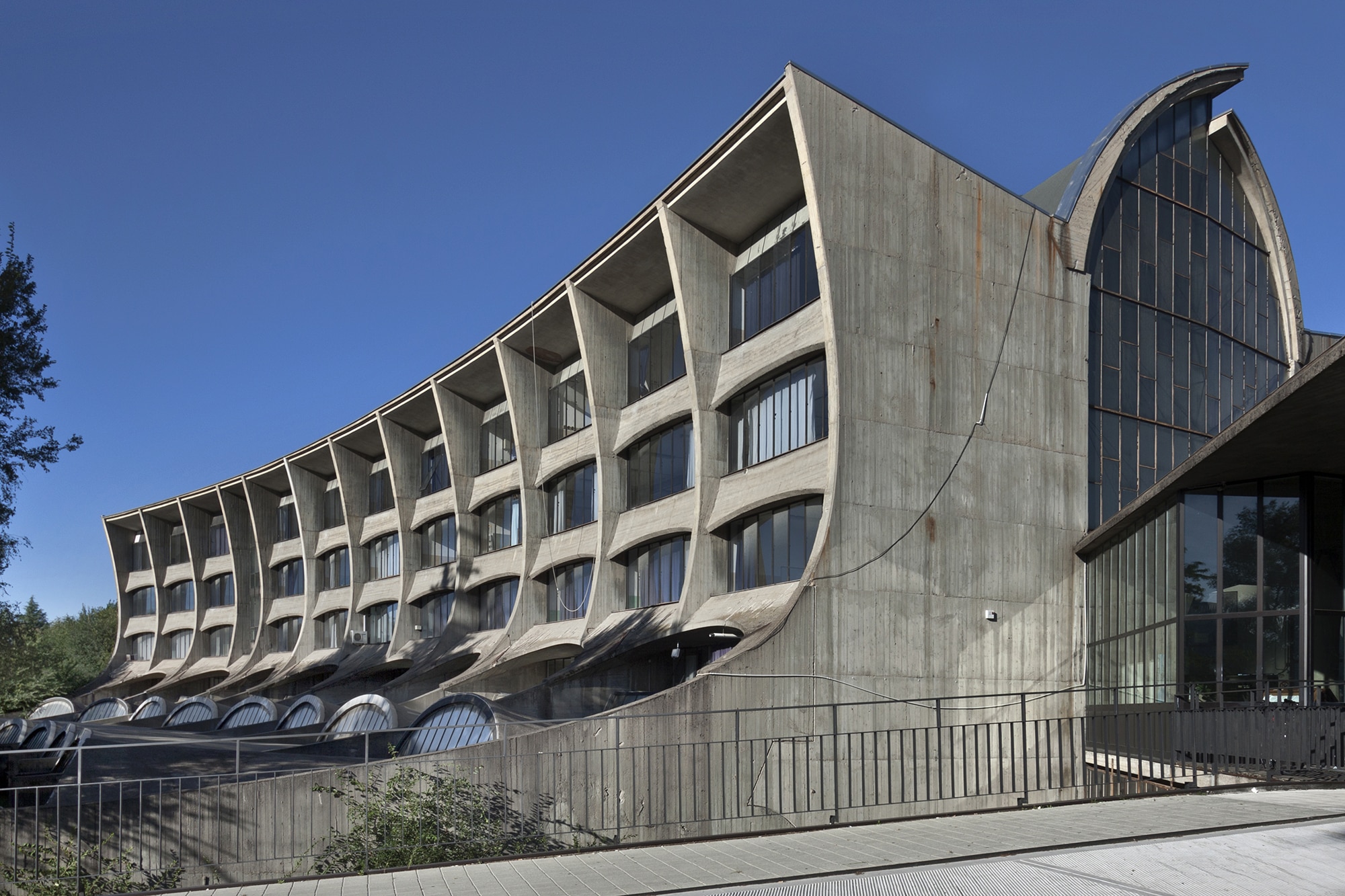
 View gallery
View gallery
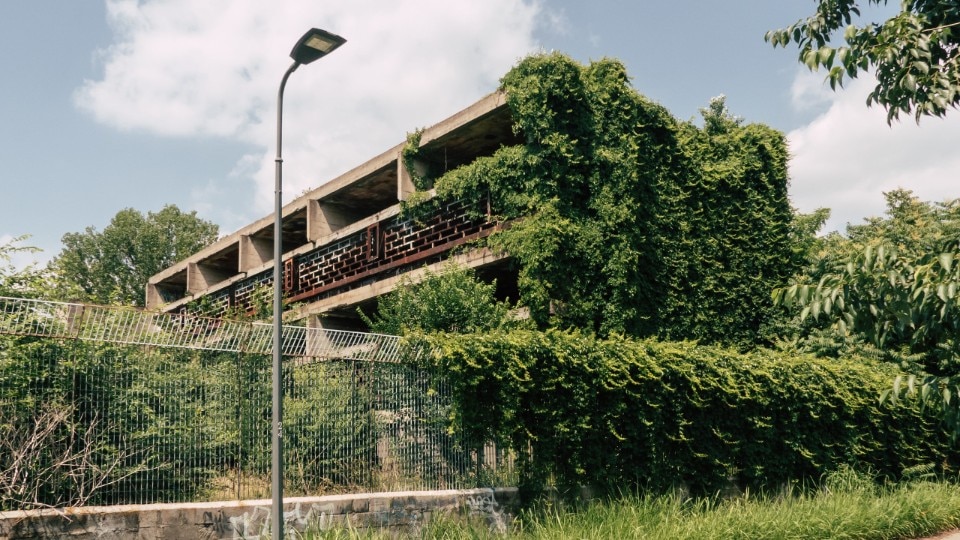
Vittoriano Viganò, Marchiondi Institute, Baggio, Milan 1957
The complex, considered a masterpiece of Brutalist architecture at an international level and today in a state of decay, is composed of four main buildings oriented along an east-west axis and immersed in a park, which house the different functional areas: offices and management, a boarding school for students, the teachers' building and a school. The plan-volume layout is characterised by a rigorous modular scansion, emphasised by the exposed concrete structure with constant pitch. Particularly innovative is the choice made by the architect, in agreement with the Institute's educators, to abolish the traditional dormitories in favour of duplex accommodation.
Photo by Alberto Trentanni from Flickr
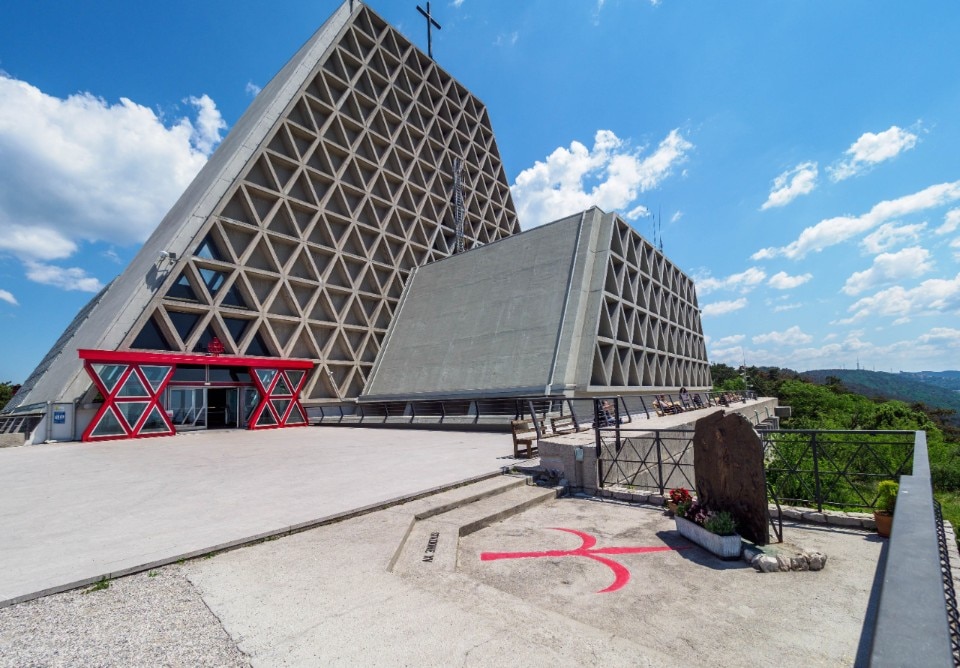
Antonio Guacci, Marian Sanctuary of Monte Grisa, Trieste 1965
Situated at an altitude of 330 m on Monte Grisa, the sanctuary is nicknamed the 'cheese' by the people of Trieste due to its triangular shape. The complex, from which there is a spectacular view of the city, is characterised by two overlapping churches and an imposing structure in exposed reinforced concrete.
Foto di Andreas Manessinger da CreativeCommons
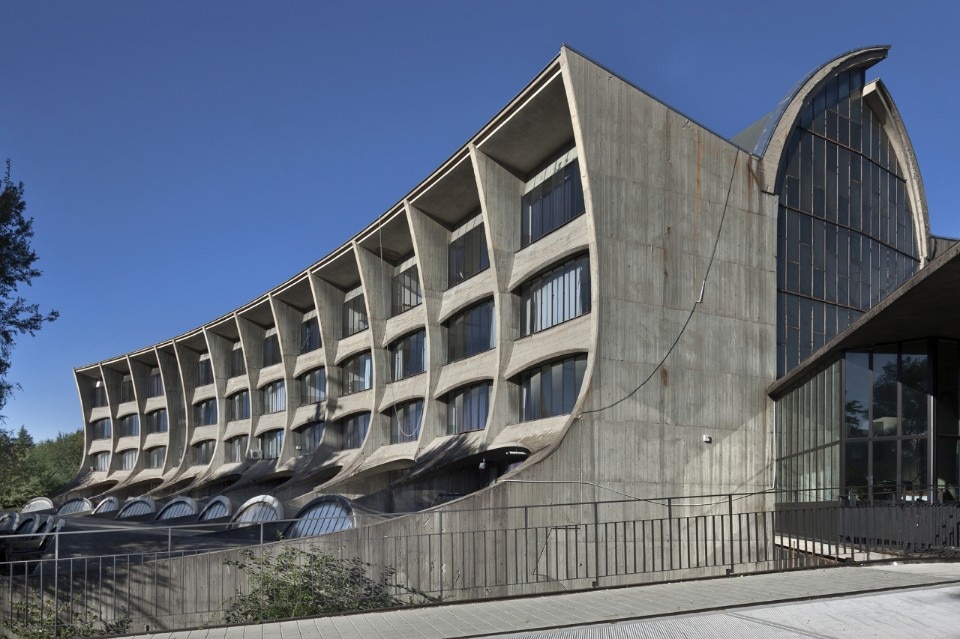
Enrico Castiglioni and Carlo Fontana, Cipriano Facchinetti State Institute of Higher Education, Castellanza, Varese 1965
"This building introduced into school construction - perhaps for the first time in Italy - the identification of architecture with the structure, in this case very complex in the vaulting system": this is how Castiglioni described his work, considered by Pevsner to be one of the best examples of Brutalist architecture and, according to the critics, not without references to the expressionism of Poelzig and Mendelsohn (from the dramatisation of forms to the design of the openings). The complex consists of two in-line volumes - one of which is arched in plan and façade - of three storeys above ground, arranged on a block marked by a sequence of curvilinear prefabricated reinforced concrete sheds containing the common functions. The façade is punctuated by shaped partitions and iron-window panes that curve plastically towards the top.
Photo by Roberto Conte
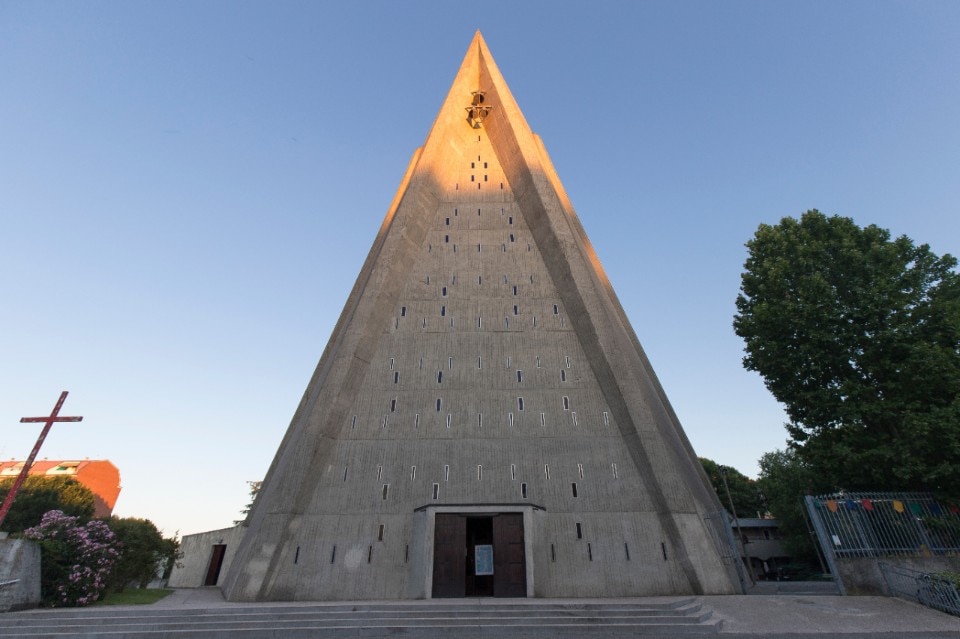
Arrigo Arrighetti, S. Giovanni Bono Church, Milan 1968
The church fits into its context by openly detaching itself from the surrounding residential buildings, thanks to its marked upward movement. The front, doubled in the image reflected by the pool in front of it, is formed by a single elongated concrete triangle pierced by coloured windows, and is reminiscent on one side of Gothic spires and on the other suggests the idea of a tent pitched in the neighbourhood. The structure consists of reinforced concrete walls with steel beams supporting a porcelain aluminium sheet roof. Next to the church there are the parish buildings and clergy residences, distributed in a semicircle around a garden.
Photo by CesareFerrari on AdobeStock
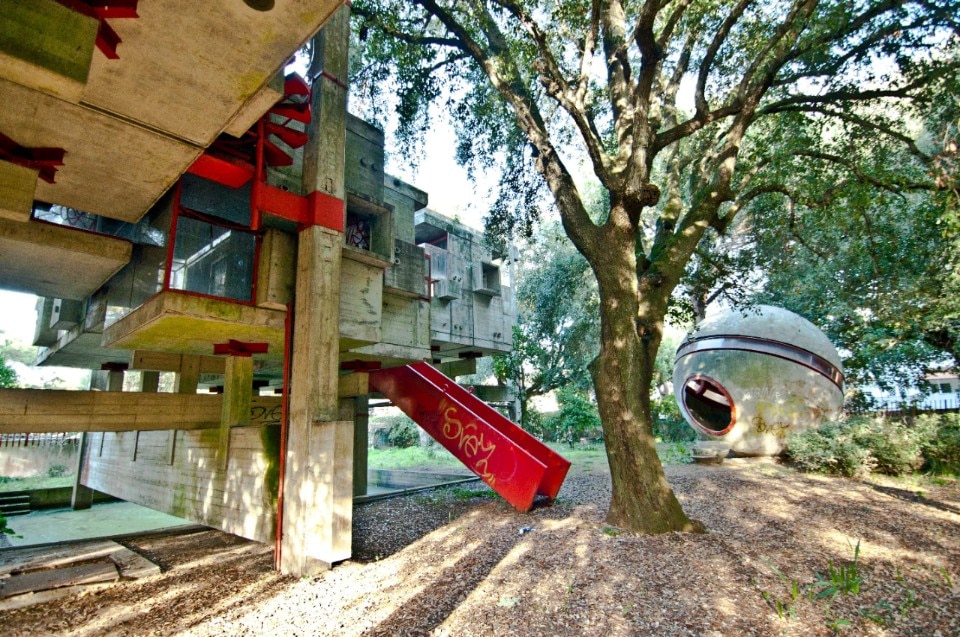
Giuseppe Perugini, Uga De Plaisant and Raynaldo Perugini, Experimental House, Fregene, Rome 1969
Reducing the so-called Casa Albero to a simple summer residence would be reductive, because the work designed by a family of architects (father, mother and son) for themselves is not just a beach house but an example of experimentation with a new architectural language in the field of housing. The work was conceived “in progress” in order to be continuously transformed, while maintaining a constant dialogue with nature. The complex consists of three buildings of different types: the house, with a repeatable modular structure made of raw concrete, glass and red steel; the ball, a 5-metre diameter sphere conceived as an external appendage to the house; the three cubes, cubic spatial modules interspersed with semi-modules containing the services, bedroom, living room and kitchen, in less than 40 square metres.
Photo by fotographicrome from AdobeStock
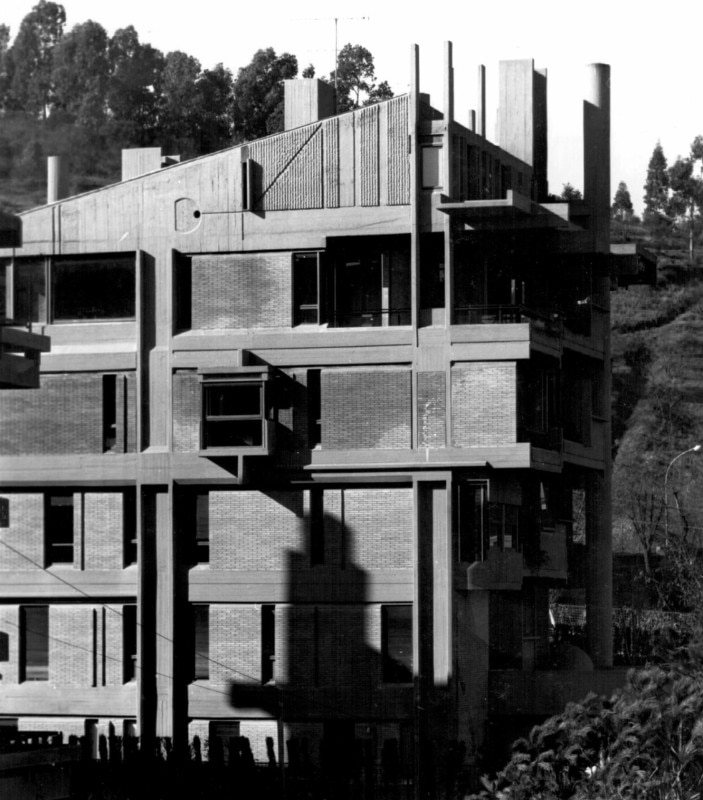
Francesco Berarducci, villa in via Colli della Farnesina 144, Rome 1969
The building overlooking a hill in the Monte Mario urban park is characterised by an exposed concrete structural grid composed of C-shaped pillars and beams defining the general layout and the proportional ratio of elevations. Opaque envelope portions establish a dialogue with the glazing on the main façades. The work was a backdrop for some scenes of Elio Petri's film "Indagine su un cittadino al di sopra di ogni sospetto".
Photo by CABW on wikipedia
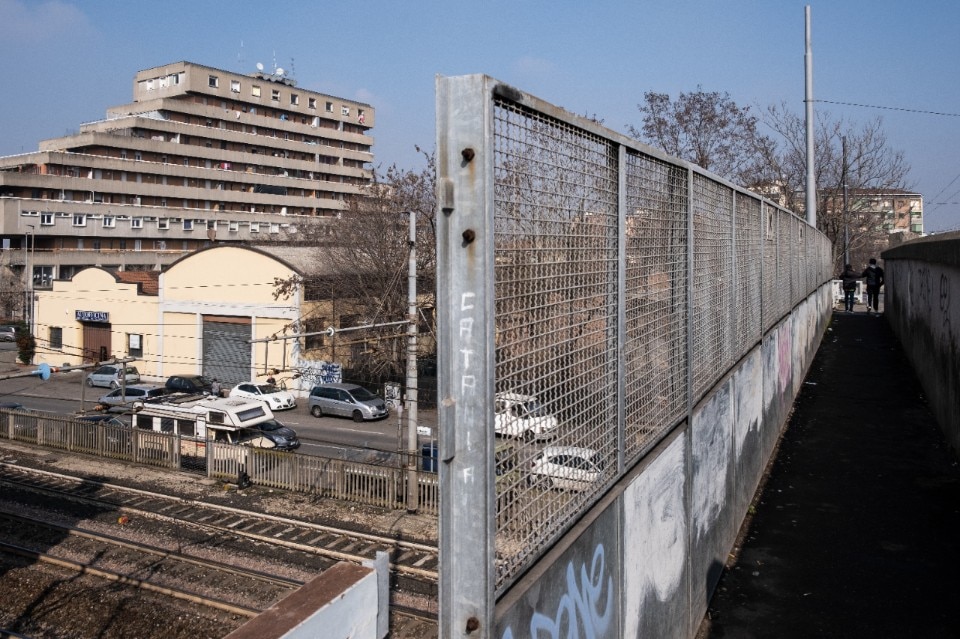
Vinicio Vecchi, R-North Complex, Modena 1970
Located in the area north of the railway that since the war has become the site of expansion of industrial and commercial activities of the city, the multipurpose complex was created to accommodate, in addition to services and commercial activities, mini-apartments for workers of the Livestock Market. The monolithic building, characterized by a marked horizontality accentuated by the alternation of reinforced concrete floors with those of dark brick plaster, soon became a "black hole" of degradation and crime. Starting from the beginning of 2000, the complex has been the object of a regeneration intervention aimed not only to heal the physical degradation but also to face the deep-rooted social conflicts of the area: the project has provided for the dimensional revision of the lodgings to guarantee a better usability, the settlement of cultural and educational associations, the requalification of the external public spaces.
Photo by Quel palazzo che vedi dal ponte, Fotografo 1, Collettivo MaBo
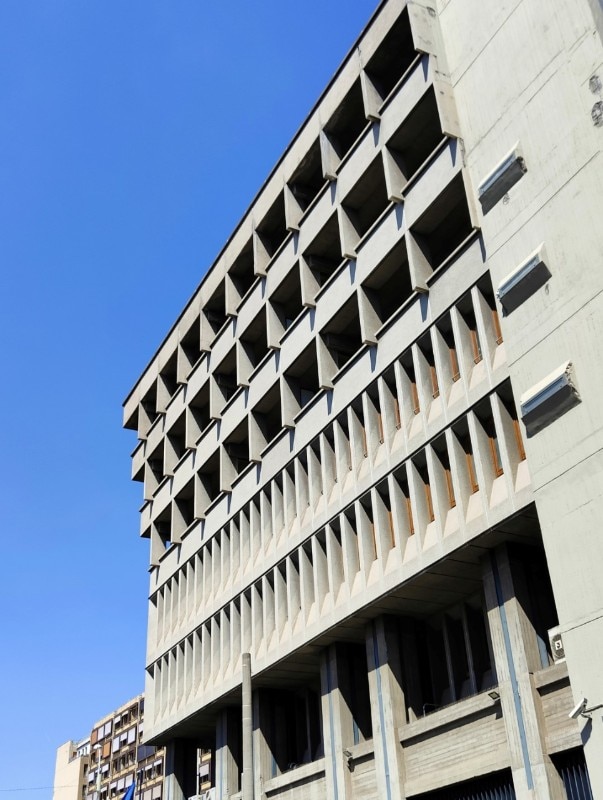
Bank of Italy, Catania 1970
The building is characterised by a volume with a strong monumental impact, symbolising the institutional character of the construction The front is made entirely of concrete and is animated on the various levels in a dramatic play of light and shadow, through the tight rhythm of the exposed structure of concrete pillars and beams: expanded on the first two levels, where cyclopean pillars mark out the portico; tight on the next two floors; marked by projections and recesses on the upper levels.
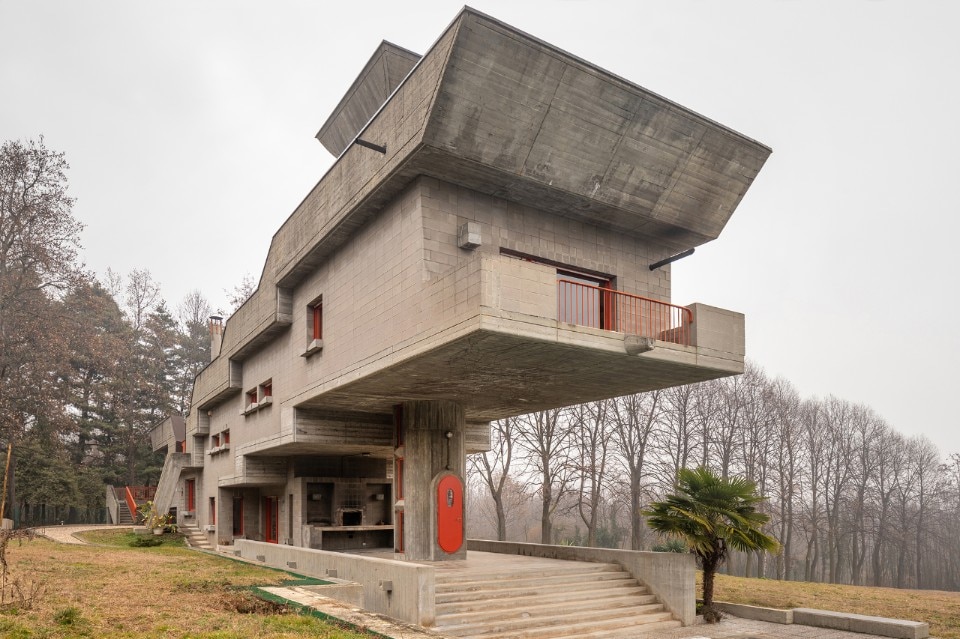
Carlo Graffi, Sergio Musmeci, Villa Gontero, Cumiana, Turin 1971
The house for a Piedmontese cement entrepreneur is a passionate homage to concrete, cast in wooden formwork in beams and slabs and used in Vibramac cement blocks in the shells. The stepped progression of the volume, supported in the central part by a circular reinforced concrete structure enclosing an iron spiral staircase, creates a playful contrast between the gravity of the masses and their casual detachment from the ground. The brightly coloured windows and doorframes cast lively brushstrokes on the rough, grey elevations.
Photo by Roberto Conte
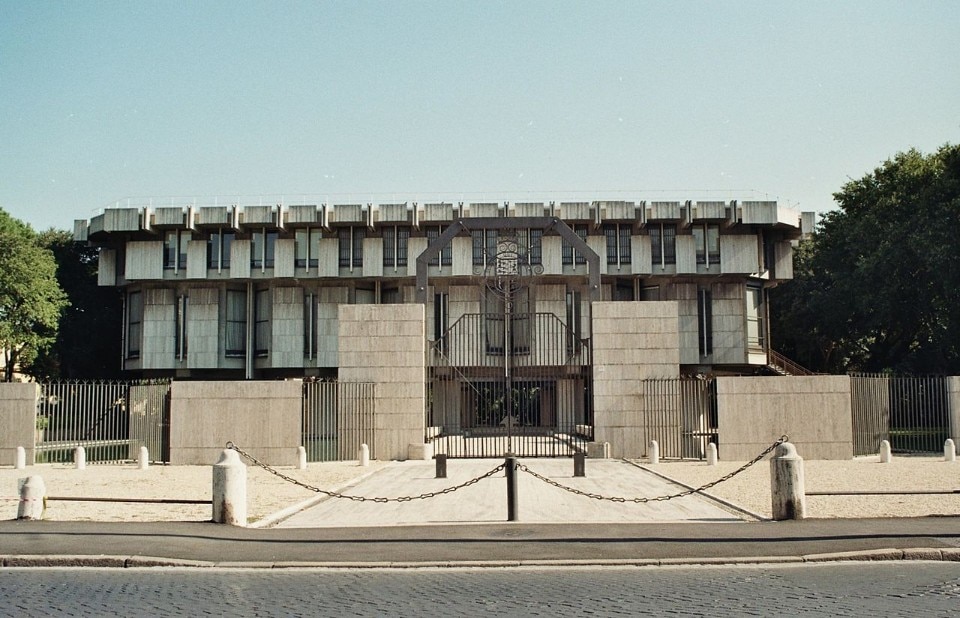
Sir Basil Spence, British Embassy Headquarters, Rome 1971
The building reconciles the designer's Anglo-Saxon brutalism with the historical context of Michelangelo's Porta Pia: the complex is characterised by reinforced concrete volumes clad with travertine panels that seek a dialogue with the colour scheme of the Aurelian walls and alternate with glass surfaces with dark bronze aluminium frames.
Photo by blackcat on wikipedia
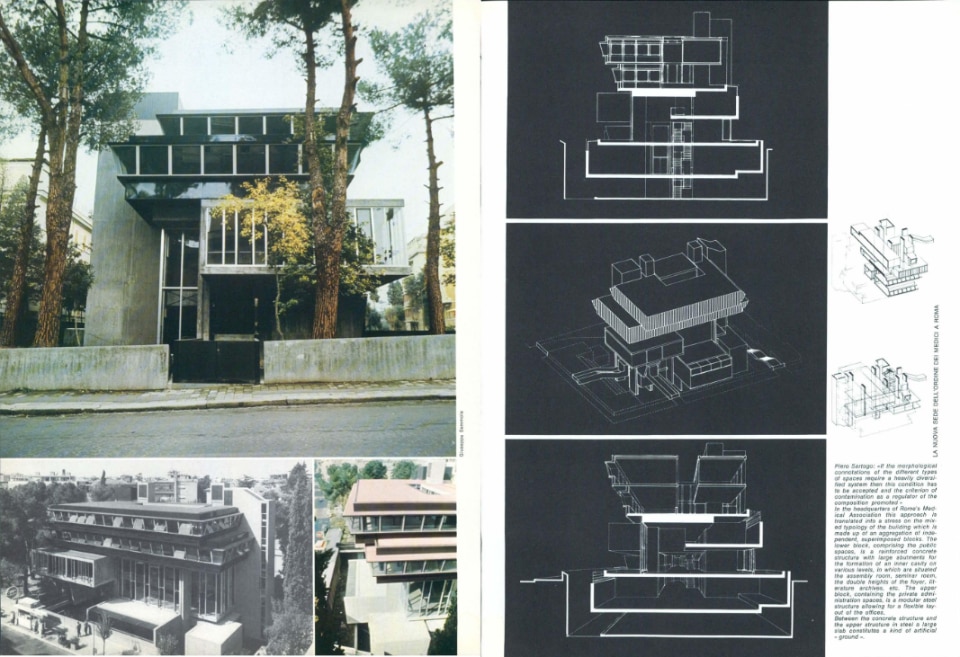
Piero Sartogo, Headquarters of the Ordine dei Medici in Via Giovanni Battista de Rossi, Rome 1972
The building stands out with its provocative and disruptive character in the Nomentano neighbourhood, contrasting with the composed uniformity of the surrounding twentieth-century villas and buildings. The building, characterised by a sequence of overlapping and projecting volumes, evokes the image of a tree spreading its branches into the sky. On the outside, the structure reveals the internal functional division: the cubic basement with two underground levels, visible from the street, with the auditorium and library, the garage, the archives and the printing shop; the ground floor with the entrance hall and the large hall, recognisable by the full-height glazing on two floors; the first floor with the meeting room, cantilevered from the entrance; the two upper floors, housing offices, marked by a continuous metal strip that emphasises the change of function.
Domus 521, April 1973
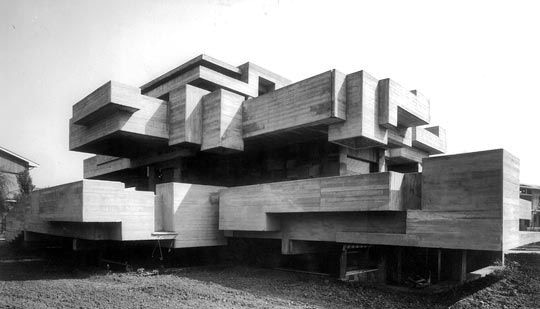
Saverio Busiri Vici, Villa Ronconi, Rome 1973
The building is a manifesto of the purest Brutalism, recognizable in the virtuosic and plastic use of concrete, in the rough surfaces marked by the wooden formwork and in the dramatic and vibrant articulation of the structural masses, in a tight dialectic between light and dark. Now overwhelmingly transfigured in spirit, the memory of the original architecture remains and, with it, the nostalgia for a design vision that knew how to look to the essence without betraying architectural quality and refinement.
Courtesy Saverio Busiri Vici Architetto
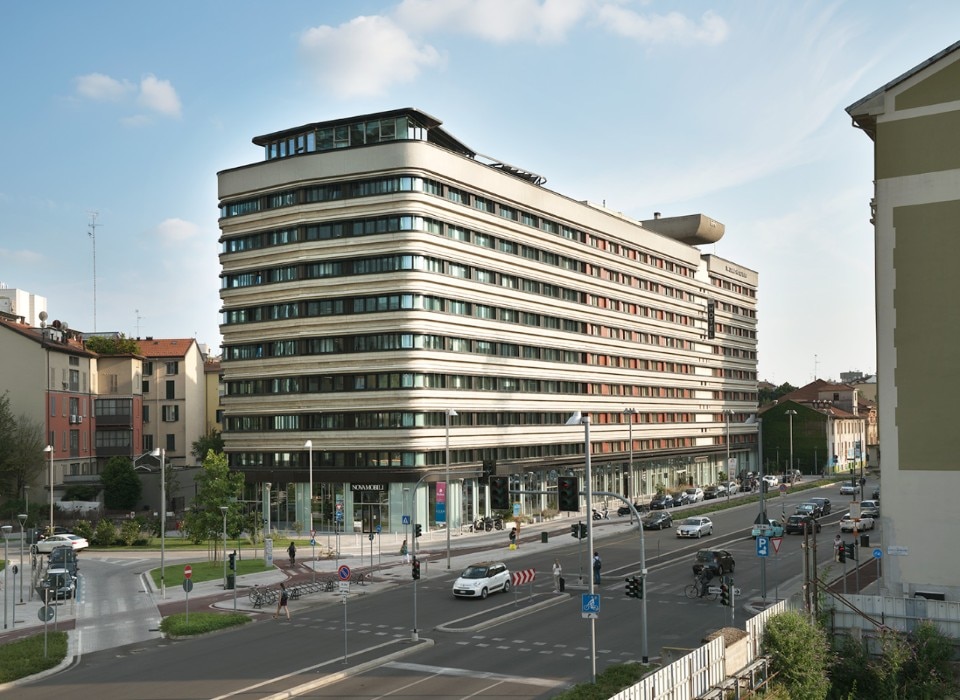
Marco Zanuso and Pietro Crescini, Residence Porta Nuova (Gioiaotto), Milan 1973
The multifunction complex originally named Residence Porta Nuova is a representative sign of the architectural activity of the 1970s in Milan and strongly established in the city's historical memory. The reinforced concrete structure is marked by a pronounced horizontal scanning where precast concrete stringcourses delimit continuous steel and glass curtain walls. Park associati studio recently carried out a retrofitting project that interpreted the original language with philological correctness, without sacrificing meticulous attention to contemporary detail. Gioiaotto was the first LEED Platinum-certified building in Milan.
Photo by Andrea Martiradonna
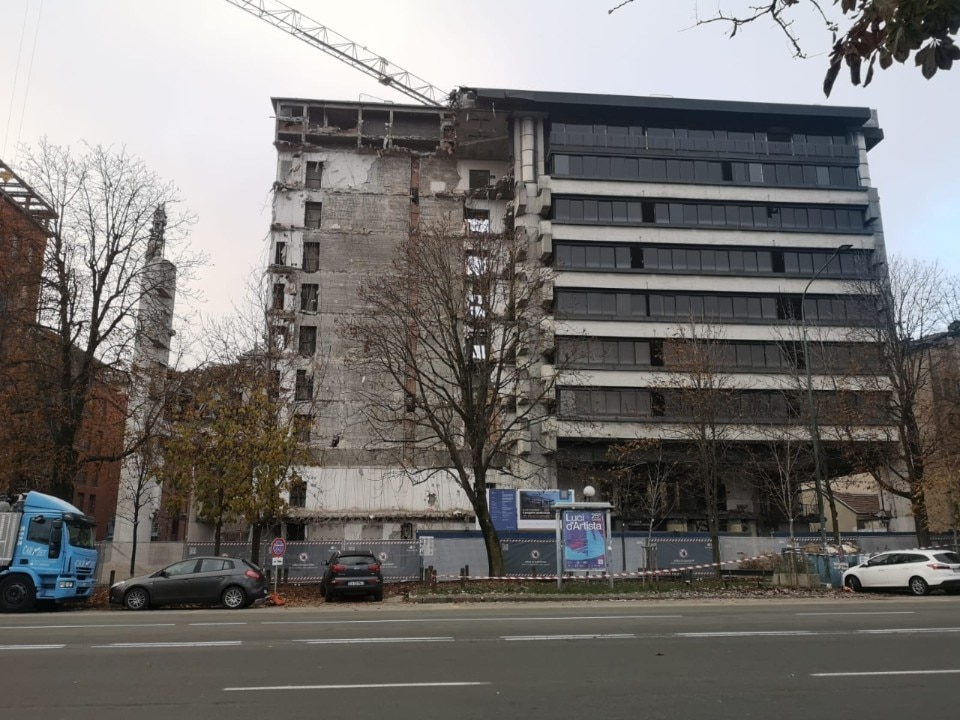
Amedeo Albertini, Congress Centre Piedmont Region, Turin 1973
The Regional government congress center, formerly Federagrario e centro incontri CRT, was an imposing 8-storey building intended for offices and congress hall, composed of two symmetrical blocks with a tripartite front: a transparent basement slightly set back from the façade, a vertical development of the front designed by the contrast between the concrete stringcourses and the ribbon windows, and a glazed, set-back top. The conspicuous reinforced concrete structure with gigantic beams supported by cylindrical pillars is reminiscent of some of Kenzo Tange's renowned megastructures. In 2021 it was sold to a group of private investors and today it has been demolished to leave stage to a new building.
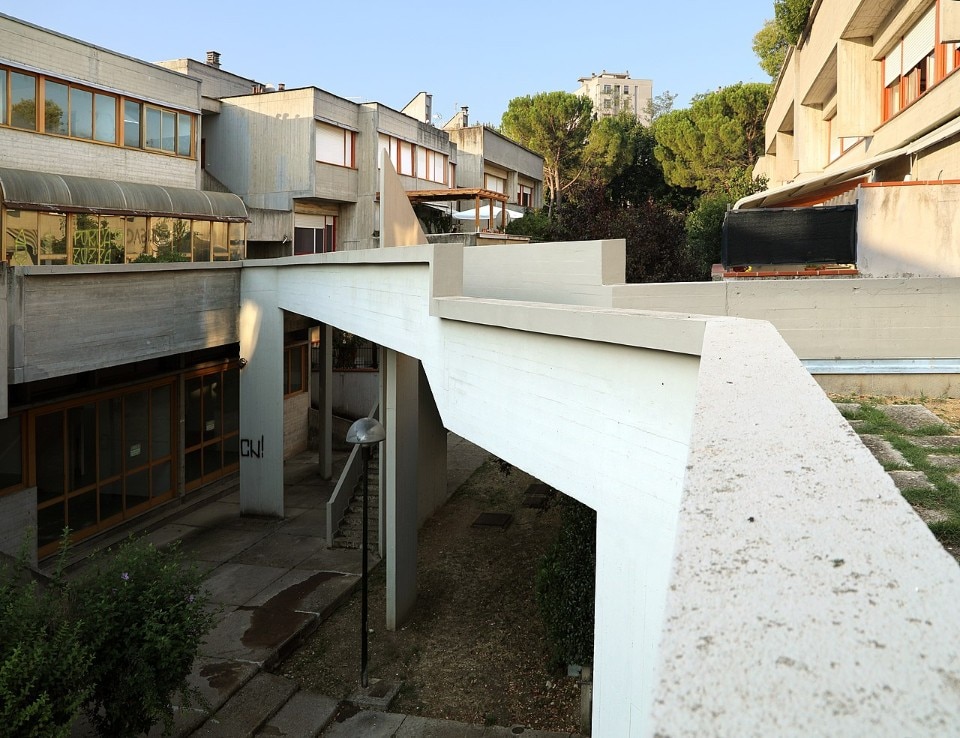
Giancarlo De Carlo, Matteotti District, Terni 1969 - 1975
The district, commissioned by the Terni Acciaierie company to replace the previous workers' village in order to increase the density of housing in the area, and only partially realized, is composed of four three-storey concrete buildings, with articulated stepped volumes housing 240 apartments, common terraces and roof gardens. The intervention has been the subject of a historically relevant participatory design process that involved designers, developers and residents, called to express their voice, including the need for public and private green spaces, places for social life and separation between vehicle and pedestrian flows.
Photo by Sailko from wikimedia commons
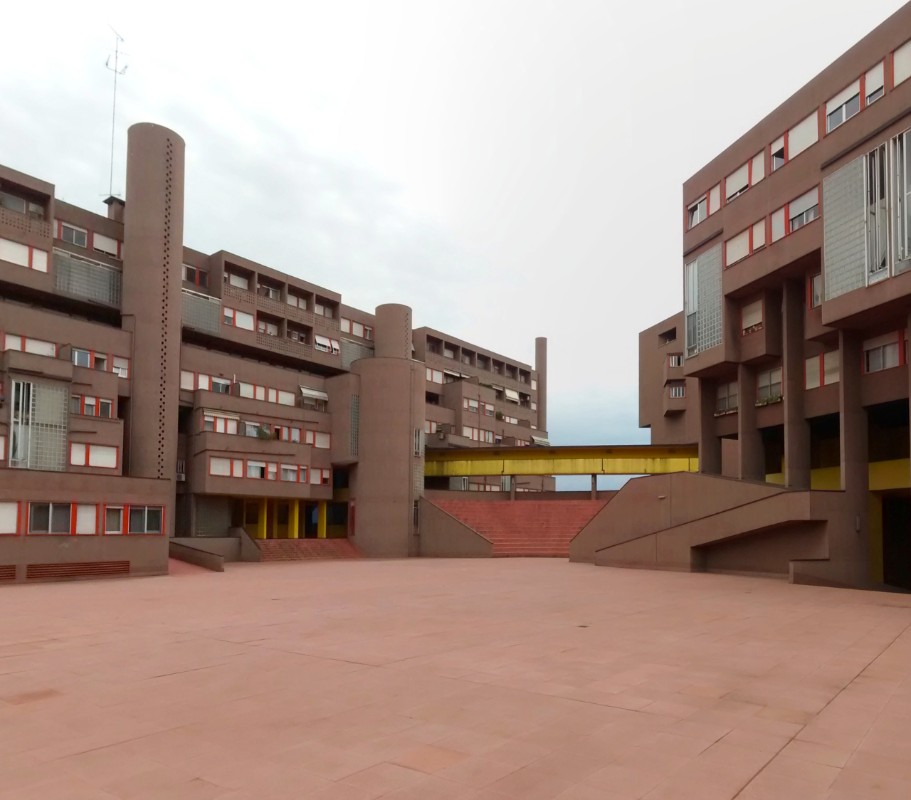
Carlo Aymonino, Aldo Rossi, Monte Armiata, Milan, 1967-1974
The "red dinosaur", so defined for the cyclopean structure, the unusual shape and the color of the facades, is a residential complex in the Gallaratese district conceived as a utopian micro-city idialoguing with Le Corbusier's Unité d'Habitation in Marseilles. The work includes five buildings of different heights grouped around central common spaces of aggregation (an amphitheater and two smaller squares) and numerous pedestrian paths that highlight the search for a dialectical relationship between living space and public space.
Photo by Gunnar Klack on wikipedia
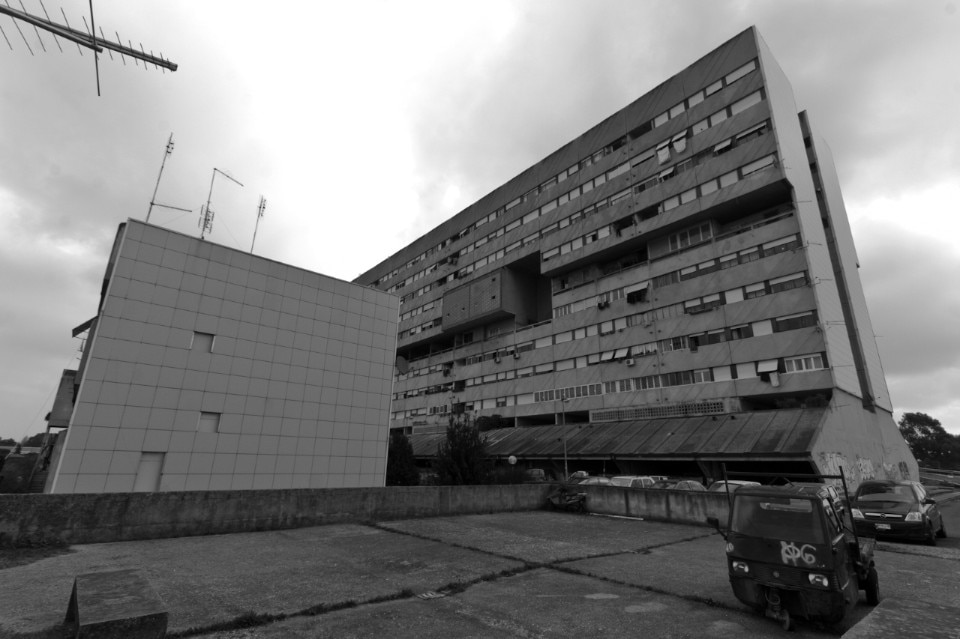
Mario Forentino (design team leader), Corviale, Rome, 1975 - 1984
Corviale is the neighborhood-symbol of the degradation of the capital's suburbs. The complex, extending its cyclopic dimensions to a territorial scale (it is called "il Serpentone", “The Snake”), hosts about 4500 inhabitants and is composed of three buildings: the monumental main slab – a single 986-meter-long body on nine floors – a second lower volume, parallel to the first, and a third body rotated 45°. Franco Purini said that "Fiorentino had a conception of living as a heroic movement and that he wanted his mammoth housing machine to be a kind of community that would regulate itself by making collective interests prevail over individual ones". Unfortunately, this idealistic vision has not been supported by the facts but Corviale – despite all social problems still existing – is still a place of life and an interesting case study not only in architectural but also socio-economical terms.
Photo by Umberto Rotundo from wikipedia

Studio Celli-Tognon, residential housing complex in Rozzol Melara (Il Quadrilatero), Trieste 1982
With its cyclopean dimensions, the complex in Rozzol Melara strongly characterises the urban landscape of the city. Conceived as a semi-independent settlement system equipped with all basic services and infrastructures, rather than as a simple residential building, the project consists of two L-shaped bodies, one twice as tall as the other, grouped around a central courtyard and connected by a system of covered walkways and collective services. The building, made entirely of exposed reinforced concrete, appears compact and unified by a certain monumentality, emphasised by the rhythm of the macroscopic pillars with a 15-metre pitch that define overscaled arcades.
Photo by Dage - Looking for Europe on CreativeCommons
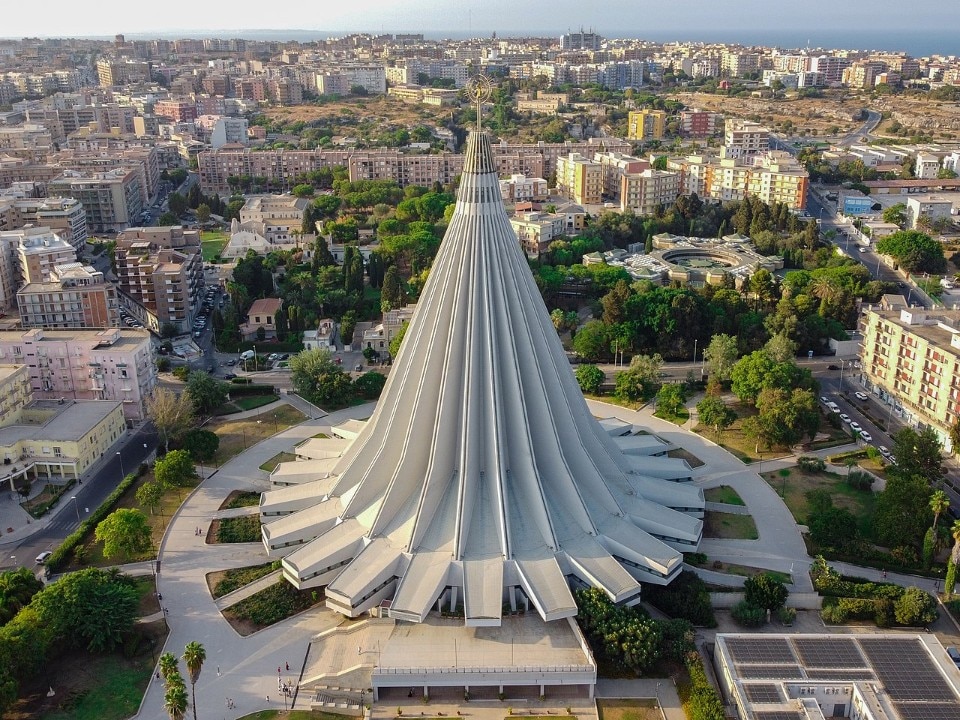
Michel Andrault, Pierre Parat, Madonna delle Lacrime Basilica and Sanctuary, Syracuse, Sicily 1994
The Basilica and Sanctuary of Madonna delle Lacrime (the Virgin of Tears), considered to be the largest pilgrimage church in Sicily, is the result of a design competition launched in 1957, intending to represent the importance for devotees of a miraculous event that happened four years before. The sculptural complex with a circular layout is divided into two levels – the basilica at the top and the crypt below – and is crowned by a conical concrete roof, 103 m high, surmounted by a bronze statue of the Virgin Mary.
Photo by Simone Tinella on wikipedia
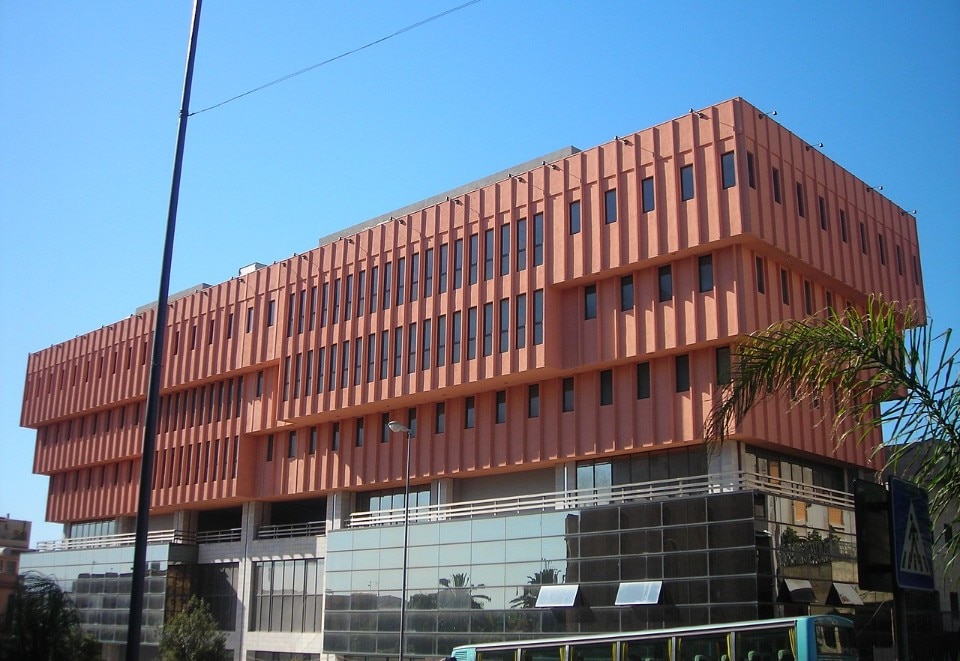
Aldo D'Amore, Fabio Basile, Palace of Culture, Messina 1977-2009
The complex is characterised by a salmon-pink concrete body in the shape of a truncated, inverted pyramid with a rectangular base, housing the municipal offices, placed on top of a glazed volume that includes exhibition rooms and a theatre.
Photo by kasper2006 on wikipedia

Vittoriano Viganò, Marchiondi Institute, Baggio, Milan 1957
The complex, considered a masterpiece of Brutalist architecture at an international level and today in a state of decay, is composed of four main buildings oriented along an east-west axis and immersed in a park, which house the different functional areas: offices and management, a boarding school for students, the teachers' building and a school. The plan-volume layout is characterised by a rigorous modular scansion, emphasised by the exposed concrete structure with constant pitch. Particularly innovative is the choice made by the architect, in agreement with the Institute's educators, to abolish the traditional dormitories in favour of duplex accommodation.
Photo by Alberto Trentanni from Flickr

Antonio Guacci, Marian Sanctuary of Monte Grisa, Trieste 1965
Situated at an altitude of 330 m on Monte Grisa, the sanctuary is nicknamed the 'cheese' by the people of Trieste due to its triangular shape. The complex, from which there is a spectacular view of the city, is characterised by two overlapping churches and an imposing structure in exposed reinforced concrete.
Foto di Andreas Manessinger da CreativeCommons

Enrico Castiglioni and Carlo Fontana, Cipriano Facchinetti State Institute of Higher Education, Castellanza, Varese 1965
"This building introduced into school construction - perhaps for the first time in Italy - the identification of architecture with the structure, in this case very complex in the vaulting system": this is how Castiglioni described his work, considered by Pevsner to be one of the best examples of Brutalist architecture and, according to the critics, not without references to the expressionism of Poelzig and Mendelsohn (from the dramatisation of forms to the design of the openings). The complex consists of two in-line volumes - one of which is arched in plan and façade - of three storeys above ground, arranged on a block marked by a sequence of curvilinear prefabricated reinforced concrete sheds containing the common functions. The façade is punctuated by shaped partitions and iron-window panes that curve plastically towards the top.
Photo by Roberto Conte

Arrigo Arrighetti, S. Giovanni Bono Church, Milan 1968
The church fits into its context by openly detaching itself from the surrounding residential buildings, thanks to its marked upward movement. The front, doubled in the image reflected by the pool in front of it, is formed by a single elongated concrete triangle pierced by coloured windows, and is reminiscent on one side of Gothic spires and on the other suggests the idea of a tent pitched in the neighbourhood. The structure consists of reinforced concrete walls with steel beams supporting a porcelain aluminium sheet roof. Next to the church there are the parish buildings and clergy residences, distributed in a semicircle around a garden.
Photo by CesareFerrari on AdobeStock

Giuseppe Perugini, Uga De Plaisant and Raynaldo Perugini, Experimental House, Fregene, Rome 1969
Reducing the so-called Casa Albero to a simple summer residence would be reductive, because the work designed by a family of architects (father, mother and son) for themselves is not just a beach house but an example of experimentation with a new architectural language in the field of housing. The work was conceived “in progress” in order to be continuously transformed, while maintaining a constant dialogue with nature. The complex consists of three buildings of different types: the house, with a repeatable modular structure made of raw concrete, glass and red steel; the ball, a 5-metre diameter sphere conceived as an external appendage to the house; the three cubes, cubic spatial modules interspersed with semi-modules containing the services, bedroom, living room and kitchen, in less than 40 square metres.
Photo by fotographicrome from AdobeStock

Francesco Berarducci, villa in via Colli della Farnesina 144, Rome 1969
The building overlooking a hill in the Monte Mario urban park is characterised by an exposed concrete structural grid composed of C-shaped pillars and beams defining the general layout and the proportional ratio of elevations. Opaque envelope portions establish a dialogue with the glazing on the main façades. The work was a backdrop for some scenes of Elio Petri's film "Indagine su un cittadino al di sopra di ogni sospetto".
Photo by CABW on wikipedia

Vinicio Vecchi, R-North Complex, Modena 1970
Located in the area north of the railway that since the war has become the site of expansion of industrial and commercial activities of the city, the multipurpose complex was created to accommodate, in addition to services and commercial activities, mini-apartments for workers of the Livestock Market. The monolithic building, characterized by a marked horizontality accentuated by the alternation of reinforced concrete floors with those of dark brick plaster, soon became a "black hole" of degradation and crime. Starting from the beginning of 2000, the complex has been the object of a regeneration intervention aimed not only to heal the physical degradation but also to face the deep-rooted social conflicts of the area: the project has provided for the dimensional revision of the lodgings to guarantee a better usability, the settlement of cultural and educational associations, the requalification of the external public spaces.
Photo by Quel palazzo che vedi dal ponte, Fotografo 1, Collettivo MaBo

Bank of Italy, Catania 1970
The building is characterised by a volume with a strong monumental impact, symbolising the institutional character of the construction The front is made entirely of concrete and is animated on the various levels in a dramatic play of light and shadow, through the tight rhythm of the exposed structure of concrete pillars and beams: expanded on the first two levels, where cyclopean pillars mark out the portico; tight on the next two floors; marked by projections and recesses on the upper levels.

Carlo Graffi, Sergio Musmeci, Villa Gontero, Cumiana, Turin 1971
The house for a Piedmontese cement entrepreneur is a passionate homage to concrete, cast in wooden formwork in beams and slabs and used in Vibramac cement blocks in the shells. The stepped progression of the volume, supported in the central part by a circular reinforced concrete structure enclosing an iron spiral staircase, creates a playful contrast between the gravity of the masses and their casual detachment from the ground. The brightly coloured windows and doorframes cast lively brushstrokes on the rough, grey elevations.
Photo by Roberto Conte

Sir Basil Spence, British Embassy Headquarters, Rome 1971
The building reconciles the designer's Anglo-Saxon brutalism with the historical context of Michelangelo's Porta Pia: the complex is characterised by reinforced concrete volumes clad with travertine panels that seek a dialogue with the colour scheme of the Aurelian walls and alternate with glass surfaces with dark bronze aluminium frames.
Photo by blackcat on wikipedia

Piero Sartogo, Headquarters of the Ordine dei Medici in Via Giovanni Battista de Rossi, Rome 1972
The building stands out with its provocative and disruptive character in the Nomentano neighbourhood, contrasting with the composed uniformity of the surrounding twentieth-century villas and buildings. The building, characterised by a sequence of overlapping and projecting volumes, evokes the image of a tree spreading its branches into the sky. On the outside, the structure reveals the internal functional division: the cubic basement with two underground levels, visible from the street, with the auditorium and library, the garage, the archives and the printing shop; the ground floor with the entrance hall and the large hall, recognisable by the full-height glazing on two floors; the first floor with the meeting room, cantilevered from the entrance; the two upper floors, housing offices, marked by a continuous metal strip that emphasises the change of function.
Domus 521, April 1973

Saverio Busiri Vici, Villa Ronconi, Rome 1973
The building is a manifesto of the purest Brutalism, recognizable in the virtuosic and plastic use of concrete, in the rough surfaces marked by the wooden formwork and in the dramatic and vibrant articulation of the structural masses, in a tight dialectic between light and dark. Now overwhelmingly transfigured in spirit, the memory of the original architecture remains and, with it, the nostalgia for a design vision that knew how to look to the essence without betraying architectural quality and refinement.
Courtesy Saverio Busiri Vici Architetto

Marco Zanuso and Pietro Crescini, Residence Porta Nuova (Gioiaotto), Milan 1973
The multifunction complex originally named Residence Porta Nuova is a representative sign of the architectural activity of the 1970s in Milan and strongly established in the city's historical memory. The reinforced concrete structure is marked by a pronounced horizontal scanning where precast concrete stringcourses delimit continuous steel and glass curtain walls. Park associati studio recently carried out a retrofitting project that interpreted the original language with philological correctness, without sacrificing meticulous attention to contemporary detail. Gioiaotto was the first LEED Platinum-certified building in Milan.
Photo by Andrea Martiradonna

Amedeo Albertini, Congress Centre Piedmont Region, Turin 1973
The Regional government congress center, formerly Federagrario e centro incontri CRT, was an imposing 8-storey building intended for offices and congress hall, composed of two symmetrical blocks with a tripartite front: a transparent basement slightly set back from the façade, a vertical development of the front designed by the contrast between the concrete stringcourses and the ribbon windows, and a glazed, set-back top. The conspicuous reinforced concrete structure with gigantic beams supported by cylindrical pillars is reminiscent of some of Kenzo Tange's renowned megastructures. In 2021 it was sold to a group of private investors and today it has been demolished to leave stage to a new building.

Giancarlo De Carlo, Matteotti District, Terni 1969 - 1975
The district, commissioned by the Terni Acciaierie company to replace the previous workers' village in order to increase the density of housing in the area, and only partially realized, is composed of four three-storey concrete buildings, with articulated stepped volumes housing 240 apartments, common terraces and roof gardens. The intervention has been the subject of a historically relevant participatory design process that involved designers, developers and residents, called to express their voice, including the need for public and private green spaces, places for social life and separation between vehicle and pedestrian flows.
Photo by Sailko from wikimedia commons

Carlo Aymonino, Aldo Rossi, Monte Armiata, Milan, 1967-1974
The "red dinosaur", so defined for the cyclopean structure, the unusual shape and the color of the facades, is a residential complex in the Gallaratese district conceived as a utopian micro-city idialoguing with Le Corbusier's Unité d'Habitation in Marseilles. The work includes five buildings of different heights grouped around central common spaces of aggregation (an amphitheater and two smaller squares) and numerous pedestrian paths that highlight the search for a dialectical relationship between living space and public space.
Photo by Gunnar Klack on wikipedia

Mario Forentino (design team leader), Corviale, Rome, 1975 - 1984
Corviale is the neighborhood-symbol of the degradation of the capital's suburbs. The complex, extending its cyclopic dimensions to a territorial scale (it is called "il Serpentone", “The Snake”), hosts about 4500 inhabitants and is composed of three buildings: the monumental main slab – a single 986-meter-long body on nine floors – a second lower volume, parallel to the first, and a third body rotated 45°. Franco Purini said that "Fiorentino had a conception of living as a heroic movement and that he wanted his mammoth housing machine to be a kind of community that would regulate itself by making collective interests prevail over individual ones". Unfortunately, this idealistic vision has not been supported by the facts but Corviale – despite all social problems still existing – is still a place of life and an interesting case study not only in architectural but also socio-economical terms.
Photo by Umberto Rotundo from wikipedia

Studio Celli-Tognon, residential housing complex in Rozzol Melara (Il Quadrilatero), Trieste 1982
With its cyclopean dimensions, the complex in Rozzol Melara strongly characterises the urban landscape of the city. Conceived as a semi-independent settlement system equipped with all basic services and infrastructures, rather than as a simple residential building, the project consists of two L-shaped bodies, one twice as tall as the other, grouped around a central courtyard and connected by a system of covered walkways and collective services. The building, made entirely of exposed reinforced concrete, appears compact and unified by a certain monumentality, emphasised by the rhythm of the macroscopic pillars with a 15-metre pitch that define overscaled arcades.
Photo by Dage - Looking for Europe on CreativeCommons

Michel Andrault, Pierre Parat, Madonna delle Lacrime Basilica and Sanctuary, Syracuse, Sicily 1994
The Basilica and Sanctuary of Madonna delle Lacrime (the Virgin of Tears), considered to be the largest pilgrimage church in Sicily, is the result of a design competition launched in 1957, intending to represent the importance for devotees of a miraculous event that happened four years before. The sculptural complex with a circular layout is divided into two levels – the basilica at the top and the crypt below – and is crowned by a conical concrete roof, 103 m high, surmounted by a bronze statue of the Virgin Mary.
Photo by Simone Tinella on wikipedia

Aldo D'Amore, Fabio Basile, Palace of Culture, Messina 1977-2009
The complex is characterised by a salmon-pink concrete body in the shape of a truncated, inverted pyramid with a rectangular base, housing the municipal offices, placed on top of a glazed volume that includes exhibition rooms and a theatre.
Photo by kasper2006 on wikipedia
As Domus has already recounted, Brutalism developed from the 1950s onward, a time when architectural theory was reformulating the lexicon of building to cope with the needs of a society wounded by war and ready to start again. The result is an architecture that seeks to free itself from the rigidities of the Modern Movement, stripped down to the bone and unashamedly anti-hedonistic, privileging ethics over aesthetics and characterised by a straightforward functionalism, hierarchical structure and plasticity of volumes. Read more
05
Abandoned architecture in Italy: 10 buildings now disused, but not to be forgotten
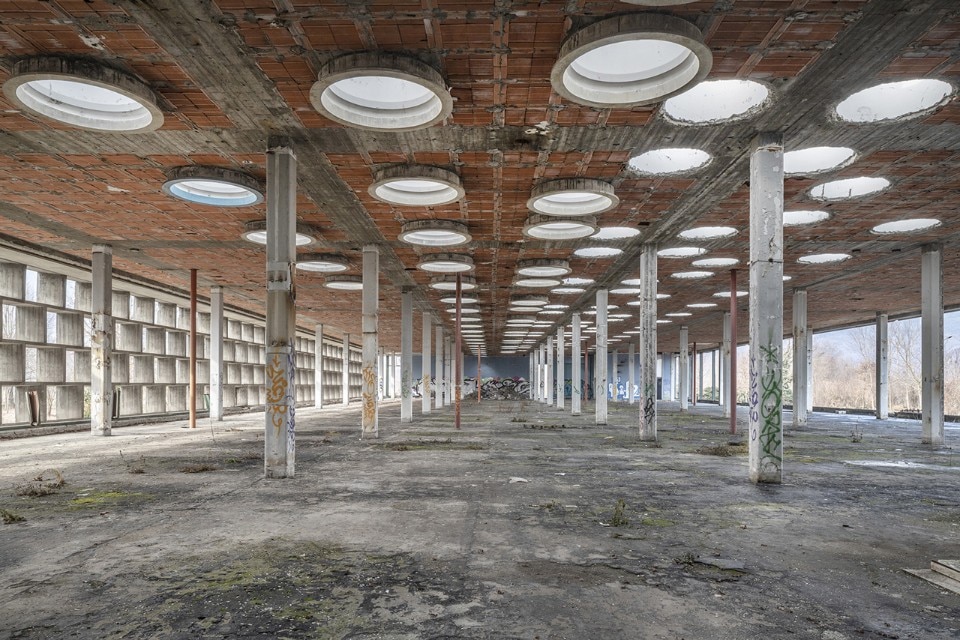
 View gallery
View gallery

Giuseppe Sommaruga, Grand Hotel Campo dei Fiori, Varese, Italy 1912
The feather in the cap of Varese's Belle Époque, the luxurious, late-liberty vacation complex has not withstood the changing times: from hotel, to hospital, then back to hotel again, it was closed in 1968. The gloomy and eerie atmosphere of the place, emphasised by the ravages of time, in 2016 prompted director Luca Guadagnino to set here his version of Dario Argento's famous “Suspiria”.
Photo Julius Barclay from Wikipedia

Giuseppe Sommaruga, Grand Hotel Campo dei Fiori, Varese, Italy 1912
Photo Julius Barclay from Wikipedia

Giuseppe Sommaruga, Grand Hotel Campo dei Fiori, Varese, Italy 1912
Photo Julius Barclay from Wikipedia
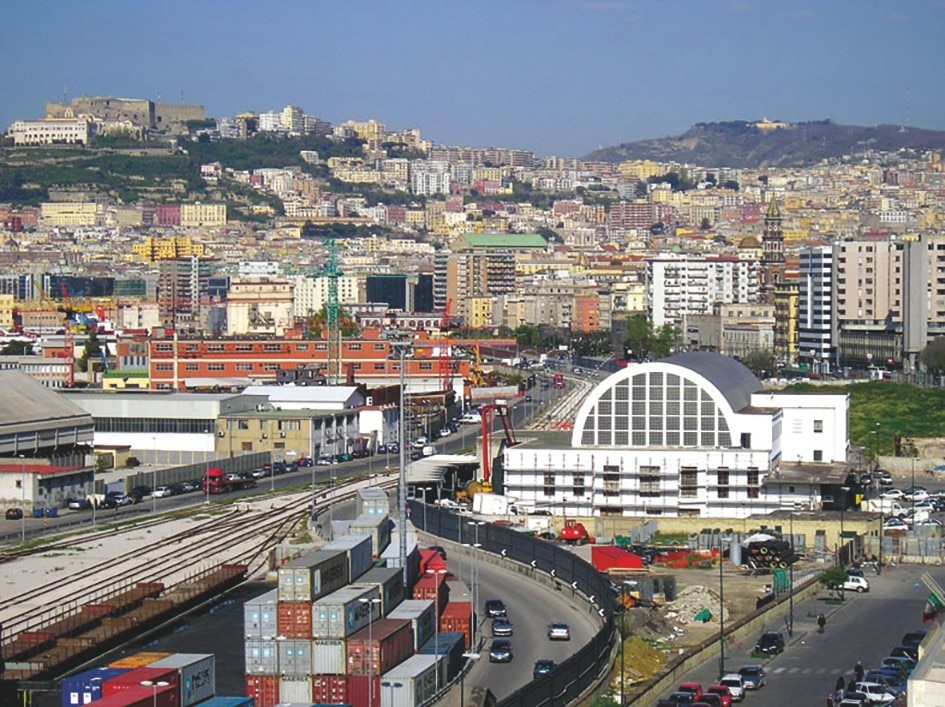
Luigi Cosenza, Mercato ittico, Naples, Italy 1935
The fish market in Naples is one of the major examples of the work of Luigi Cosenza, a leading figure in the Neapolitan architectural scene in the first half of the 1900s. Adhering to the principles of Rationalism, the first example in Naples, the covered market consists of a large main trading room and a series of ancillary trading spaces organized along the perimeter. The impressive barrel vault rests on iron reticular arches while the vertical heads of the building and its wide slits are closed by Saint-Gobain glass-cement, in one of the first applications in southern Italy. Although the market is restricted and subject to recovery projects, with reclamation works in progress, recent chronicles report illegal occupation acts.
Archivio Luigi Cosenza_Archivio di Stato di Napoli, Pizzofalcone
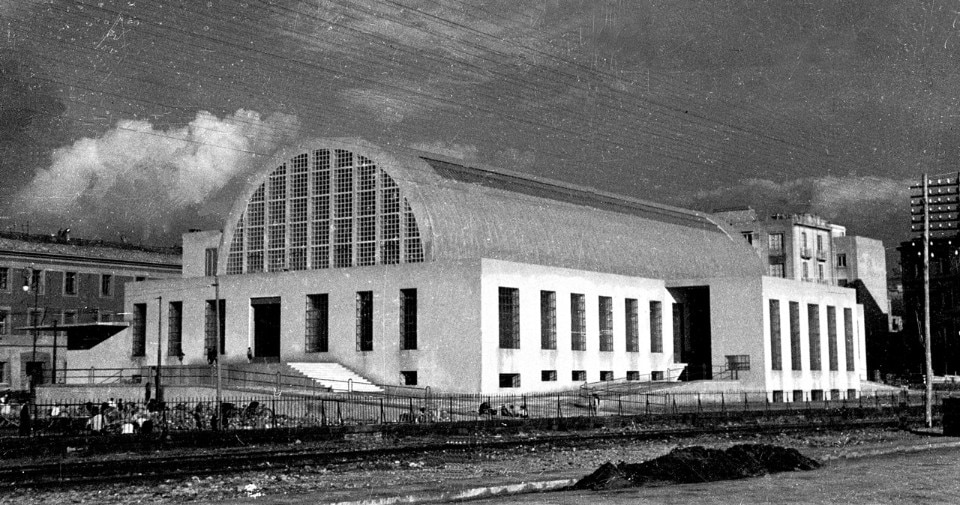
Luigi Cosenza, Mercato ittico, Naples, Italy 1935.
Archivio Luigi Cosenza_Archivio di Stato di Napoli, Pizzofalcone
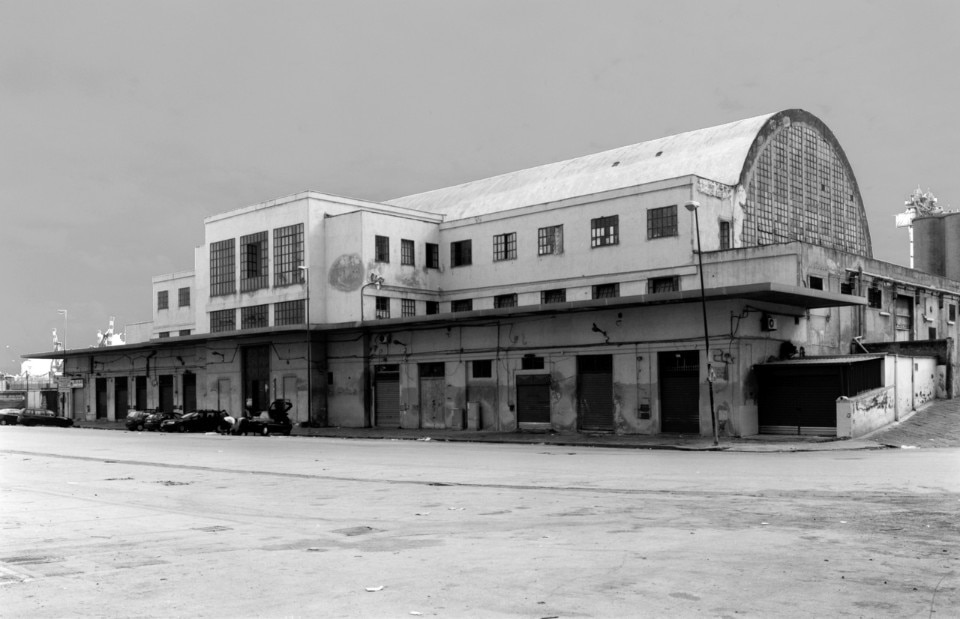
Luigi Cosenza, Mercato ittico, Naples, Italy 1935.
Archivio Luigi Cosenza_Archivio di Stato di Napoli, Pizzofalcone
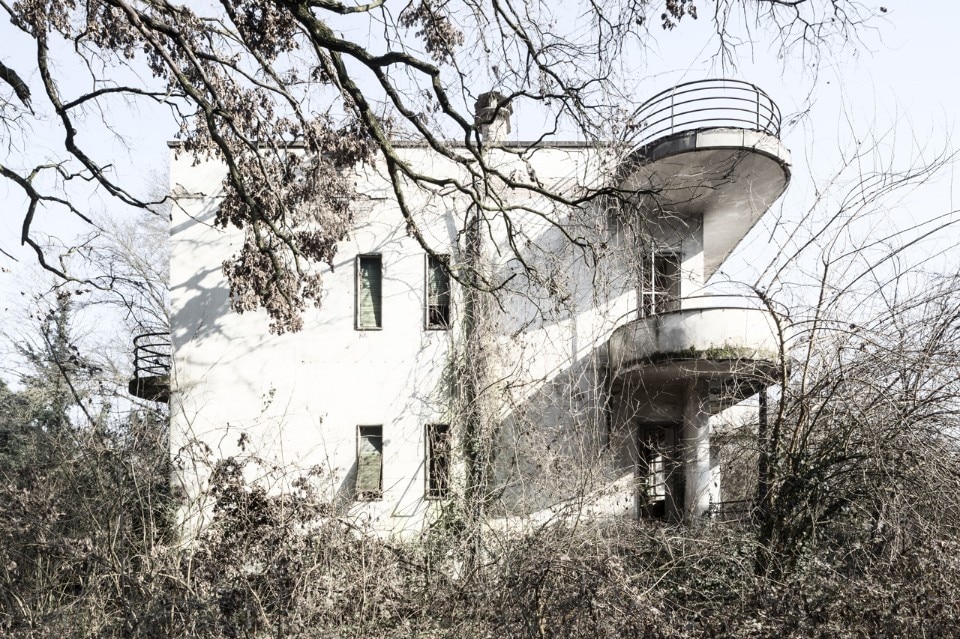
Renzo Zavanella, Villa dei direttori dello zuccherificio, Sermide (Mantua), Italy 1939
This work by Renzo Zavanella is a refined example of early Rationalism, expressed in the volumetric composition and the definition of the construction details. It was designed between 1931 and 1932 as a residence for the directors of an industrial complex and is characterized by some avant-garde solutions in relation to the typology of the interior spaces, such as the double-height living room and the arrangement of niches to house the built-in wardrobes, and to the technology used, like the insertion of an air gap between the two reinforced concrete walls that form the closures. Studies are still underway for the recovery of this precious architectural testimony.
Photo by Davide Galli Atelier
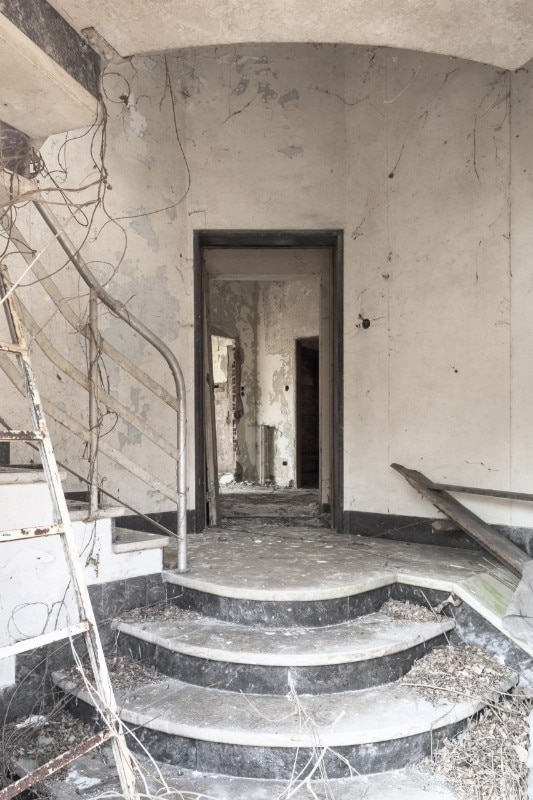
Renzo Zavanella, Villa dei direttori dello zuccherificio, Sermide (Mantua), Italy 1939
Photo by Davide Galli Atelier
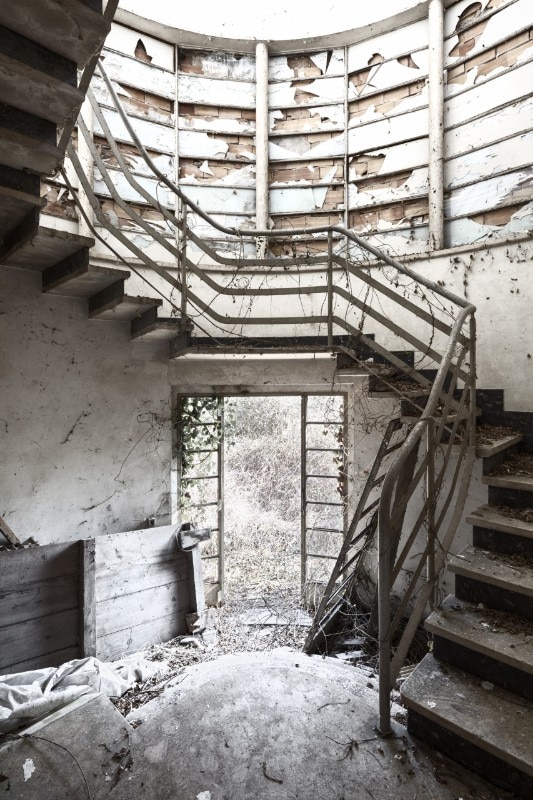
Renzo Zavanella, Villa dei direttori dello zuccherificio, Sermide (Mantua), Italy 1939
Photo by Davide Galli Atelier
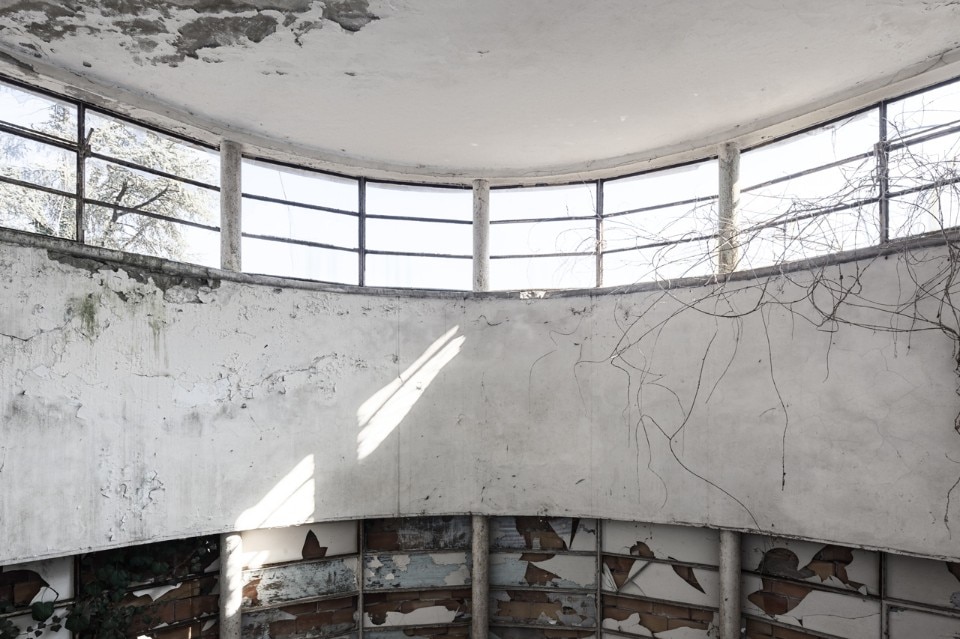
Renzo Zavanella, Villa dei direttori dello zuccherificio, Sermide (Mantua), Italy 1939
Photo by Davide Galli Atelier
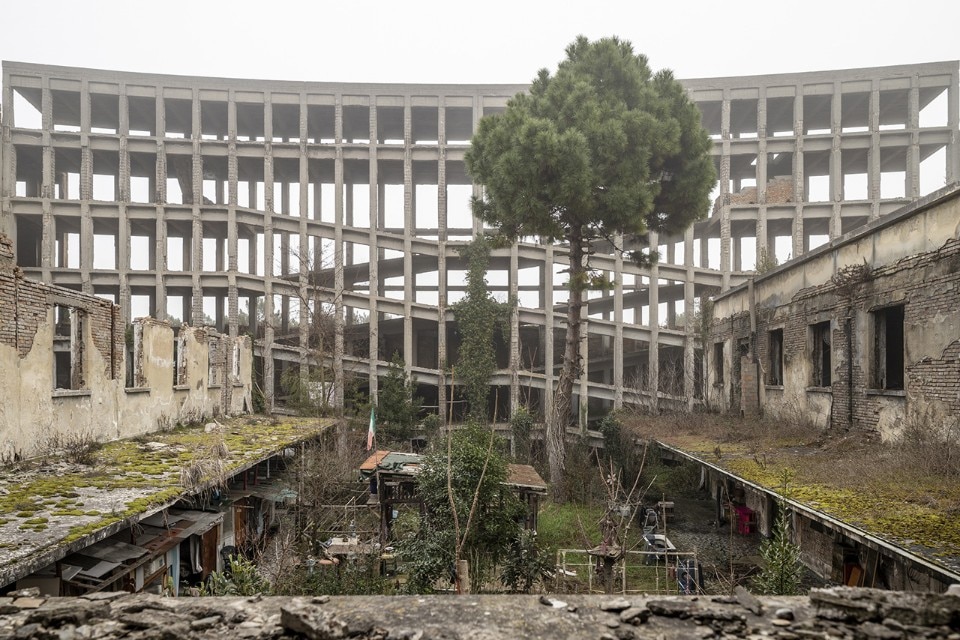
Mario Loreti, Colonia Varese, Cervia (Ravenna), Italy 1939
Inaugurated with the name of the hierarch Costanzo Ciano, this colony could accommodate up to 800 children. The complex is part of a green area of approximately 60,000 square meters with a planimetric scheme based on rigid symmetry. The central body was used for distribution, while the side pavilions were for dormitories and service spaces. During the war, the building was occupied by the Germans and later fell underused until it was definitively abandoned. Between the 70s and 80s Marcello Aliprandi and Pupi Avati used the Varese colony as a set for the films La ragazza di latta and Zeder.
Foto by Roberto Conte
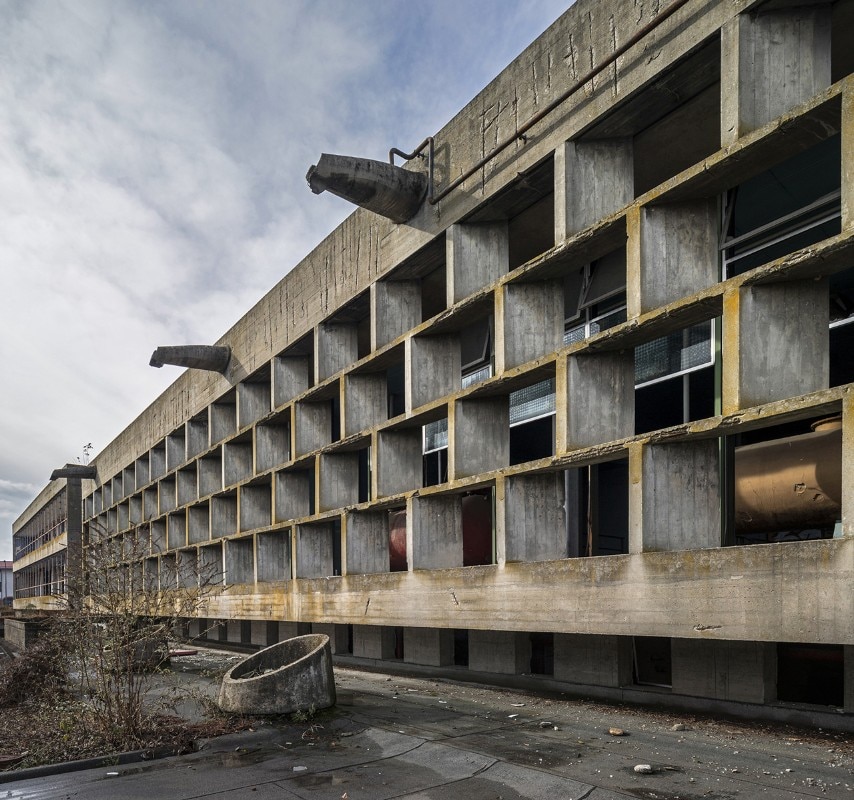
Alberto Galardi, Istituto Marxer, Loranzè (Torino), Italy 1962
The Marxer Institute is a rare example of brutalist architecture in Italy, commissioned by Adriano Olivetti to house production and research in the pharmacological field for the homonymous company. The complex is divided into two main volumes, which housed offices, research laboratories, and the production plant, and an existing building with the canteen and other functions. From the end of the seventies, the socio-economic transformations led to several changes of ownership and progressive underuse along with degradation processes fueled by the action of time and by acts of vandalism.
Photo by Roberto Conte
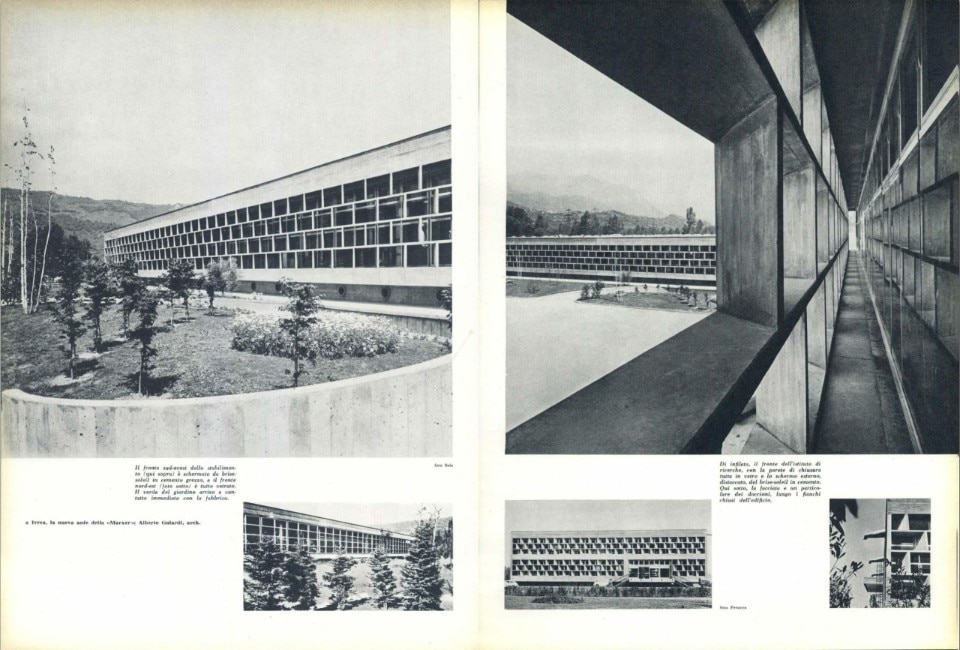
Alberto Galardi, Istituto Marxer, Loranzè (Torino), Italy 1962
Domus 394, September 1962
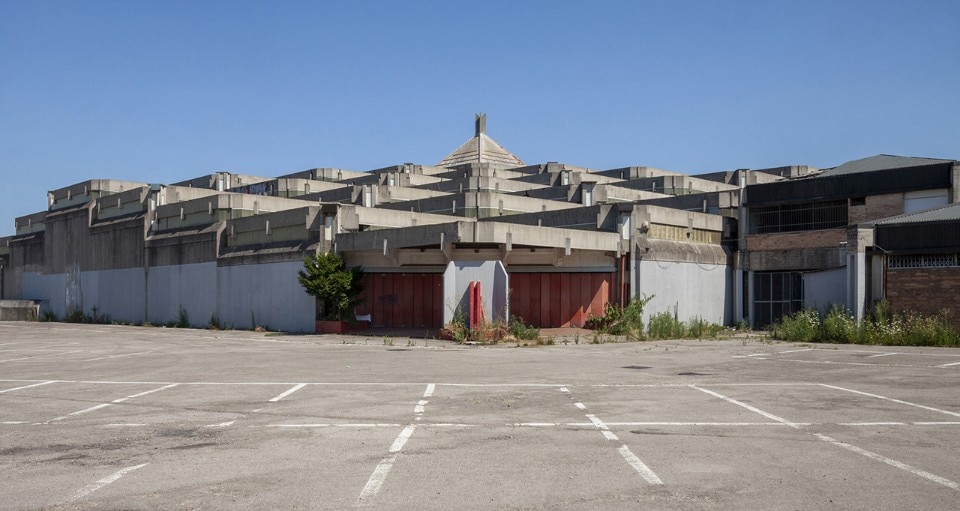
Giuseppe Davanzo, Foro Boario, Padova, Italy 1968
The Foro Boario was created to host livestock trading, exchange, and exhibition. The structural conception based on the iteration of a horizontal and vertical geometric module generates a large, bright, and airy covered space, whose architectural quality has earned various acknowledgments such as the In/Arch Award in 1969, the interest of the MoMA of New York, and a relatively premature monumental constraint as an element of active qualification and an episode of extremely high emergence in the surrounding urban environment, defined in a totally new way. Once the city's project to establish an international forum collapsed, this cathedral, as it was called by many, fell into disuse and is today at the center of interest of the Lille multinational Leroy Merlin.
Photo by Roberto Conte
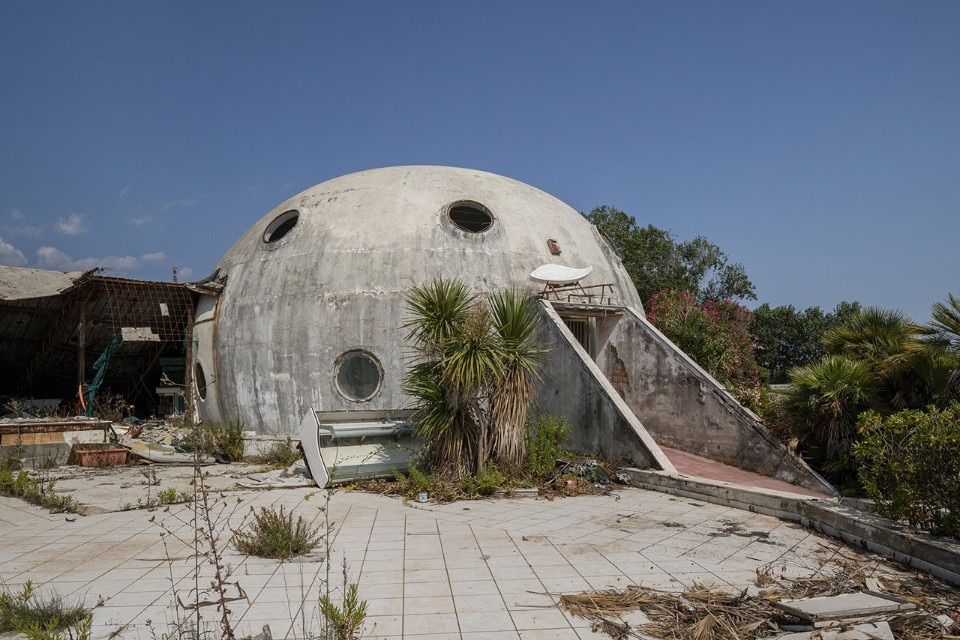
Giovanni Giannattasio Ufo Bar, Salerno, Italy, 1970s
The Ufo Bar was a small, today abandoned, nightclub on the coastal road out of Salerno, shortly after the Arechi stadium and near a service station. The building designed by Giovanni Giannattasio has the shape of a spherical cap pierced by small portholes. Two oblique walls mark the entrance and, once crossed the threshold, it seems to enter some Tatooine tavern from Star Wars. Theater of the Salerno nightlife until the end of the 1990s, the Ufo Bar has ceased activity since the authorities affixed the seals after some illegal activities were found upon inspections.
Photo by Roberto Conte
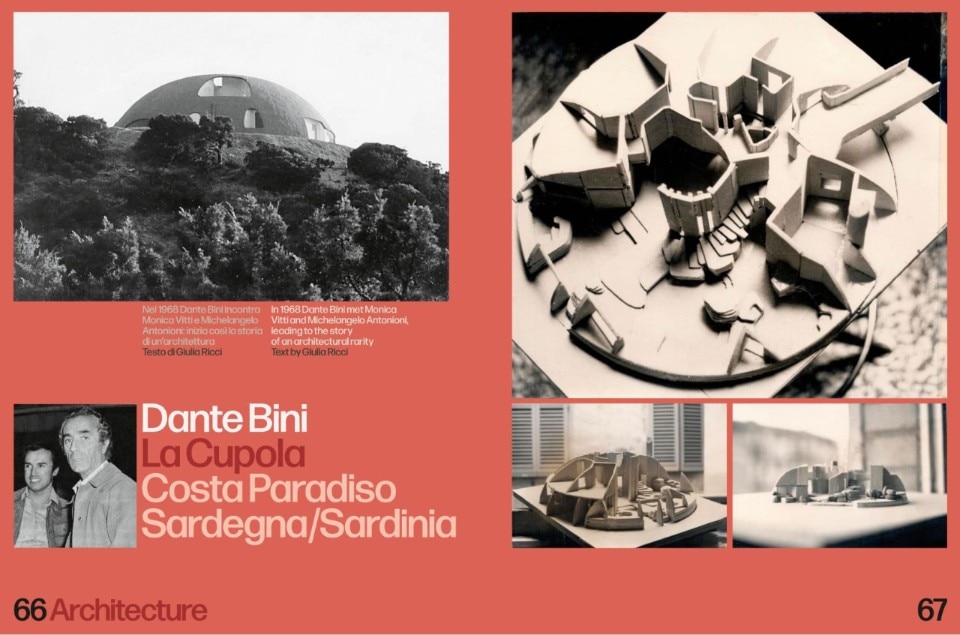
Dante Bini, La Cupola, Sassari, Italy 1970
The dream of a house by the sea on the shores of a wild coast and the meeting with a visionary architect led to the conception and construction of a futuristic building: a sphere in reinforced concrete inextricably integrated into the surrounding marine landscape. The Binishell patent convinces a couple, director Michelangelo Antonioni and the actress Monica Vitti, to rely on Dante Bini to realize their home in Sardinia. The house is built in a single casting of concrete using air pressure. The conclusion of the relationship between Antonioni and Vitti created the conditions for gradually abandoning the structure and the inevitable deterioration.
Domus 1026, July2018
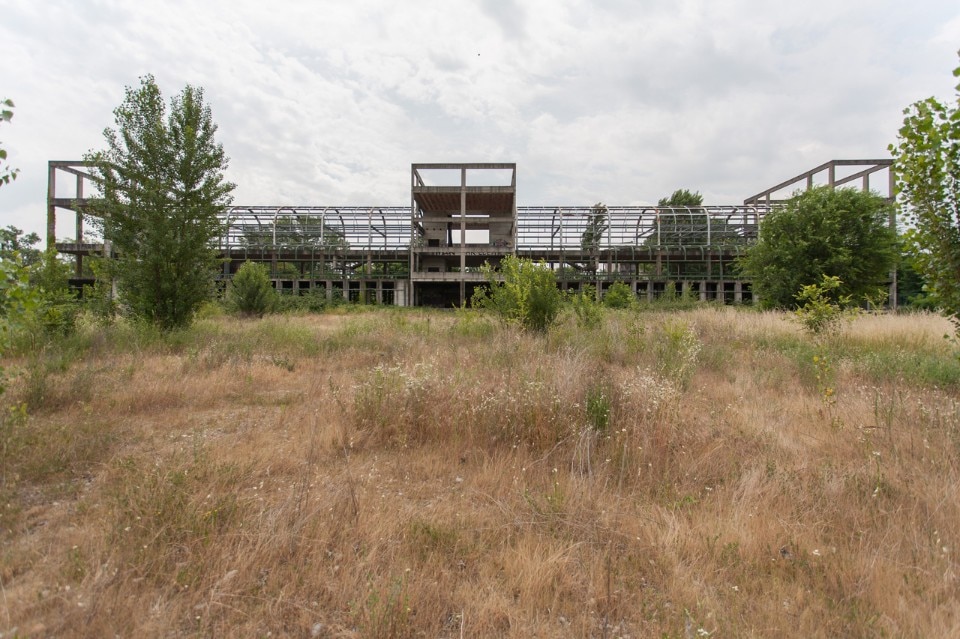
Aldo Rossi e Gianni Braghieri, Stazione di Milano San Cristoforo, Milano, Italy 1983.
The expansion of the San Cristoforo station was commissioned to build a terminal for the transport of private cars along the Milan-Paris line. The construction was never completed due to the client's constant rethinking until the definitive abandonment of the works in 1991. Today we can virtually read the masses of the ruined skeleton and imagine the transit of vehicles in the area in front. The debate on the future of this unfinished building is destined to continue in the years to come in light of the transformation program affecting the Milanese railyards.
Photo by Gerardo Semprebon
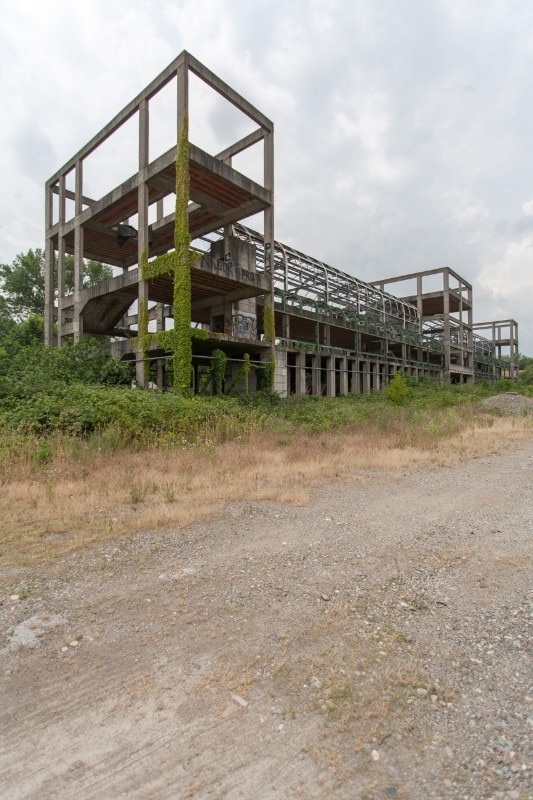
Aldo Rossi e Gianni Braghieri, Stazione di Milano San Cristoforo, Milano, Italy 1983.
Photo by Gerardo Semprebon
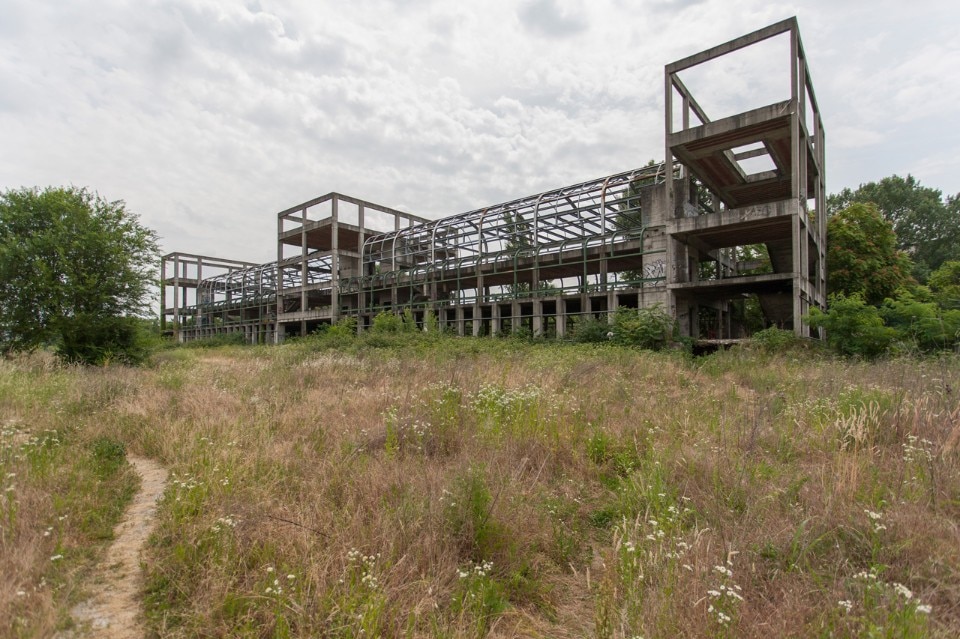
Aldo Rossi e Gianni Braghieri, Stazione di Milano San Cristoforo, Milano, Italy 1983.
Photo by Gerardo Semprebon
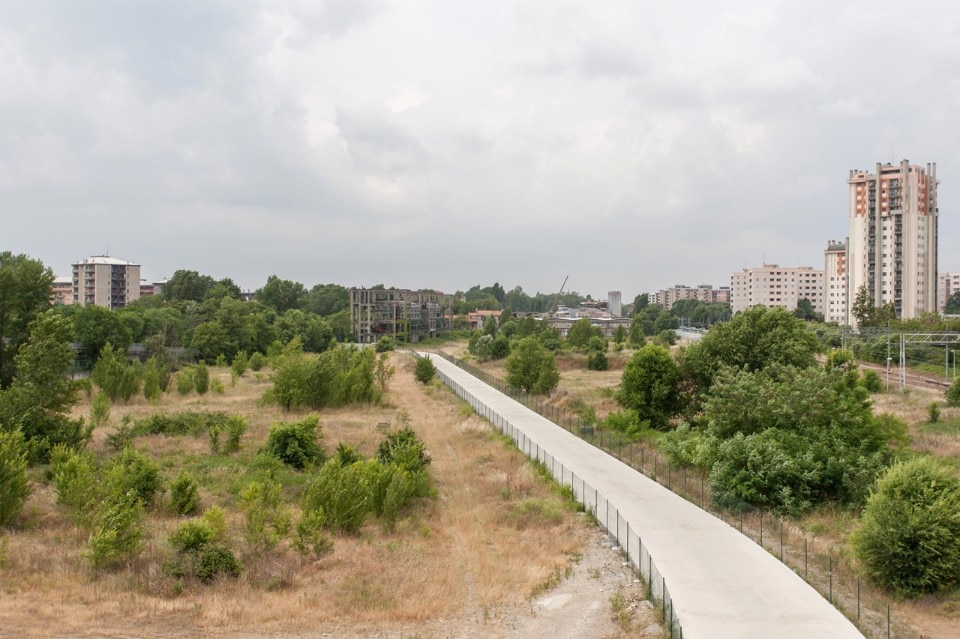
Aldo Rossi e Gianni Braghieri, Stazione di Milano San Cristoforo, Milano, Italy 1983.
Photo by Gerardo Semprebon

Consonno (Lecco), Italy 1960s
It was the early 1960s when the entrepreneur Mario Bagno bought the land in the district of Consonno and razed the few houses abandoned after the crisis in the agricultural sector to build a new Toyland. Focused on the tourism industry, Consonno housed shops, restaurants, sports fields, a dance hall, a luxury hotel, an amusement park, a zoological garden, a medieval castle as an entrance gate, and the notorious minaret. In 1966, the first of two landslides that would have marked the future of this place within ten years, isolated the town, showcasing the consequences of excessive overbuilding and land taking. It was the beginning of a gradual abandonment that turned the themed village into a ghost town.
Photo on Wikicommons
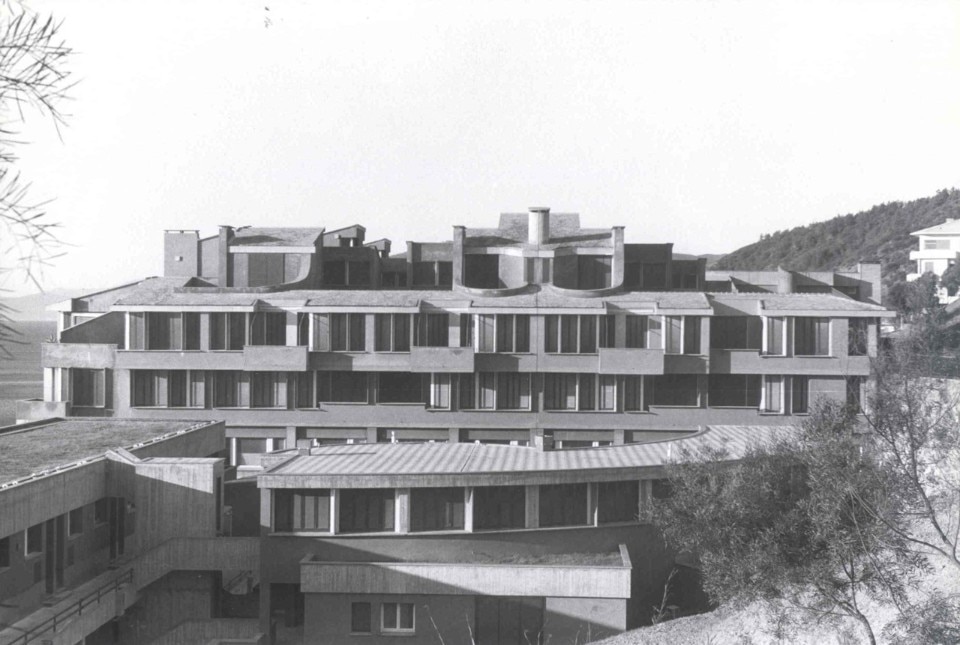
Vico Magistretti, Housing complex at Marina Grande, Arenzano (Genova), Italy 1065
The complex was built as a real estate initiative commissioned by Cemadis S.p.A. acronym of Centro Marittimi di Soggiorno, against the backdrop of the urbanization plan of the Arenzano pine forest. The 300 meters of shops, streets, public spaces, services, car parks, and residences are organized on basements connecting the different coast levels and above-ground blocks organized around courtyards and patios shaped to maintain controlled scalar relationships. Over the years, the residents have gradually abandoned the structure, leaving the public spaces for the use of bathers and passers-by. The presence of several owners with heterogeneous interests has contributed to slowing down the initiatives for functional recovery.

Giuseppe Sommaruga, Grand Hotel Campo dei Fiori, Varese, Italy 1912
The feather in the cap of Varese's Belle Époque, the luxurious, late-liberty vacation complex has not withstood the changing times: from hotel, to hospital, then back to hotel again, it was closed in 1968. The gloomy and eerie atmosphere of the place, emphasised by the ravages of time, in 2016 prompted director Luca Guadagnino to set here his version of Dario Argento's famous “Suspiria”.
Photo Julius Barclay from Wikipedia

Giuseppe Sommaruga, Grand Hotel Campo dei Fiori, Varese, Italy 1912
Photo Julius Barclay from Wikipedia

Giuseppe Sommaruga, Grand Hotel Campo dei Fiori, Varese, Italy 1912
Photo Julius Barclay from Wikipedia

Luigi Cosenza, Mercato ittico, Naples, Italy 1935
The fish market in Naples is one of the major examples of the work of Luigi Cosenza, a leading figure in the Neapolitan architectural scene in the first half of the 1900s. Adhering to the principles of Rationalism, the first example in Naples, the covered market consists of a large main trading room and a series of ancillary trading spaces organized along the perimeter. The impressive barrel vault rests on iron reticular arches while the vertical heads of the building and its wide slits are closed by Saint-Gobain glass-cement, in one of the first applications in southern Italy. Although the market is restricted and subject to recovery projects, with reclamation works in progress, recent chronicles report illegal occupation acts.
Archivio Luigi Cosenza_Archivio di Stato di Napoli, Pizzofalcone

Luigi Cosenza, Mercato ittico, Naples, Italy 1935.
Archivio Luigi Cosenza_Archivio di Stato di Napoli, Pizzofalcone

Luigi Cosenza, Mercato ittico, Naples, Italy 1935.
Archivio Luigi Cosenza_Archivio di Stato di Napoli, Pizzofalcone

Renzo Zavanella, Villa dei direttori dello zuccherificio, Sermide (Mantua), Italy 1939
This work by Renzo Zavanella is a refined example of early Rationalism, expressed in the volumetric composition and the definition of the construction details. It was designed between 1931 and 1932 as a residence for the directors of an industrial complex and is characterized by some avant-garde solutions in relation to the typology of the interior spaces, such as the double-height living room and the arrangement of niches to house the built-in wardrobes, and to the technology used, like the insertion of an air gap between the two reinforced concrete walls that form the closures. Studies are still underway for the recovery of this precious architectural testimony.
Photo by Davide Galli Atelier

Renzo Zavanella, Villa dei direttori dello zuccherificio, Sermide (Mantua), Italy 1939
Photo by Davide Galli Atelier

Renzo Zavanella, Villa dei direttori dello zuccherificio, Sermide (Mantua), Italy 1939
Photo by Davide Galli Atelier

Renzo Zavanella, Villa dei direttori dello zuccherificio, Sermide (Mantua), Italy 1939
Photo by Davide Galli Atelier

Mario Loreti, Colonia Varese, Cervia (Ravenna), Italy 1939
Inaugurated with the name of the hierarch Costanzo Ciano, this colony could accommodate up to 800 children. The complex is part of a green area of approximately 60,000 square meters with a planimetric scheme based on rigid symmetry. The central body was used for distribution, while the side pavilions were for dormitories and service spaces. During the war, the building was occupied by the Germans and later fell underused until it was definitively abandoned. Between the 70s and 80s Marcello Aliprandi and Pupi Avati used the Varese colony as a set for the films La ragazza di latta and Zeder.
Foto by Roberto Conte

Alberto Galardi, Istituto Marxer, Loranzè (Torino), Italy 1962
The Marxer Institute is a rare example of brutalist architecture in Italy, commissioned by Adriano Olivetti to house production and research in the pharmacological field for the homonymous company. The complex is divided into two main volumes, which housed offices, research laboratories, and the production plant, and an existing building with the canteen and other functions. From the end of the seventies, the socio-economic transformations led to several changes of ownership and progressive underuse along with degradation processes fueled by the action of time and by acts of vandalism.
Photo by Roberto Conte

Alberto Galardi, Istituto Marxer, Loranzè (Torino), Italy 1962
Domus 394, September 1962

Giuseppe Davanzo, Foro Boario, Padova, Italy 1968
The Foro Boario was created to host livestock trading, exchange, and exhibition. The structural conception based on the iteration of a horizontal and vertical geometric module generates a large, bright, and airy covered space, whose architectural quality has earned various acknowledgments such as the In/Arch Award in 1969, the interest of the MoMA of New York, and a relatively premature monumental constraint as an element of active qualification and an episode of extremely high emergence in the surrounding urban environment, defined in a totally new way. Once the city's project to establish an international forum collapsed, this cathedral, as it was called by many, fell into disuse and is today at the center of interest of the Lille multinational Leroy Merlin.
Photo by Roberto Conte

Giovanni Giannattasio Ufo Bar, Salerno, Italy, 1970s
The Ufo Bar was a small, today abandoned, nightclub on the coastal road out of Salerno, shortly after the Arechi stadium and near a service station. The building designed by Giovanni Giannattasio has the shape of a spherical cap pierced by small portholes. Two oblique walls mark the entrance and, once crossed the threshold, it seems to enter some Tatooine tavern from Star Wars. Theater of the Salerno nightlife until the end of the 1990s, the Ufo Bar has ceased activity since the authorities affixed the seals after some illegal activities were found upon inspections.
Photo by Roberto Conte

Dante Bini, La Cupola, Sassari, Italy 1970
The dream of a house by the sea on the shores of a wild coast and the meeting with a visionary architect led to the conception and construction of a futuristic building: a sphere in reinforced concrete inextricably integrated into the surrounding marine landscape. The Binishell patent convinces a couple, director Michelangelo Antonioni and the actress Monica Vitti, to rely on Dante Bini to realize their home in Sardinia. The house is built in a single casting of concrete using air pressure. The conclusion of the relationship between Antonioni and Vitti created the conditions for gradually abandoning the structure and the inevitable deterioration.
Domus 1026, July2018

Aldo Rossi e Gianni Braghieri, Stazione di Milano San Cristoforo, Milano, Italy 1983.
The expansion of the San Cristoforo station was commissioned to build a terminal for the transport of private cars along the Milan-Paris line. The construction was never completed due to the client's constant rethinking until the definitive abandonment of the works in 1991. Today we can virtually read the masses of the ruined skeleton and imagine the transit of vehicles in the area in front. The debate on the future of this unfinished building is destined to continue in the years to come in light of the transformation program affecting the Milanese railyards.
Photo by Gerardo Semprebon

Aldo Rossi e Gianni Braghieri, Stazione di Milano San Cristoforo, Milano, Italy 1983.
Photo by Gerardo Semprebon

Aldo Rossi e Gianni Braghieri, Stazione di Milano San Cristoforo, Milano, Italy 1983.
Photo by Gerardo Semprebon

Aldo Rossi e Gianni Braghieri, Stazione di Milano San Cristoforo, Milano, Italy 1983.
Photo by Gerardo Semprebon

Consonno (Lecco), Italy 1960s
It was the early 1960s when the entrepreneur Mario Bagno bought the land in the district of Consonno and razed the few houses abandoned after the crisis in the agricultural sector to build a new Toyland. Focused on the tourism industry, Consonno housed shops, restaurants, sports fields, a dance hall, a luxury hotel, an amusement park, a zoological garden, a medieval castle as an entrance gate, and the notorious minaret. In 1966, the first of two landslides that would have marked the future of this place within ten years, isolated the town, showcasing the consequences of excessive overbuilding and land taking. It was the beginning of a gradual abandonment that turned the themed village into a ghost town.
Photo on Wikicommons

Vico Magistretti, Housing complex at Marina Grande, Arenzano (Genova), Italy 1065
The complex was built as a real estate initiative commissioned by Cemadis S.p.A. acronym of Centro Marittimi di Soggiorno, against the backdrop of the urbanization plan of the Arenzano pine forest. The 300 meters of shops, streets, public spaces, services, car parks, and residences are organized on basements connecting the different coast levels and above-ground blocks organized around courtyards and patios shaped to maintain controlled scalar relationships. Over the years, the residents have gradually abandoned the structure, leaving the public spaces for the use of bathers and passers-by. The presence of several owners with heterogeneous interests has contributed to slowing down the initiatives for functional recovery.
In the Domus 1066 editorial, Jean Nouvel wrote that architecture, like living beings, is too often irresponsibly abandoned, forgotten, or exploited. For architecture to last, it must be kept alive, so that it can adapt to the new circumstances of the time. Orphans of forward-looking stewardships, sometimes distracted or dormant, these architectures have given a civic look to institutions and powers, hosted symbolic events, and welcomed local populations, marking historical seasons and collective imageries. Read more
@domus 3 architetture scomparse in giro per il mondo! Le conoscevi? #imparacontiktok #architecture ♬ suono originale - Domus Magazine
06
When IKEA furniture becomes a collector’s item: the 15 most wanted vintage pieces

 View gallery
View gallery
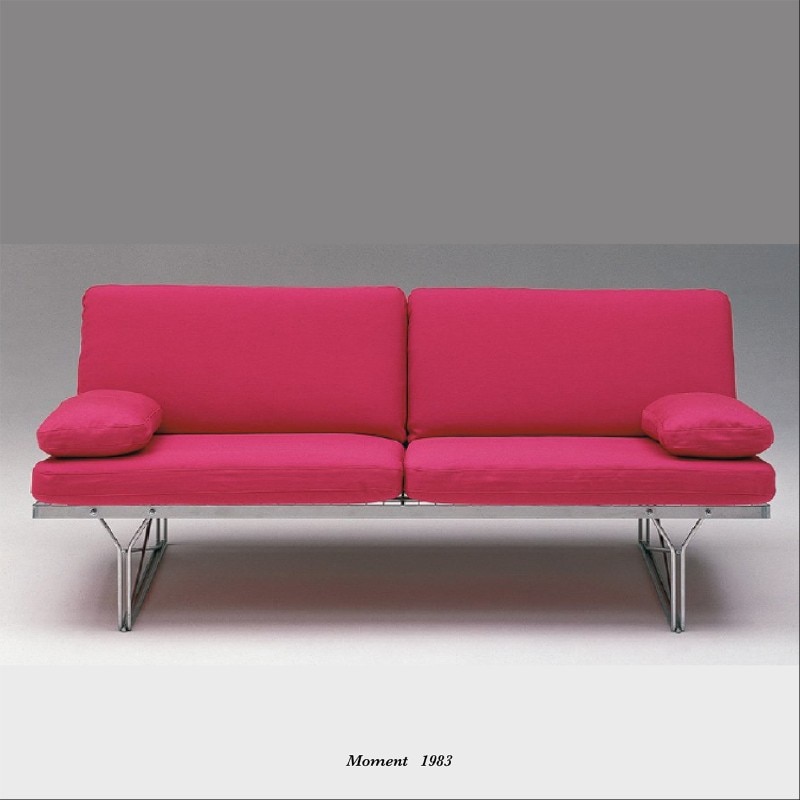
Niels Gammelgaard, Moment sofa, 1983
The Moment sofa is one of the many ideas that came out of Niels Gammelgaard's pencil for Ikea. The steel structure was inspired by a visit to a shopping trolley factory. Only 11 nuts and bolts are needed to assemble it
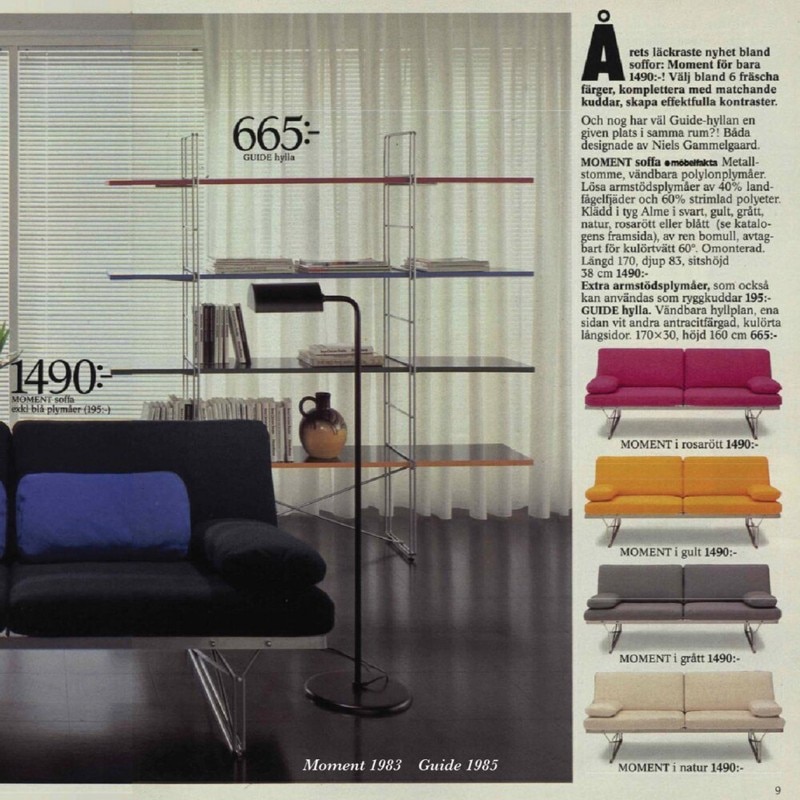
Niels Gammelgaard, Moment sofa, 1983
Vintage furniture web portal VNTG rates the Moment sofa between 400 and 500 euros
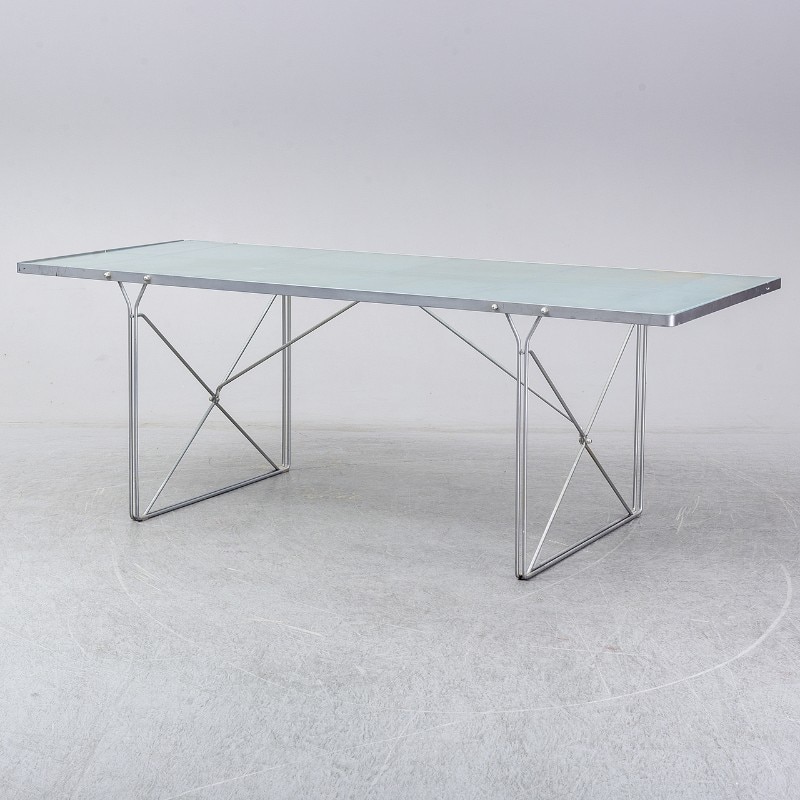
Niels Gammelgaard, Moment table, 1980s
The Danish designer has also designed a dining table (or desk) that has a similar structure. It can be found on Pamono for about 700 euros
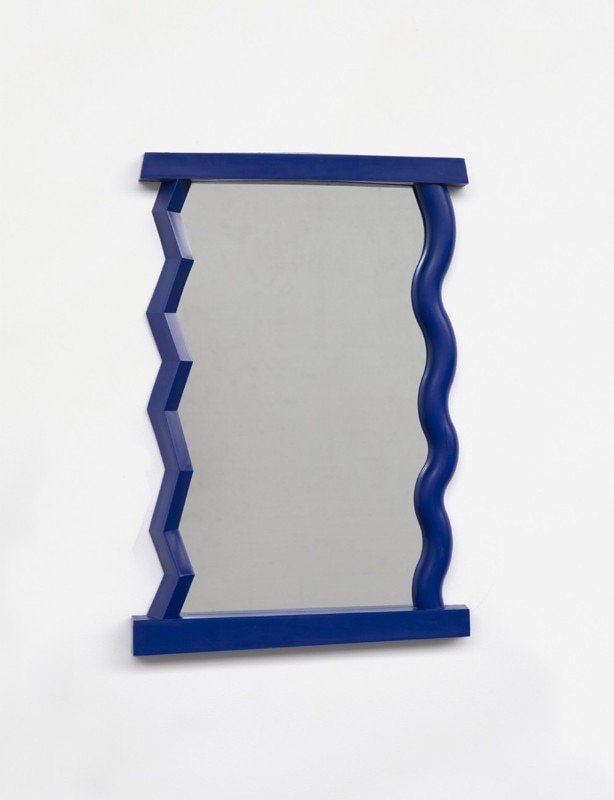
Ulk mirror, 1996
Marketed in 1996, Ulk is a now very rare piece inspired by the postmodern design of the Memphis group. It was recently sold on Chairish for 540 dollars
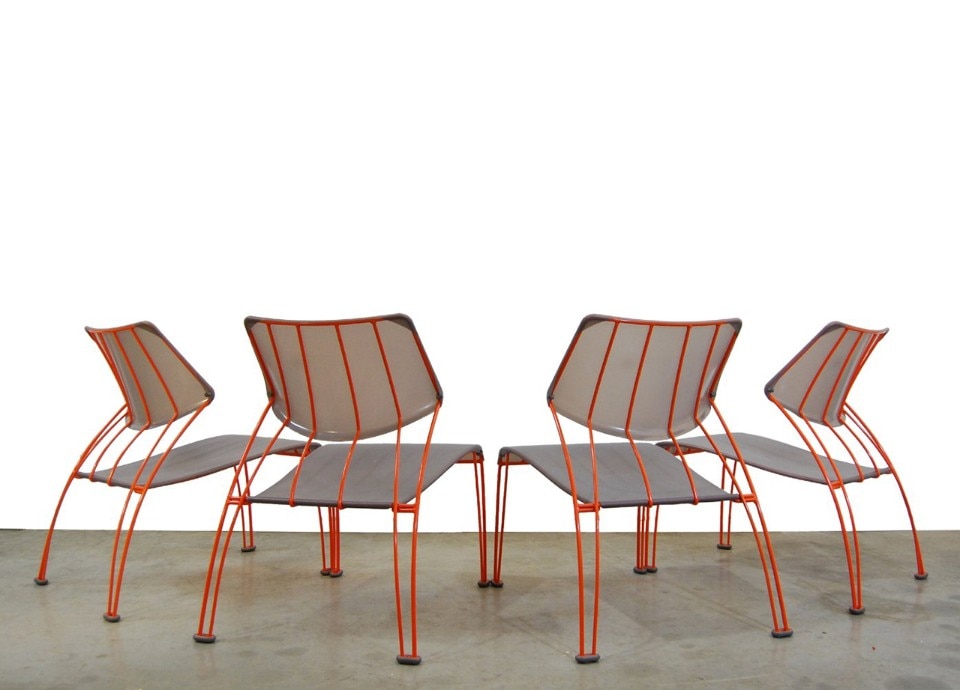
Monika Mulder, Hasslo chair, 1990s
Monika Mulder began her career in the Ikea design department (PS Design) in Sweden. Her work combines functionality with striking aesthetics. Mulder is now an internationally recognised designer who has won numerous awards and exhibited in major design museums
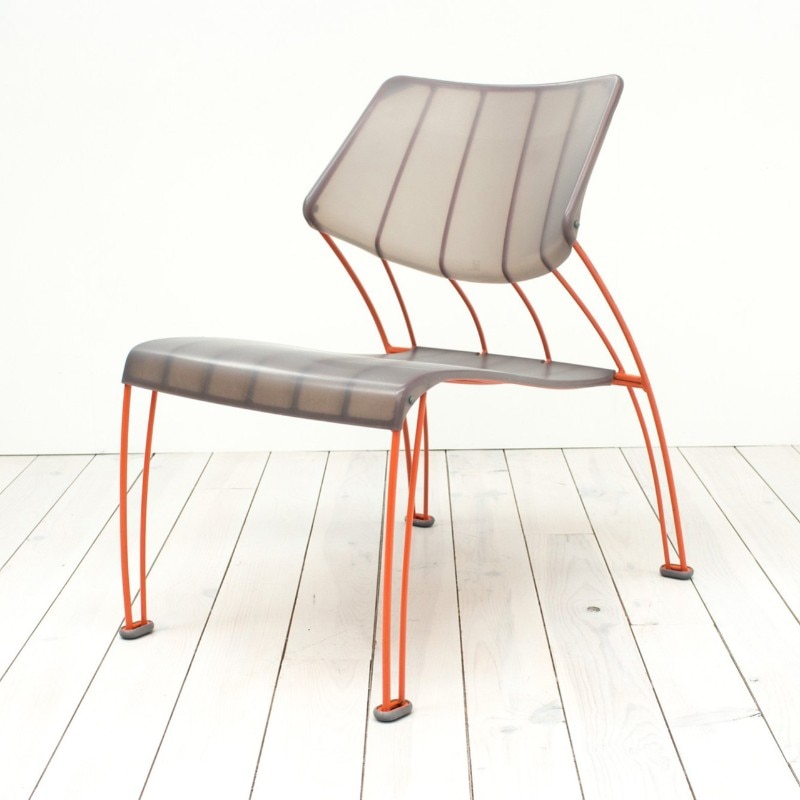
Monika Mulder, Hasslo chair, 1990s
The Hasslo chair has a dynamically shaped orange painted metal frame, while the seat and back are made of transparent plastic, joined to the structure by 4 almost invisible screws. A set of 4 Hasslo chairs is sold on Design Addict for 950 euros

Gillis Lundgren, Impala, 1972
The Impala sofa and armchair are among the most successful classics on the vintage market. Designed by Gillis Lundgren (the father of the famous Billy bookcase), the furniture features a tubular metal frame and unique upholstery in bright colours: red or gold

Gillis Lundgren, Impala, 1972
Currently on sale on the Tarquin Bilden website for almost €6,000
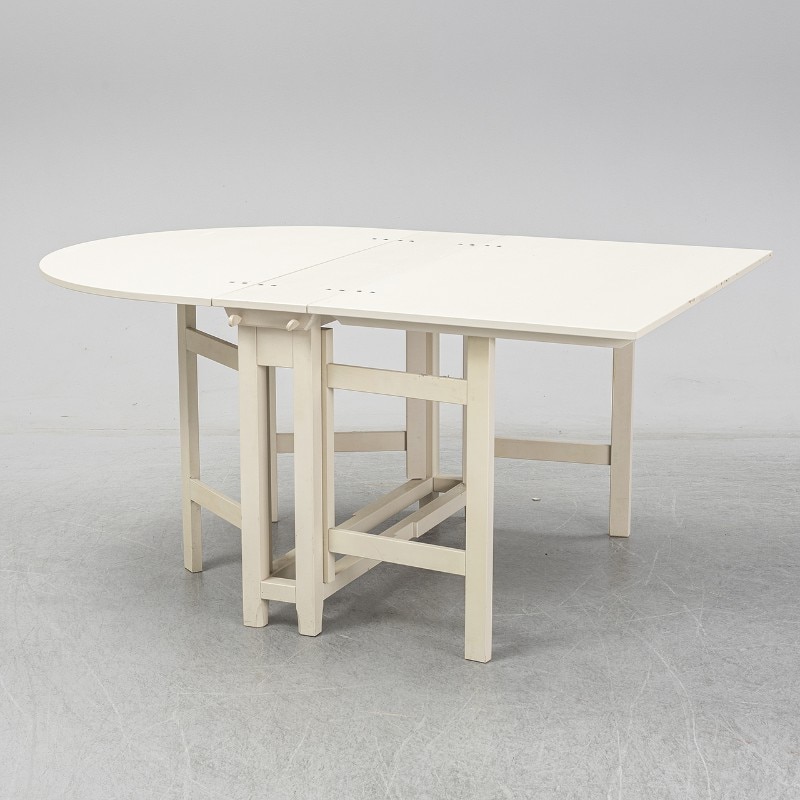
Bergslagen table, 1993
Bergslagen is part of a collection dedicated to the 18th century, conceived in collaboration with Lars Sjöberg, then curator of the National Museum in Sweden. Launched in 1993, the collection was a resounding flop, and after six years production was stopped. Nevertheless, today the Bergslagen table is one of the most sought-after items on the vintage market. Price €500

Verner Panton, Vilbert chair, 1994
In the early 1990s, the famous designer was commissioned by IKEA to design a limited edition chair (only 3,000 pieces). The do-it-yourself style product is made of MDF boards covered with matt laminated coloured resin (purple, blue, green, red)
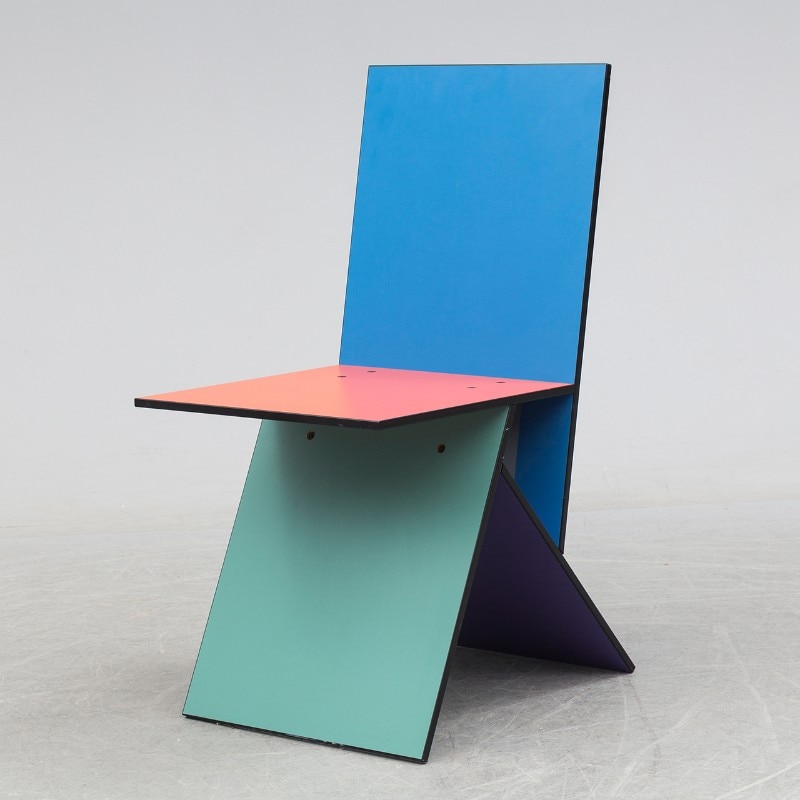
Verner Panton, Vilbert chair, 1994
The Vilbert chair is now considered a design classic and sells for at least 4,000 euros (Pamono)
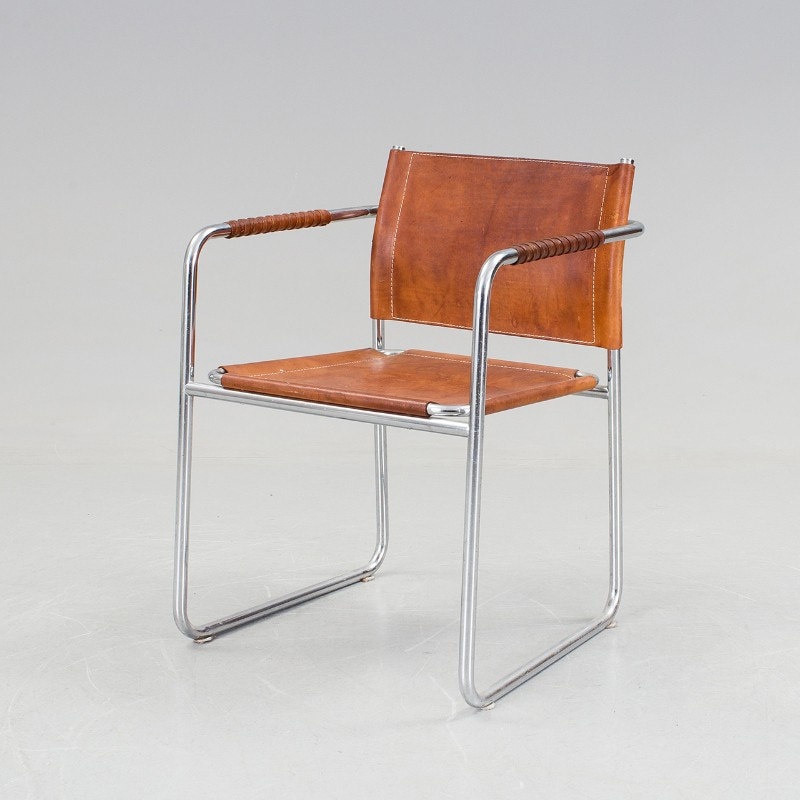
Karin Mobring, Admiral, 1971
In the 1970s, Swedish designer Karin Mobring was the protagonist of several successful pieces of furniture. Her most famous piece is undoubtedly the Admiral armchair, in metal and leather, on the market since 1971. Cost: €5,000 (on room58.dk)
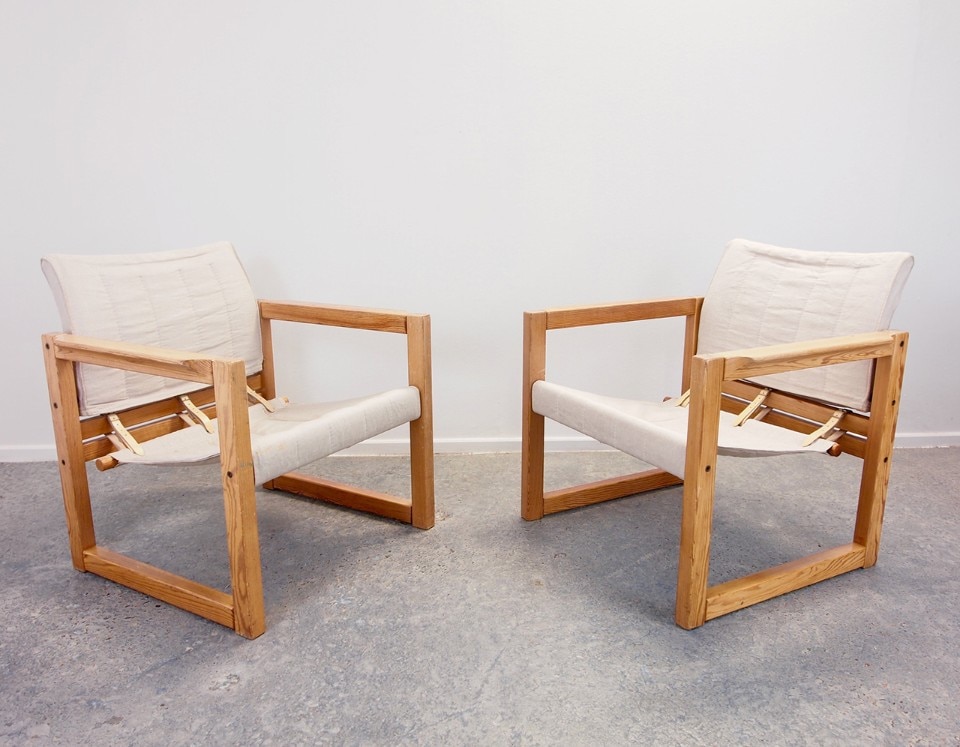
Karin Mobring, Diana Safari armchair, 1972
Wooden frame, fabric seat and back, leather straps: the Diana Safari chair is inspired by the chairs of British officers. On Pamono for 350 euro

Arne Wahl Iversen, Spectum, 1959
Danish designer and architect Arne Wahl Iversen is among the designers who helped define the Scandinavian Mid-Century style. Despite the scarcity of information about his life, his work is highly desirable on the vintage collectors' market. Produced between 1959 and 1968, the Spectum console table is made of oak, with Teak veneer. On sale at Pamono for 600 euros

Arne Wahl Iversen, Prim chair, 1979s
Another hard-to-find piece by Arne Wahl Iversen is the Prim armchair, currently on sale on VNTG for 1350 euros
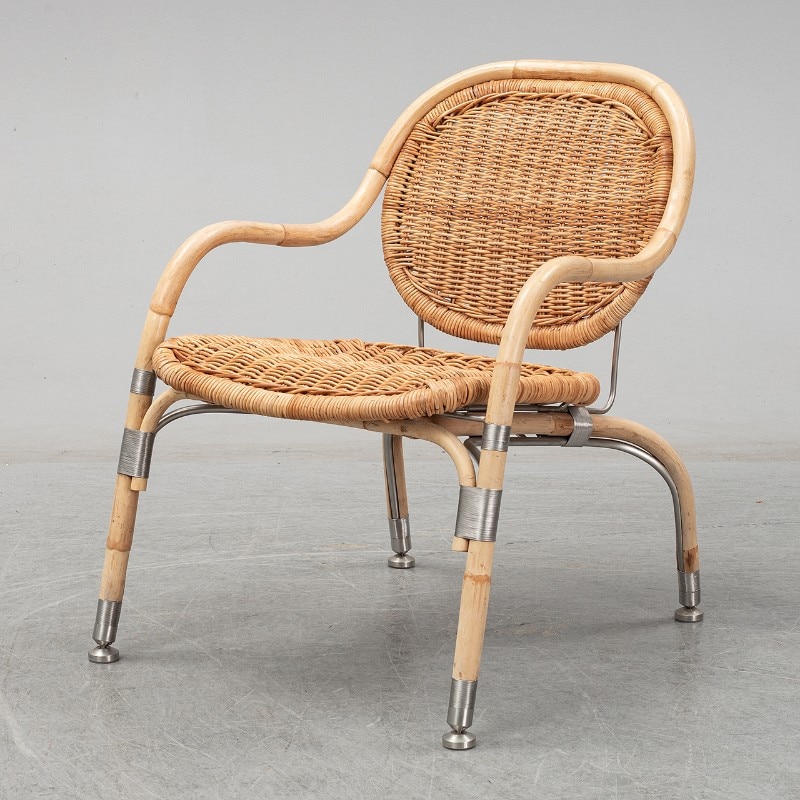
Mats Theselius, PS series armchair, 2000s
Produced in the early 2000s, the armchair designed by Mats Theselius features an unusual combination of rattan and brushed steel

Mats Theselius, PS series armchair, 2000s
Because of the difficulty in making the chair, very few copies were produced, and it has become very rare and sought-after. 1stDibs values the pair of chairs at 5,500 euro

Ole Gjerløv-Knudsen and Torben Lind, Skopan armchair, 1970s
This armchair would not look out of place in the Plastic Collection of the Design Museum Brussels, perhaps between Eero Aarnio's Pastilli ou Gyro and Alberto Rosselli's Play. The original price of this lounge was €11. Today it sells for over 1000€ (Pamono)

Erik Wörtz, Exklusiv desk, 1970s
Desk veneered in jacaranda, with an extendable top on one side and drawers on the other. Today it sells for 400 euros

Gillis Lundgen, Tajt, 1970s
Gillis Lundgen's furniture was born out of the wide availability of denim fabric. IKEA founder Ingvar Kamprad bought a 5km roll of denim to give designers the opportunity to experiment with the material

Niels Gammelgaard, Moment sofa, 1983
The Moment sofa is one of the many ideas that came out of Niels Gammelgaard's pencil for Ikea. The steel structure was inspired by a visit to a shopping trolley factory. Only 11 nuts and bolts are needed to assemble it

Niels Gammelgaard, Moment sofa, 1983
Vintage furniture web portal VNTG rates the Moment sofa between 400 and 500 euros

Niels Gammelgaard, Moment table, 1980s
The Danish designer has also designed a dining table (or desk) that has a similar structure. It can be found on Pamono for about 700 euros

Ulk mirror, 1996
Marketed in 1996, Ulk is a now very rare piece inspired by the postmodern design of the Memphis group. It was recently sold on Chairish for 540 dollars

Monika Mulder, Hasslo chair, 1990s
Monika Mulder began her career in the Ikea design department (PS Design) in Sweden. Her work combines functionality with striking aesthetics. Mulder is now an internationally recognised designer who has won numerous awards and exhibited in major design museums

Monika Mulder, Hasslo chair, 1990s
The Hasslo chair has a dynamically shaped orange painted metal frame, while the seat and back are made of transparent plastic, joined to the structure by 4 almost invisible screws. A set of 4 Hasslo chairs is sold on Design Addict for 950 euros

Gillis Lundgren, Impala, 1972
The Impala sofa and armchair are among the most successful classics on the vintage market. Designed by Gillis Lundgren (the father of the famous Billy bookcase), the furniture features a tubular metal frame and unique upholstery in bright colours: red or gold

Gillis Lundgren, Impala, 1972
Currently on sale on the Tarquin Bilden website for almost €6,000

Bergslagen table, 1993
Bergslagen is part of a collection dedicated to the 18th century, conceived in collaboration with Lars Sjöberg, then curator of the National Museum in Sweden. Launched in 1993, the collection was a resounding flop, and after six years production was stopped. Nevertheless, today the Bergslagen table is one of the most sought-after items on the vintage market. Price €500

Verner Panton, Vilbert chair, 1994
In the early 1990s, the famous designer was commissioned by IKEA to design a limited edition chair (only 3,000 pieces). The do-it-yourself style product is made of MDF boards covered with matt laminated coloured resin (purple, blue, green, red)

Verner Panton, Vilbert chair, 1994
The Vilbert chair is now considered a design classic and sells for at least 4,000 euros (Pamono)

Karin Mobring, Admiral, 1971
In the 1970s, Swedish designer Karin Mobring was the protagonist of several successful pieces of furniture. Her most famous piece is undoubtedly the Admiral armchair, in metal and leather, on the market since 1971. Cost: €5,000 (on room58.dk)

Karin Mobring, Diana Safari armchair, 1972
Wooden frame, fabric seat and back, leather straps: the Diana Safari chair is inspired by the chairs of British officers. On Pamono for 350 euro

Arne Wahl Iversen, Spectum, 1959
Danish designer and architect Arne Wahl Iversen is among the designers who helped define the Scandinavian Mid-Century style. Despite the scarcity of information about his life, his work is highly desirable on the vintage collectors' market. Produced between 1959 and 1968, the Spectum console table is made of oak, with Teak veneer. On sale at Pamono for 600 euros

Arne Wahl Iversen, Prim chair, 1979s
Another hard-to-find piece by Arne Wahl Iversen is the Prim armchair, currently on sale on VNTG for 1350 euros

Mats Theselius, PS series armchair, 2000s
Produced in the early 2000s, the armchair designed by Mats Theselius features an unusual combination of rattan and brushed steel

Mats Theselius, PS series armchair, 2000s
Because of the difficulty in making the chair, very few copies were produced, and it has become very rare and sought-after. 1stDibs values the pair of chairs at 5,500 euro

Ole Gjerløv-Knudsen and Torben Lind, Skopan armchair, 1970s
This armchair would not look out of place in the Plastic Collection of the Design Museum Brussels, perhaps between Eero Aarnio's Pastilli ou Gyro and Alberto Rosselli's Play. The original price of this lounge was €11. Today it sells for over 1000€ (Pamono)

Erik Wörtz, Exklusiv desk, 1970s
Desk veneered in jacaranda, with an extendable top on one side and drawers on the other. Today it sells for 400 euros

Gillis Lundgen, Tajt, 1970s
Gillis Lundgen's furniture was born out of the wide availability of denim fabric. IKEA founder Ingvar Kamprad bought a 5km roll of denim to give designers the opportunity to experiment with the material
We all know that IKEA's main objective is to make furniture accessible to everyone. In recent years there has been a proliferation of signature collections that allow a wide public to own pieces signed, for example, by Virgil Abloh or Sabine Marcelis: this is the democratisation of luxury, which we discussed in a recent article, investigating the difficult marriage between mass production and art-design (or collectible design). Read more
07
14 signature European wineries, designed by great architects
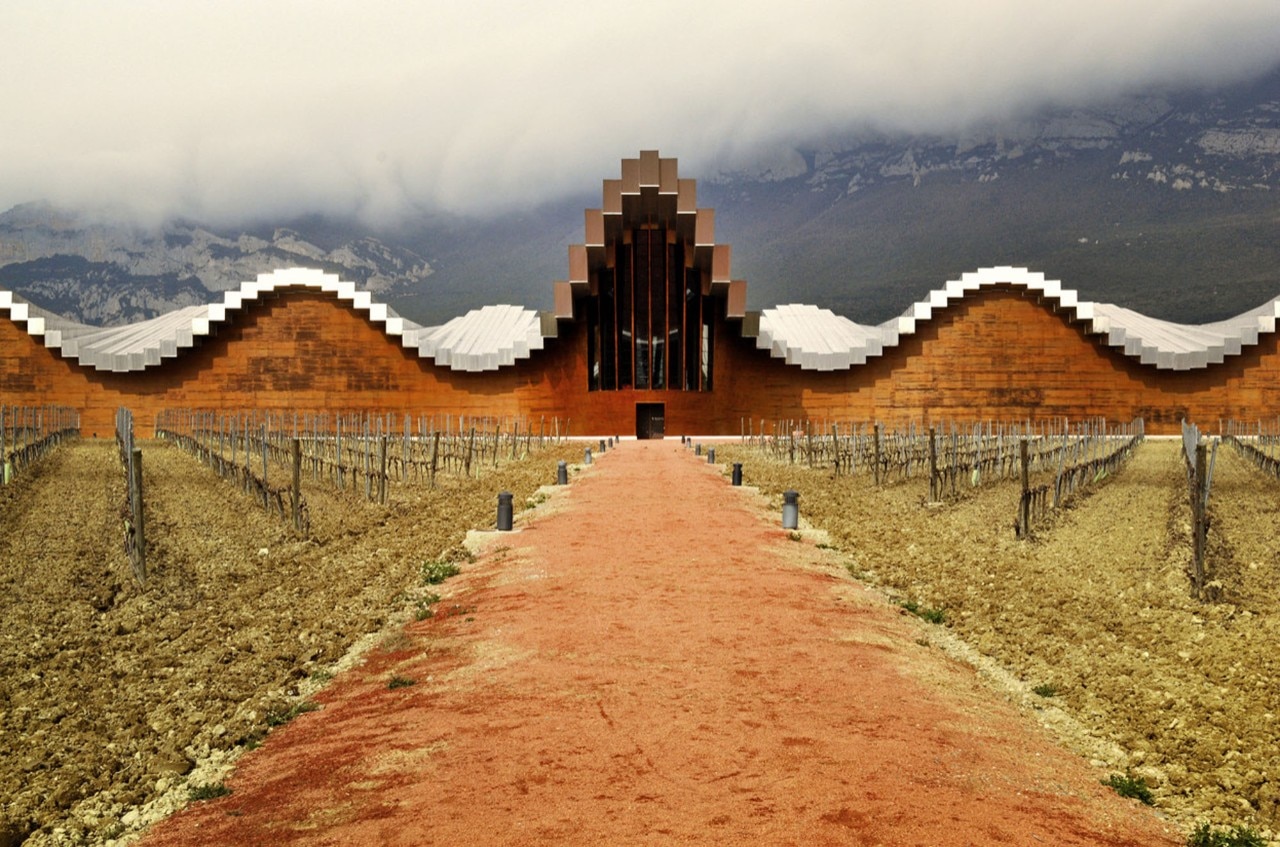
 View gallery
View gallery
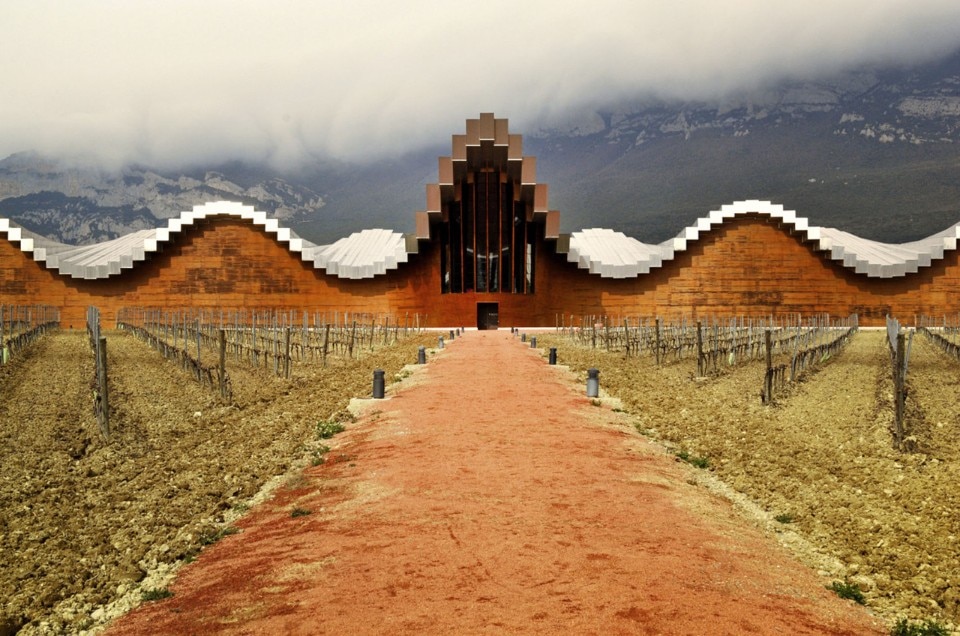
Santiago Calatrava architects & engineers, Bodegas Ysios, LaGuardia, Basque Country, Spain 2001
Conceived on the one hand to respond to the client's need for suitable spaces for the production, storage and sale of wine and on the other as an iconic manifesto for the prestigious "Rioja Alavesa" brand, the winery is located in a context of irregular orography punctuated by vineyards. The clear and simple longitudinal layout is developed in elevations with powerful fronts clad on the north by prefabricated concrete panels, on the east and west by aluminium sheets, and on the south by cedar wood slats reminiscent of wine barrels. A sinusoidal roof of laminated wood beams and aluminium lends a dynamic and sculptural character to the architecture.
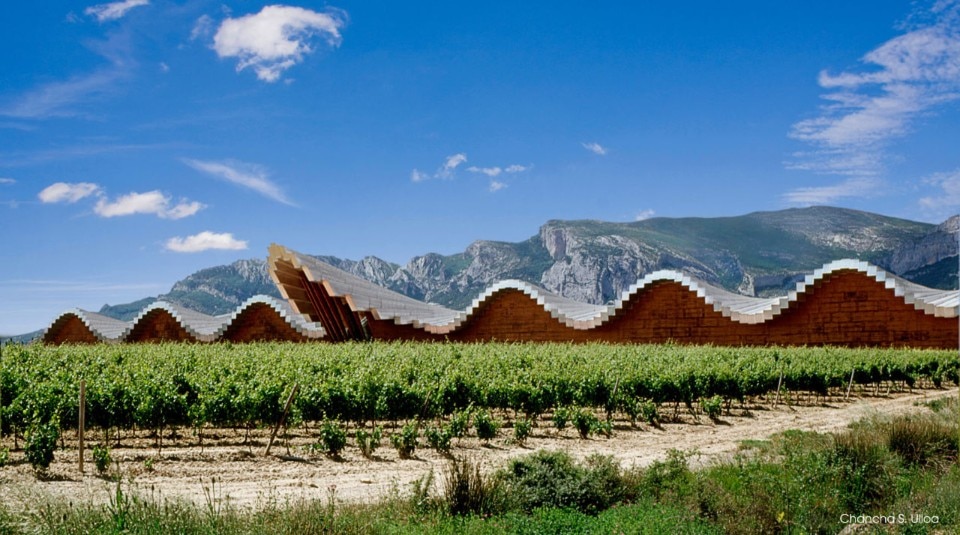
Santiago Calatrava architects & engineers, Bodegas Ysios, LaGuardia, Basque Country, Spain 2001
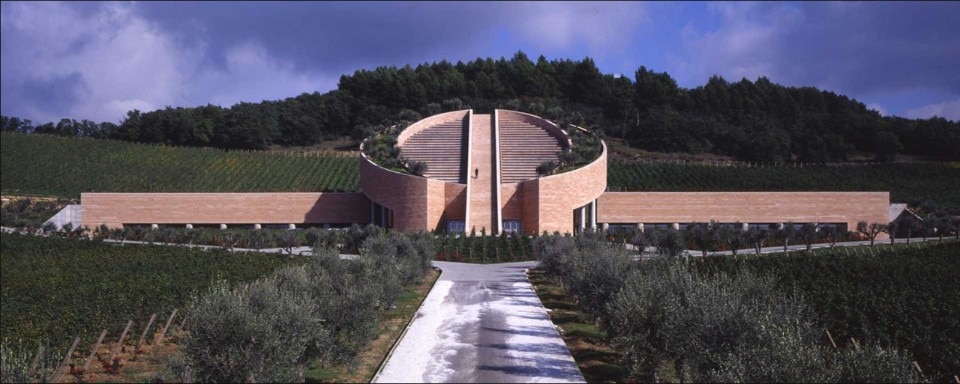
Mario Botta, Cantina Petra, Suvereto (Livorno), Italy 2003
The complex sits on an estate of almost 300 hectares of land between hills and vineyards. The building is characterised by a central cylindrical volume sectioned by an inclined plane parallel to the hill, crossed by an imposing staircase and planted with greenery on the roof, and by two porticoed side buildings. The ground floor houses the barrique cellar, the areas for ageing, vinification, bottling and packaging, and the tasting areas; the first floor houses the crushing areas and the technological rooms. With its Prun stone cladding, the work evokes the image of a flower blooming in the heart of the Maremma.
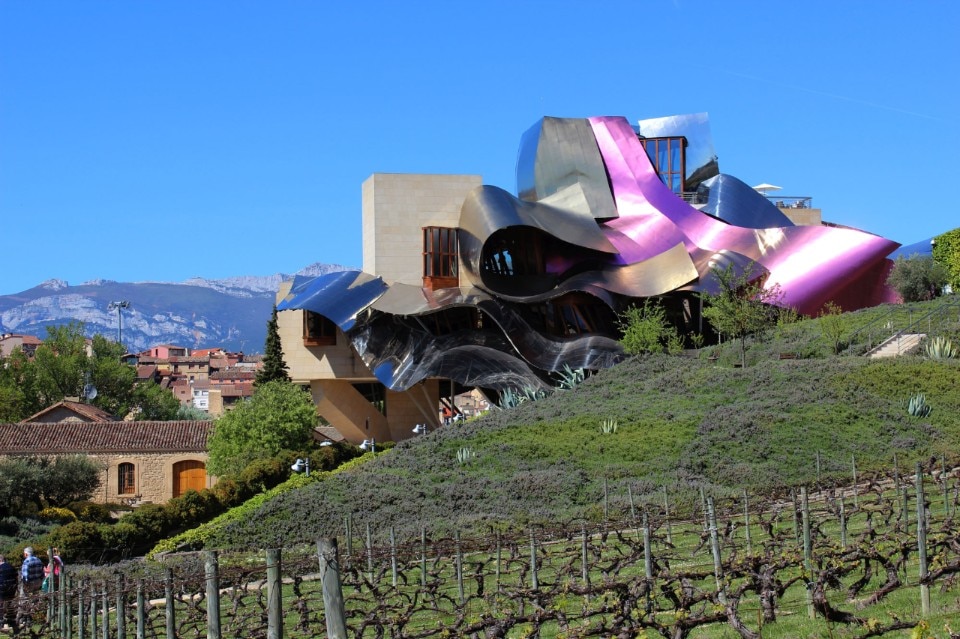
Frank O. Gehry, Marques De Riscal, Elciego, Basque Country, Spain 2006
Photo Roderich Kahn from Commons.Wikimedia

Zaha Hadid architects, R. Lopez de Heredia Viña Tondonia, Haro, Basque Country, Spain 2006
A "new bottle for a historic wine": this is how the intervention commissioned to Zaha Hadid by one of the oldest and most renowned winegrowing families in the region was conceived to protect and enhance an old wooden exhibition pavilion originally transported to the Brussels International Wine Exhibition in 1910 and since then disused. The Iraqi architect has thus designed an enclosure with sinuous and enveloping shapes that seem to evoke a decanter, or a spaceship landed in the Rioja.
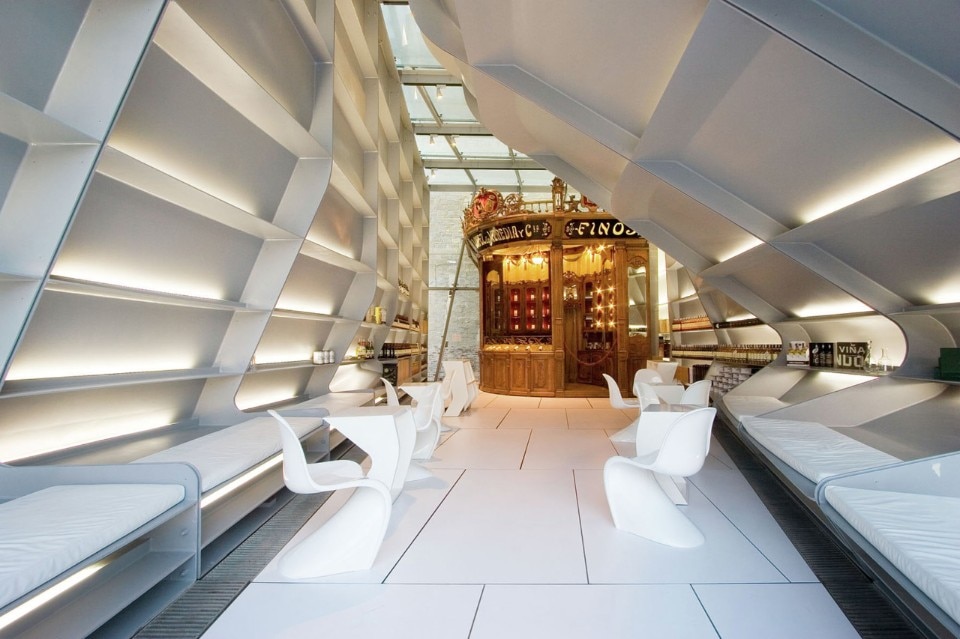
Zaha Hadid architects, R. Lopez de Heredia Viña Tondonia, Haro, Basque Country, Spain 2006
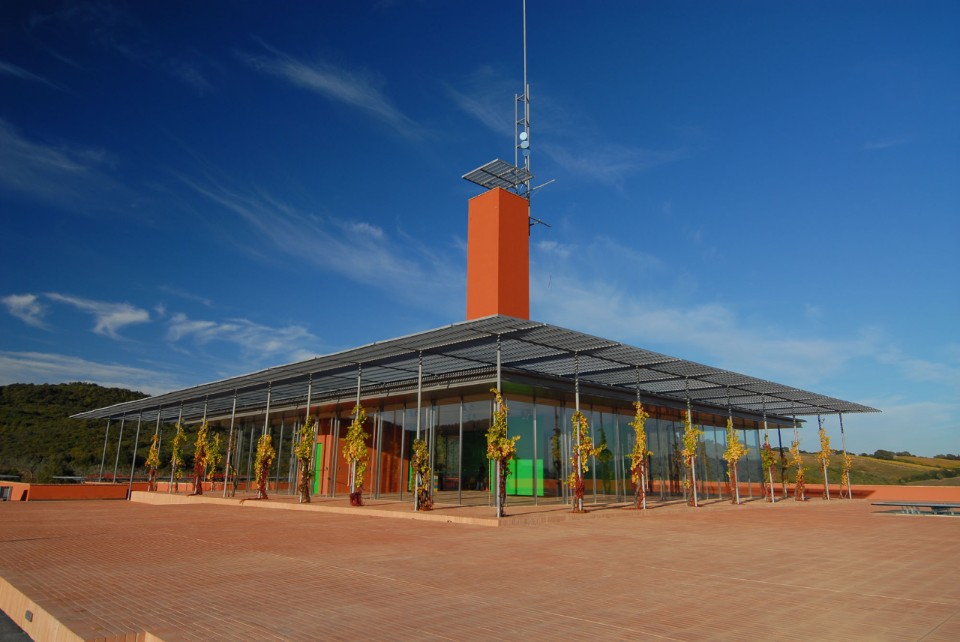
Renzo Piano Building Workshop, Rocca di Frassinello, Gavorrano (Grosseto), Italy 2007
A purely functional building conceived to optimise the winery's wine production process but also to host conferences, concerts and events: this is Renzo Piano's vision for the winery in the heart of the Maremma, which revisits the traditional forms of Tuscan architecture in a contemporary key and with an industrial language. The complex consists of an open square, a glass pavilion housing administrative and commercial spaces, a tower towering above the building and from which light filters into the underground spaces, and a wine cellar characterised by a large underground hall, arranged like an amphitheatre, with a capacity of 2,500 oak barrels. Glass and terracotta embody the contamination between industrial and traditional processes in winemaking today.
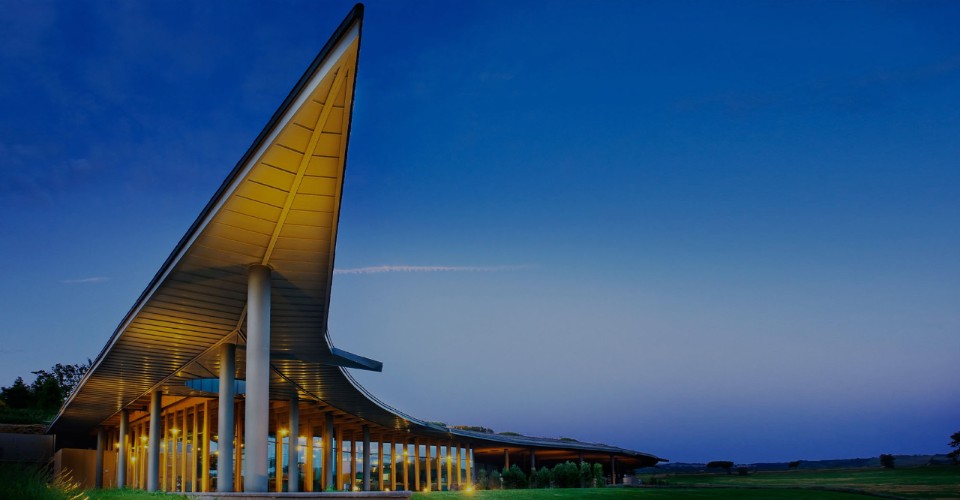
Sartogo Architetti Associati, Tenuta Ammiraglia - Frescobaldi, Magliano in Toscana (Grosseto), Italy 2008
"A strip of land raised to open a thin, long slit in the natural slope of the land (...): not a winery, but a large seagull's wing facing south that can enjoy a very special microclimate due to its proximity to the sea". This is how the architects describe their work, set in the Maremma landscape like a seagull's wing, in fact, or like the prow of a ship pointing towards the sea. The industrial building, perfectly integrated among the hills and covered with greenery and trees, with its sinuous forms seems to want to embrace the landscape, in a perfect synthesis of artifice and nature.
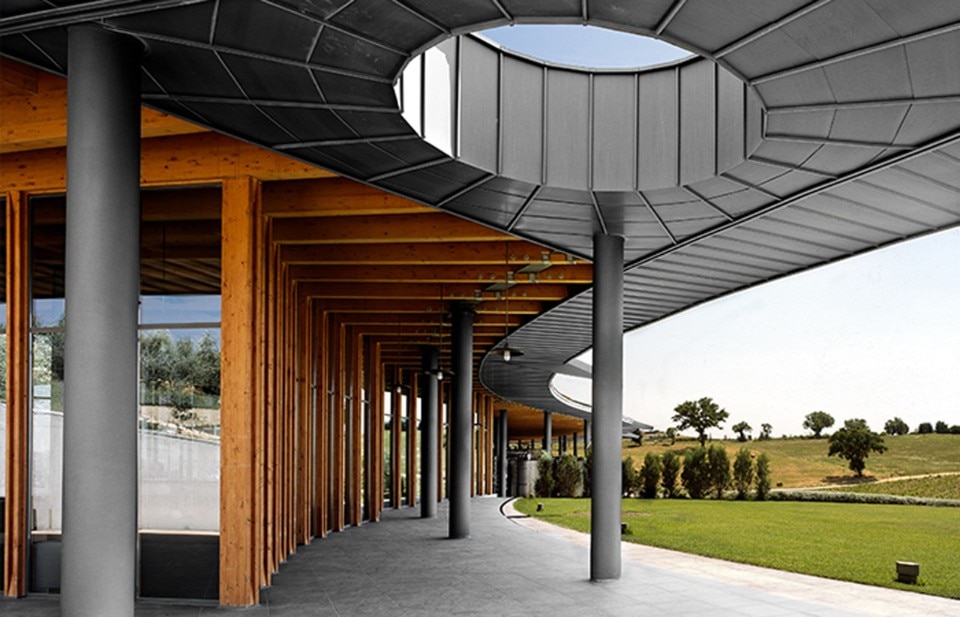
Sartogo Architetti Associati, Tenuta Ammiraglia - Frescobaldi, Magliano in Toscana (Grosseto), Italy 2008

Rogers Stirk Harbour & Partners (RSHP), Peñafiel, Spain 2008
Rogers Stirk Harbour & Partners (Rshp) has designed the extension of Bodegas Protos, a historic winery producing Ribera del Duero wines. The new triangular building, a modern reinterpretation of a traditional winery, is joined to the existing structures by a gallery and includes an underground cellar for storage, a production area on the upper level and a sunken, terraced garden with panoramic views of the neighbouring castle, through which natural light filters into the office area. Five parabolic arches made of laminated wood and covered with terracotta tiles shape an articulated and light construction, blending its volumetric impact into the landscape.
Photo Lavadodecerebro from wikimedia commons

Rogers Stirk Harbour & Partners (RSHP), Bodegas Protos, Peñafiel, Spain 2008
Photo Ruta del Vino Ribera del Duero from wikimedia commons

Foster + Partners, Bodegas Portia, Ribera del Duero, Spain 2010
The complex located in one of Spain's most vibrant wine-producing areas is characterised by a three-lobed geometry functional to the different phases of the production process: processing, conservation and pouring, which take place in each of the buildings. The concrete structure clad in reddish-coloured cortén steel shingles is reminiscent of the bright, full-bodied colours of the wine.
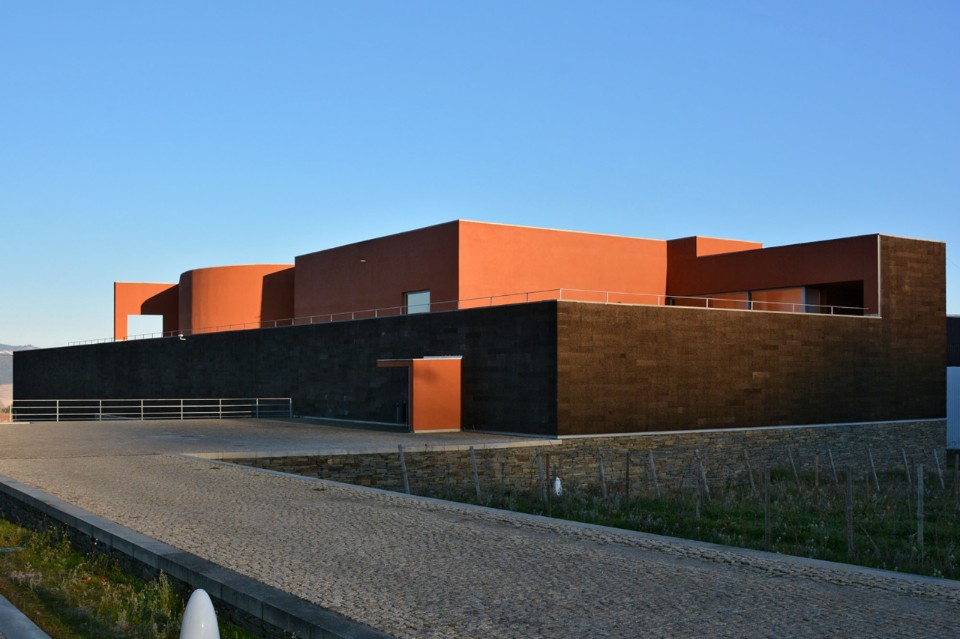
Álvaro Siza, Quinta do Portal, Sabrosa, Portugal 2010
The "Boutique Winery" dedicated to the production of AOC wines (from Douro to Port to Moscatel), divided into four floors, houses on the first level, almost completely underground, a storage area and services for personnel and warehouses; on the ground floor, the second storage area, dressing rooms and services; on the mezzanine floor, the reception and a tasting room; and on the upper level, an auditorium. The complex clad externally in slate, stone and cork retains an "artificially natural" character that blends well with the vineyards.
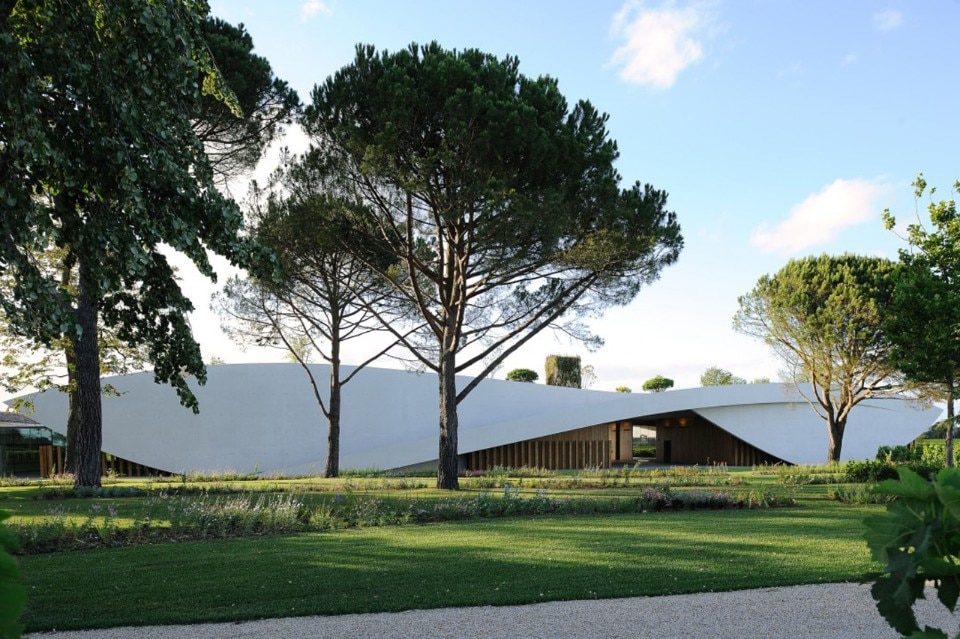
Christian de Portzamparc, Château Cheval Blanc, Bordeaux, France 2011
To connote the image of one of the largest wine cellars in Bordeaux, the architect designed a sinuous and enveloping volume in exposed concrete. The work takes the form of a majestic "wine atelier" of 5,500 square metres developed on two levels: the first floor houses 52 rough concrete tanks for maturing wine and a tasting room; the basement houses the production rooms. The building was designed according to sustainability criteria, thanks to the presence of a green terrace on the roof, the studied ventilation system and the mechanism for filtering and reintroducing rainwater.
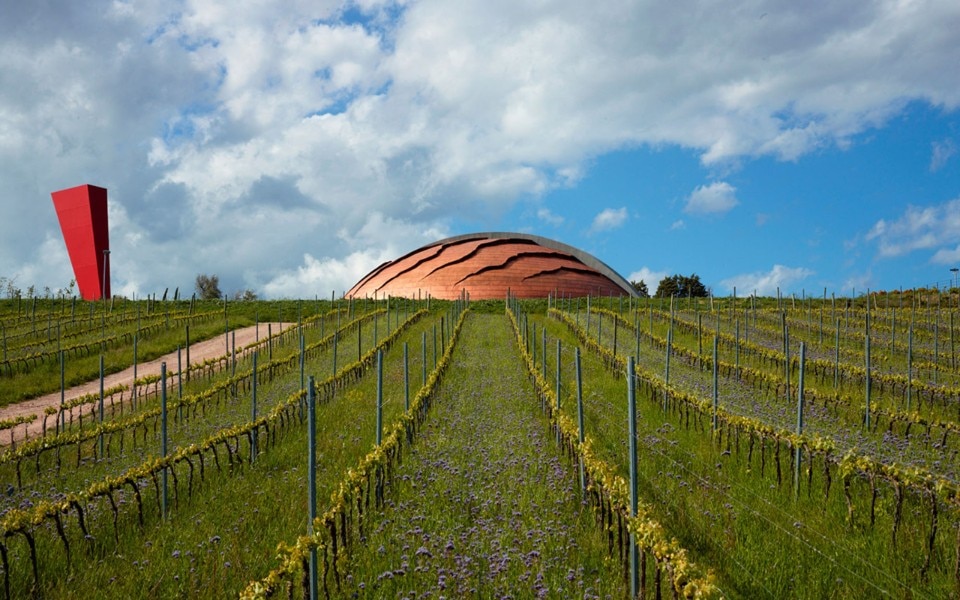
Arnaldo Pomodoro, Tenuta Castelbuono - Tenute Lunelli, Bevagna (Perugia), Italy 2012
In the Umbrian countryside, Arnaldo Pomodoro's "Carapace" is a work halfway between art and architecture: an "inhabited" sculpture in which artifice and nature blend admirably. The large dome covered in copper and etched with cracks that evoke the earth from which the construction springs encloses an interior with a twilight atmosphere as if inside the belly of a primordial animal, with a majestic structure of three-hinged arches made of laminated wood lattice girders and bright red furnishings that evoke the leaves of the vine.
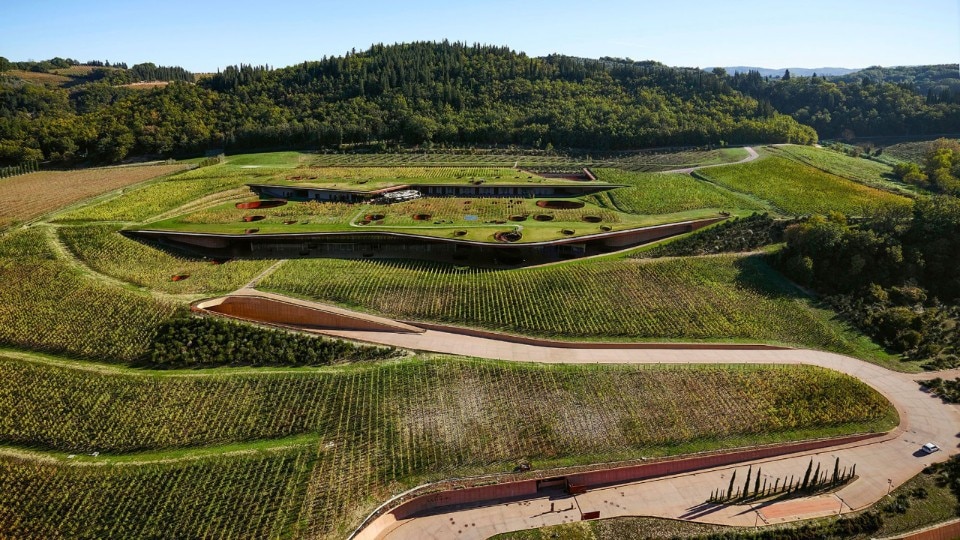
Archea Associati, Antinori Winery, San Casciano Val di Pesa (Florence), Italy 2012
Literally immersed in the soft hilly landscape of the Chianti region, the Antinori Winery is first and foremost a "geo-morphological" experiment: excavated up to 15 metres into the hillside, the complex of almost 45,000 square metres is for the most part hypogeal and almost invisible from the outside, except for the horizontal slits that follow the green terraces under which the productive and recreational areas are articulated. In the interiors, warm and natural materials such as terracotta, red pigmented concrete and cortén give the spaces a sacred and timeless aura as in a secular cathedral, where the rituals of an ancient rural world coexist with advanced industrial technologies.
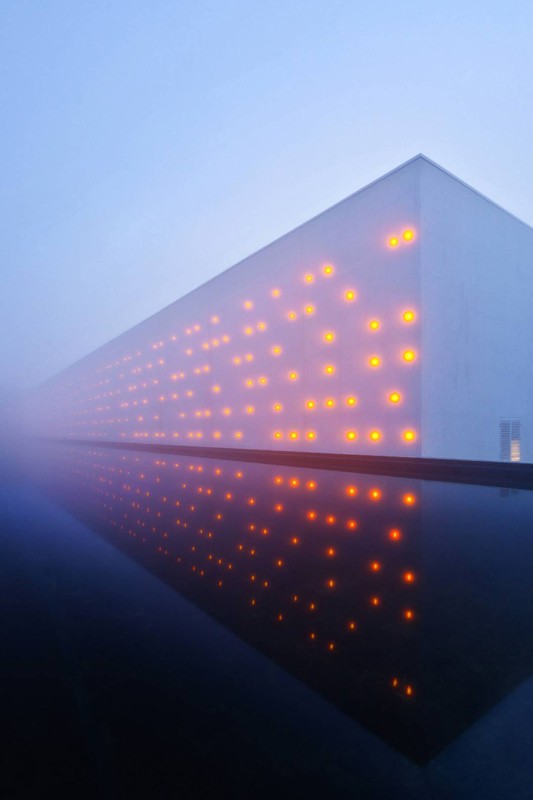
Baggio Piechaud, Ballande Meneret Winery, Bordeaux, France 2013
The renovation of a pre-existing warehouse purchased by the client in the woods of the Medoc peninsula eschews mimetic and vernacular language in any way: the building takes the form of a monolithic white concrete block studded with LED light points that shine, signalling the iconic and unusual presence of the architecture in the rural landscape. The concrete is mixed with a self-cleaning agent that preserves the brightness of the façades and reduces maintenance costs. A shallow pool of water surrounding the structure reflects the image of the building and seems to make the mighty mass magically float.

Ateliers Jean Nouvel, Château La Dominique, Saint Emilion, France 2014
A work of land art: this is how this winery - an extension of an existing stone barn in the centre of the estate - appears. It is inserted among the vineyards with an essential and abstract geometry: four vertical mirrored walls and a terrace/belvedere floating over the landscape. The east and west facades are made of concrete covered with a series of horizontal stainless steel staves polished and lacquered in a bright red, the colour of wine. The north façade features a large mirror that reflects the vines during the day and reveals the fermentation room at night. The roof is a thin horizontal plate, with the lower part covered with the same material as the façades.
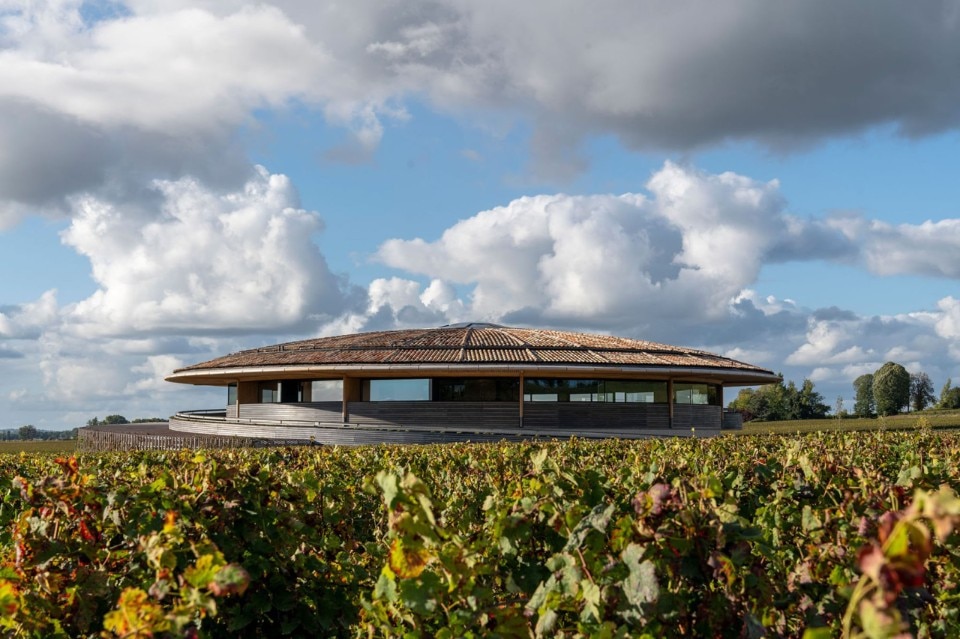
Foster + Partners, Le Dôme winery, Bordeaux, France 2021
The building nestled in the rolling hills of Bordeaux stands as an avant-garde structure to promote an internationally renowned wine. The building, with a circular layout, is characterised by a combination of two ramps: one outside to emphasise the perceptive relationship with the landscape and the other inside to lead the visitor through the different stages of the wine-making process. A gallery on the upper level, with tasting tables, wine bar and entertainment areas, offers a panoramic view of the adjacent vineyards. A wood-clad concrete outer shell envelops the spaces, while a 40-metre diameter wooden roof, composed of sloping beams and recycled terracotta tile cladding, opens into a 6-metre wide central oculus from which natural light filters in.

Studiopizzi, Cantina Vinicola Ceresé, Montevecchia, Lecco, Italy 2023
Situated in the middle of the Natural Park of Montevecchia and the Curone Valley, the structure sits on a hillside, rooted into the ground. A simple geometry defines the architecture, with a rigorous rectangular layout. On the lower level there are spaces for production and a cultural hall, on the upper level a square for events flanked by a glazed volume. The roof, pierced by a staircase and supported by slender columns – all in Corten steel – seems to float in the air and frame the vineyards and small rural settlements dotting the landscape. The work won the Italian Architecture Prize 2024.
Foto Francesca Iovene

Studiopizzi, Cantina Vinicola Ceresé, Montevecchia, Lecco, Italy 2023
Photo Francesca Iovene

DVA Arhitekta, Tomac Winery, Donja Reka, Jasterbarsko, Croatia 2024
In a rural setting punctuated by small farms that have been dedicated to viticulture for centuries, the building delicately fits into the landscape, combining vernacular suggestions and contemporary lexicon. The work is characterised by a massive rectangular volume with a concrete structural skeleton and external thermolaterizio cladding that corresponds to the first level, and by a generous thatched roof supported by a laminated wood structure. At the top, a roof garden houses beds for the cultivation of crops used in biodynamic preparations.
Photo Sandro Lendler

DVA Arhitekta, Tomac Winery, Donja Reka, Jasterbarsko, Croatia 2024
Photo Sandro Lendler

Bord Architectural Studio, Sauska Tokaj, Mád, Hungary 2024
The complex resembles a UFO landed on the hill of Padi-hegy, yet perfectly integrated into its surroundings. Two immaculate bowl-shaped interconnected volumes, each 36 metres in diameter, are inserted at the top of the hill as the epicentre from which the rows of vines depart, giving shape to a land-art composition in which architecture and nature are intertwined. The two buildings, partially underground and crowned by green roofs that soften their impact in the landscape, house on the above-ground level the exhibition spaces, the bar and restaurant overlooking the vineyards through large panoramic terraces and, on the underground level, the winemaking rooms.
Photo Hufton + Crow

Santiago Calatrava architects & engineers, Bodegas Ysios, LaGuardia, Basque Country, Spain 2001
Conceived on the one hand to respond to the client's need for suitable spaces for the production, storage and sale of wine and on the other as an iconic manifesto for the prestigious "Rioja Alavesa" brand, the winery is located in a context of irregular orography punctuated by vineyards. The clear and simple longitudinal layout is developed in elevations with powerful fronts clad on the north by prefabricated concrete panels, on the east and west by aluminium sheets, and on the south by cedar wood slats reminiscent of wine barrels. A sinusoidal roof of laminated wood beams and aluminium lends a dynamic and sculptural character to the architecture.

Santiago Calatrava architects & engineers, Bodegas Ysios, LaGuardia, Basque Country, Spain 2001

Mario Botta, Cantina Petra, Suvereto (Livorno), Italy 2003
The complex sits on an estate of almost 300 hectares of land between hills and vineyards. The building is characterised by a central cylindrical volume sectioned by an inclined plane parallel to the hill, crossed by an imposing staircase and planted with greenery on the roof, and by two porticoed side buildings. The ground floor houses the barrique cellar, the areas for ageing, vinification, bottling and packaging, and the tasting areas; the first floor houses the crushing areas and the technological rooms. With its Prun stone cladding, the work evokes the image of a flower blooming in the heart of the Maremma.

Frank O. Gehry, Marques De Riscal, Elciego, Basque Country, Spain 2006
Photo Roderich Kahn from Commons.Wikimedia

Zaha Hadid architects, R. Lopez de Heredia Viña Tondonia, Haro, Basque Country, Spain 2006
A "new bottle for a historic wine": this is how the intervention commissioned to Zaha Hadid by one of the oldest and most renowned winegrowing families in the region was conceived to protect and enhance an old wooden exhibition pavilion originally transported to the Brussels International Wine Exhibition in 1910 and since then disused. The Iraqi architect has thus designed an enclosure with sinuous and enveloping shapes that seem to evoke a decanter, or a spaceship landed in the Rioja.

Zaha Hadid architects, R. Lopez de Heredia Viña Tondonia, Haro, Basque Country, Spain 2006

Renzo Piano Building Workshop, Rocca di Frassinello, Gavorrano (Grosseto), Italy 2007
A purely functional building conceived to optimise the winery's wine production process but also to host conferences, concerts and events: this is Renzo Piano's vision for the winery in the heart of the Maremma, which revisits the traditional forms of Tuscan architecture in a contemporary key and with an industrial language. The complex consists of an open square, a glass pavilion housing administrative and commercial spaces, a tower towering above the building and from which light filters into the underground spaces, and a wine cellar characterised by a large underground hall, arranged like an amphitheatre, with a capacity of 2,500 oak barrels. Glass and terracotta embody the contamination between industrial and traditional processes in winemaking today.

Sartogo Architetti Associati, Tenuta Ammiraglia - Frescobaldi, Magliano in Toscana (Grosseto), Italy 2008
"A strip of land raised to open a thin, long slit in the natural slope of the land (...): not a winery, but a large seagull's wing facing south that can enjoy a very special microclimate due to its proximity to the sea". This is how the architects describe their work, set in the Maremma landscape like a seagull's wing, in fact, or like the prow of a ship pointing towards the sea. The industrial building, perfectly integrated among the hills and covered with greenery and trees, with its sinuous forms seems to want to embrace the landscape, in a perfect synthesis of artifice and nature.

Sartogo Architetti Associati, Tenuta Ammiraglia - Frescobaldi, Magliano in Toscana (Grosseto), Italy 2008

Rogers Stirk Harbour & Partners (RSHP), Peñafiel, Spain 2008
Rogers Stirk Harbour & Partners (Rshp) has designed the extension of Bodegas Protos, a historic winery producing Ribera del Duero wines. The new triangular building, a modern reinterpretation of a traditional winery, is joined to the existing structures by a gallery and includes an underground cellar for storage, a production area on the upper level and a sunken, terraced garden with panoramic views of the neighbouring castle, through which natural light filters into the office area. Five parabolic arches made of laminated wood and covered with terracotta tiles shape an articulated and light construction, blending its volumetric impact into the landscape.
Photo Lavadodecerebro from wikimedia commons

Rogers Stirk Harbour & Partners (RSHP), Bodegas Protos, Peñafiel, Spain 2008
Photo Ruta del Vino Ribera del Duero from wikimedia commons

Foster + Partners, Bodegas Portia, Ribera del Duero, Spain 2010
The complex located in one of Spain's most vibrant wine-producing areas is characterised by a three-lobed geometry functional to the different phases of the production process: processing, conservation and pouring, which take place in each of the buildings. The concrete structure clad in reddish-coloured cortén steel shingles is reminiscent of the bright, full-bodied colours of the wine.

Álvaro Siza, Quinta do Portal, Sabrosa, Portugal 2010
The "Boutique Winery" dedicated to the production of AOC wines (from Douro to Port to Moscatel), divided into four floors, houses on the first level, almost completely underground, a storage area and services for personnel and warehouses; on the ground floor, the second storage area, dressing rooms and services; on the mezzanine floor, the reception and a tasting room; and on the upper level, an auditorium. The complex clad externally in slate, stone and cork retains an "artificially natural" character that blends well with the vineyards.

Christian de Portzamparc, Château Cheval Blanc, Bordeaux, France 2011
To connote the image of one of the largest wine cellars in Bordeaux, the architect designed a sinuous and enveloping volume in exposed concrete. The work takes the form of a majestic "wine atelier" of 5,500 square metres developed on two levels: the first floor houses 52 rough concrete tanks for maturing wine and a tasting room; the basement houses the production rooms. The building was designed according to sustainability criteria, thanks to the presence of a green terrace on the roof, the studied ventilation system and the mechanism for filtering and reintroducing rainwater.

Arnaldo Pomodoro, Tenuta Castelbuono - Tenute Lunelli, Bevagna (Perugia), Italy 2012
In the Umbrian countryside, Arnaldo Pomodoro's "Carapace" is a work halfway between art and architecture: an "inhabited" sculpture in which artifice and nature blend admirably. The large dome covered in copper and etched with cracks that evoke the earth from which the construction springs encloses an interior with a twilight atmosphere as if inside the belly of a primordial animal, with a majestic structure of three-hinged arches made of laminated wood lattice girders and bright red furnishings that evoke the leaves of the vine.

Archea Associati, Antinori Winery, San Casciano Val di Pesa (Florence), Italy 2012
Literally immersed in the soft hilly landscape of the Chianti region, the Antinori Winery is first and foremost a "geo-morphological" experiment: excavated up to 15 metres into the hillside, the complex of almost 45,000 square metres is for the most part hypogeal and almost invisible from the outside, except for the horizontal slits that follow the green terraces under which the productive and recreational areas are articulated. In the interiors, warm and natural materials such as terracotta, red pigmented concrete and cortén give the spaces a sacred and timeless aura as in a secular cathedral, where the rituals of an ancient rural world coexist with advanced industrial technologies.

Baggio Piechaud, Ballande Meneret Winery, Bordeaux, France 2013
The renovation of a pre-existing warehouse purchased by the client in the woods of the Medoc peninsula eschews mimetic and vernacular language in any way: the building takes the form of a monolithic white concrete block studded with LED light points that shine, signalling the iconic and unusual presence of the architecture in the rural landscape. The concrete is mixed with a self-cleaning agent that preserves the brightness of the façades and reduces maintenance costs. A shallow pool of water surrounding the structure reflects the image of the building and seems to make the mighty mass magically float.

Ateliers Jean Nouvel, Château La Dominique, Saint Emilion, France 2014
A work of land art: this is how this winery - an extension of an existing stone barn in the centre of the estate - appears. It is inserted among the vineyards with an essential and abstract geometry: four vertical mirrored walls and a terrace/belvedere floating over the landscape. The east and west facades are made of concrete covered with a series of horizontal stainless steel staves polished and lacquered in a bright red, the colour of wine. The north façade features a large mirror that reflects the vines during the day and reveals the fermentation room at night. The roof is a thin horizontal plate, with the lower part covered with the same material as the façades.

Foster + Partners, Le Dôme winery, Bordeaux, France 2021
The building nestled in the rolling hills of Bordeaux stands as an avant-garde structure to promote an internationally renowned wine. The building, with a circular layout, is characterised by a combination of two ramps: one outside to emphasise the perceptive relationship with the landscape and the other inside to lead the visitor through the different stages of the wine-making process. A gallery on the upper level, with tasting tables, wine bar and entertainment areas, offers a panoramic view of the adjacent vineyards. A wood-clad concrete outer shell envelops the spaces, while a 40-metre diameter wooden roof, composed of sloping beams and recycled terracotta tile cladding, opens into a 6-metre wide central oculus from which natural light filters in.

Studiopizzi, Cantina Vinicola Ceresé, Montevecchia, Lecco, Italy 2023
Situated in the middle of the Natural Park of Montevecchia and the Curone Valley, the structure sits on a hillside, rooted into the ground. A simple geometry defines the architecture, with a rigorous rectangular layout. On the lower level there are spaces for production and a cultural hall, on the upper level a square for events flanked by a glazed volume. The roof, pierced by a staircase and supported by slender columns – all in Corten steel – seems to float in the air and frame the vineyards and small rural settlements dotting the landscape. The work won the Italian Architecture Prize 2024.
Foto Francesca Iovene

Studiopizzi, Cantina Vinicola Ceresé, Montevecchia, Lecco, Italy 2023
Photo Francesca Iovene

DVA Arhitekta, Tomac Winery, Donja Reka, Jasterbarsko, Croatia 2024
In a rural setting punctuated by small farms that have been dedicated to viticulture for centuries, the building delicately fits into the landscape, combining vernacular suggestions and contemporary lexicon. The work is characterised by a massive rectangular volume with a concrete structural skeleton and external thermolaterizio cladding that corresponds to the first level, and by a generous thatched roof supported by a laminated wood structure. At the top, a roof garden houses beds for the cultivation of crops used in biodynamic preparations.
Photo Sandro Lendler

DVA Arhitekta, Tomac Winery, Donja Reka, Jasterbarsko, Croatia 2024
Photo Sandro Lendler

Bord Architectural Studio, Sauska Tokaj, Mád, Hungary 2024
The complex resembles a UFO landed on the hill of Padi-hegy, yet perfectly integrated into its surroundings. Two immaculate bowl-shaped interconnected volumes, each 36 metres in diameter, are inserted at the top of the hill as the epicentre from which the rows of vines depart, giving shape to a land-art composition in which architecture and nature are intertwined. The two buildings, partially underground and crowned by green roofs that soften their impact in the landscape, house on the above-ground level the exhibition spaces, the bar and restaurant overlooking the vineyards through large panoramic terraces and, on the underground level, the winemaking rooms.
Photo Hufton + Crow
From Foster to Nouvel, Calatrava to Hadid, a review of excellent projects that make a home for some of the most celebrated wines on the planet. Read more
08
A century of evolution of the minimalist home: 9 signature examples
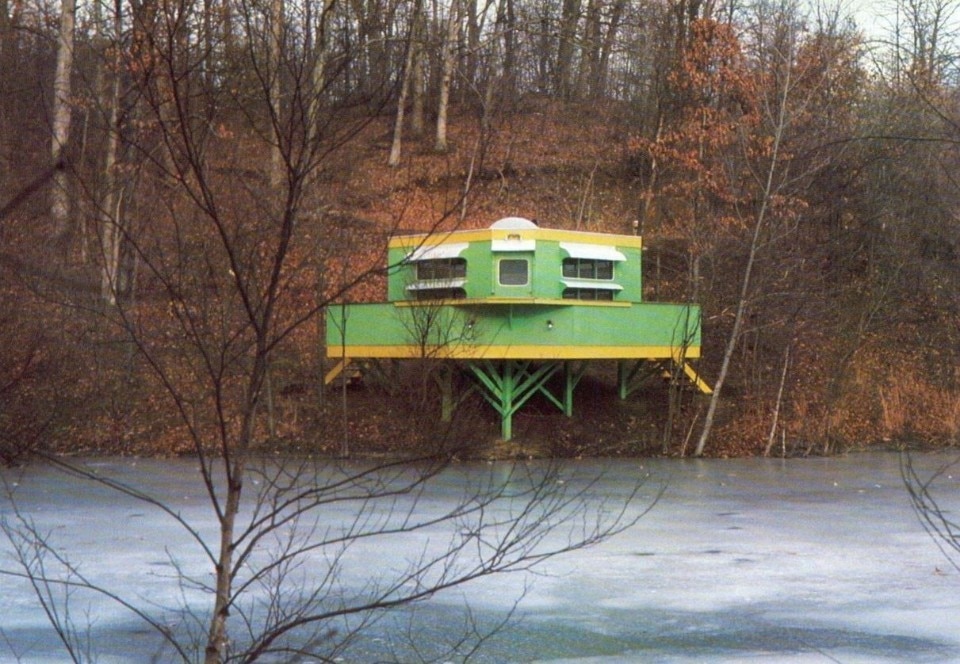
The minimalist home has not always been an architectural theme. In the Western world, design culture has associated a certain size – minimal – with a certain function – housing – only in the last century. Primarily, the minimalist home has been intended as the initial house for everyone. Beginning from the late 1910s, architects belonging to the Modern Movement, who held socialist and progressive ideals, created two distinct types of designs: extravagant mansions as manifestos for wealthy and educated clients, and small but “dignified” dwellings to be mass-produced in large quantities. The modernist existenzminimum, available in various forms, embodies simplicity and lacks ornamentation, as these features are essential for enabling industrialization and the construction of vast quantities in a truly democratic manner. Read more
09
At Nicola Lagioia’s home
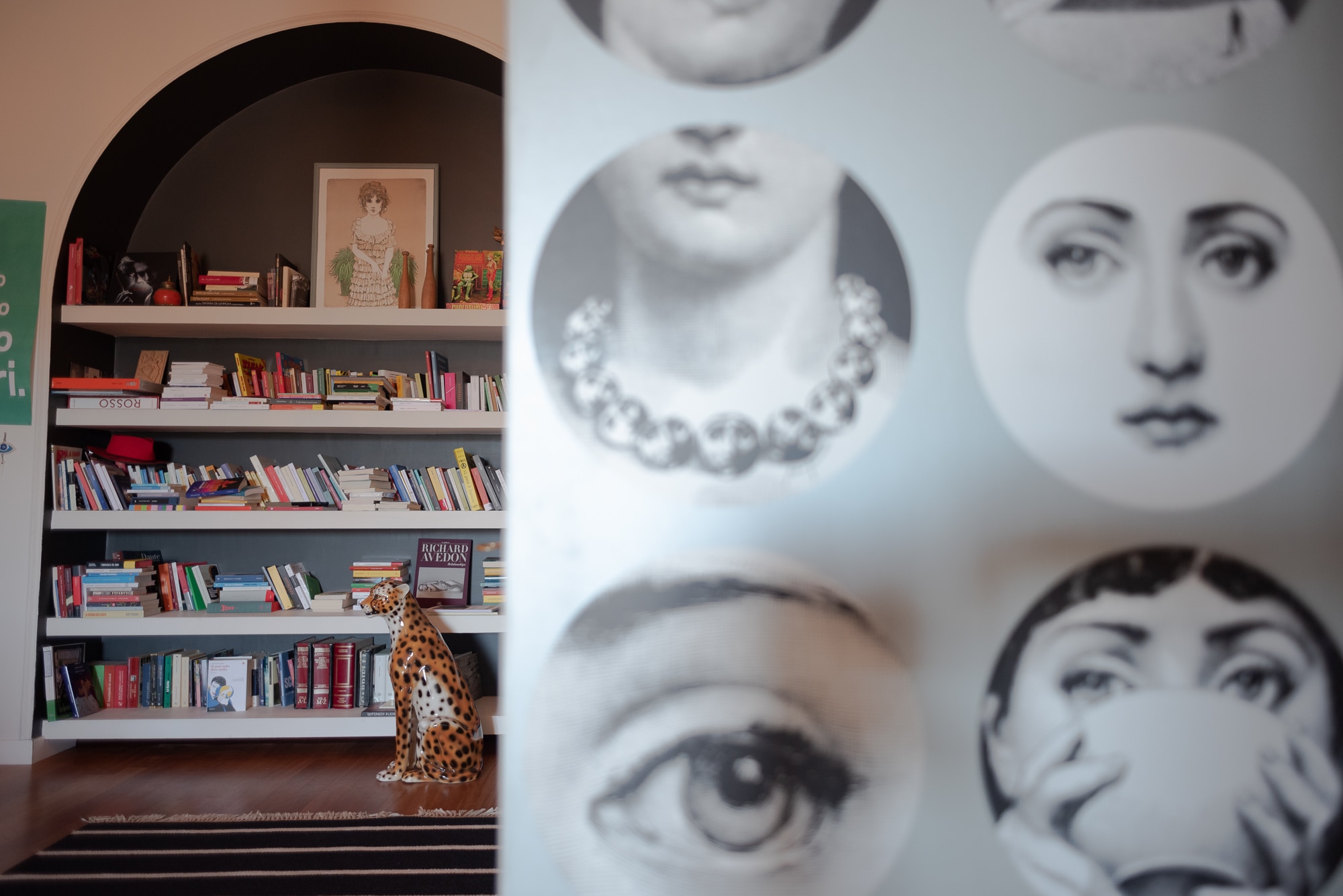
 View gallery
View gallery
“How do I explain to my wife that when I look out the window I’m working?” said Joseph Conrad, author of Heart of Darkness. But that’s certainly not the case with Nicola Lagioia. In his Roman home, which he shares with his wife, the writer Chiara Tagliaferri, no explanations are necessary because they both share the same profession. Of all the jobs and vocations, being a writer is one that by its very nature defies the separation of work and private life. Read more
10
Brad Pitt buys the Steel House in Los Angeles for $5.5 million
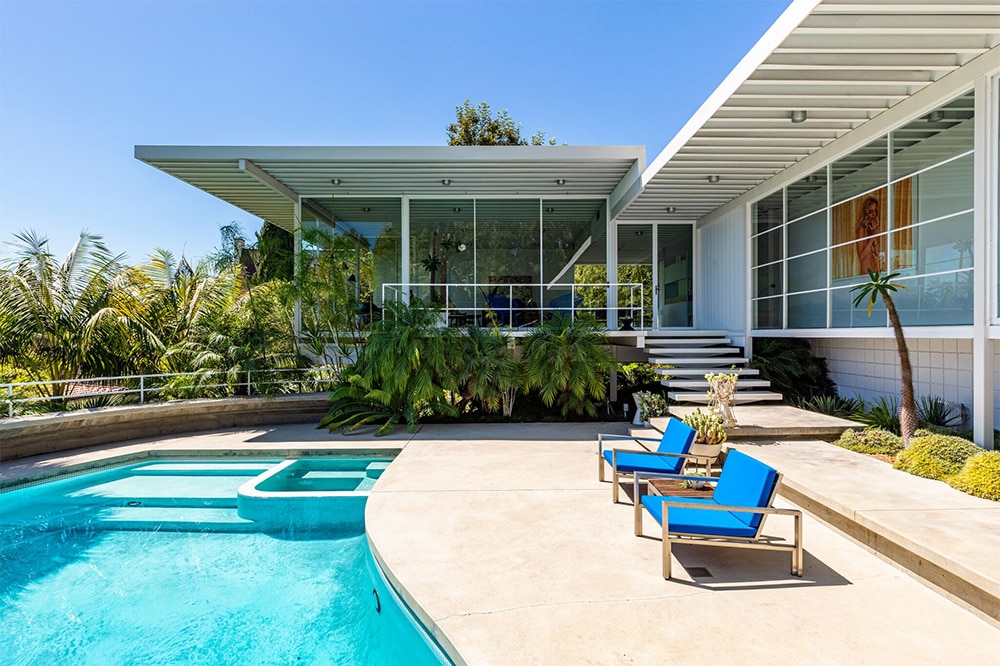
 View gallery
View gallery
Left without a foothold in Los Angeles, Brad Pitt – famous architecture lover – bought one of the villas that have made the history of the city: the Steel House, a small steel and glass pavilion built in 1960 in the hills of Los Feliz and designed by the little-known Neil M. Johnson. Read more
11
For sale one of Jean Nouvel's villas in the “presqu’île des milliardaires”
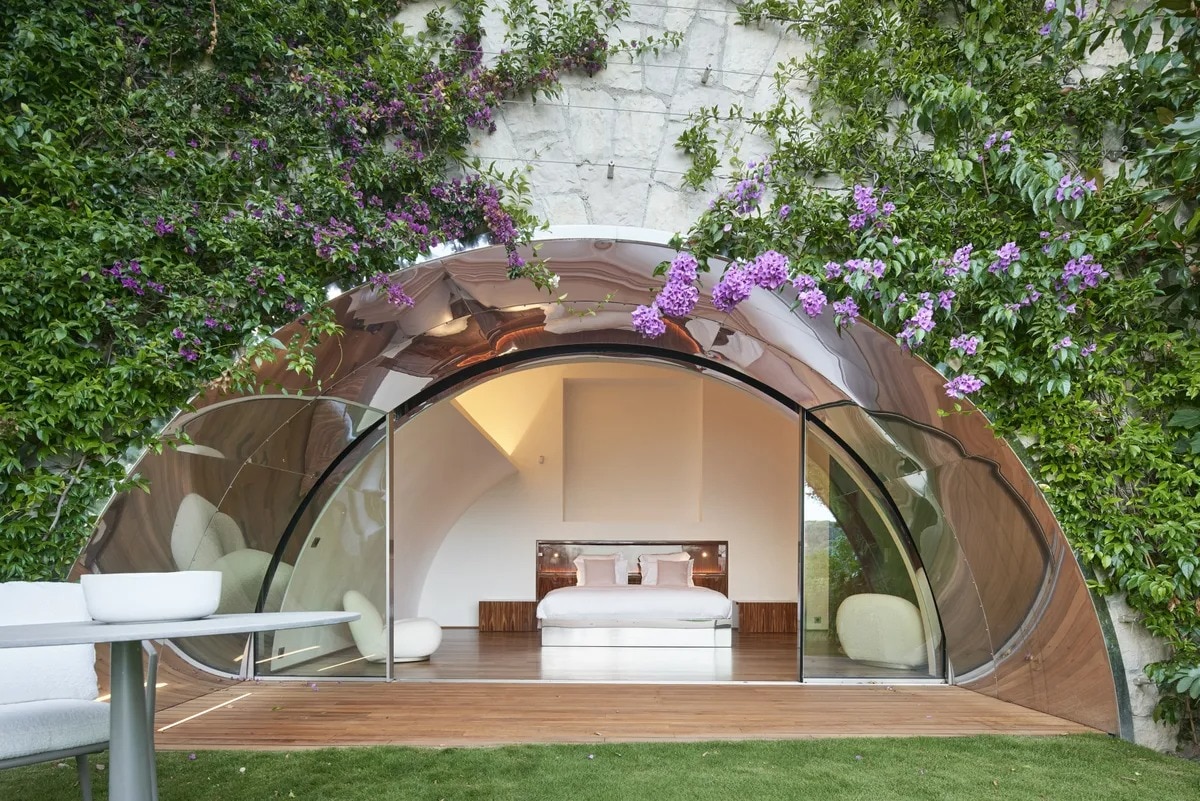
 View gallery
View gallery
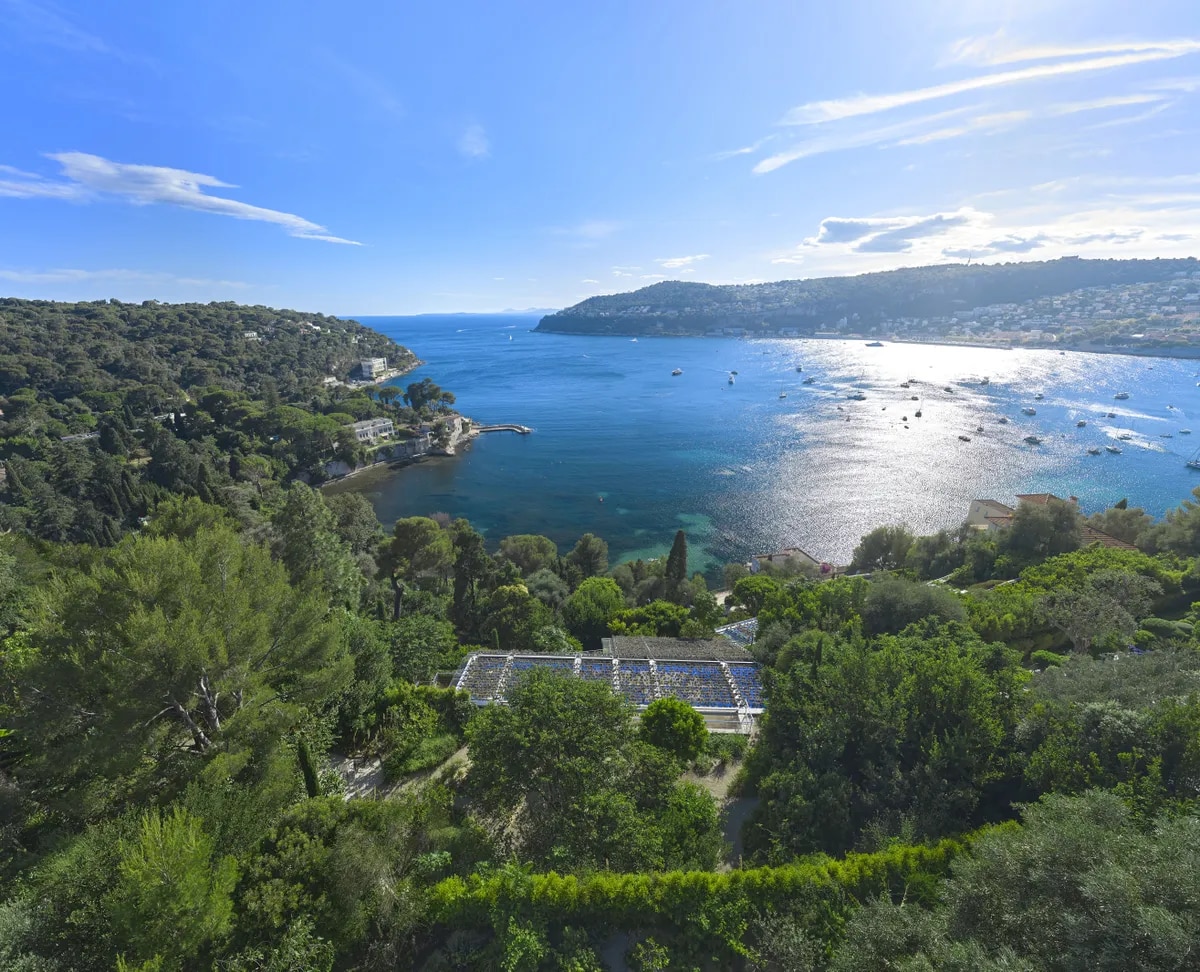
Villa Grand Cap. Saint-Jean-Cap-Ferrat, France.
Image courtesy of Sotheby’s International Realty.
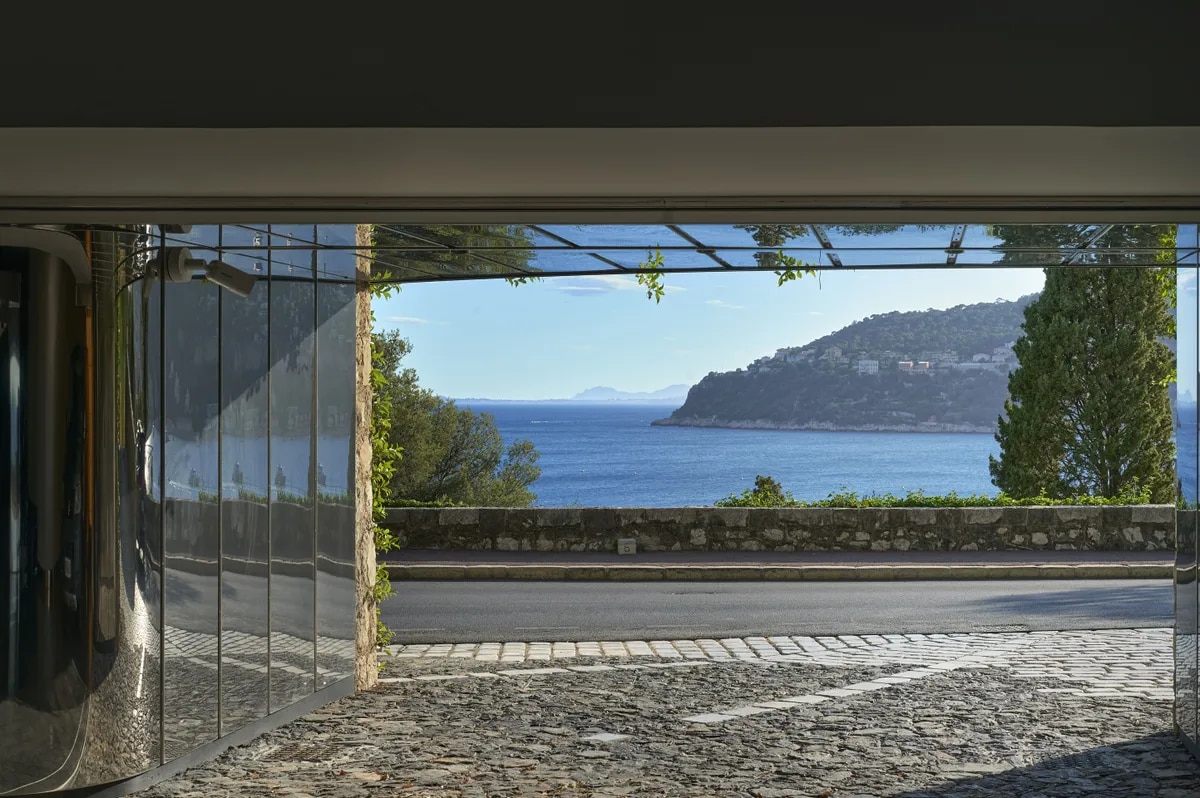
Villa Grand Cap. Saint-Jean-Cap-Ferrat, France.
Image courtesy of Sotheby’s International Realty.
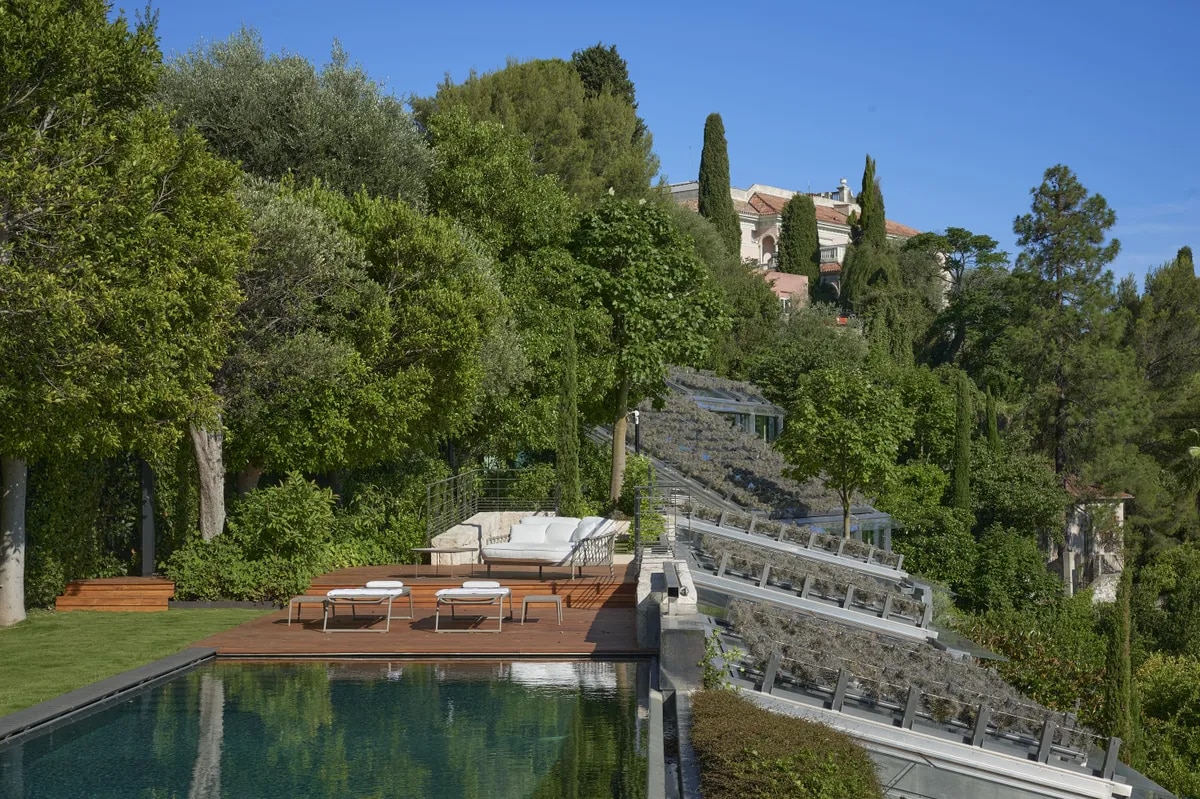
Villa Grand Cap. Saint-Jean-Cap-Ferrat, France.
Image courtesy of Sotheby’s International Realty.
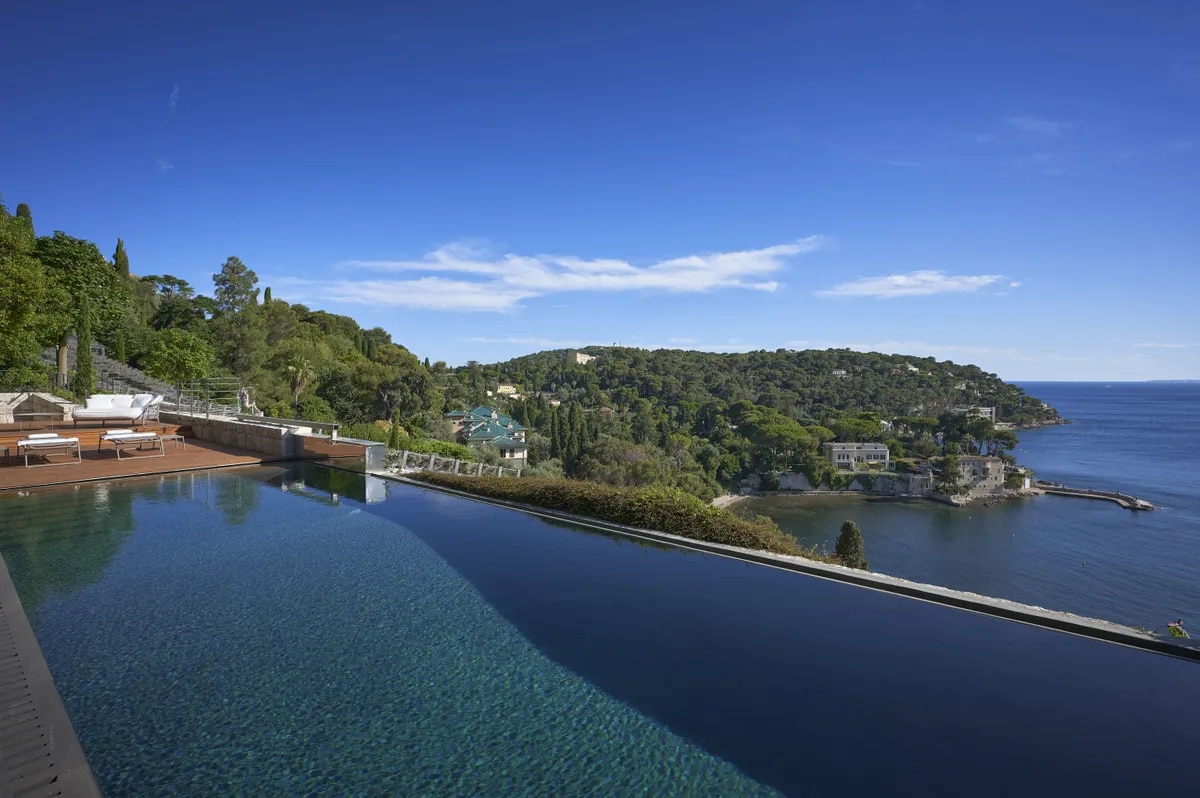
Villa Grand Cap. Saint-Jean-Cap-Ferrat, France.
Image courtesy of Sotheby’s International Realty.
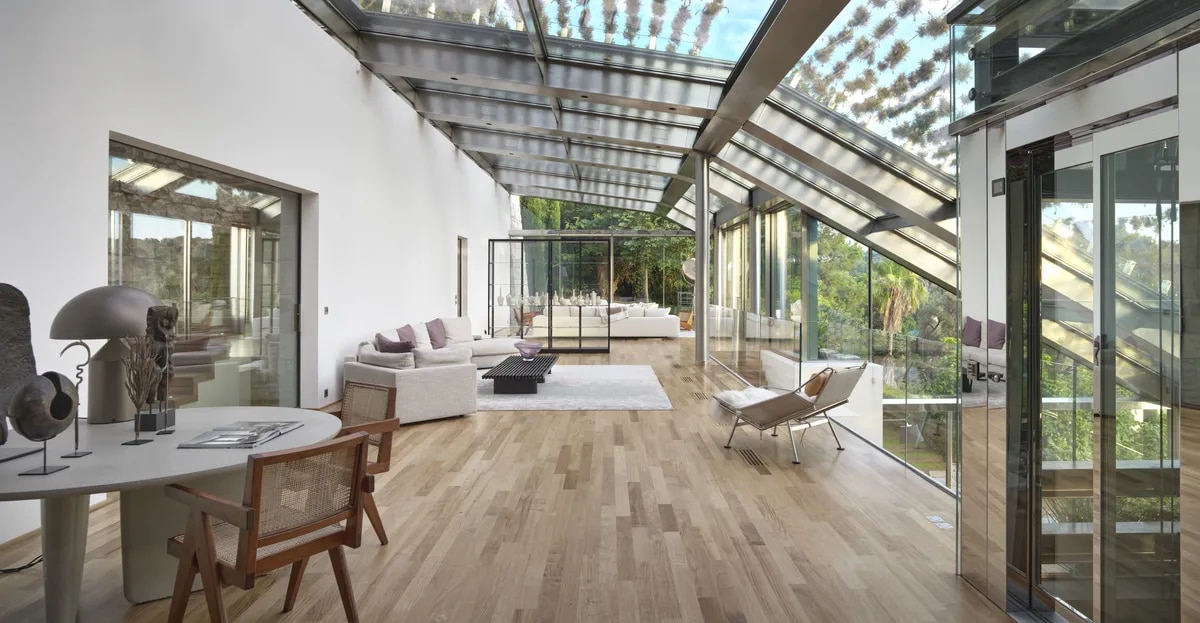
Villa Grand Cap. Saint-Jean-Cap-Ferrat, France.
Image courtesy of Sotheby’s International Realty.
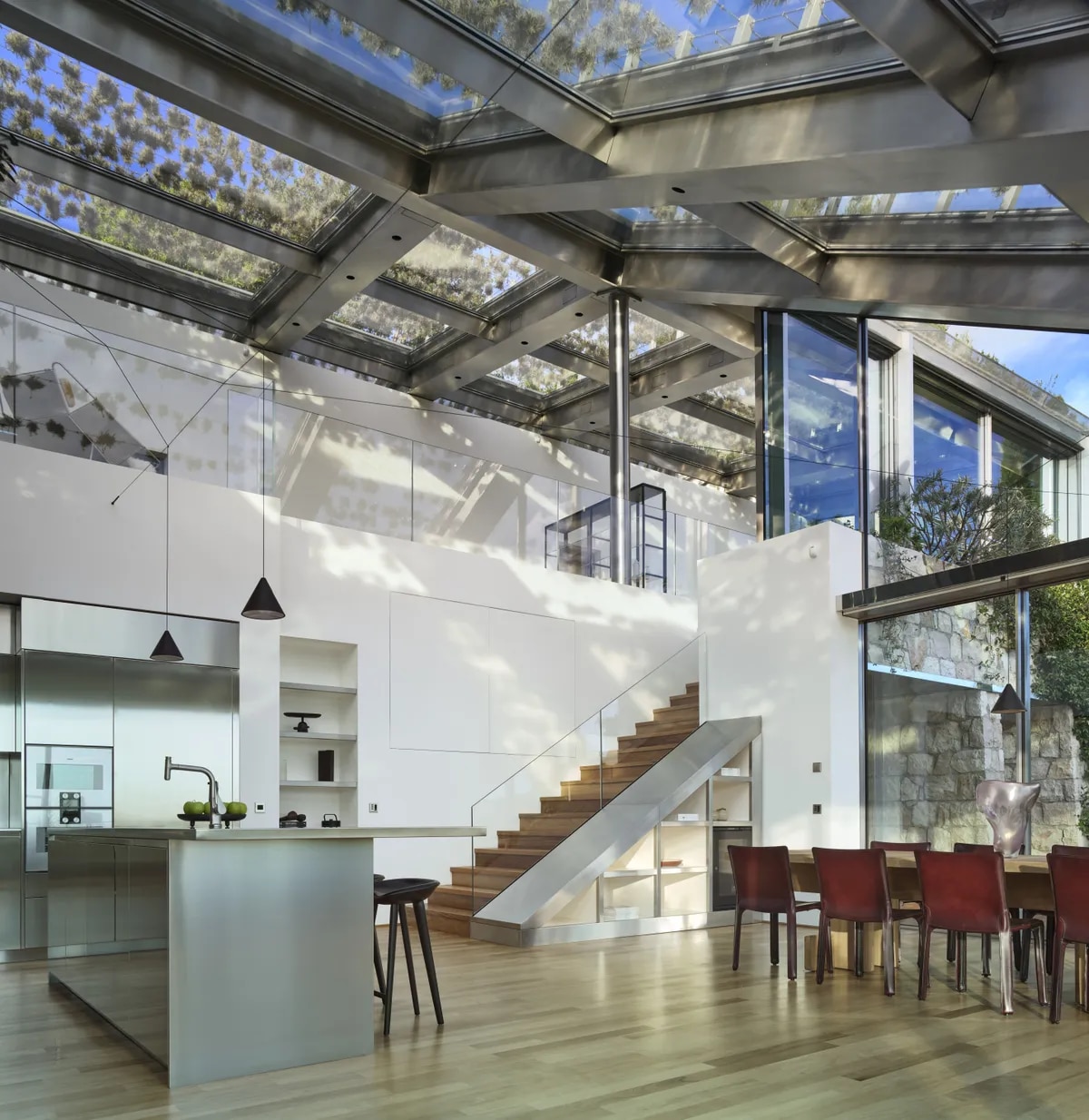
Villa Grand Cap. Saint-Jean-Cap-Ferrat, France.
Image courtesy of Sotheby’s International Realty.
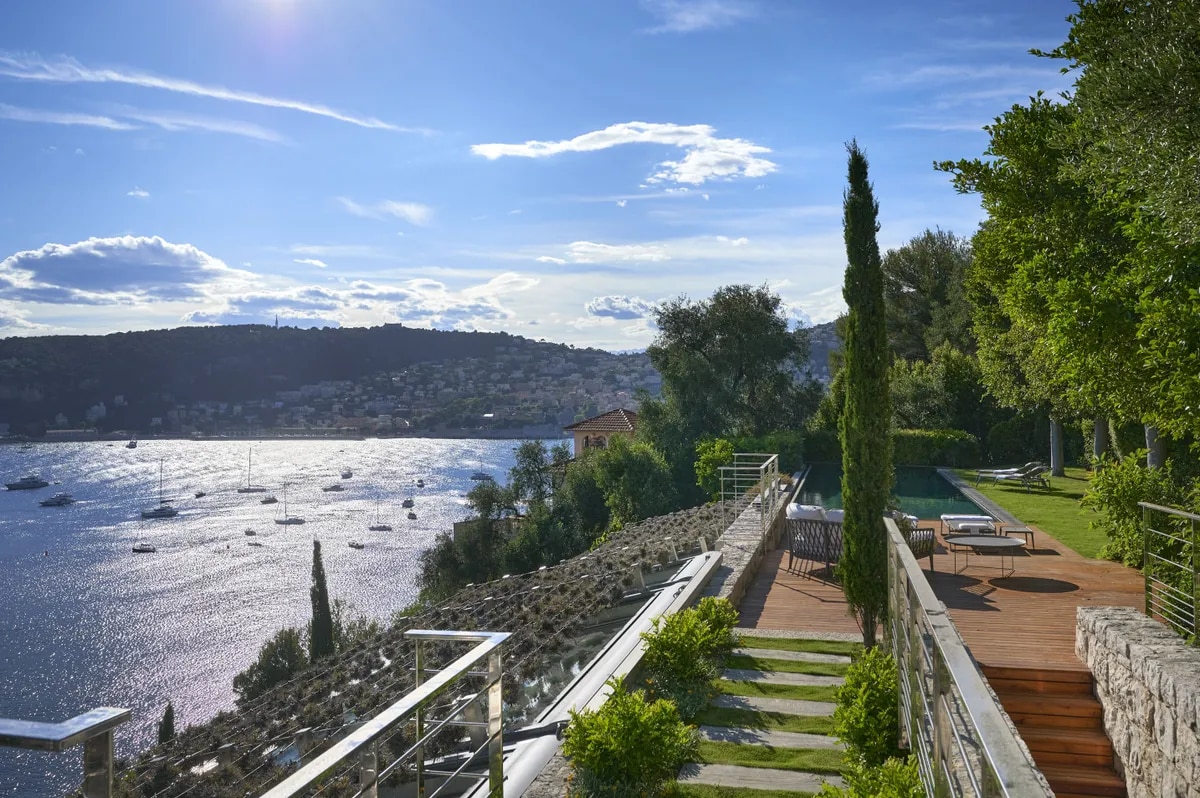
Villa Grand Cap. Saint-Jean-Cap-Ferrat, France.
Image courtesy of Sotheby’s International Realty.
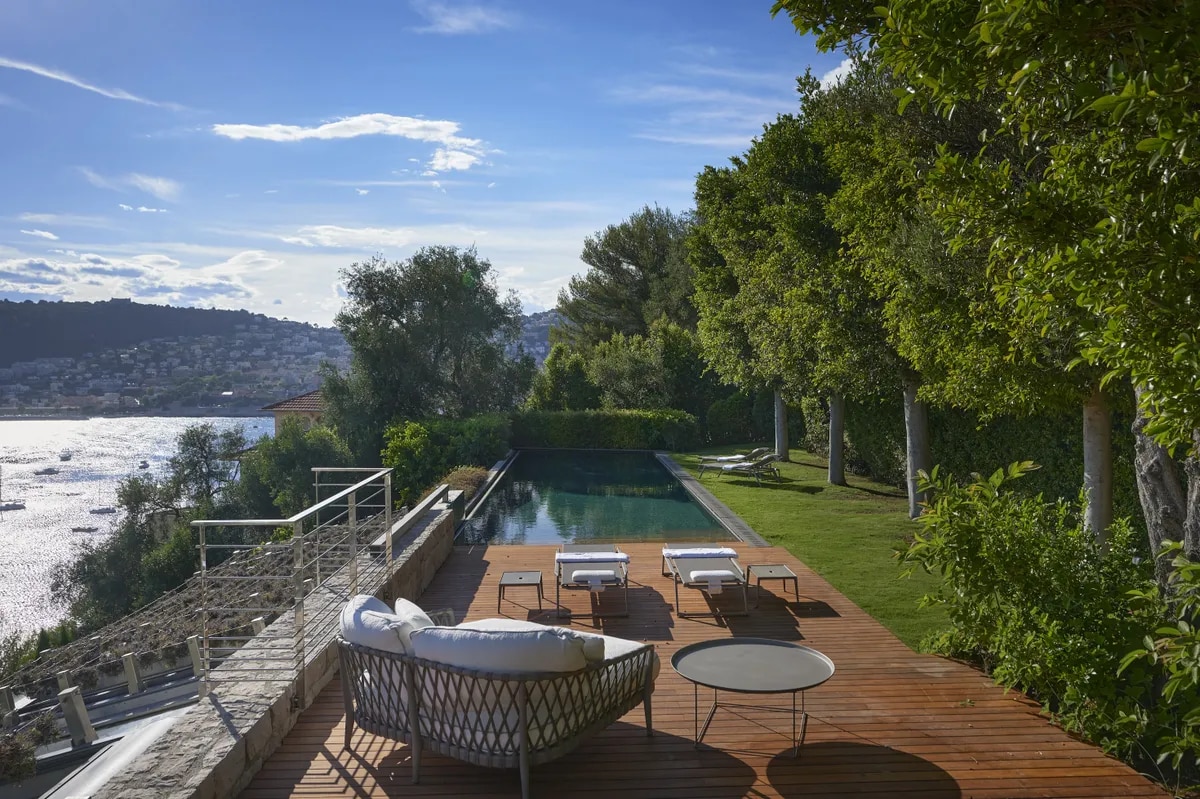
Villa Grand Cap. Saint-Jean-Cap-Ferrat, France.
Image courtesy of Sotheby’s International Realty.
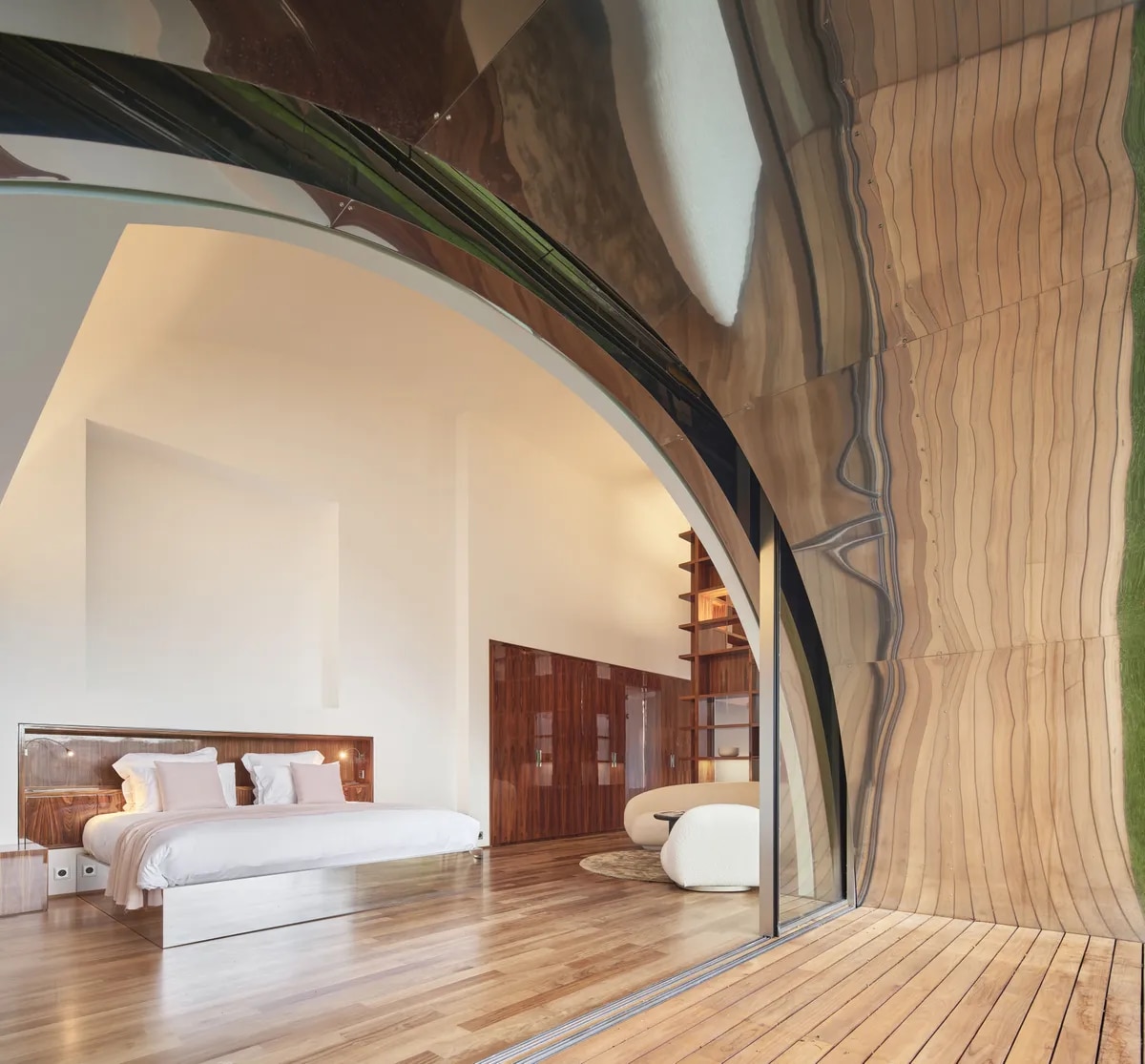
Villa Grand Cap. Saint-Jean-Cap-Ferrat, France.
Image courtesy of Sotheby’s International Realty.
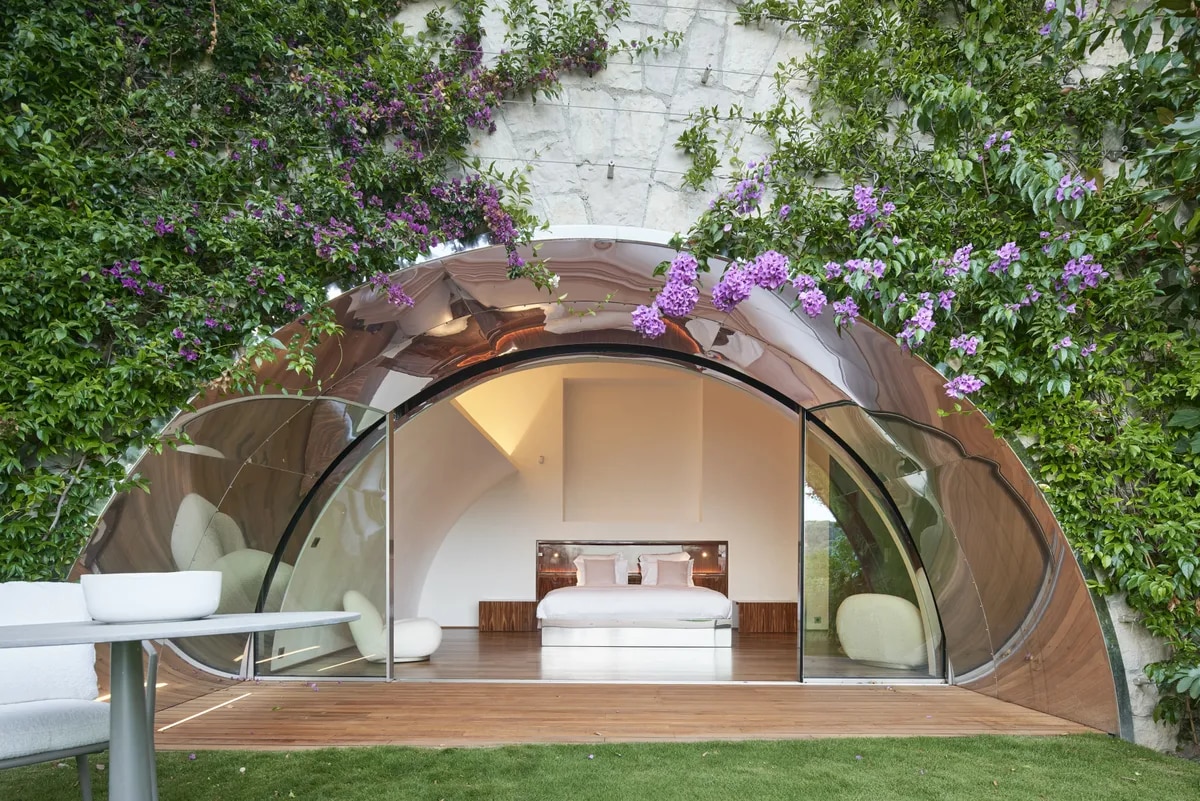
Villa Grand Cap. Saint-Jean-Cap-Ferrat, France.
Image courtesy of Sotheby’s International Realty.
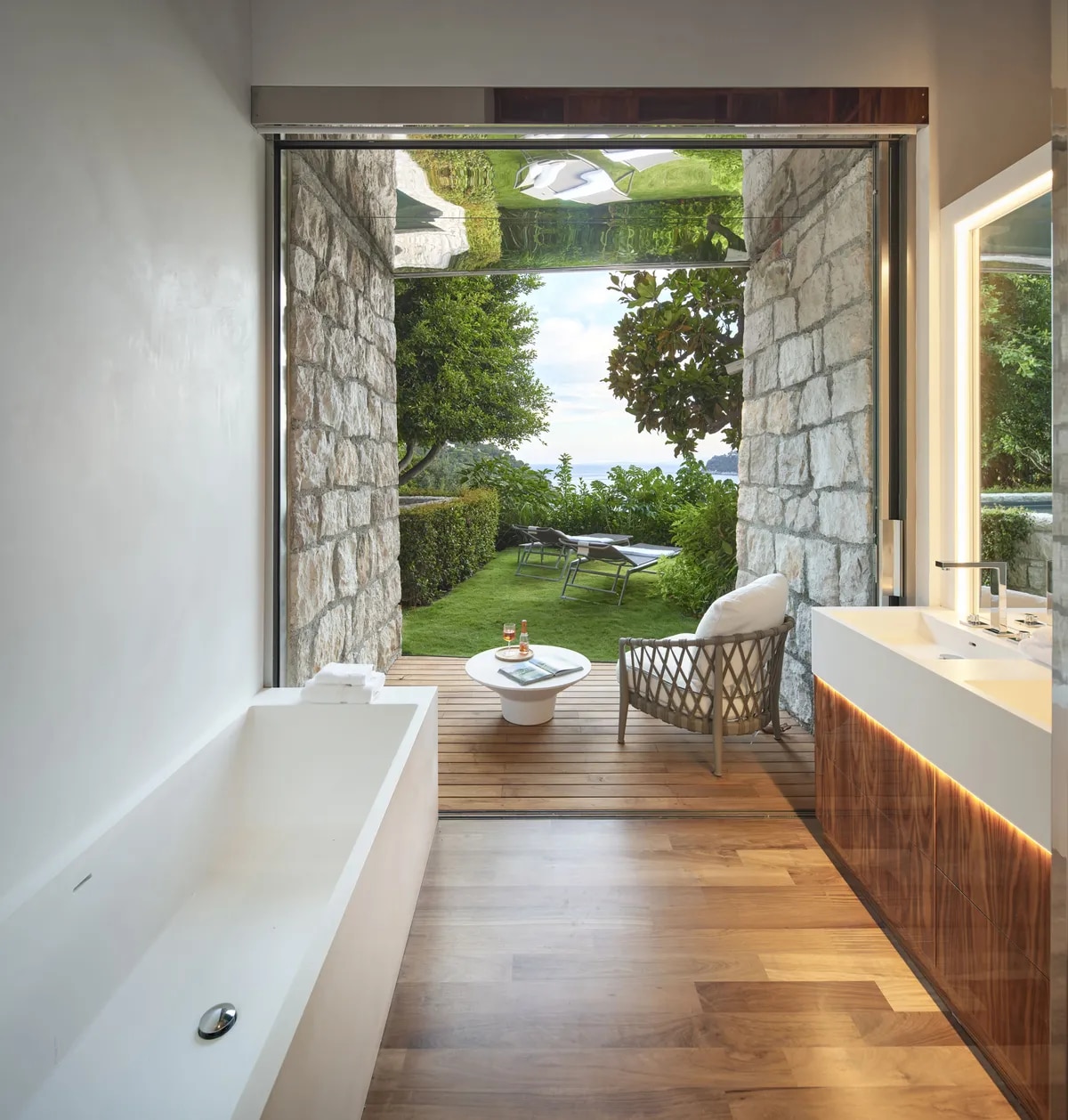
Villa Grand Cap. Saint-Jean-Cap-Ferrat, France.
Image courtesy of Sotheby’s International Realty.
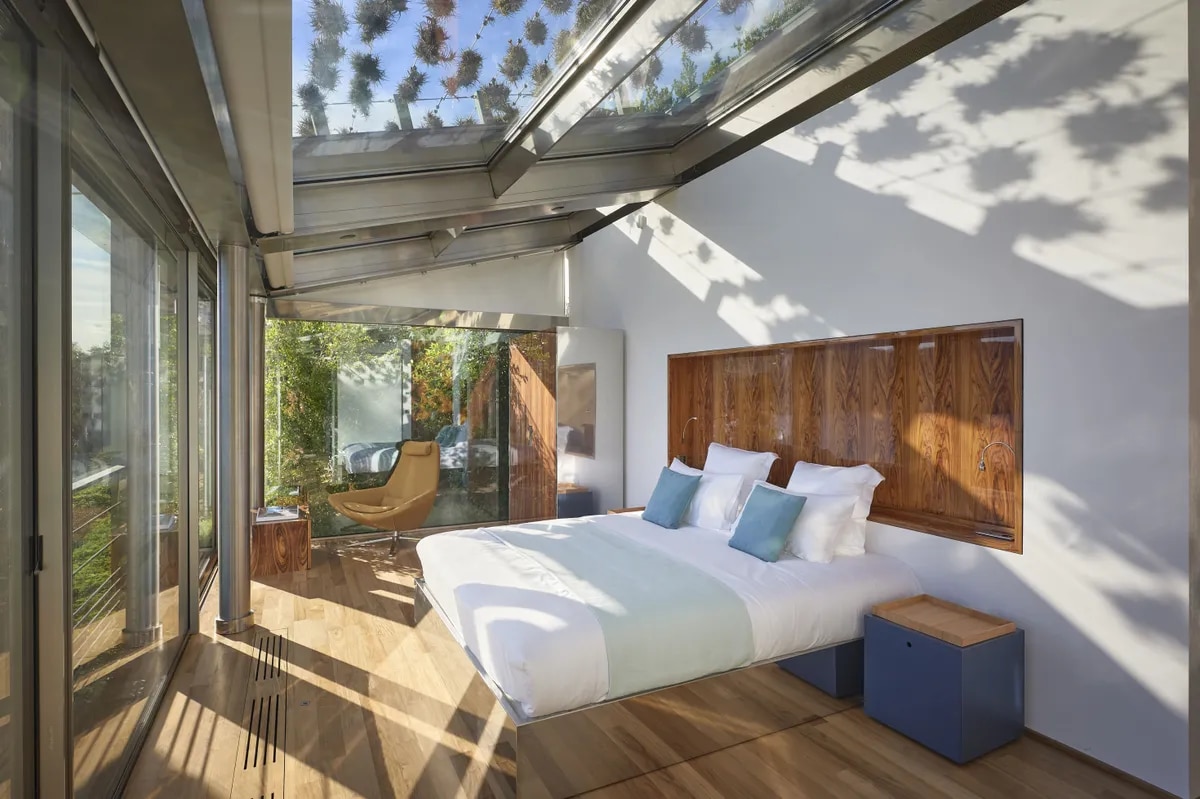
Villa Grand Cap. Saint-Jean-Cap-Ferrat, France.
Image courtesy of Sotheby’s International Realty.
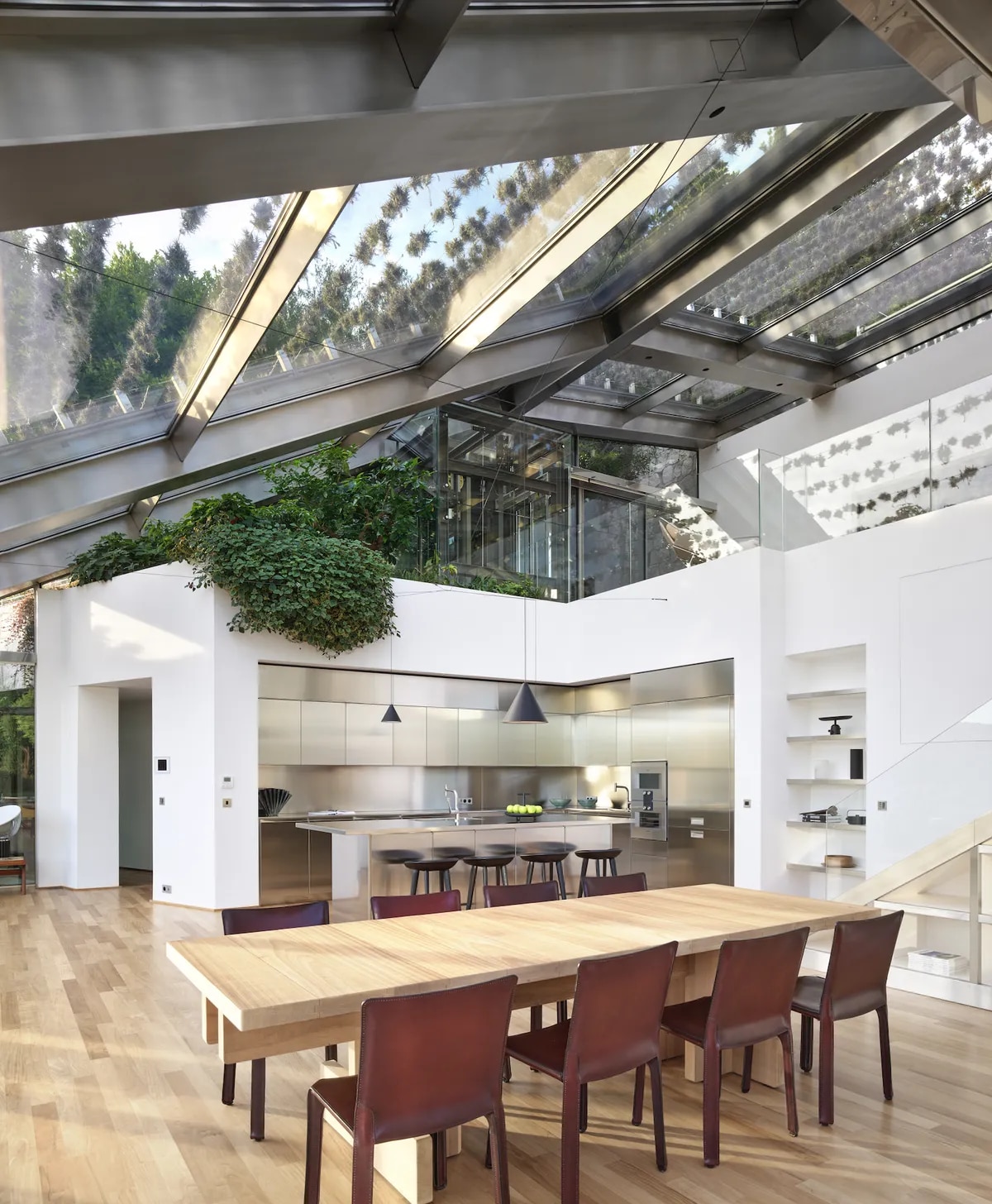
Villa Grand Cap. Saint-Jean-Cap-Ferrat, France.
Image courtesy of Sotheby’s International Realty.
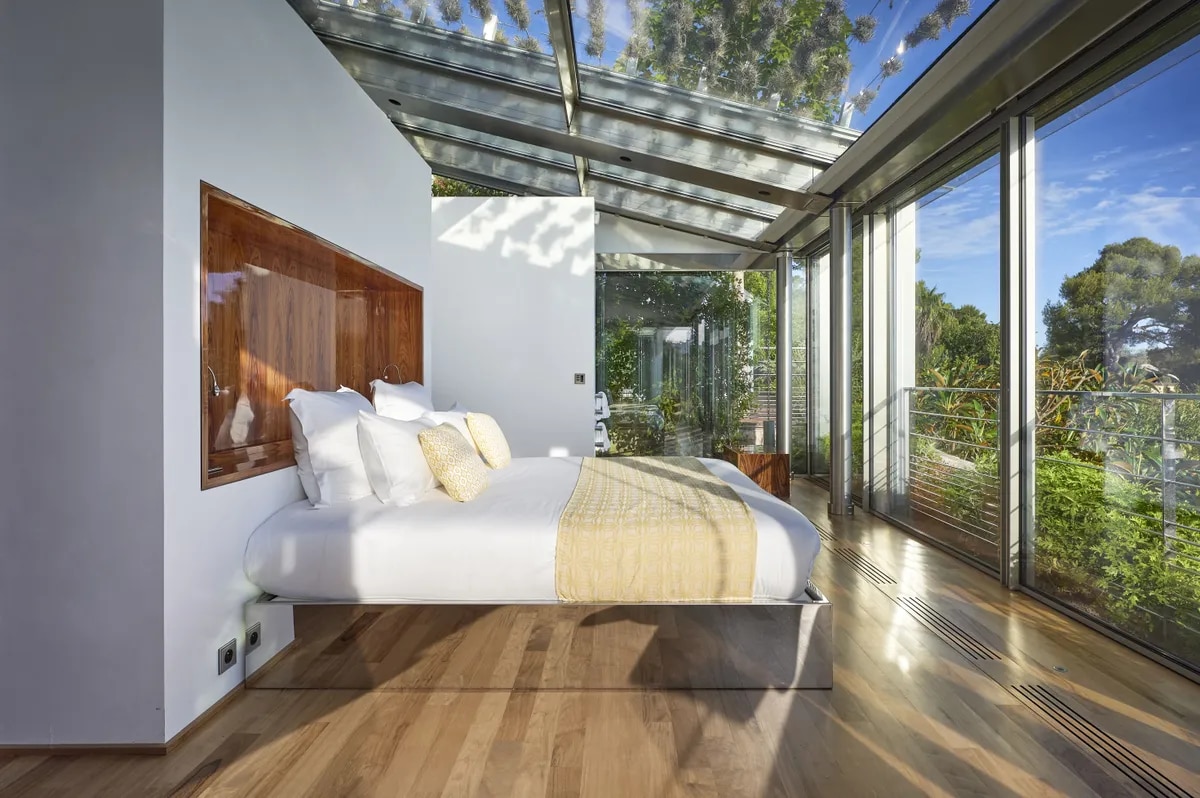
Villa Grand Cap. Saint-Jean-Cap-Ferrat, France.
Image courtesy of Sotheby’s International Realty.
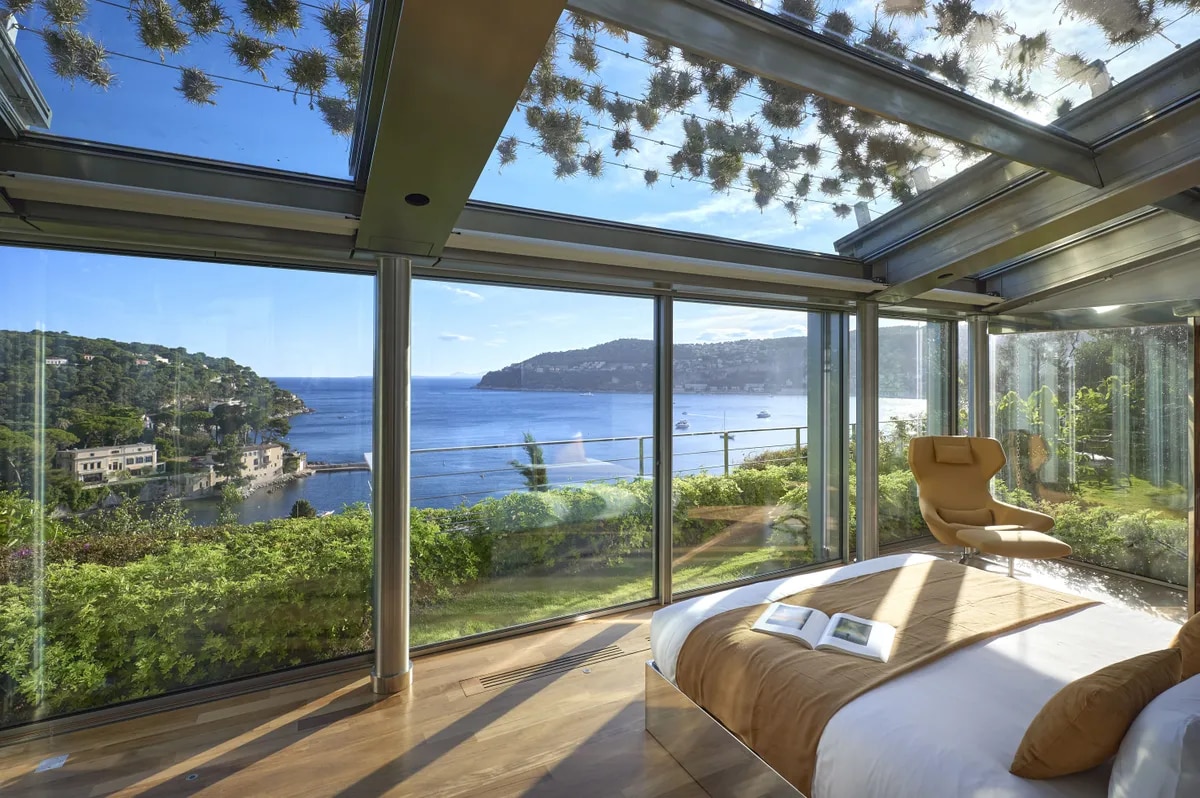
Villa Grand Cap. Saint-Jean-Cap-Ferrat, France.
Image courtesy of Sotheby’s International Realty.

Villa Grand Cap. Saint-Jean-Cap-Ferrat, France.
Image courtesy of Sotheby’s International Realty.

Villa Grand Cap. Saint-Jean-Cap-Ferrat, France.
Image courtesy of Sotheby’s International Realty.

Villa Grand Cap. Saint-Jean-Cap-Ferrat, France.
Image courtesy of Sotheby’s International Realty.

Villa Grand Cap. Saint-Jean-Cap-Ferrat, France.
Image courtesy of Sotheby’s International Realty.

Villa Grand Cap. Saint-Jean-Cap-Ferrat, France.
Image courtesy of Sotheby’s International Realty.

Villa Grand Cap. Saint-Jean-Cap-Ferrat, France.
Image courtesy of Sotheby’s International Realty.

Villa Grand Cap. Saint-Jean-Cap-Ferrat, France.
Image courtesy of Sotheby’s International Realty.

Villa Grand Cap. Saint-Jean-Cap-Ferrat, France.
Image courtesy of Sotheby’s International Realty.

Villa Grand Cap. Saint-Jean-Cap-Ferrat, France.
Image courtesy of Sotheby’s International Realty.

Villa Grand Cap. Saint-Jean-Cap-Ferrat, France.
Image courtesy of Sotheby’s International Realty.

Villa Grand Cap. Saint-Jean-Cap-Ferrat, France.
Image courtesy of Sotheby’s International Realty.

Villa Grand Cap. Saint-Jean-Cap-Ferrat, France.
Image courtesy of Sotheby’s International Realty.

Villa Grand Cap. Saint-Jean-Cap-Ferrat, France.
Image courtesy of Sotheby’s International Realty.

Villa Grand Cap. Saint-Jean-Cap-Ferrat, France.
Image courtesy of Sotheby’s International Realty.

Villa Grand Cap. Saint-Jean-Cap-Ferrat, France.
Image courtesy of Sotheby’s International Realty.
In the French Riviera, on the hills of Saint-Jean-Cap-Ferrat, the Villa Grand Cap, designed by the French architect and designer Jean Nouvel, hit the market for 46€ million. The 5.866-square-feet house is developed over five levels, and is characterized by a steel structure that supports a large glazed roof, which creates an extraordinary dialogue with the surrounding nature and floods every room with light. Read more
12
7 new railway stations, from Rome to Hong Kong, from Calatrava to Zaha Hadid
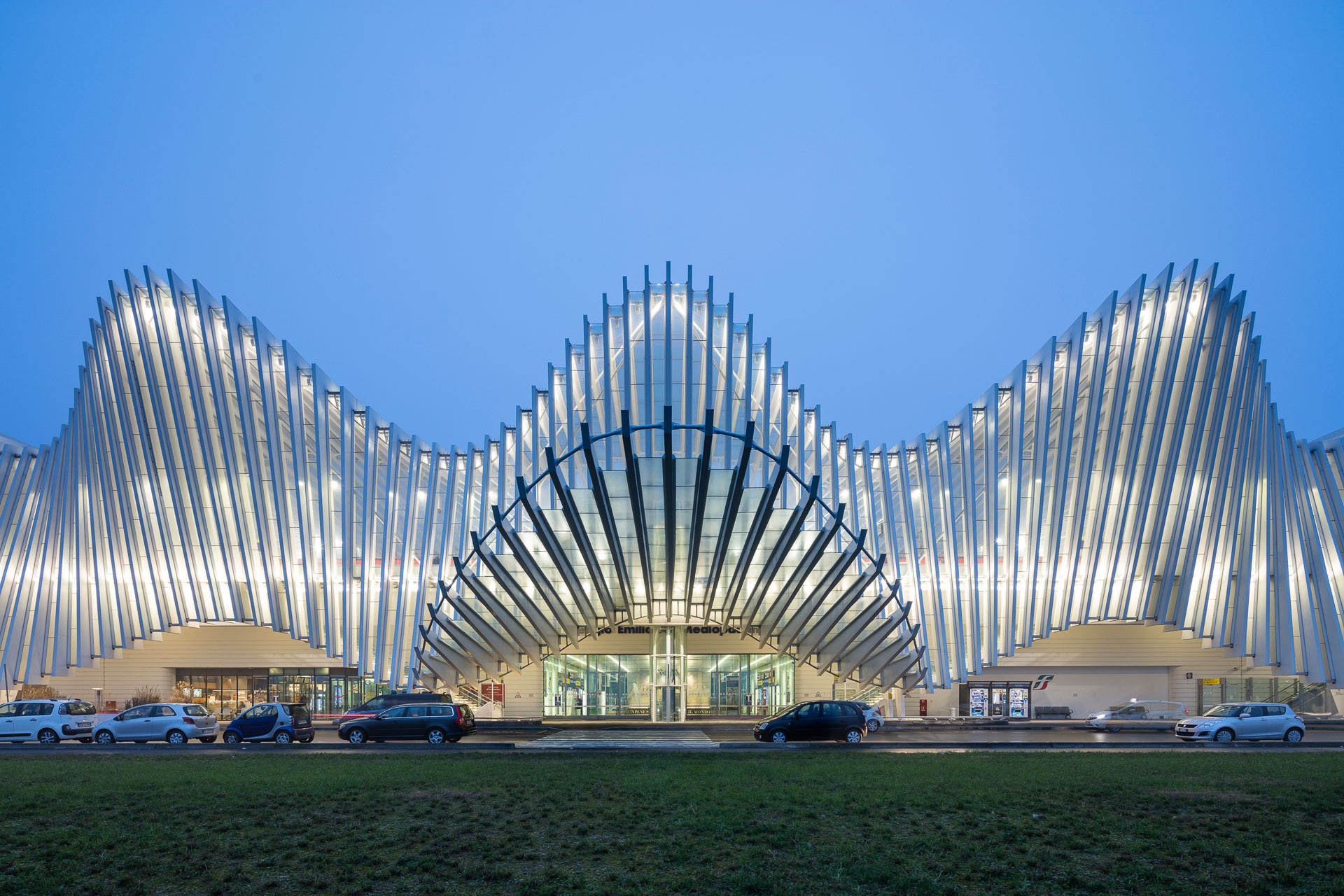
 View gallery
View gallery
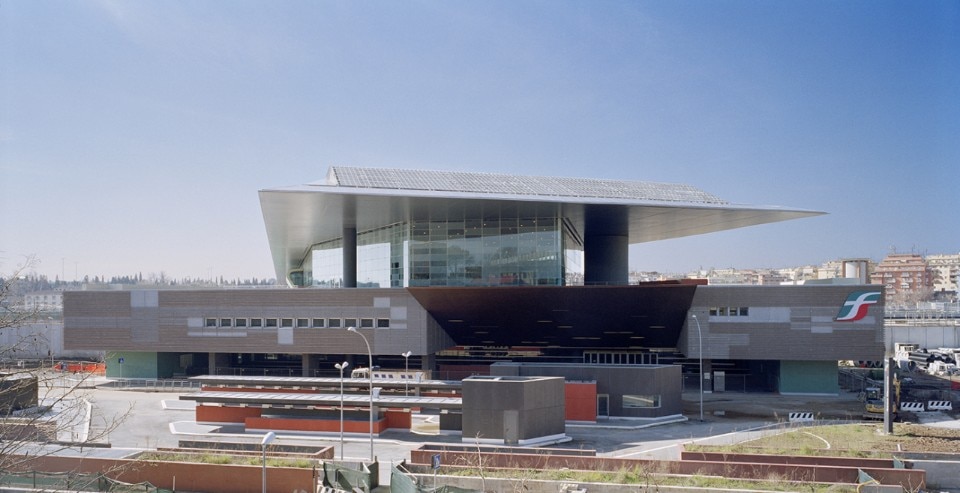
ABDR architetti associati, Roma Tiburtina High Speed Railway Station, Rome, Italy 2011
Located at one of the crucial nodes in the capital's metropolitan development, the station was designed not only to fulfil the requirements of a strategic junction for international and regional traffic but also as an "urban piazza" capable of mending the caesura between the Nomentano and Pietralata neighbourhoods, which have always been separated by the railway line. The "bridge" building, inspired by the nineteenth-century passages typology, is an imposing volume about 350 m long and 60 m wide, suspended over the tracks and resting on the two entrance halls from Nomentano and Pietralata. A vast metal roof consisting of an extra-roofed reticular structure serves as protection and screening for the entirely glazed façades, from which the blocks housing VIP lounges, internet offices, offices and restaurants are suspended.
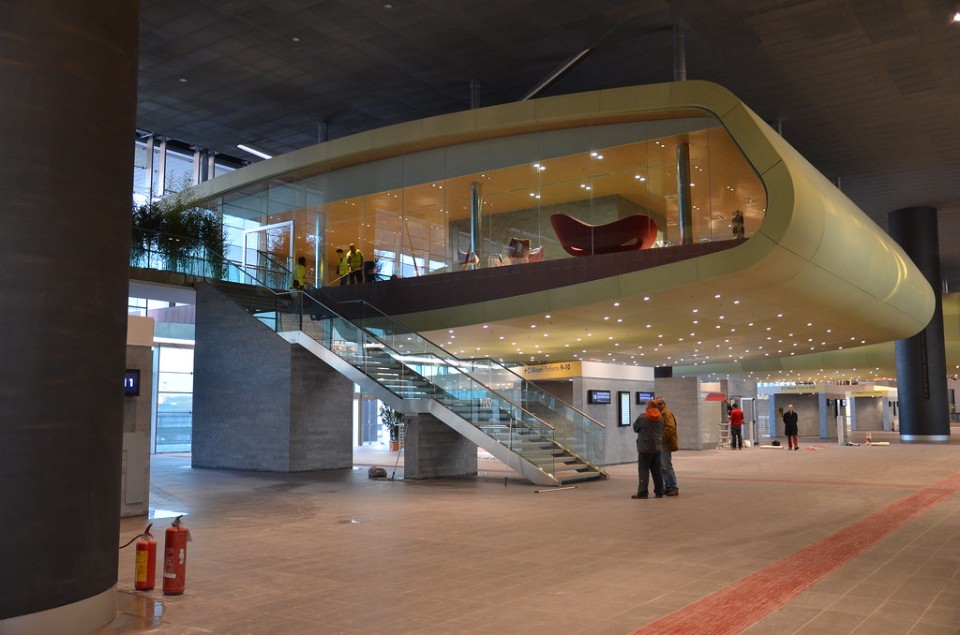
ABDR architetti associati, Roma Tiburtina High Speed Railway Station, Rome, Italy 2011
Photo Pierina Mariani from CC
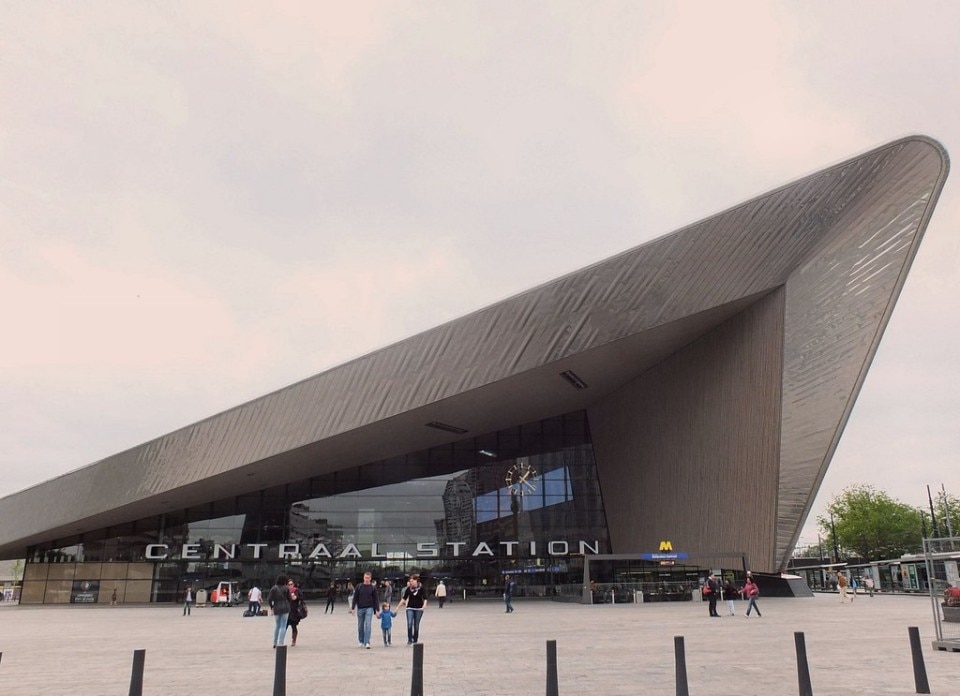
Team CS (Benthem Crouwel Architects, MVSA Meyer en van Schooten Architecten, West 8), Rotterdam Centraal Station, Rotterdam, The Netherlands 2013
With more than 110,000 passengers a day, Rotterdam Centraal Station is one of the major transport hubs in the Netherlands. The construction of the imposing building was an opportunity to reconnect a heterogeneous urban fabric: if on the south side, adjacent to a residential district of lesser passage, the façade is sober and transparent, on the north side the work connotes itself as an iconic "gateway" to the city, with a glazed aerodynamic volume entirely clad in steel. Inside, an airy, light-filled environment welcomes travellers: a weave of "Y"-shaped steel columns supports the 250 m long transparent roof, composed of glazed elements integrated with solar cells.
Photo Gerard Styolk (vers l'automne) from CC
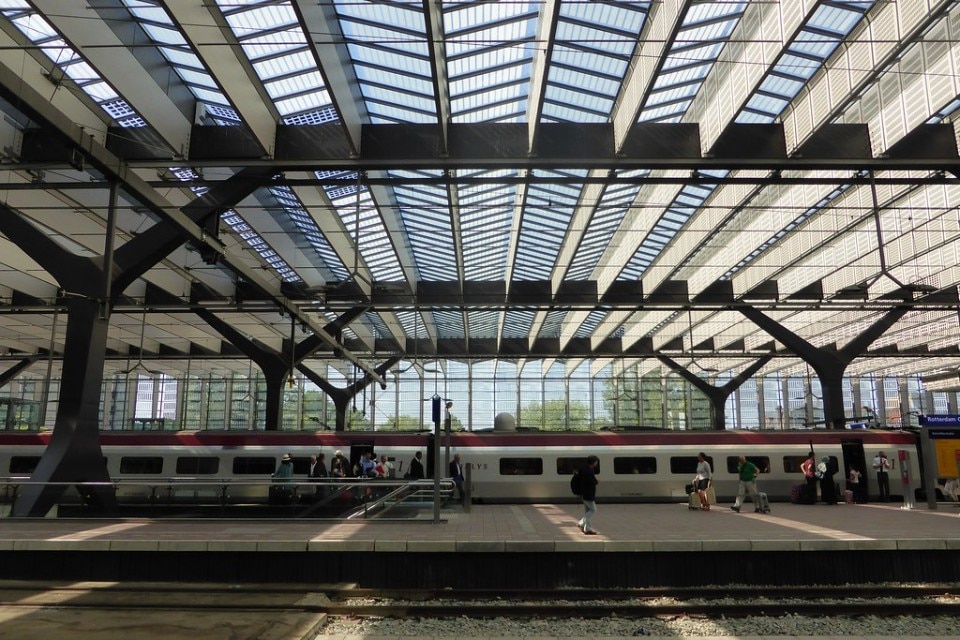
Team CS (Benthem Crouwel Architects, MVSA Meyer en van Schooten Architecten, West 8), Rotterdam Centraal Station, Rotterdam, The Netherlands 2013
Photo yellow book from CC
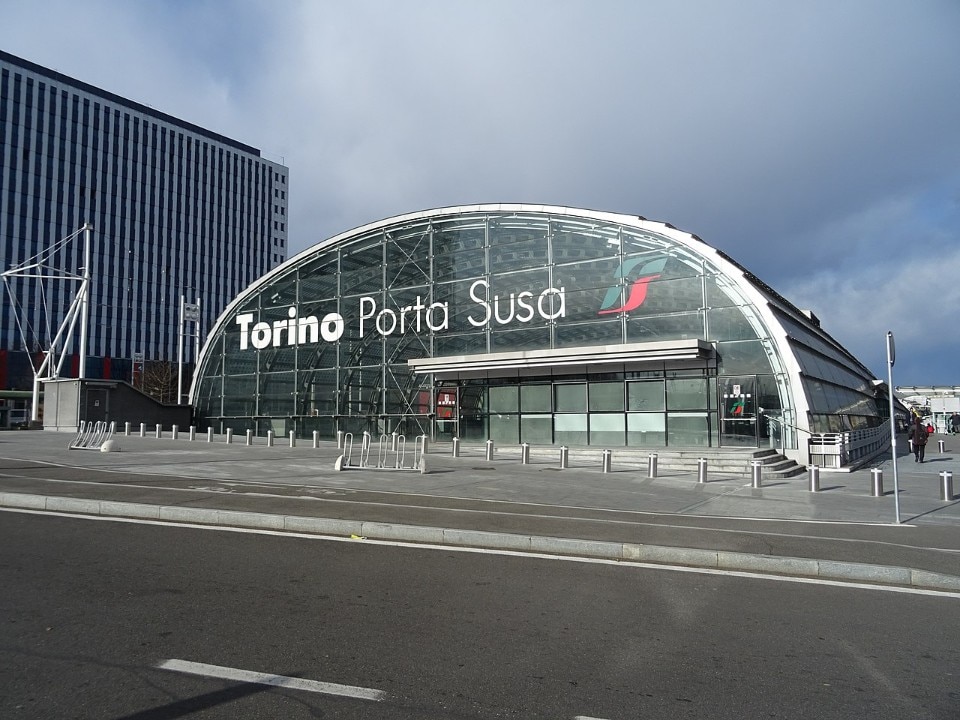
AREP, Silvio d'Ascia, Agostino Magnaghi, Torino Porta Susa, Turin, Italy 2013
The gateway to the Piedmontese capital for those travelling on high-speed trains, the 386 m long and 30 m wide building reinterprets in a contemporary key the passages of the 19th century, a consolidated building typology in Turin's urban fabric. The work, supported by 106 arches, is a veritable urban gallery where one can stop at restaurants, bars and shops, and resembles a long glass and steel tube with an envelope of "intelligent" technology: monocrystalline photovoltaic cells integrated in the glass panes create a sunscreen of variable density, producing energy for 680,000 KWh/year and contributing to environmental comfort.
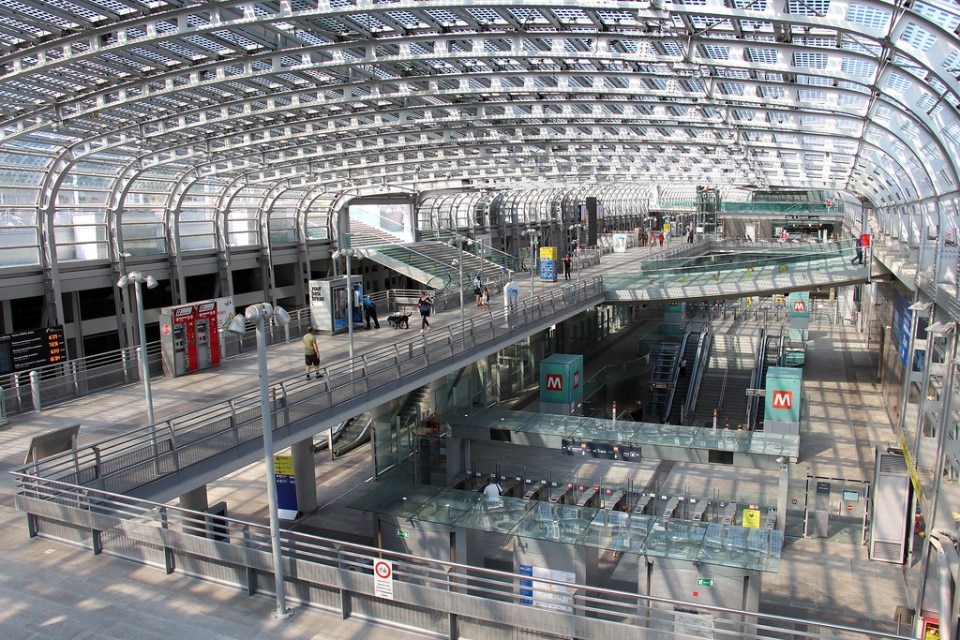
AREP, Silvio d'Ascia, Agostino Magnaghi, Torino Porta Susa, Turin, Italy 2013
Photo corno.fulgur75 from CC
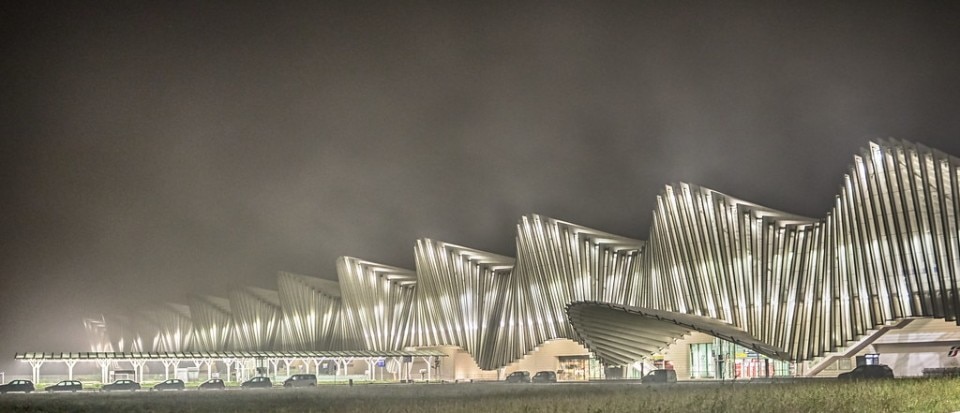
Santiago Calatrava architects & engineers, Mediopadana Station, Reggio Emilia, Italy 2013
The Mediopadana station, the only stop on the Milan-Bologna high-speed line, plays a strategically important role in the regional, national and international mobility system and is an iconic presence for those travelling on the A1 motorway. With its gigantic 'wave' volume, composed of 19 modules made up of a tight succession of steel portals staggered and spaced out to create an effect of accentuated dynamism, it is a landmark that stands out vigorously against the flat skyline of the Po Valley and, in keeping with its functional and somewhat futuristic vocation, is best perceived from a moving perspective.
Photo Enrico Cartia from CC
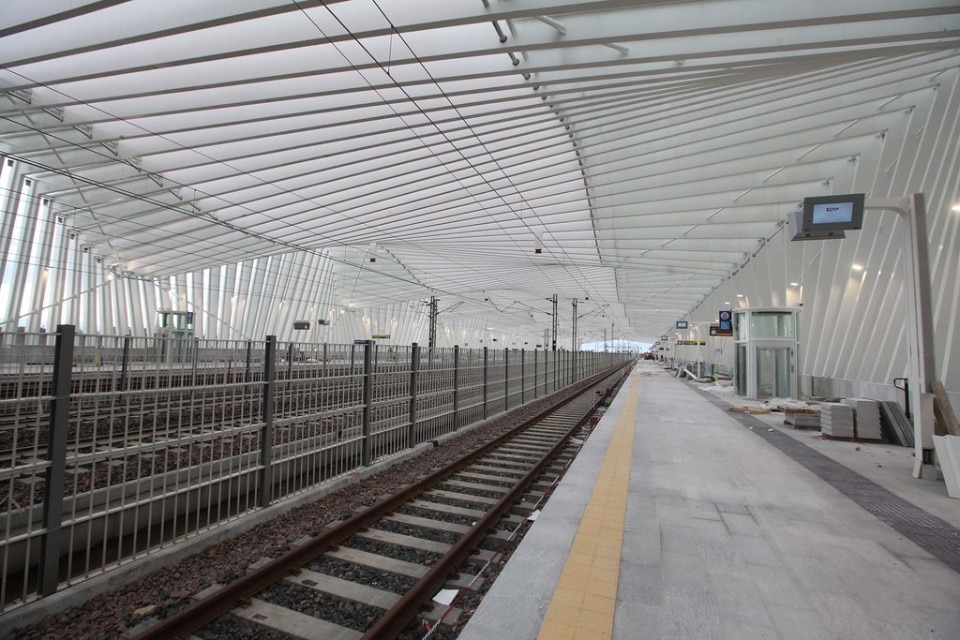
Santiago Calatrava architects & engineers, Mediopadana Station, Reggio Emilia, Italy 2013
Photo Municipality of Reggio Emilia from CC
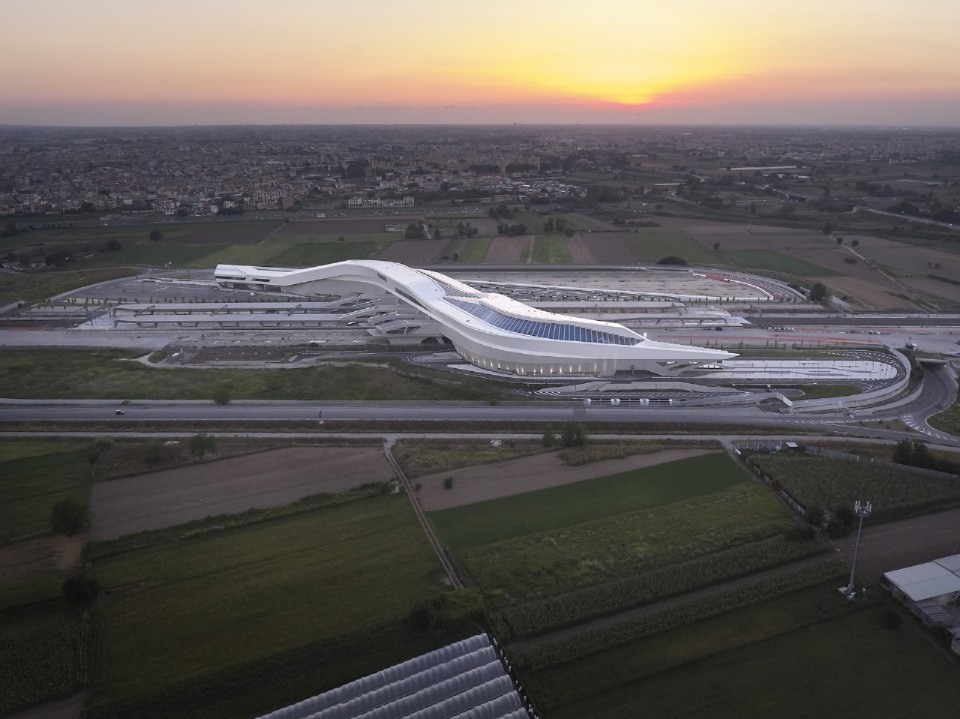
Zaha Hadid Architects, Naples-Afragola Station, Naples, Italy 2017
One of the main interchange stations in southern Italy, the building with a length of about 400 m and a width of about 44 m, with a reinforced concrete and steel structure, Corian cladding and glazed panels, is a "bridge" designed with the intention of overcoming the barrier of the existing railway line: its fluid and enveloping forms, vaguely zoomorphic to the point of recalling the skeleton of a dinosaur sleeping on the tracks, welcome visitors into a bright and futuristic environment. Solar panels integrated into the roof of the canopies, combined ventilation and integrated cooling and heating systems make it possible to minimise annual energy requirements.
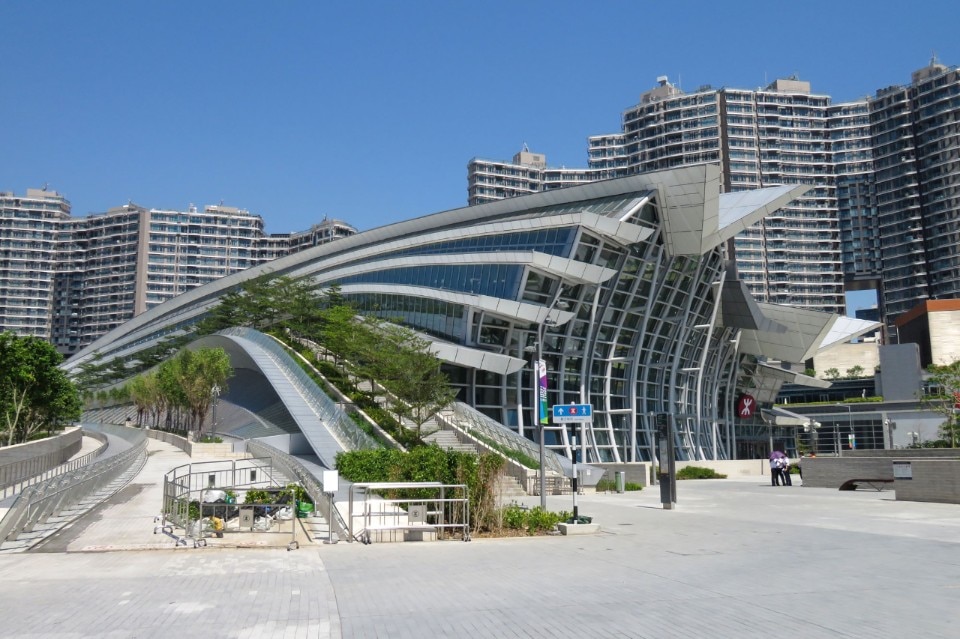
Andrew Bromberg Architects, Hong Kong West Kowloon Terminus, Hong Kong, China 2018
In Hong Kong, one of the most overcrowded and congested metropolises on the planet, the KWT station is not only an important national and international railway junction but also an urban park that has increased the city's green space by 15%. The complex, a 180-metre long structure with an average width of 65 metres and 15 tracks, is the largest underground railway station in the world and includes more than 3 hectares of parkland, with a total of 6 hectares of open space. If on the outside visitors walk on the softly curved roofs dotted with greenery, exploring the urban skyline from different perspectives, on the inside an explosion of glass and steel frames a majestic and swarming space that is not at all intimidating, thanks to its pleasantly light-flooded atmosphere and rarefied tones.
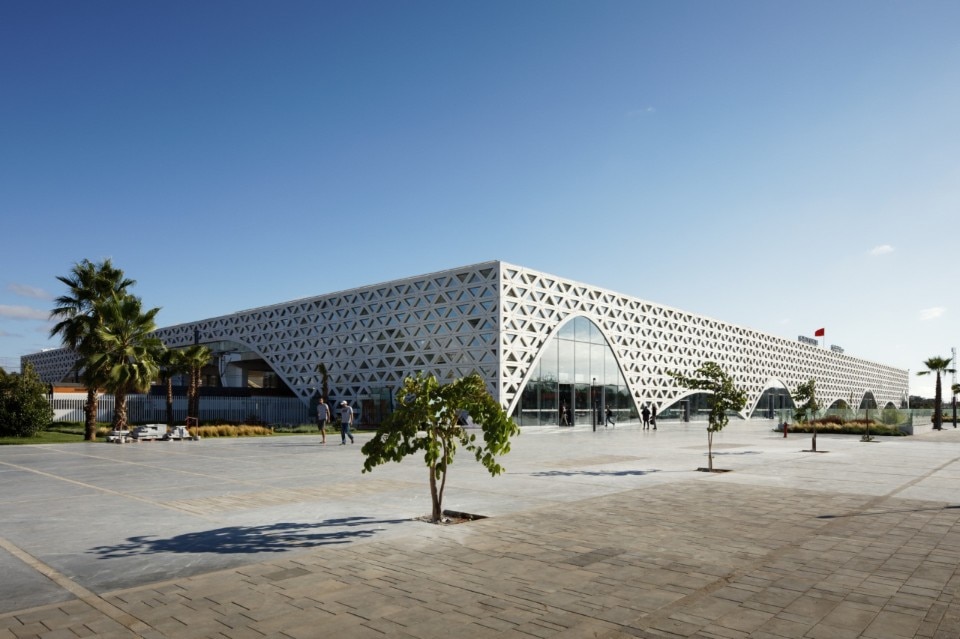
Silvio d'Ascia architecture with Omar Kobbité Architectes, Kénitra station, Morocco 2018
The Kénitra station, one of four on the high-speed railway line connecting Tangier to Casablanca via Kénitra and Rabat, is part of an ambitious project for the socio-economic and technological development of the Moroccan territory. Conceived as a trait-d'union between the new city and the historical fabric thanks to the footbridges that bypass the tracks and reconnect the two parts of the city, the complex on three levels and a basement is articulated around a triple-height hall that is the representative and functional epicentre of the place, from which to go to the tracks or where to stop for tea. Paying homage to the architecture of Islamic countries and in particular to the element of the mashrabiyya, a traditional grid that filters light, ventilation and prying eyes, the envelope is conceived as a large screen with triangular elements in high-performance fibre-reinforced concrete, which regulates the building's thermal comfort amidst suggestive chiaroscuro effects.

ABDR architetti associati, Roma Tiburtina High Speed Railway Station, Rome, Italy 2011
Located at one of the crucial nodes in the capital's metropolitan development, the station was designed not only to fulfil the requirements of a strategic junction for international and regional traffic but also as an "urban piazza" capable of mending the caesura between the Nomentano and Pietralata neighbourhoods, which have always been separated by the railway line. The "bridge" building, inspired by the nineteenth-century passages typology, is an imposing volume about 350 m long and 60 m wide, suspended over the tracks and resting on the two entrance halls from Nomentano and Pietralata. A vast metal roof consisting of an extra-roofed reticular structure serves as protection and screening for the entirely glazed façades, from which the blocks housing VIP lounges, internet offices, offices and restaurants are suspended.

ABDR architetti associati, Roma Tiburtina High Speed Railway Station, Rome, Italy 2011
Photo Pierina Mariani from CC

Team CS (Benthem Crouwel Architects, MVSA Meyer en van Schooten Architecten, West 8), Rotterdam Centraal Station, Rotterdam, The Netherlands 2013
With more than 110,000 passengers a day, Rotterdam Centraal Station is one of the major transport hubs in the Netherlands. The construction of the imposing building was an opportunity to reconnect a heterogeneous urban fabric: if on the south side, adjacent to a residential district of lesser passage, the façade is sober and transparent, on the north side the work connotes itself as an iconic "gateway" to the city, with a glazed aerodynamic volume entirely clad in steel. Inside, an airy, light-filled environment welcomes travellers: a weave of "Y"-shaped steel columns supports the 250 m long transparent roof, composed of glazed elements integrated with solar cells.
Photo Gerard Styolk (vers l'automne) from CC

Team CS (Benthem Crouwel Architects, MVSA Meyer en van Schooten Architecten, West 8), Rotterdam Centraal Station, Rotterdam, The Netherlands 2013
Photo yellow book from CC

AREP, Silvio d'Ascia, Agostino Magnaghi, Torino Porta Susa, Turin, Italy 2013
The gateway to the Piedmontese capital for those travelling on high-speed trains, the 386 m long and 30 m wide building reinterprets in a contemporary key the passages of the 19th century, a consolidated building typology in Turin's urban fabric. The work, supported by 106 arches, is a veritable urban gallery where one can stop at restaurants, bars and shops, and resembles a long glass and steel tube with an envelope of "intelligent" technology: monocrystalline photovoltaic cells integrated in the glass panes create a sunscreen of variable density, producing energy for 680,000 KWh/year and contributing to environmental comfort.

AREP, Silvio d'Ascia, Agostino Magnaghi, Torino Porta Susa, Turin, Italy 2013
Photo corno.fulgur75 from CC

Santiago Calatrava architects & engineers, Mediopadana Station, Reggio Emilia, Italy 2013
The Mediopadana station, the only stop on the Milan-Bologna high-speed line, plays a strategically important role in the regional, national and international mobility system and is an iconic presence for those travelling on the A1 motorway. With its gigantic 'wave' volume, composed of 19 modules made up of a tight succession of steel portals staggered and spaced out to create an effect of accentuated dynamism, it is a landmark that stands out vigorously against the flat skyline of the Po Valley and, in keeping with its functional and somewhat futuristic vocation, is best perceived from a moving perspective.
Photo Enrico Cartia from CC

Santiago Calatrava architects & engineers, Mediopadana Station, Reggio Emilia, Italy 2013
Photo Municipality of Reggio Emilia from CC

Zaha Hadid Architects, Naples-Afragola Station, Naples, Italy 2017
One of the main interchange stations in southern Italy, the building with a length of about 400 m and a width of about 44 m, with a reinforced concrete and steel structure, Corian cladding and glazed panels, is a "bridge" designed with the intention of overcoming the barrier of the existing railway line: its fluid and enveloping forms, vaguely zoomorphic to the point of recalling the skeleton of a dinosaur sleeping on the tracks, welcome visitors into a bright and futuristic environment. Solar panels integrated into the roof of the canopies, combined ventilation and integrated cooling and heating systems make it possible to minimise annual energy requirements.

Andrew Bromberg Architects, Hong Kong West Kowloon Terminus, Hong Kong, China 2018
In Hong Kong, one of the most overcrowded and congested metropolises on the planet, the KWT station is not only an important national and international railway junction but also an urban park that has increased the city's green space by 15%. The complex, a 180-metre long structure with an average width of 65 metres and 15 tracks, is the largest underground railway station in the world and includes more than 3 hectares of parkland, with a total of 6 hectares of open space. If on the outside visitors walk on the softly curved roofs dotted with greenery, exploring the urban skyline from different perspectives, on the inside an explosion of glass and steel frames a majestic and swarming space that is not at all intimidating, thanks to its pleasantly light-flooded atmosphere and rarefied tones.

Silvio d'Ascia architecture with Omar Kobbité Architectes, Kénitra station, Morocco 2018
The Kénitra station, one of four on the high-speed railway line connecting Tangier to Casablanca via Kénitra and Rabat, is part of an ambitious project for the socio-economic and technological development of the Moroccan territory. Conceived as a trait-d'union between the new city and the historical fabric thanks to the footbridges that bypass the tracks and reconnect the two parts of the city, the complex on three levels and a basement is articulated around a triple-height hall that is the representative and functional epicentre of the place, from which to go to the tracks or where to stop for tea. Paying homage to the architecture of Islamic countries and in particular to the element of the mashrabiyya, a traditional grid that filters light, ventilation and prying eyes, the envelope is conceived as a large screen with triangular elements in high-performance fibre-reinforced concrete, which regulates the building's thermal comfort amidst suggestive chiaroscuro effects.
“Melt all the bells to make as many rails for new ultra-fast trains”: if he were still among us, Filippo Tommaso Marinetti’s eyes would shine if he saw the trains and stations of the High Speed Railway, a manifesto of the spectacular progress in mechanical and infrastructural technology that he so much desired. Read more
13
The Domus guide to CityLife
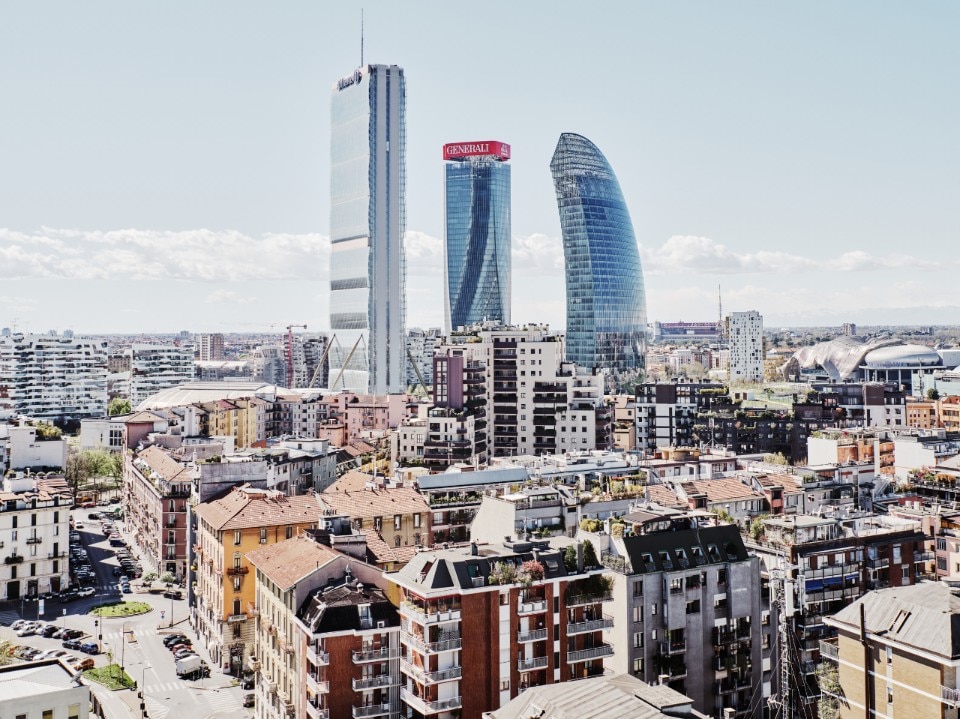
As early as the 1960s, Gio Ponti stated in a famous television interview that a successful skyline does not consist of isolated skyscrapers – it’s made of clusters of tall buildings that can be seen from afar over the urban fabric. At that time, only a few towers of the Business District proposed by the 1953 Master Plan were under construction in Milan. It was only between 2000 and 2010 that some of the “clusters” envisioned by Ponti were built in the Lombard capital, along with two major urban projects: Porta Nuova and CityLife. Read more
14
“Catching desire by the tail”: the Palladium club in New York
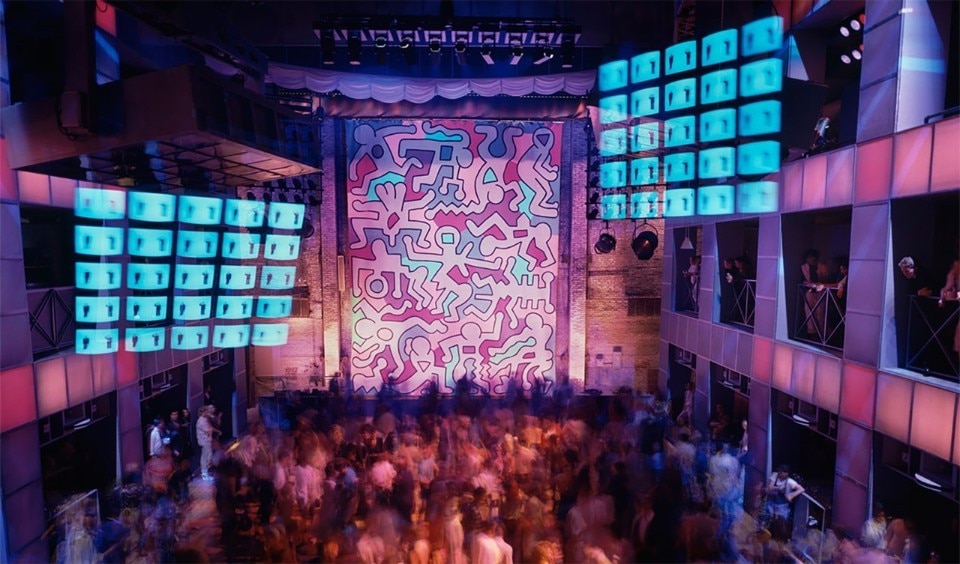
It took less than three years, from 1977 to 1980, to not only turn the world’s clubbing imaginaire upside down but to unleash a totalizing revolution in aesthetic and social visions. Those were the disco years, the three years we mentioned were the whole lifespan of Studio 54 in New York (but it will not be alone, between Paradise Garage and other iconic clubs). Once these years were over, the Studio closed, founders Steve Rubell and Ian Schrager went through a fair amount of trouble with the law, and by the mid-1980s they were ready to write another chapter of cultural history: but everything has changed, New York had changed, society with its desires had changed. Read more
15
Greece’s first skyscraper to be designed by Foster + Partners

 View gallery
View gallery
Lamda Development unveiled the design of Athens Riviera Tower, Greece’s first skyscraper designed by Foster + Partners in Hellinikon, the largest urban regeneration project in Europe, developed on the site of the former airport in southern Athens and hosting a 400-hectares park, luxury homes, hotels, a casino, a marina, retail space, and offices. Read more
16
10 large-scale installations not to be missed at Milan Design Week 2023
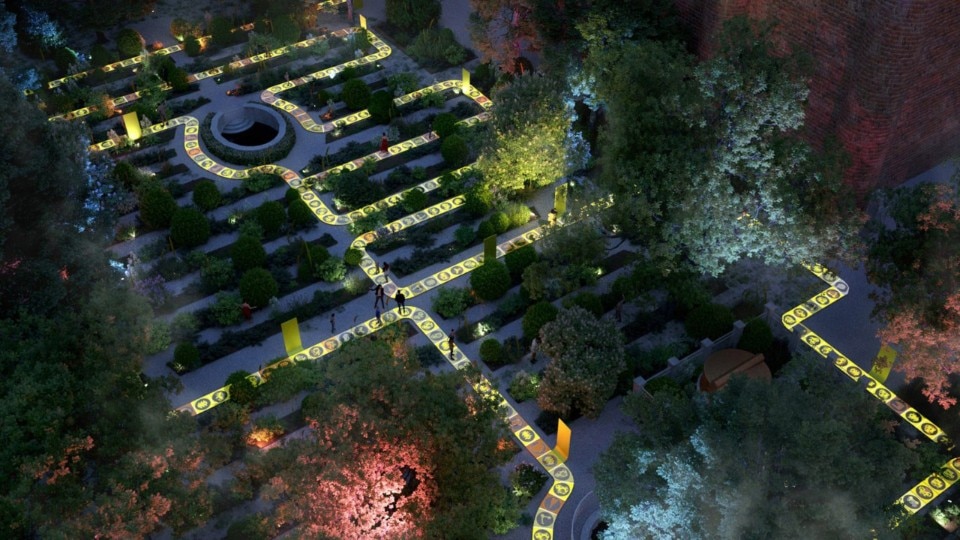
 View gallery
View gallery
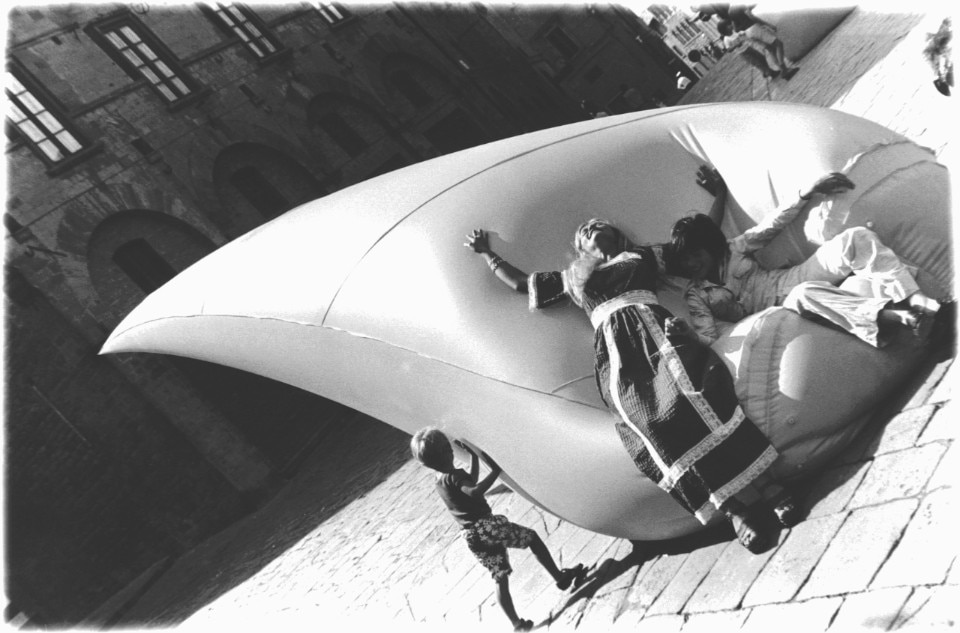
1. Franco Mazzucchelli: Aria, terra, acqua
Artist Franco Mazzucchelli, known since the 1960s for creating inflatable PVC sculptures, often displayed in urban and natural spaces or on bodies of water, returns to Milan. The artist returns to Milan with “Aria, terra, acqua”, curated by Marina Pugliese and Alessandro Oldani with the collaboration of Gianmarco Cugusi. The exhibition project includes the installation of two works. In the garden of Triennale Milano, Mazzucchelli intervenes with an installation titled “Aperta parentesi”, where two large arches fixed to the ground allude to a round parenthesis, a spatial break that delimits a selection of the artist's iconic inflatables. The second installation is “Elica”, an inflatable sculpture placed on the Darsena dei Navigli.
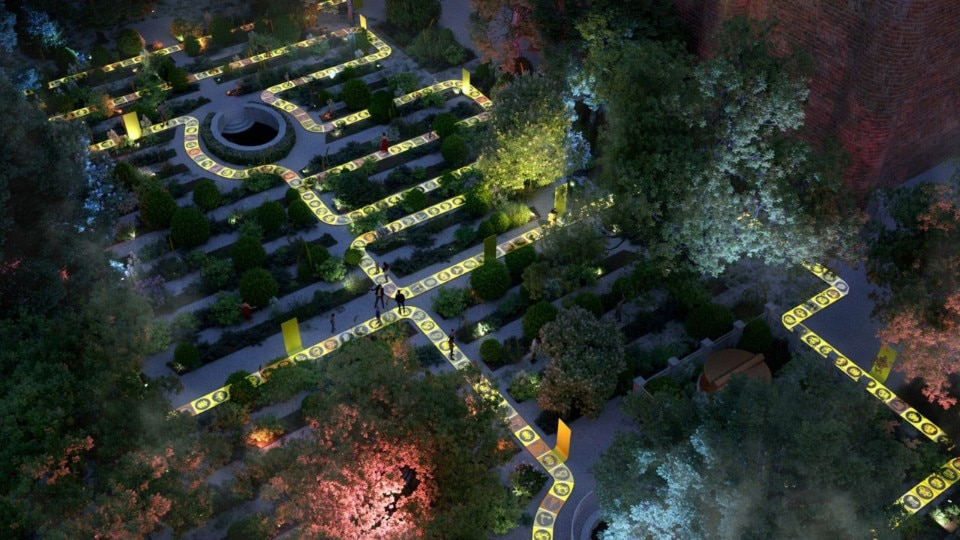
2. Italo Rota and Carlo Ratti: Walk the Talk – Moving Energy, Brera Botanical Garden
Italian architects Italo Rota and Carlo Ratti will create an installation for this year's edition for energy company Eni entitled Walk the Talk - Moving Energy. The exhibition reflects the off-site theme Future Laboratory and explores the development of mobility. The installation consists of hundreds of tiles that create an interactive path through the avenues of the Brera Botanical Garden, using light and sound to transform the garden depending on the time of day. Developed in collaboration with game designer collective Blob Factory Gaming Studio, Walk the Talk addresses issues such as the transformation of mobility in a sustainable sense.
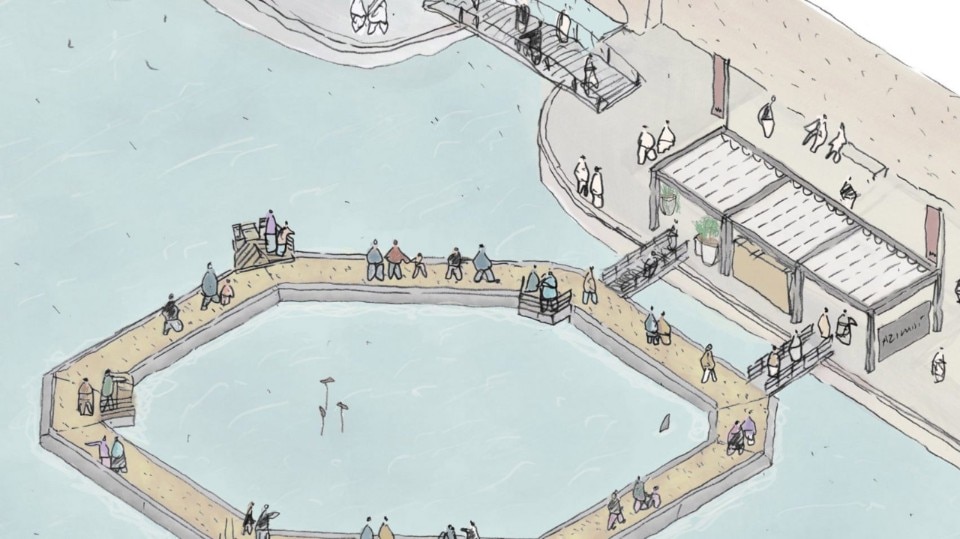
3. Michele de Lucchi and AMDL Circle, The Sea Deck, Darsena
Michele de Lucchi and his firm AMDL Circle are proposing a floating promenade on Milan's Darsena for Azimut Yachts. Called The Sea Deck, the floating architecture is designed to welcome visitors during the week, designing it to “bring back the experience of ancient navigable waterways to the city of Milan.” The deck is made from recycled and ground bottle caps and was created to celebrate Azimut Yachts' Seadeck series of hybrid motor yachts.
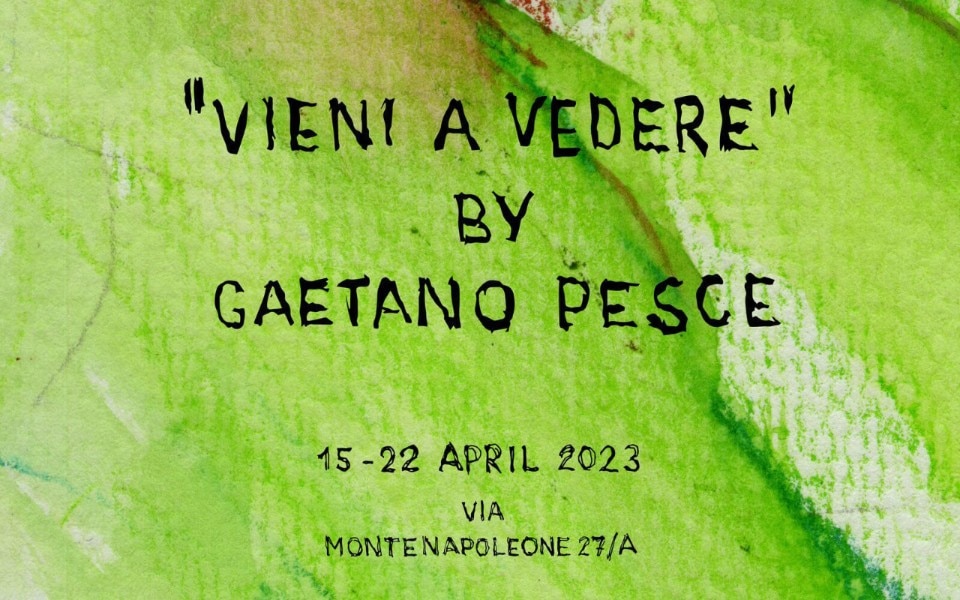
4. Gaetano Pesce, Vieni a Vedere, Bottega Veneta
Italian designer Gaetano Pesce’s collaboration with the fashion brand Bottega Veneta is back for the third trime, after two encounters during Milan Fashion Week 2022 and the latest Design Miami/ event. Together, they are creating an immersive installation for the Milan showroom for Design Week. Made of resin and fabric, it was designed by Pesce to resemble a narrow cave and will frame a collection of bags, based on Pesce’s own designs: they will depict mountains with sunrise or sunset behind them.
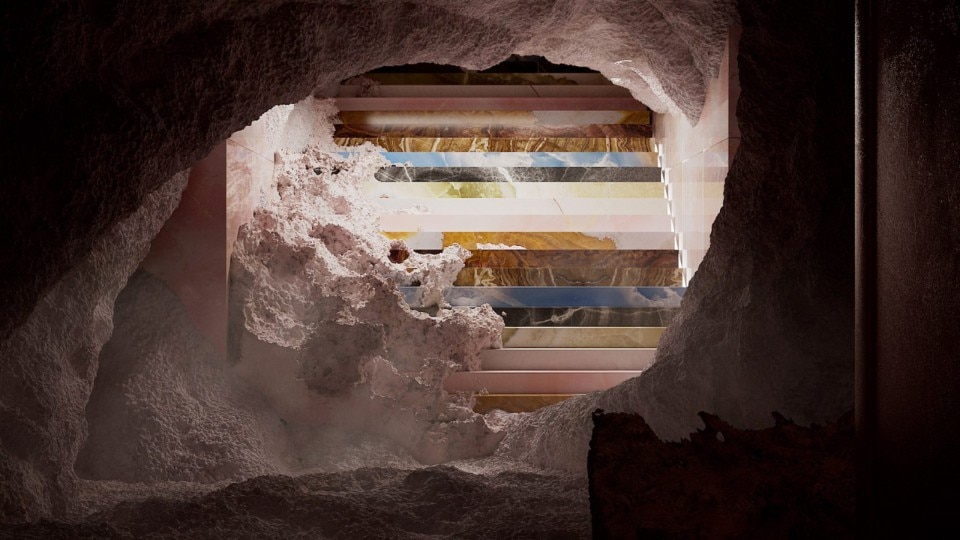
5. SolidNature: Beyond the Surface, Spazio Cernaia
Dutch materials brand SolidNature presents at Spazio Cernaia in the Brera Design District - in its garden and basement level - an installation designed by Ellen Van Loon and Giulio Margheri of the Rotterdam-based architecture firm Office for Metropolitan Architecture (OMA). As part of a group exhibition along with works by Dutch designer Sabine Marcelis and Iranian artist Bita Fayyazi, “Beyond the Surface” is immersive dreamscape designed as a parallel between the birth and mining of natural stone and the realization of dreams. Within the exhibition, visitors can discover the history of the geological formation of stone, from the metamorphosis of the earth to the high-tech stone finishing machinery used today.
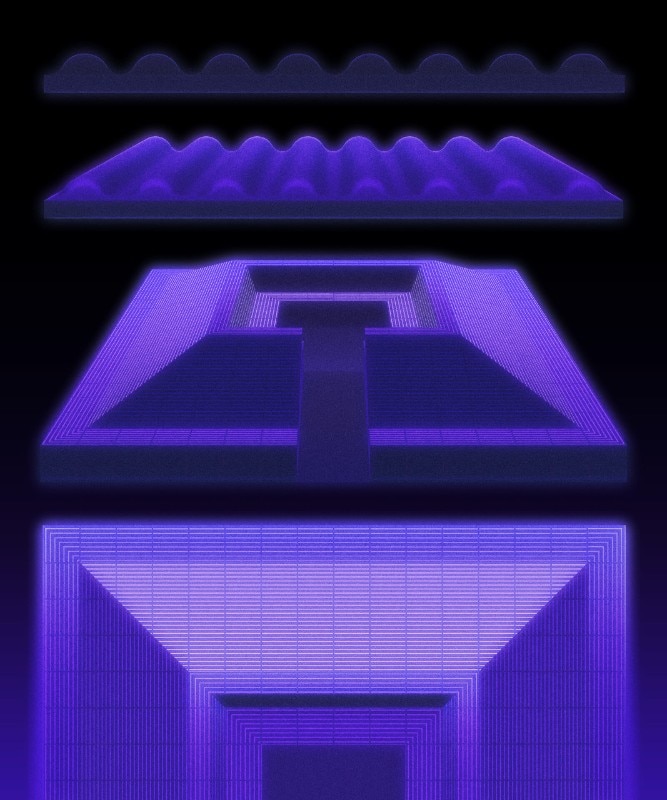
6. Panter & Tourron, Softscope, Spazio Maiocchi
In the courtyard of Spazio Maiocchi, Lausanne-based design studio Panter & Tourron presents an urban architectural installation for Xl Extralight. A project that started with a creative reinterpretation of the company's new Organix 3.0 material, the designers, known for their work at the intersection of technology and society, conceived a pseudo-domestic interior: part conversation pit, part public stage. The pyramidal monolith invites users to sit and relax on the low bench bordering the perimeter or in the hollowed-out central section, complete with built-in seating.
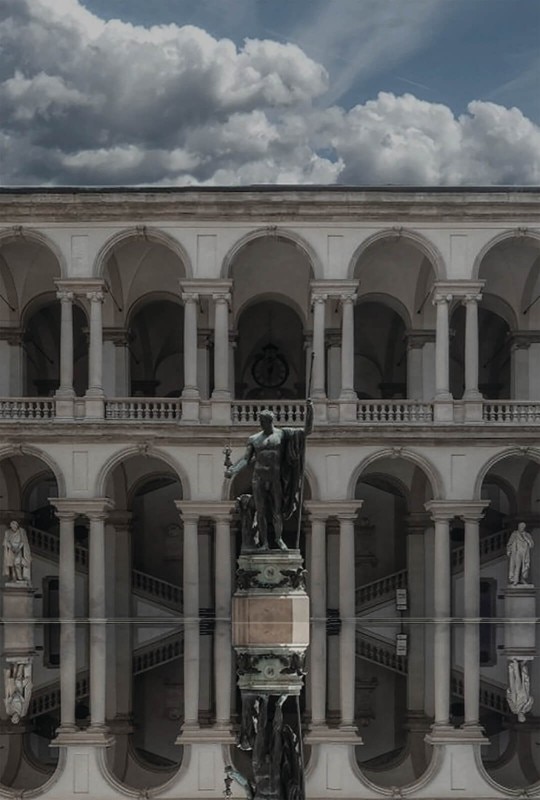
7. Grohe, Health Through Water, Pinacoteca di Brera
An immersive, multi-sensory experience in the courtyard of the celebrated Pinacoteca. Named “Health Through Water”, the installation will reflect through water mirrors the stunning architecture, while four immersive cubes reveal the brand's bathroom designs.

8. Ingo Maurer: Light-Floating Reflection, Porta Nuova
Lighting manufacturer Ingo Maurer, founded by the late great industrial designer, will offer a fascinating outdoor light installation at Porta Nuova, Caselli 11-12, as new products are unveiled in the buildings of the old city gate. The installation creates an impressive symbiosis of (light) art and architecture, demonstrating Ingo Maurer's ability to move with ease from traditional lighting concepts to experimental and innovative set-ups.
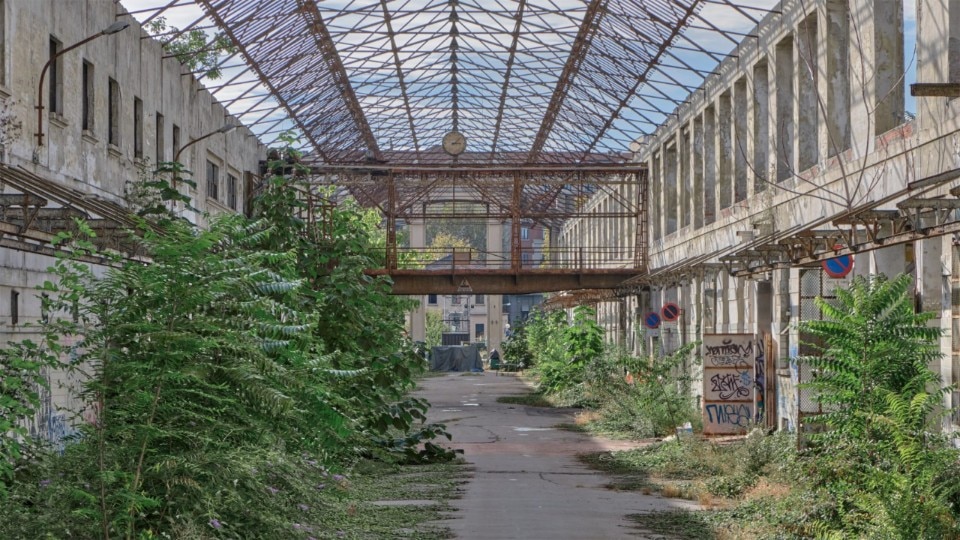
9. Atelier Luma, Bioregional Design Practices, Alcova
Biodesign workshop Atelier Luma presents an exhibition featuring five large installations and experimental objects at the Alcova space, now housed this year by the former Porta Vittoria slaughterhouse on Molise Street. The installations are made from agricultural byproducts, seaweed, rice straw, salt and textiles, while the objects are created from building materials, textiles, palm sheaths and plant-based shoes. This year the Alcova design fair returns to Milan for its fifth edition, presenting more than 70 projects from international brands and studios.
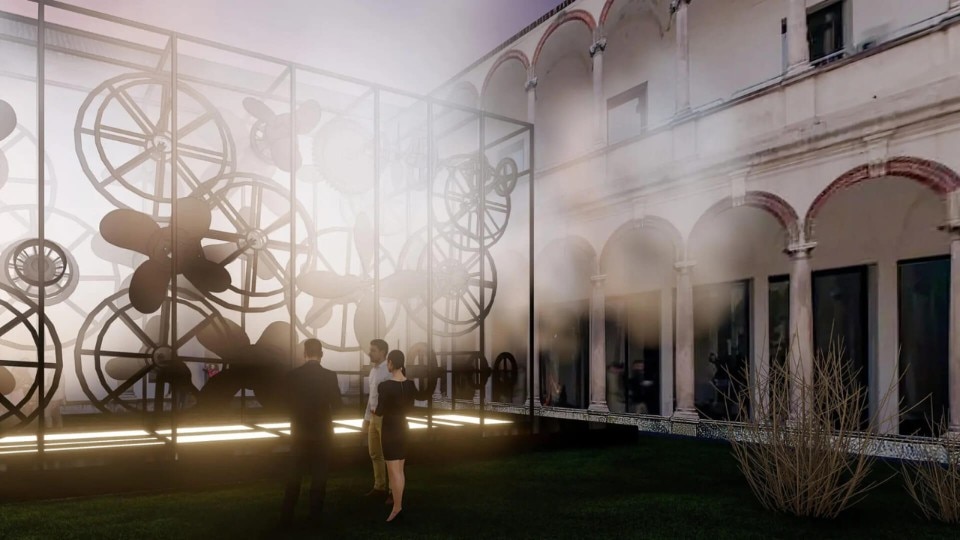
10. Piero Lissoni: La macchina impossibile, Università degli Studi
Among the many installations that will populate the busy University of Milan during this Design Week, we highlight the “Macchina Impossibile”, designed by Piero Lissoni. A project created for Sanlorenzo, it tells the story of the future of yacht propulsion. The installation, conceived to tell the story of the search for ever new technological solutions to the problems related to the environmental impact of yachting, consists of an imposing metal structure, with attention to every detail. With its large propellers and serrated wheels in motion and thanks to a backlighting system, it draws the viewer's attention to the hydrogen system with which it is powered.

1. Franco Mazzucchelli: Aria, terra, acqua
Artist Franco Mazzucchelli, known since the 1960s for creating inflatable PVC sculptures, often displayed in urban and natural spaces or on bodies of water, returns to Milan. The artist returns to Milan with “Aria, terra, acqua”, curated by Marina Pugliese and Alessandro Oldani with the collaboration of Gianmarco Cugusi. The exhibition project includes the installation of two works. In the garden of Triennale Milano, Mazzucchelli intervenes with an installation titled “Aperta parentesi”, where two large arches fixed to the ground allude to a round parenthesis, a spatial break that delimits a selection of the artist's iconic inflatables. The second installation is “Elica”, an inflatable sculpture placed on the Darsena dei Navigli.

2. Italo Rota and Carlo Ratti: Walk the Talk – Moving Energy, Brera Botanical Garden
Italian architects Italo Rota and Carlo Ratti will create an installation for this year's edition for energy company Eni entitled Walk the Talk - Moving Energy. The exhibition reflects the off-site theme Future Laboratory and explores the development of mobility. The installation consists of hundreds of tiles that create an interactive path through the avenues of the Brera Botanical Garden, using light and sound to transform the garden depending on the time of day. Developed in collaboration with game designer collective Blob Factory Gaming Studio, Walk the Talk addresses issues such as the transformation of mobility in a sustainable sense.

3. Michele de Lucchi and AMDL Circle, The Sea Deck, Darsena
Michele de Lucchi and his firm AMDL Circle are proposing a floating promenade on Milan's Darsena for Azimut Yachts. Called The Sea Deck, the floating architecture is designed to welcome visitors during the week, designing it to “bring back the experience of ancient navigable waterways to the city of Milan.” The deck is made from recycled and ground bottle caps and was created to celebrate Azimut Yachts' Seadeck series of hybrid motor yachts.

4. Gaetano Pesce, Vieni a Vedere, Bottega Veneta
Italian designer Gaetano Pesce’s collaboration with the fashion brand Bottega Veneta is back for the third trime, after two encounters during Milan Fashion Week 2022 and the latest Design Miami/ event. Together, they are creating an immersive installation for the Milan showroom for Design Week. Made of resin and fabric, it was designed by Pesce to resemble a narrow cave and will frame a collection of bags, based on Pesce’s own designs: they will depict mountains with sunrise or sunset behind them.

5. SolidNature: Beyond the Surface, Spazio Cernaia
Dutch materials brand SolidNature presents at Spazio Cernaia in the Brera Design District - in its garden and basement level - an installation designed by Ellen Van Loon and Giulio Margheri of the Rotterdam-based architecture firm Office for Metropolitan Architecture (OMA). As part of a group exhibition along with works by Dutch designer Sabine Marcelis and Iranian artist Bita Fayyazi, “Beyond the Surface” is immersive dreamscape designed as a parallel between the birth and mining of natural stone and the realization of dreams. Within the exhibition, visitors can discover the history of the geological formation of stone, from the metamorphosis of the earth to the high-tech stone finishing machinery used today.

6. Panter & Tourron, Softscope, Spazio Maiocchi
In the courtyard of Spazio Maiocchi, Lausanne-based design studio Panter & Tourron presents an urban architectural installation for Xl Extralight. A project that started with a creative reinterpretation of the company's new Organix 3.0 material, the designers, known for their work at the intersection of technology and society, conceived a pseudo-domestic interior: part conversation pit, part public stage. The pyramidal monolith invites users to sit and relax on the low bench bordering the perimeter or in the hollowed-out central section, complete with built-in seating.

7. Grohe, Health Through Water, Pinacoteca di Brera
An immersive, multi-sensory experience in the courtyard of the celebrated Pinacoteca. Named “Health Through Water”, the installation will reflect through water mirrors the stunning architecture, while four immersive cubes reveal the brand's bathroom designs.

8. Ingo Maurer: Light-Floating Reflection, Porta Nuova
Lighting manufacturer Ingo Maurer, founded by the late great industrial designer, will offer a fascinating outdoor light installation at Porta Nuova, Caselli 11-12, as new products are unveiled in the buildings of the old city gate. The installation creates an impressive symbiosis of (light) art and architecture, demonstrating Ingo Maurer's ability to move with ease from traditional lighting concepts to experimental and innovative set-ups.

9. Atelier Luma, Bioregional Design Practices, Alcova
Biodesign workshop Atelier Luma presents an exhibition featuring five large installations and experimental objects at the Alcova space, now housed this year by the former Porta Vittoria slaughterhouse on Molise Street. The installations are made from agricultural byproducts, seaweed, rice straw, salt and textiles, while the objects are created from building materials, textiles, palm sheaths and plant-based shoes. This year the Alcova design fair returns to Milan for its fifth edition, presenting more than 70 projects from international brands and studios.

10. Piero Lissoni: La macchina impossibile, Università degli Studi
Among the many installations that will populate the busy University of Milan during this Design Week, we highlight the “Macchina Impossibile”, designed by Piero Lissoni. A project created for Sanlorenzo, it tells the story of the future of yacht propulsion. The installation, conceived to tell the story of the search for ever new technological solutions to the problems related to the environmental impact of yachting, consists of an imposing metal structure, with attention to every detail. With its large propellers and serrated wheels in motion and thanks to a backlighting system, it draws the viewer's attention to the hydrogen system with which it is powered.
The large installations at Milan Design Week are those projects that the public, especially the non-expert public, loves because it brings them closer to the world of design. They somehow bridge the gap between the old democratic aspirations of design and the fact that it has eventually become a niche nowadays. Read more
17
8 TV series every architect or designer should watch

 View gallery
View gallery

Creator: Graeme Manson, USA, 2020, Netflix
Creator: Graeme Manson, USA, 2020, Netflix
It evokes the contents of the film directed by Bon Joon-ho, director of the award-winning Parasite, who, in turn, reworked the graphic novel Le Transperceneige by Jacques Lob and Jean-Michel Charlier. Set in a dystopian future where the world is uninhabitable due to a new ice age, the series sees humanity’s last survivors forced into a high-tech train, the Snowpiercer. In the train there is the fiercest classism. It is a reign of terror. A constant tension between the righteous and the brave who want to overthrow the dictatorship established by the evil lord and inventor of the train, Mr Wilford.
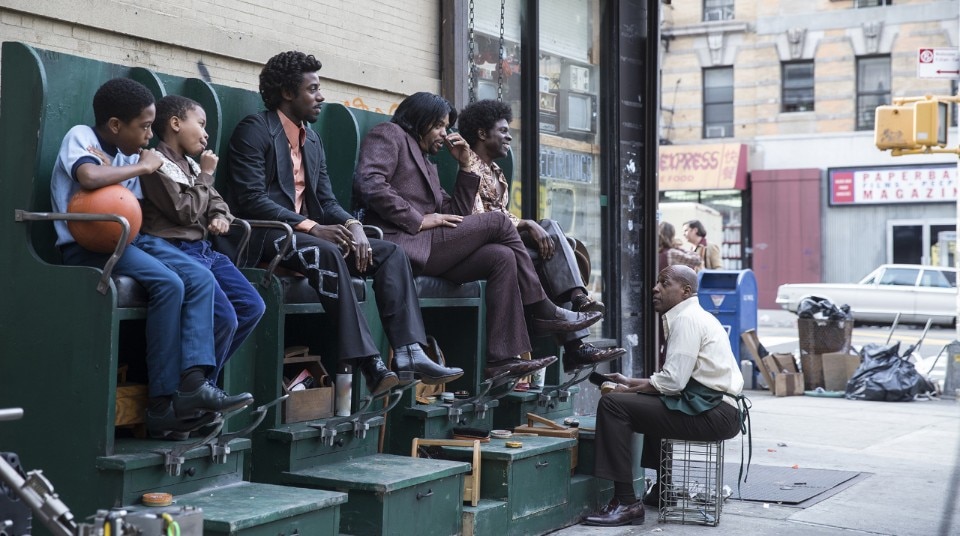
The Deuce
Created by David Simon and George Pelecanos, USA, 2019, HBO
The NYC neighbourhood of the Deuce is the set for an extraordinary succession of metropolitan overviews of drugs and prostitution. Written by the genius David Simon, the film stars James Franco and Maggie Gyllenhaal, with some Method Man’s titbits. The rising porn industry becomes a chance for the neighbourhood lowlifes to make ends meet, economically and artistically, but the spectre of AIDS begins to take over New York nightlife. The number of people infected with HIV is constantly increasing and the spread of cocaine generates recurring waves of violence. An endless alternation of emotions between outfits and super cool locations with incredible references on today’s pandemic.
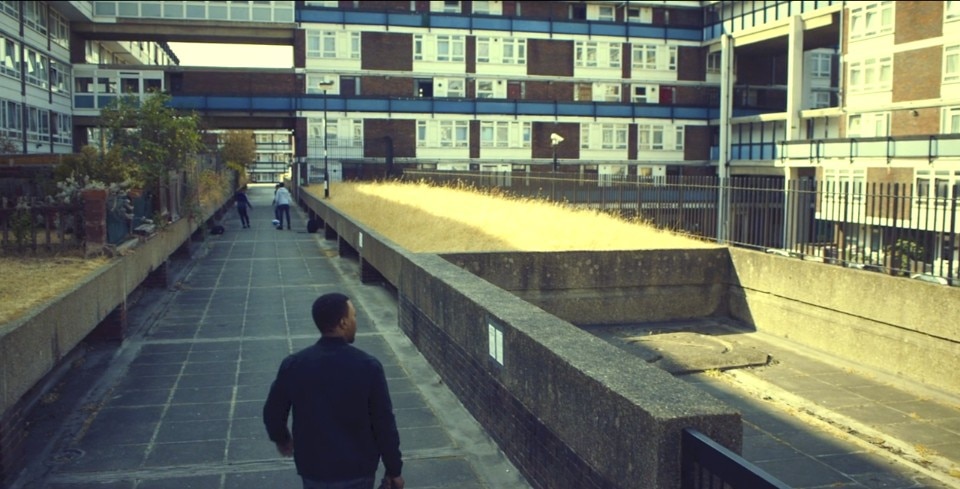
Top Boy
Created by Ronan Bennett, UK, 2019, Netflix
Top boy is a dark and necessary set-up of a powerful drama about “how people behave when institutions fail”, this is how the Independent describes the series. The absolute protagonist of Top Boy is the London crime, the child of suburban poverty and social exclusion. It is scripted by Ronan Bennett, a former IRA militant and now successful author. Thanks to a superfan, the rapper Drake, Netflix has brought this drama of London’s drug gangs back to life in the form of a searing indictment of our times. Many of the scenes seen in Top Boy are inspired by news stories that have the streets and courtyards of Summerhouse – a London apartment building-ghetto – as their privileged settings and a full-on trap soundtrack. In an original way, Top Boy fits into the footsteps of other TV series, of which Gomorrah is perhaps the most famous.
.jpg.foto.rmedium.png)
I may destroy you
Created by Michaela Coel, UK, 2019, BBC ONE HBO
It is a violated body that of Michaela Coel, extraordinary author and performer of one of the tougher series of recent years. It all begins in Ostia. A place chosen for its Pasolinian drifts, but also more recently the privileged set of Claudio Caligari’s cult film, Don’t be bad. This is where the story of the protagonist Arabella Essiedu/Coel starts, a London writer of Ghanaian origin who, in the midst of a creative crisis, goes on holiday to the Roman coast in search of inspiration. On her way back to London, during the celebrations for the delivery of a new work, something goes wrong. Arabella finds herself with foggy memories and thus begins a dramatic and gripping reconstruction of a traumatic violence. Michaela Coel experiences this process as a personal catharsis and above all as a report of pink washing.

We are who we are
Created by Luca Guadagnino, Paolo Giordano, Francesca Manieri and Sean Conway, Italy/USA, 2020, HBO Sky Atlantic
Luca Guadagnino draws a suspended world, a generational cross-section focused on the American military base in Chioggia. The appointment of a new commander upsets the patriarchal balance that sustains every military dimension. Commander Sarah Wilson/Chloë Sevigny is a woman with a wife, Maggie/Alice Braga, and a son, Fraser/Jack Dylan Grazer. It is Fraser himself, with his adolescent anxieties, who guides us through a miniature America with all its nuances and paradoxes. The drama is the conflict that revolves around the clash between the superficial calm of the homologation of military life and the vibrant sense of diversity that simmers in individual subjectivities. In this wandering, exploring, with headphones fixed on his ears and the (extraordinary) music blaring, Fraser meets a girl of his own age, Caitlin/Jordan Kristine Seamón. A creature without a defined gender, fluid in search of her own identity, just like Fraser. This search for self becomes poetry and drama, but such is life.

We are who we are
Created by Luca Guadagnino, Paolo Giordano, Francesca Manieri and Sean Conway, Italy/USA, 2020, HBO Sky Atlantic

Ethos
Created by Berkun Oya, Turkey/USA, 2020, Netflix
Ethos investigates the Freudian concept of the uncanny, the unheimlich. The house where you do not feel at home. Istanbul, a metropolis of a thousand contradictions, is the backdrop to a story where bridges do not alleviate the inequalities between the European and semi-rural Asian shores. The unheimlich hits Anatolian veiled women, displaced Kurdish families and the westernised bourgeoisie. The protagonist is Meryem, a religious, veiled maid, afflicted by fainting spells of psychosomatic origin, who begins a tormented therapeutic relationship with a lay analyst, Peri. Thus, a sequence of relational events is born, revealing human complexities on both sides of the Bosporus, beyond the differences in lifestyles.

P-Valley
Creator Katori Hall, USA, 2020, Starz / Prime Video
Created by the artist and activist Katori Hall, P-Valley is set in the fictional town of Chucalissa, located in the depressed and flood-prone Mississippi Delta. The Pynk strip club is the epicentre of a dramatic property speculation operation. Gentrification also arrives in imaginary countries. The lives of the strippers and the extraordinary protagonist Uncle Clifford/Nicco Annan are turned upside down. The club is transformed into a political space where the bodies of women and Uncle Clifford are at the centre. Liberated, glittered and wigged bodies are framed and told from a different perspective, from the point of view of the women themselves, to the rhythm of a deep, blues-infused rap. Everything is feminine, the writing, the direction and the extraordinary choreography do not just show the characters as bodies to be desired or profited from, but as universes with their nuances and weaknesses, with a story to tell.

Euphoria
Created by Sam Levinson, USA, 2019, HBO
One of the most acclaimed series and commented by critics and audiences for its content and especially for the presence of the social and teen superstar Zendaya. It is a generational overview suspended between redemption and fall, in short, the unveiling of the fragilities of being young. Created and directed by Sam Levinson, Barry’s son, director of Good Morning, Vietnam and Rain Man, Euphoria seems to be a lysergic journey through friendships and experiences that burn with an aesthetic made of fluorescent colours, strong contrasts, neon nights and glitter. Everything is psychedelic, even the music, suspended between techno accelerations and vaporwave sounds. The two young women give life to a painful and intense succession of failures and rebirths. Losing and redoing everything. Is not this how you discover your own truth and the world?

Creator: Graeme Manson, USA, 2020, Netflix
Creator: Graeme Manson, USA, 2020, Netflix
It evokes the contents of the film directed by Bon Joon-ho, director of the award-winning Parasite, who, in turn, reworked the graphic novel Le Transperceneige by Jacques Lob and Jean-Michel Charlier. Set in a dystopian future where the world is uninhabitable due to a new ice age, the series sees humanity’s last survivors forced into a high-tech train, the Snowpiercer. In the train there is the fiercest classism. It is a reign of terror. A constant tension between the righteous and the brave who want to overthrow the dictatorship established by the evil lord and inventor of the train, Mr Wilford.

The Deuce
Created by David Simon and George Pelecanos, USA, 2019, HBO
The NYC neighbourhood of the Deuce is the set for an extraordinary succession of metropolitan overviews of drugs and prostitution. Written by the genius David Simon, the film stars James Franco and Maggie Gyllenhaal, with some Method Man’s titbits. The rising porn industry becomes a chance for the neighbourhood lowlifes to make ends meet, economically and artistically, but the spectre of AIDS begins to take over New York nightlife. The number of people infected with HIV is constantly increasing and the spread of cocaine generates recurring waves of violence. An endless alternation of emotions between outfits and super cool locations with incredible references on today’s pandemic.

Top Boy
Created by Ronan Bennett, UK, 2019, Netflix
Top boy is a dark and necessary set-up of a powerful drama about “how people behave when institutions fail”, this is how the Independent describes the series. The absolute protagonist of Top Boy is the London crime, the child of suburban poverty and social exclusion. It is scripted by Ronan Bennett, a former IRA militant and now successful author. Thanks to a superfan, the rapper Drake, Netflix has brought this drama of London’s drug gangs back to life in the form of a searing indictment of our times. Many of the scenes seen in Top Boy are inspired by news stories that have the streets and courtyards of Summerhouse – a London apartment building-ghetto – as their privileged settings and a full-on trap soundtrack. In an original way, Top Boy fits into the footsteps of other TV series, of which Gomorrah is perhaps the most famous.
.jpg.foto.rmedium.png)
I may destroy you
Created by Michaela Coel, UK, 2019, BBC ONE HBO
It is a violated body that of Michaela Coel, extraordinary author and performer of one of the tougher series of recent years. It all begins in Ostia. A place chosen for its Pasolinian drifts, but also more recently the privileged set of Claudio Caligari’s cult film, Don’t be bad. This is where the story of the protagonist Arabella Essiedu/Coel starts, a London writer of Ghanaian origin who, in the midst of a creative crisis, goes on holiday to the Roman coast in search of inspiration. On her way back to London, during the celebrations for the delivery of a new work, something goes wrong. Arabella finds herself with foggy memories and thus begins a dramatic and gripping reconstruction of a traumatic violence. Michaela Coel experiences this process as a personal catharsis and above all as a report of pink washing.

We are who we are
Created by Luca Guadagnino, Paolo Giordano, Francesca Manieri and Sean Conway, Italy/USA, 2020, HBO Sky Atlantic
Luca Guadagnino draws a suspended world, a generational cross-section focused on the American military base in Chioggia. The appointment of a new commander upsets the patriarchal balance that sustains every military dimension. Commander Sarah Wilson/Chloë Sevigny is a woman with a wife, Maggie/Alice Braga, and a son, Fraser/Jack Dylan Grazer. It is Fraser himself, with his adolescent anxieties, who guides us through a miniature America with all its nuances and paradoxes. The drama is the conflict that revolves around the clash between the superficial calm of the homologation of military life and the vibrant sense of diversity that simmers in individual subjectivities. In this wandering, exploring, with headphones fixed on his ears and the (extraordinary) music blaring, Fraser meets a girl of his own age, Caitlin/Jordan Kristine Seamón. A creature without a defined gender, fluid in search of her own identity, just like Fraser. This search for self becomes poetry and drama, but such is life.

We are who we are
Created by Luca Guadagnino, Paolo Giordano, Francesca Manieri and Sean Conway, Italy/USA, 2020, HBO Sky Atlantic

Ethos
Created by Berkun Oya, Turkey/USA, 2020, Netflix
Ethos investigates the Freudian concept of the uncanny, the unheimlich. The house where you do not feel at home. Istanbul, a metropolis of a thousand contradictions, is the backdrop to a story where bridges do not alleviate the inequalities between the European and semi-rural Asian shores. The unheimlich hits Anatolian veiled women, displaced Kurdish families and the westernised bourgeoisie. The protagonist is Meryem, a religious, veiled maid, afflicted by fainting spells of psychosomatic origin, who begins a tormented therapeutic relationship with a lay analyst, Peri. Thus, a sequence of relational events is born, revealing human complexities on both sides of the Bosporus, beyond the differences in lifestyles.

P-Valley
Creator Katori Hall, USA, 2020, Starz / Prime Video
Created by the artist and activist Katori Hall, P-Valley is set in the fictional town of Chucalissa, located in the depressed and flood-prone Mississippi Delta. The Pynk strip club is the epicentre of a dramatic property speculation operation. Gentrification also arrives in imaginary countries. The lives of the strippers and the extraordinary protagonist Uncle Clifford/Nicco Annan are turned upside down. The club is transformed into a political space where the bodies of women and Uncle Clifford are at the centre. Liberated, glittered and wigged bodies are framed and told from a different perspective, from the point of view of the women themselves, to the rhythm of a deep, blues-infused rap. Everything is feminine, the writing, the direction and the extraordinary choreography do not just show the characters as bodies to be desired or profited from, but as universes with their nuances and weaknesses, with a story to tell.

Euphoria
Created by Sam Levinson, USA, 2019, HBO
One of the most acclaimed series and commented by critics and audiences for its content and especially for the presence of the social and teen superstar Zendaya. It is a generational overview suspended between redemption and fall, in short, the unveiling of the fragilities of being young. Created and directed by Sam Levinson, Barry’s son, director of Good Morning, Vietnam and Rain Man, Euphoria seems to be a lysergic journey through friendships and experiences that burn with an aesthetic made of fluorescent colours, strong contrasts, neon nights and glitter. Everything is psychedelic, even the music, suspended between techno accelerations and vaporwave sounds. The two young women give life to a painful and intense succession of failures and rebirths. Losing and redoing everything. Is not this how you discover your own truth and the world?
TV series are one of the most interesting phenomena of our time. Around them, images and visions of the world are formed in a transgenerational and hybrid dimension. The repetition and expansion of content are certainly the strategic characteristics that keep an everyday wider audience glued to various devices (computers, TV, smartphones, tablets). Read more
18
10 celebrity homes designed by outstanding architects

 View gallery
View gallery
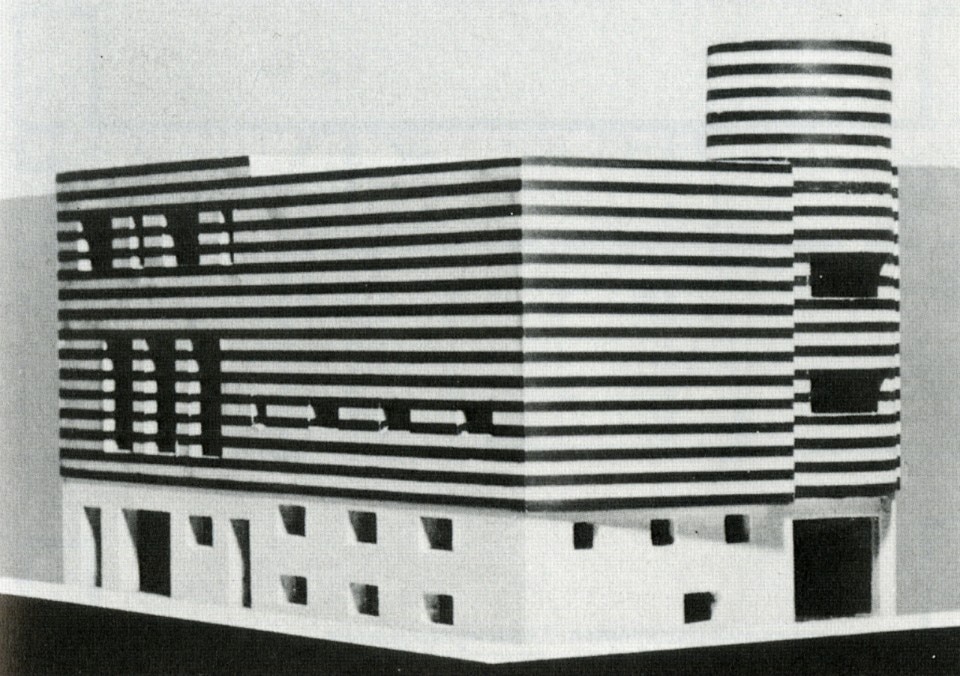
Adolf Loos for Josephine Baker, "Small Variety" (unrealized), Paris, France 1927
When the architect of the raumplan - the compositional principle based on the interlocking of volumes and planes of different sizes and heights - met Josephine Baker after seeing one of her performances at the Théâtre des Champs-Elysées, it was immediately magic: a meeting of opposites - the instinctual, animalistic vitality of the dancer on the one hand, the iron intellectual rigour of the architect on the other. The result was a project for a four-storey dwelling that was to occupy a corner site between Avenue Bugeaud and Rue du Général-Clergerie in the 16th arrondissement of Paris: a building with pure geometries (prism and cylinder) enclosed in an envelope finished in alternating bands of black and white marble, reminiscent of a mix between a Tuscan cathedral and a Moorish bathing establishment, coherently with the cultural contamination promoted by the artist. Behind the striped epidermis, Loos designed a generous alternation of lounges and entertainment spaces while the heart of the house was a double-height swimming pool - as Baker liked to swim - surrounded by glass walls and lit from above.

Barry Dierks for Maxine Elliott, Château de l'horizon (or Château de l'aurore), Vallauris, France 1932
When one thinks of the dolce vita and luxury of wealthy holidaymakers in the South of France, apart from Francis Scott Fitzerald, one immediately thinks of this sumptuous modernist villa perched on the cliffs of the Gulf of San Juan. Here, amidst card games and parties, politics and revelry took place, flirtations and passions were intertwined; illustrious personalities have passed through here, from Winston Churchil to Coco Chanel, from Somerset Maugham to Cecil Beaton, from Liz Taylor to Gianni Agnelli, enjoying the coastal sun at the edge of the disproportionate swimming pool and on the terrace dotted with umbrellas.
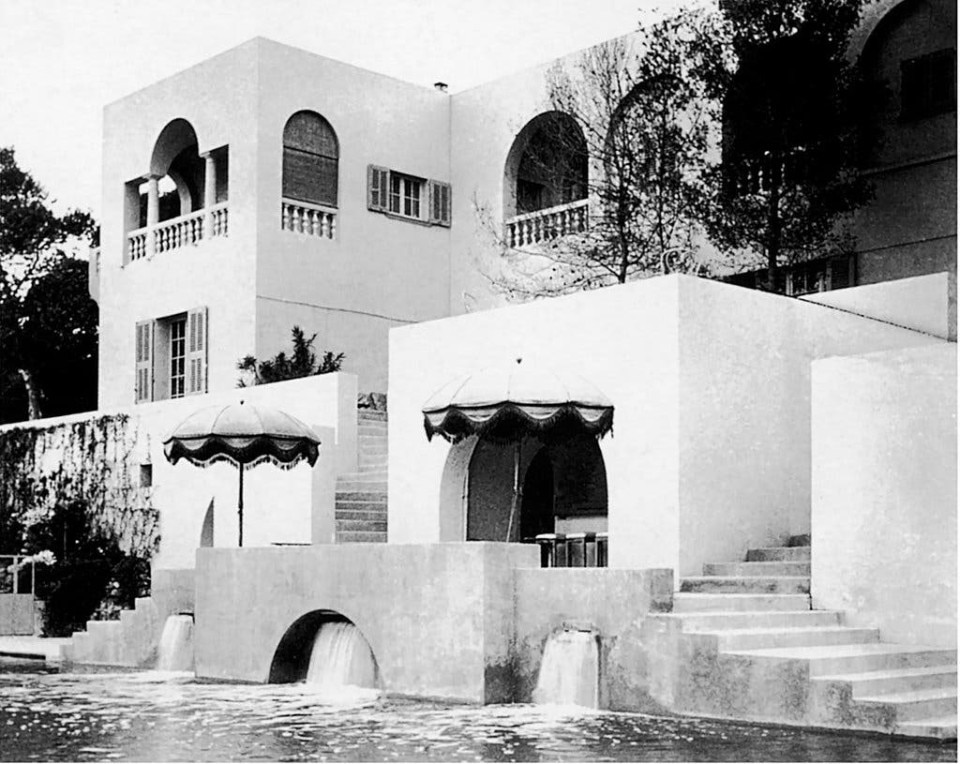
Barry Dierks for Maxine Elliott, Château de l'horizon (or Château de l'aurore), Vallauris, France 1932
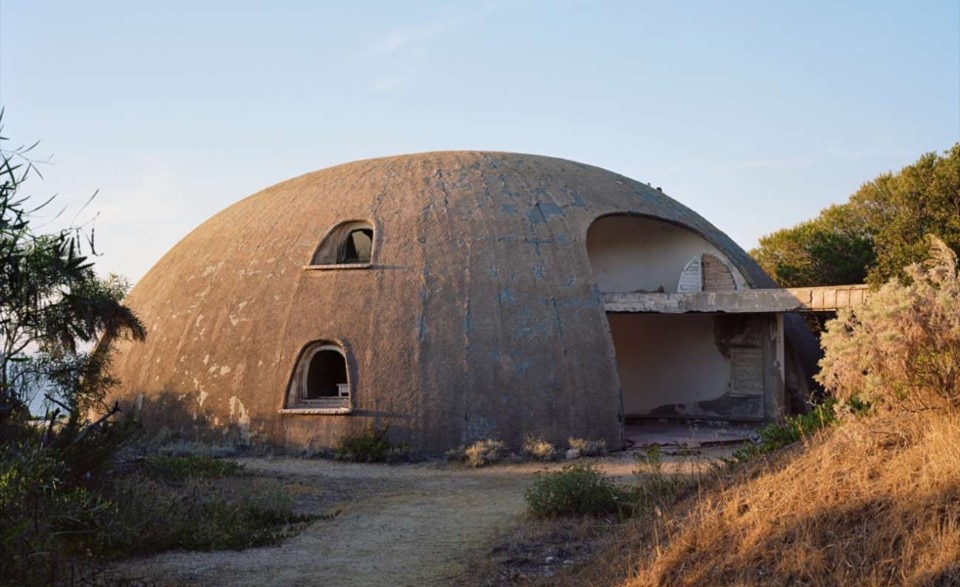
Dante Bini for Monica Vitti and Michelangelo Antonioni, La Cupola, Costa Paradiso, Sardinia, Italy 1969
In the wildest and most authentic Sardinia, the Vitti-Anonioni couple wanted their buen retiro from the set and the limelight: a house in the shape of a hemisphere, enveloped by the scent of Gallura and the sound of the sea, built using the Binishell technique, a construction process that involves shaping the concrete casting through air pressure. The building contained five rooms and four bathrooms connected by a sinuous staircase accessible from the living room. The exterior cladding, made of a mixture of plaster and crystals of local rock in pinkish hues, helped create an intimate bond with nature. Now abandoned, the building - which Rem Koolhaas described as "one of the best architectures of the last hundred years" - is protected by a historical-cultural interest bond and awaiting revitalisation.
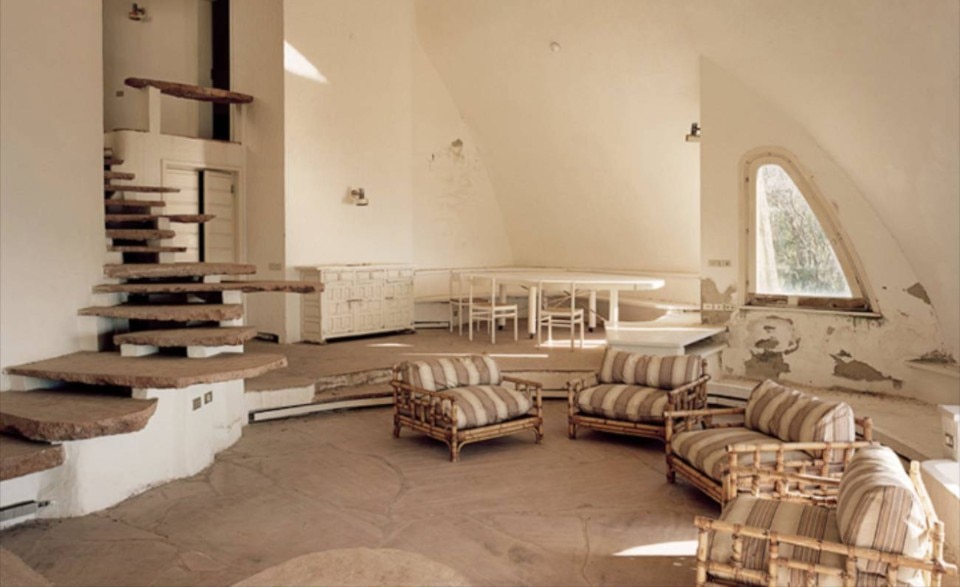
Dante Bini for Monica Vitti and Michelangelo Antonioni, La Cupola, Costa Paradiso, Sardinia, Italy 1969
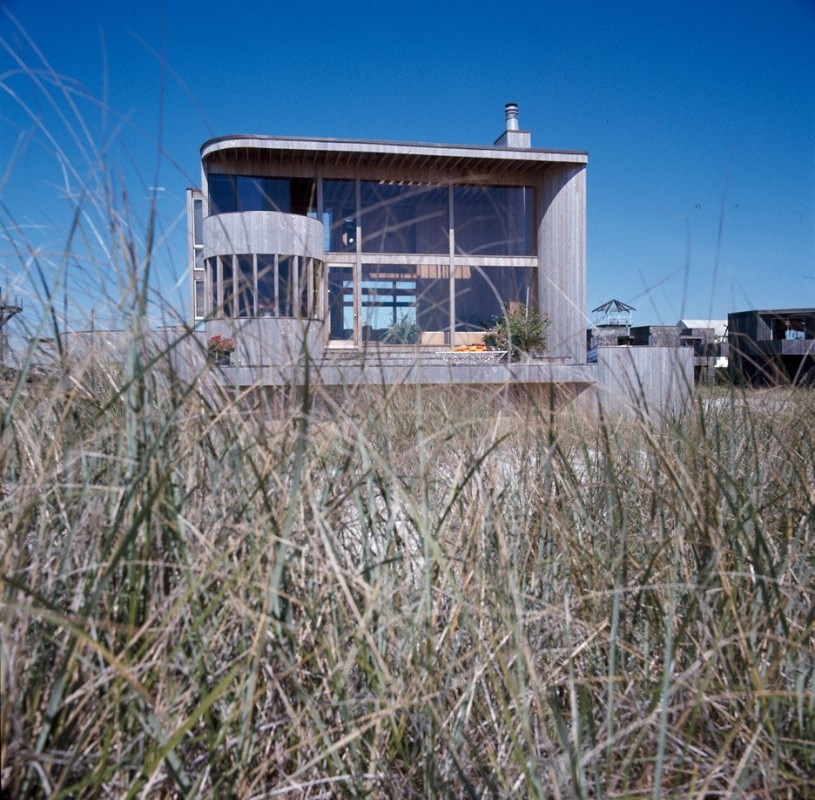
Horace Gifford for Calvin Klein, The Sloane, Fire Island, USA 1972
About an hour and a half from New Yourk, Fire Island is the opposite of the congested metropolis: here there are no cars and the colours of the landscape are the blue of the ocean, the green of the trees and the beige-brown of the beach and the wooden houses. In the Pines area in particular, architect Horace Gifford designed many modernist houses in the 1960s and 1970s, integrating them with nature and minimising environmental impact. Built for a couple with four children, the house with its soft shapes and covered entirely in wood was conceived to emphasise the visual continuity between the outside and the inside thanks to the large windows overlooking the sea. Purchased by Calvin klein in 1977, the designer hired architect Horace Gifford to design a swimming pool, gymnasium, accommodation for the pool and garden. After the devastation of Hurricane Gloria in 1985 and the transfer of ownership, the villa still looks out to sea with its composed and somewhat rugged charm.
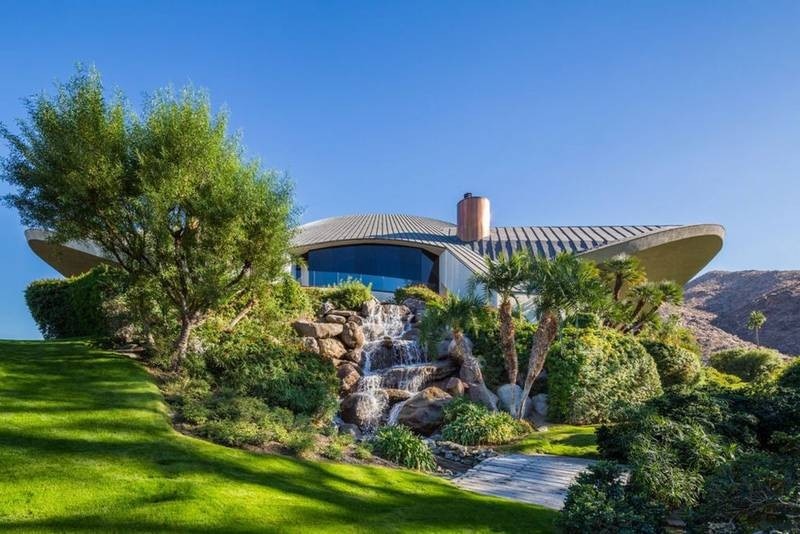
John Lautner for Bob Hope, Los Angeles, USA 1979
In Palm Springs, where the modernist taste exploded in the design of homes for wealthy holidaymakers during the mid-20th century, the villa designed by John Lautner for comedian Bob Hope and his wife is a triumph of soft, sinuous forms in close contact with nature. The concrete building is covered by a mighty roof that looks like a mushroom cap, perforated in the middle to provide zenithal views of the Californian sky and direct light to the patio below, and houses, in addition to the 10 bedrooms, a sumptuous party room. In the lush grounds outside, a rock garden, a swimming pool, a pond and a large boulder penetrating into the living room, quoting Frank Lloyd Wright's Fallingwater, reaffirm a strong link with organic architecture.
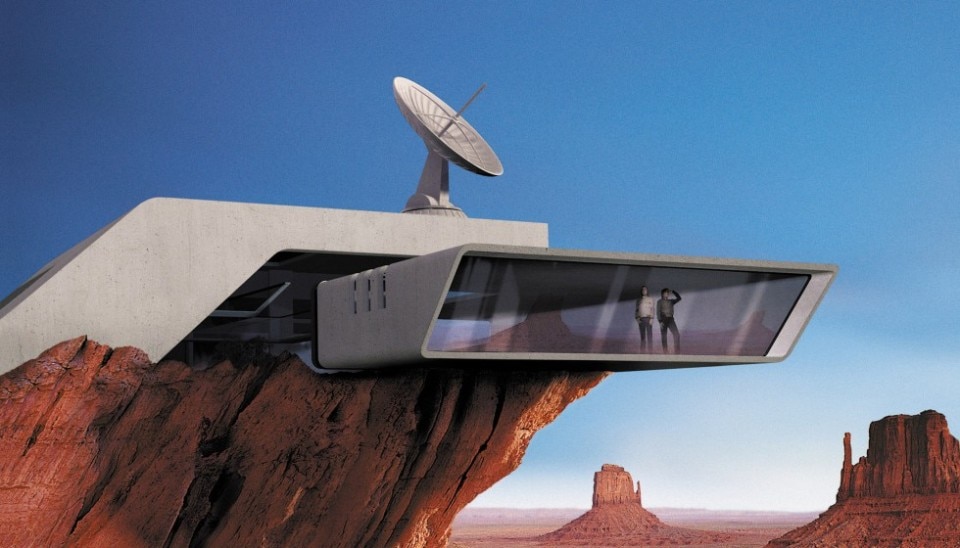
Ora ïto for AIR, The house of legend (unbuilt), 2001
For the release of the second album by the French band AIR entitled "10000 Hz Legend", French designer Ora ïto iconceptualised a virtual house completely dedicated to music exploration and production, in a decidedly mystical space suspended between heaven and earth and set in a natural setting that looks like the Rocky Mountains. A minimal and ethereal atmosphere that reflects the band's "cool" soul.
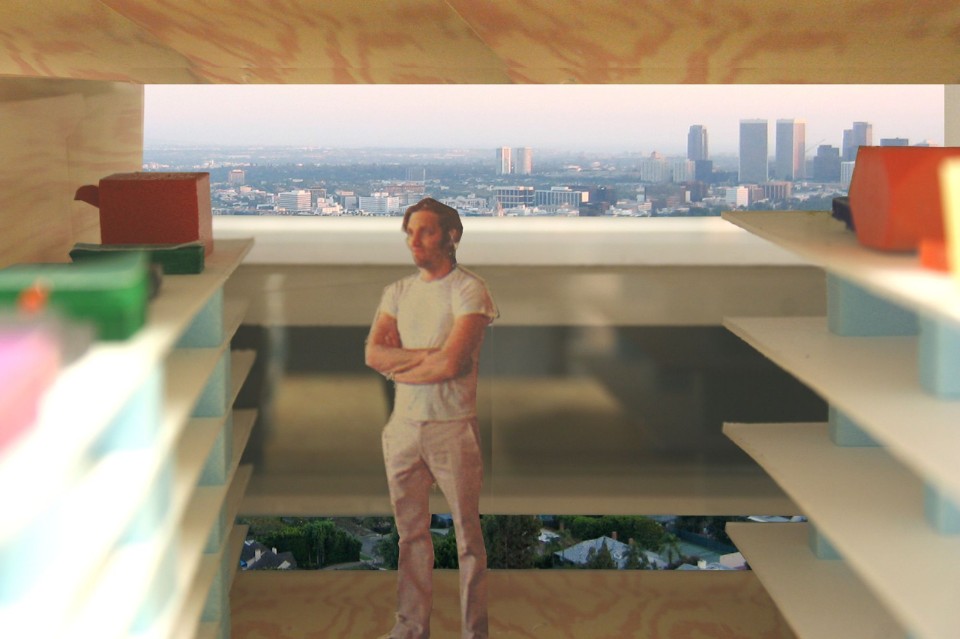
OMA/Rem Koolhaas for Vincent Gallo, Project for a flat (unbuilt), Los Angeles, USA 2005
For its multifaceted client - model, actor, director, writer, musician and painter, car expert - OMA conceived an intimate retreat with a breathtaking view of the surrounding cityscape. The flat is a duplex with living spaces on the lower floor and work spaces on the upper floor, based on the principle of leaving the view of the outside as unobstructed as possible. OMA's engineering flair has indulged in a flexible design approach, allowing a wide range of uses to coexist: a music studio, a concert hall, a guest room and a garage/workshop. In short, a house/"laboratory" that best interprets the spirit of its owner.
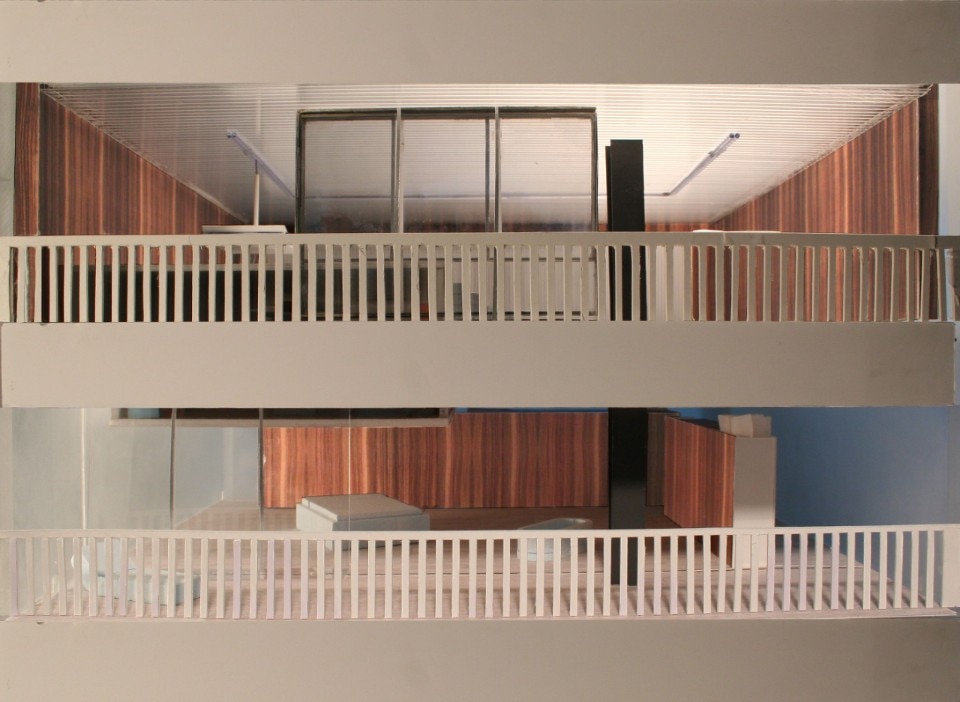
OMA/Rem Koolhaas for Vincent Gallo, Project for a flat (unbuilt), Los Angeles, USA 2005
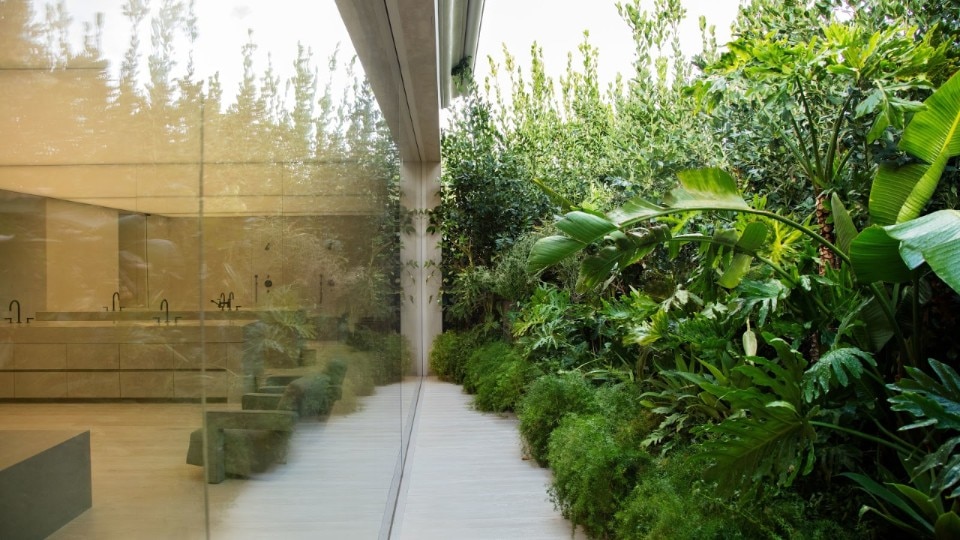
Axel Vervoordt for Kim Kardashian, Los Angeles, USA 2020
Contrary to expectations, the home of Kim Kardashian and Kanye West is not an apotheosis of ostentation and excess in the name of the most unbridled and massive luxury: on the contrary, it is a work of almost monk-like elegance and sobriety, the result of the work of Belgian designer Axel Vervoordt, architect Claudio Silvestrin - who designed the main bathroom - Vincent Van Duysen - who helped furnish the living room and children's rooms - and Peter Wirzt - who designed the gardens. The immaculate white house is a triumph of composure and minimalism, skilfully blended with the surrounding nature.
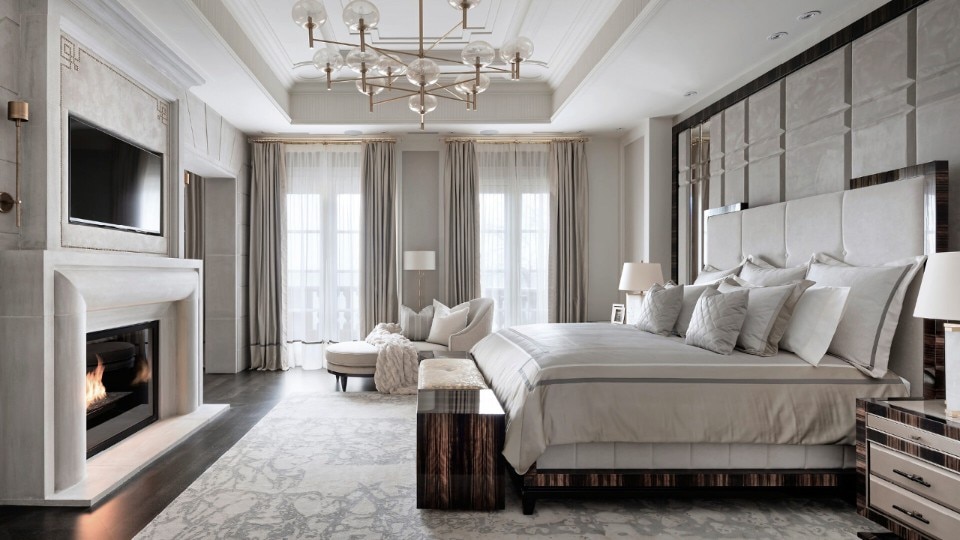
Ferris Rafauli for Drake, Toronto, Canada, 2020
Faced with a house like Drake's designed by Ferris Rafauli, it is easy to get a genuine "wow" out of it. The monumental building, with its classical and vaguely mausoleum-like forms, is an explosion of luxury and decoration, from the bronze details to the fluted marble walls, from the furniture - custom designed by Rafauli - to the lighting, curtains and carpets. Skilled craftsmanship and an evident taste for ostentation characterise the sumptuous interiors that house, in addition to the living quarters, music rooms, an indoor basketball court, huge indoor and outdoor swimming pools, a hammam and a massage centre. Because the demands of super-luxurious living are never-ending.
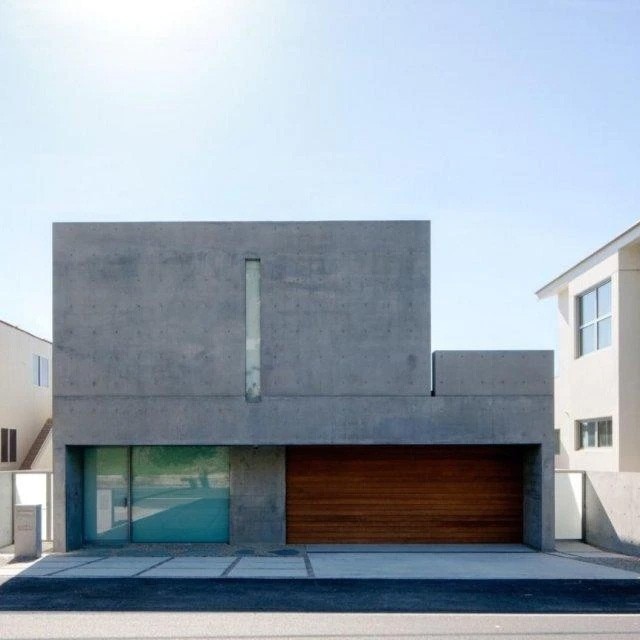
Tadao Ando for Kanye West, villa in Malibu, USA 2021
Kanye West has a passion for brutalism: the designer and musician has purchased a villa designed by Tadao Ando, previously owned by a high finance manager. The building has three levels: a lower floor with three bedrooms for guests, a middle floor for communal areas and an upper floor just for the master suite and a panoramic terrace. There is not a blade of grass but an internal staircase allows direct and privileged access to the beach. If this is not a luxury for a few...
Photo Roger Davies

Adolf Loos for Josephine Baker, "Small Variety" (unrealized), Paris, France 1927
When the architect of the raumplan - the compositional principle based on the interlocking of volumes and planes of different sizes and heights - met Josephine Baker after seeing one of her performances at the Théâtre des Champs-Elysées, it was immediately magic: a meeting of opposites - the instinctual, animalistic vitality of the dancer on the one hand, the iron intellectual rigour of the architect on the other. The result was a project for a four-storey dwelling that was to occupy a corner site between Avenue Bugeaud and Rue du Général-Clergerie in the 16th arrondissement of Paris: a building with pure geometries (prism and cylinder) enclosed in an envelope finished in alternating bands of black and white marble, reminiscent of a mix between a Tuscan cathedral and a Moorish bathing establishment, coherently with the cultural contamination promoted by the artist. Behind the striped epidermis, Loos designed a generous alternation of lounges and entertainment spaces while the heart of the house was a double-height swimming pool - as Baker liked to swim - surrounded by glass walls and lit from above.

Barry Dierks for Maxine Elliott, Château de l'horizon (or Château de l'aurore), Vallauris, France 1932
When one thinks of the dolce vita and luxury of wealthy holidaymakers in the South of France, apart from Francis Scott Fitzerald, one immediately thinks of this sumptuous modernist villa perched on the cliffs of the Gulf of San Juan. Here, amidst card games and parties, politics and revelry took place, flirtations and passions were intertwined; illustrious personalities have passed through here, from Winston Churchil to Coco Chanel, from Somerset Maugham to Cecil Beaton, from Liz Taylor to Gianni Agnelli, enjoying the coastal sun at the edge of the disproportionate swimming pool and on the terrace dotted with umbrellas.

Barry Dierks for Maxine Elliott, Château de l'horizon (or Château de l'aurore), Vallauris, France 1932

Dante Bini for Monica Vitti and Michelangelo Antonioni, La Cupola, Costa Paradiso, Sardinia, Italy 1969
In the wildest and most authentic Sardinia, the Vitti-Anonioni couple wanted their buen retiro from the set and the limelight: a house in the shape of a hemisphere, enveloped by the scent of Gallura and the sound of the sea, built using the Binishell technique, a construction process that involves shaping the concrete casting through air pressure. The building contained five rooms and four bathrooms connected by a sinuous staircase accessible from the living room. The exterior cladding, made of a mixture of plaster and crystals of local rock in pinkish hues, helped create an intimate bond with nature. Now abandoned, the building - which Rem Koolhaas described as "one of the best architectures of the last hundred years" - is protected by a historical-cultural interest bond and awaiting revitalisation.

Dante Bini for Monica Vitti and Michelangelo Antonioni, La Cupola, Costa Paradiso, Sardinia, Italy 1969

Horace Gifford for Calvin Klein, The Sloane, Fire Island, USA 1972
About an hour and a half from New Yourk, Fire Island is the opposite of the congested metropolis: here there are no cars and the colours of the landscape are the blue of the ocean, the green of the trees and the beige-brown of the beach and the wooden houses. In the Pines area in particular, architect Horace Gifford designed many modernist houses in the 1960s and 1970s, integrating them with nature and minimising environmental impact. Built for a couple with four children, the house with its soft shapes and covered entirely in wood was conceived to emphasise the visual continuity between the outside and the inside thanks to the large windows overlooking the sea. Purchased by Calvin klein in 1977, the designer hired architect Horace Gifford to design a swimming pool, gymnasium, accommodation for the pool and garden. After the devastation of Hurricane Gloria in 1985 and the transfer of ownership, the villa still looks out to sea with its composed and somewhat rugged charm.

John Lautner for Bob Hope, Los Angeles, USA 1979
In Palm Springs, where the modernist taste exploded in the design of homes for wealthy holidaymakers during the mid-20th century, the villa designed by John Lautner for comedian Bob Hope and his wife is a triumph of soft, sinuous forms in close contact with nature. The concrete building is covered by a mighty roof that looks like a mushroom cap, perforated in the middle to provide zenithal views of the Californian sky and direct light to the patio below, and houses, in addition to the 10 bedrooms, a sumptuous party room. In the lush grounds outside, a rock garden, a swimming pool, a pond and a large boulder penetrating into the living room, quoting Frank Lloyd Wright's Fallingwater, reaffirm a strong link with organic architecture.

Ora ïto for AIR, The house of legend (unbuilt), 2001
For the release of the second album by the French band AIR entitled "10000 Hz Legend", French designer Ora ïto iconceptualised a virtual house completely dedicated to music exploration and production, in a decidedly mystical space suspended between heaven and earth and set in a natural setting that looks like the Rocky Mountains. A minimal and ethereal atmosphere that reflects the band's "cool" soul.

OMA/Rem Koolhaas for Vincent Gallo, Project for a flat (unbuilt), Los Angeles, USA 2005
For its multifaceted client - model, actor, director, writer, musician and painter, car expert - OMA conceived an intimate retreat with a breathtaking view of the surrounding cityscape. The flat is a duplex with living spaces on the lower floor and work spaces on the upper floor, based on the principle of leaving the view of the outside as unobstructed as possible. OMA's engineering flair has indulged in a flexible design approach, allowing a wide range of uses to coexist: a music studio, a concert hall, a guest room and a garage/workshop. In short, a house/"laboratory" that best interprets the spirit of its owner.

OMA/Rem Koolhaas for Vincent Gallo, Project for a flat (unbuilt), Los Angeles, USA 2005

Axel Vervoordt for Kim Kardashian, Los Angeles, USA 2020
Contrary to expectations, the home of Kim Kardashian and Kanye West is not an apotheosis of ostentation and excess in the name of the most unbridled and massive luxury: on the contrary, it is a work of almost monk-like elegance and sobriety, the result of the work of Belgian designer Axel Vervoordt, architect Claudio Silvestrin - who designed the main bathroom - Vincent Van Duysen - who helped furnish the living room and children's rooms - and Peter Wirzt - who designed the gardens. The immaculate white house is a triumph of composure and minimalism, skilfully blended with the surrounding nature.

Ferris Rafauli for Drake, Toronto, Canada, 2020
Faced with a house like Drake's designed by Ferris Rafauli, it is easy to get a genuine "wow" out of it. The monumental building, with its classical and vaguely mausoleum-like forms, is an explosion of luxury and decoration, from the bronze details to the fluted marble walls, from the furniture - custom designed by Rafauli - to the lighting, curtains and carpets. Skilled craftsmanship and an evident taste for ostentation characterise the sumptuous interiors that house, in addition to the living quarters, music rooms, an indoor basketball court, huge indoor and outdoor swimming pools, a hammam and a massage centre. Because the demands of super-luxurious living are never-ending.

Tadao Ando for Kanye West, villa in Malibu, USA 2021
Kanye West has a passion for brutalism: the designer and musician has purchased a villa designed by Tadao Ando, previously owned by a high finance manager. The building has three levels: a lower floor with three bedrooms for guests, a middle floor for communal areas and an upper floor just for the master suite and a panoramic terrace. There is not a blade of grass but an internal staircase allows direct and privileged access to the beach. If this is not a luxury for a few...
Photo Roger Davies
From the 1920s to the present day, there is a wealth of evidence of how architectural design has responded to the extravagances and excesses of famous people, sometimes obsessed with the idea of a residence to match their ego. They show how exuberant and unusual projects have been the backdrop not only to glittering parties and receptions, but to some power games and political events. Read more
19
The world’s weirdest skyscrapers now under construction
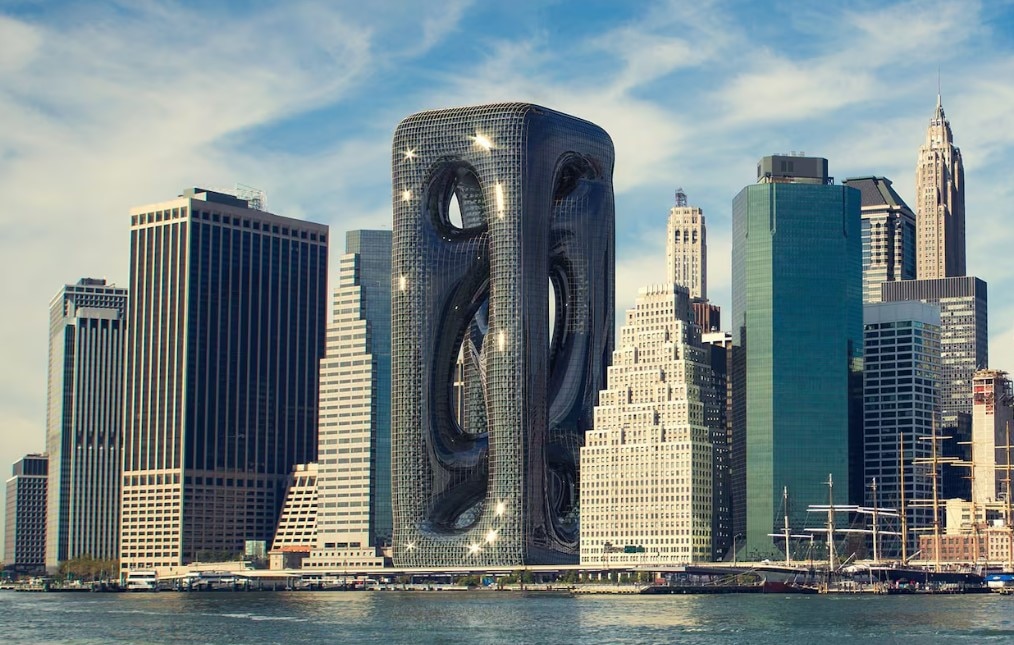
 View gallery
View gallery

NBBJ, Amazon HQ2 office complex, Arlington, US (ongoing)
The Arlington County Council recently approved the decision to build the 106-metre high spiral tower for the Amazon HQ2. The tower, named “The Helix”, will be one of three office buildings in Arlington County that will form Amazon's Amazon's second headquarters. The buildings, located between paths and tree-lined boulevards, are set to become among the tallest in Arlington, where high-rise construction is prohibited.
Image Courtesy of NBBJ
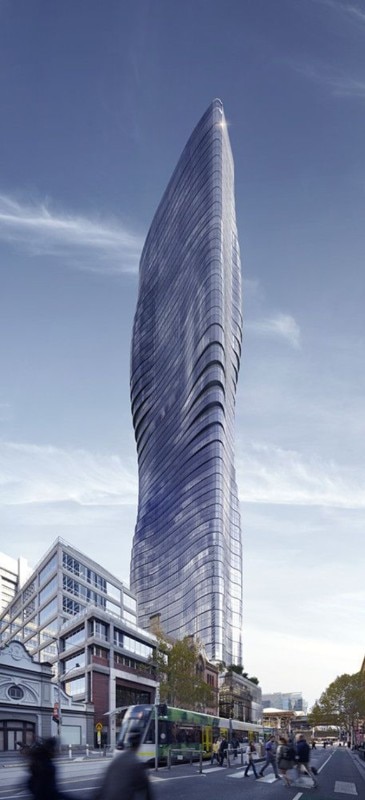
Elenberg Fraser, Premier Tower, Melbourne, Australia
The reflective glass and steel mixed-use building with its soft, curvy form is an homage to the wavy fabric-wrapped bodies of the dancers in Beyoncé's 2013 music video (Ghost).
Image Courtesy of Elenberg Fraser
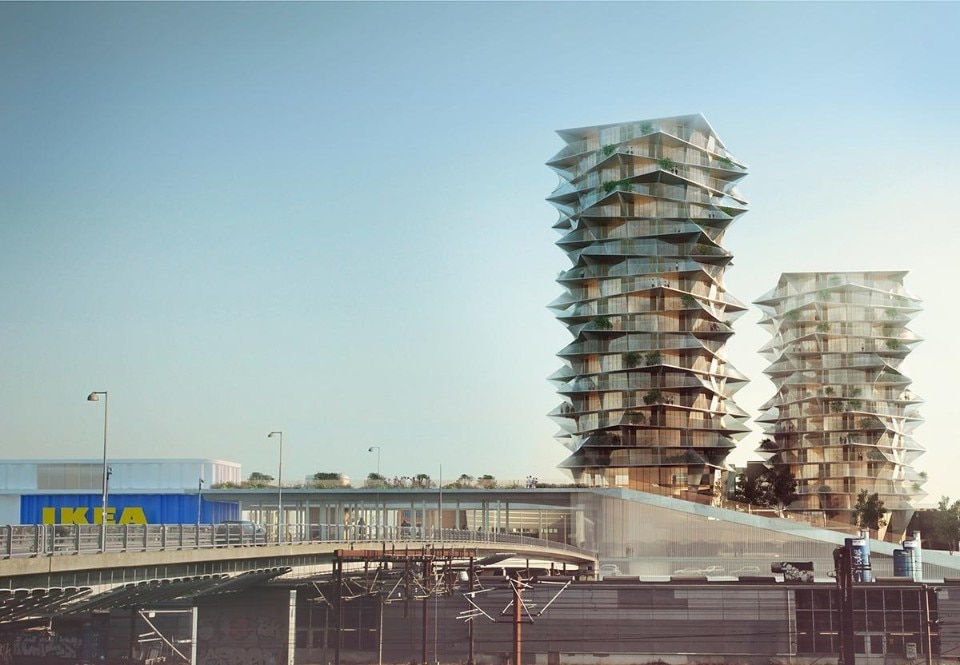
BIG, Cactus Tower, Copenhagen, Denmark 2024
The Cactus Towers, named after the characteristic façade conformation reminiscent of the spiny shape of a cactus, are characterised by the superimposition of horizontal blocks with different orientations to create an articulated geometric composition incorporating staggered loggias, sharp edges and glazed surfaces. Recently completed, the towers are mainly intended for residential and micro-living, especially for young students, residents and tourists.
Image Courtesy of BIG
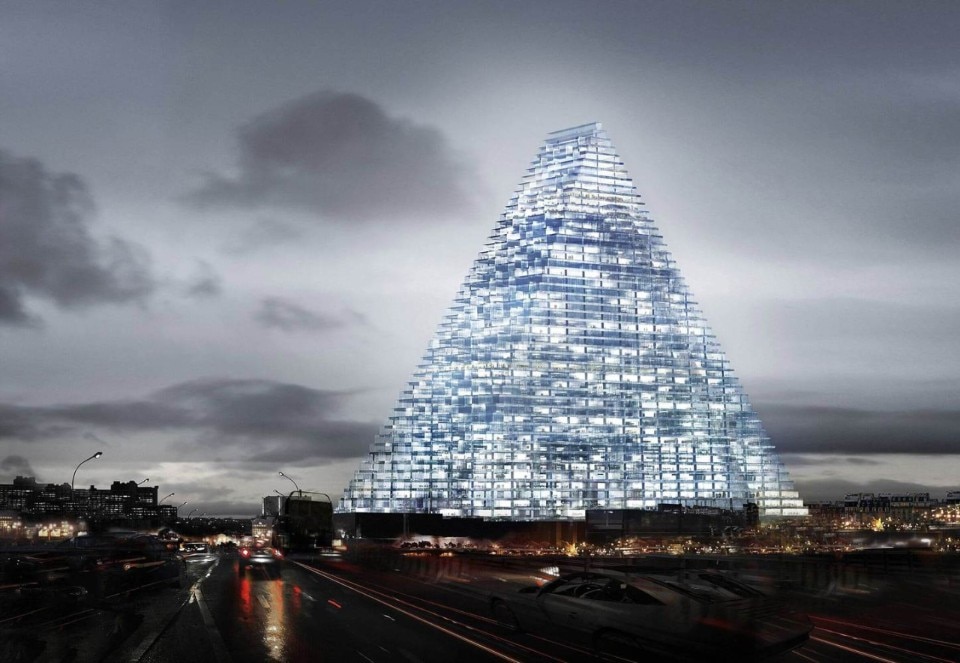
Herzog & De Meuron, Tour Triangle, Paris, France (under construction, scheduled completion in 2024)
The glass pyramid with a height of 180 m will be the third tallest building in Paris, after the Eiffel Tower and the Montparnasse Tower. The trapezoidal shape of the building is determined by the rotation of the north and south axes on the rectangular plot, while the volumetric pyramidal development reduces shadows on the adjacent residential buildings. The skyscraper, scheduled for completion in 2026, will house offices, a conference centre, a wellness centre, a cultural centre, a kindergarten, a luxury hotel and a panoramic restaurant on its 41 floors.
Image Courtesy of Herzog & De Meuron
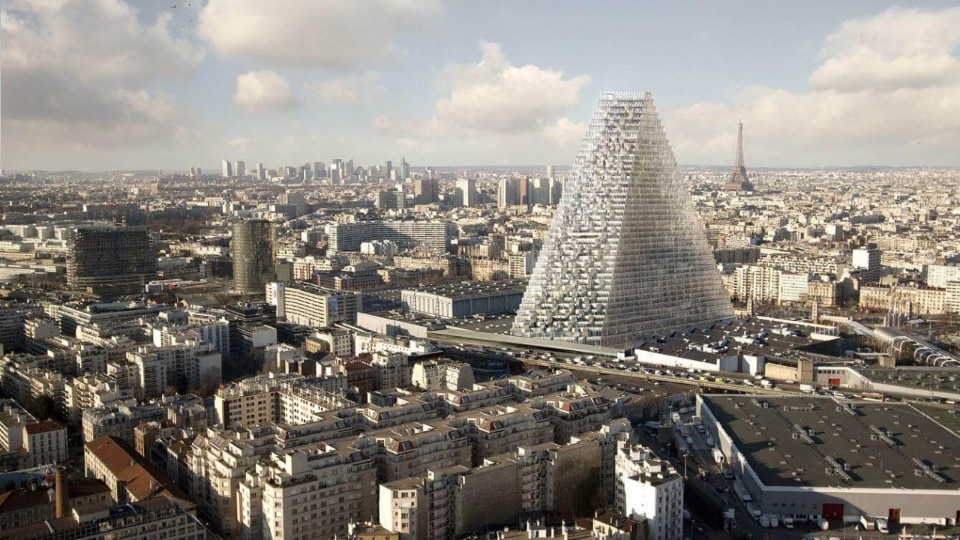
Herzog & De Meuron, Tour Triangle, Paris, France (under construction, scheduled completion 2024)
Image Courtesy of Herzog & De Meuron
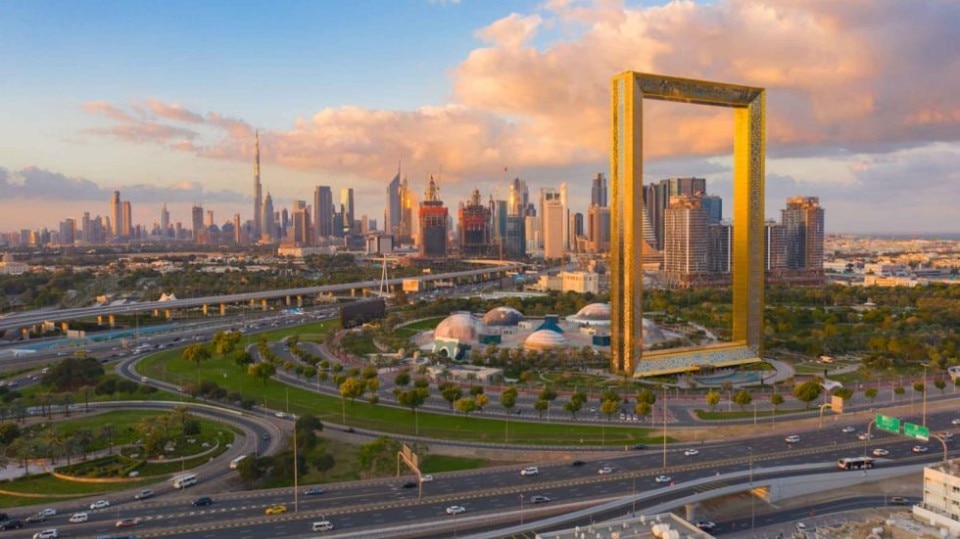
Fernando Donis, Dubai Frame, Dubai, UAE 2018
The world's largest “frame” was conceived as an observatory, museum and monument to cornice the landmarks of modern Dubai (the Emirates Towers or the Burj Khalifa, the world's tallest building) and older Dubai (Deira, Umm Harare and Karama). The complex, made of glass, steel, aluminium and reinforced concrete, consists of two vertical towers connected by two horizontal volumes, the upper of which forms a 150 m high walkway.
Photo Courtesy of Fernando Donis
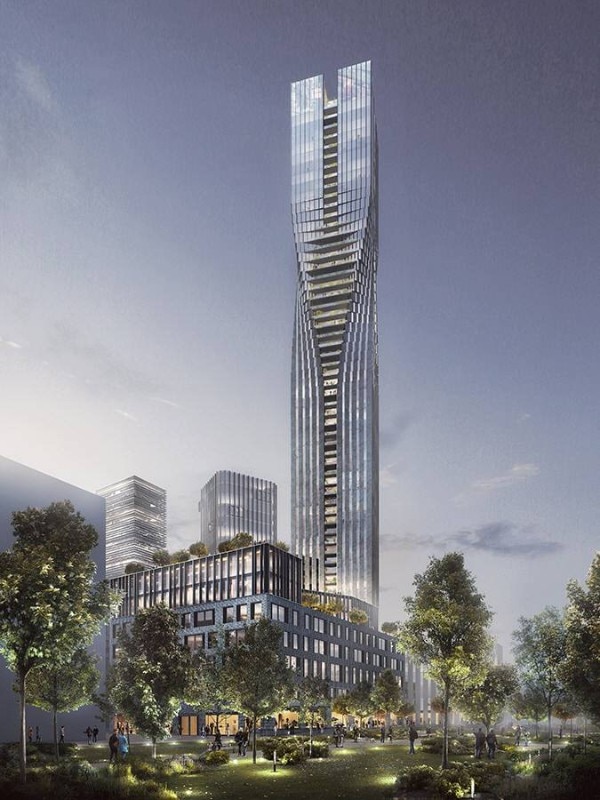
SOM, Karlatornet Tower, Gothenburg, Sweden 2024
Con i suoi 246 metri che lo renderanno al termine dei lavori il grattacielo più alto della Scandinavia, Karlatornet è situato in un una posizione tale da essere visibile nitidamente dall’area portuale di Lindholmen e dal centro città, divenendo così un potente landmark nel paesaggio urbano. La torre in vetro dalla silhouette fluida ed elegante, quasi completata, ospiterà 611 appartamenti, hotel, uffici e uno sky bar.
Image Courtesy of SOM
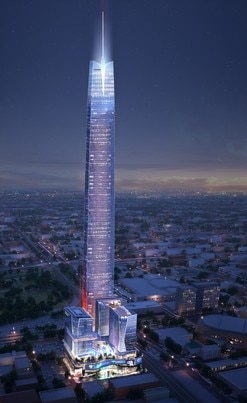
AO, Legends Tower, Oklahoma City, USA, ongoing
The Oklahoma City Council has just approved the urban development programme for the Boardwalk at Bricktown area, of which Legends Tower will be the flagship element. The building, which at 581 m will become the tallest skyscraper in the United States and one of the tallest in the world, will house hotel, residential and commercial functions and, on the top floors, a restaurant and a rooftop terrace. “The height is not a necessary thing”, says one of the planners, revealing that the exponential growth in height of the building was not planned at the beginning but occurred during the conceptual process, following the reactions of investors, the market and the city to the project.
Image from Wikipedia

Binghatti Development, Bugatti residences, Dubai, UAE, Ongoing
The design of the ultra-luxury residential complex (the world's first Bugatti-Residence) illustrated in Dubai in 2023 is currently under development. The subtle curves, fluid forms and changing play of light that will be created on the glazed surfaces evoke an amoeboid struggling in the heart of the metropolis.
Courtesy of Binghatti Development
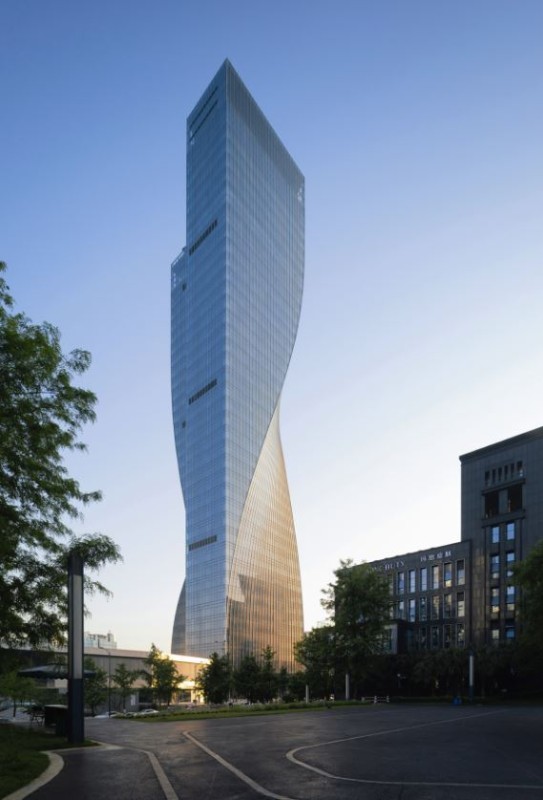
Aedas, Chongqing Gaoke Group Ltd Office, Chongqing, China 2022
The 180 m high office tower offers a digression on the theme of twisting volumes and the relationship with light, which becomes a powerful design element. The essential glass volume that twists in on itself, creating curved walls in dialogue with the rectilinear planes, accentuates the light reflections, which change over the course of the day and transforms the building into an inspiring backdrop for a “dance of light”.
Courtesy of Aedas
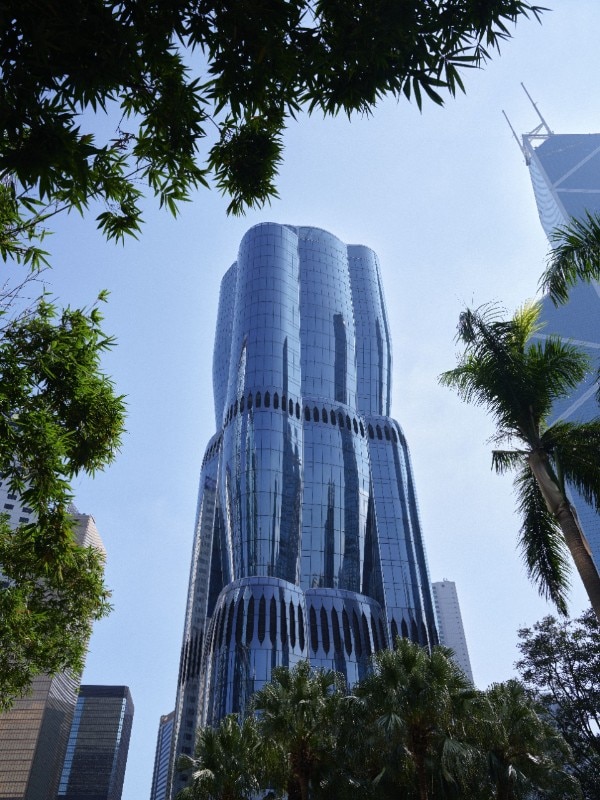
Zaha Hadid Architects, The Henderson, Hong Kong, 2025
The 190-metre high, 37-storey skyscraper for the offices of the Henderson Land company is a plastic volume shaped by an organically inspired, undulating glass façade, reflecting the changing silhouettes of the surrounding metropolis. The design reinterprets the curves of a Bauhinia bud (known as Hong Kong's orchid tree) about to bloom.
Photo Virgile Simon Bertrand
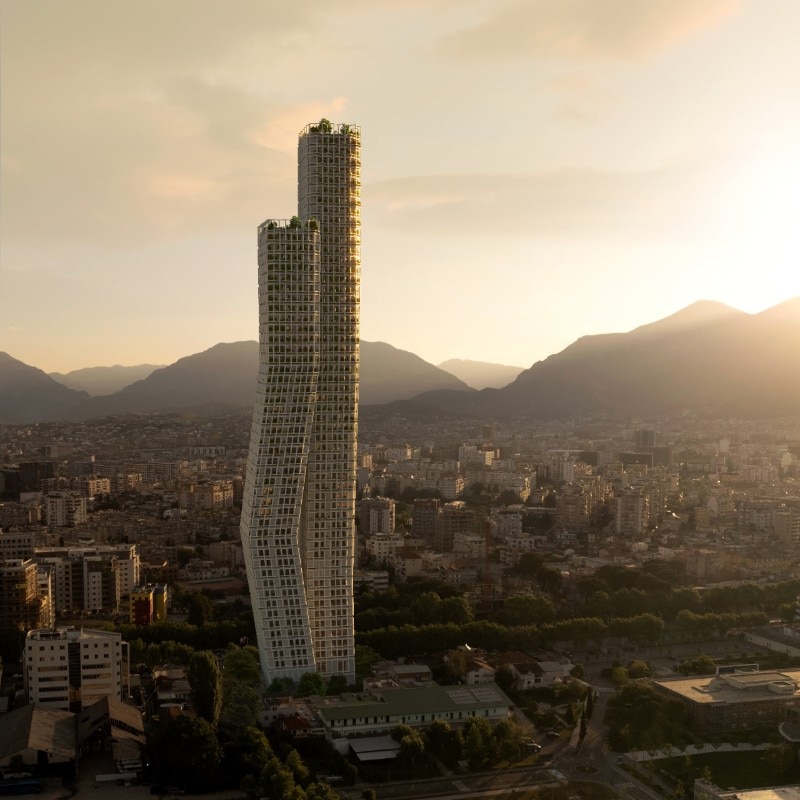
OODA, Bond Tower, Tirana, Albania, ongoing
Bond Tower is a 50-storey complex that splits into two towers and, with retail space, offices, residences and a hotel, reflects the vibrant energies of the Albanian capital. The dialectic (and encounter) of the two volumes creates a changing perception depending on the angle and is inspired by “The Kiss”, Gustav Klimt's famous painting in which two bodies merge into a single form (and soul).
Render Plomp

NBBJ, Amazon HQ2 office complex, Arlington, US (ongoing)
The Arlington County Council recently approved the decision to build the 106-metre high spiral tower for the Amazon HQ2. The tower, named “The Helix”, will be one of three office buildings in Arlington County that will form Amazon's Amazon's second headquarters. The buildings, located between paths and tree-lined boulevards, are set to become among the tallest in Arlington, where high-rise construction is prohibited.
Image Courtesy of NBBJ

Elenberg Fraser, Premier Tower, Melbourne, Australia
The reflective glass and steel mixed-use building with its soft, curvy form is an homage to the wavy fabric-wrapped bodies of the dancers in Beyoncé's 2013 music video (Ghost).
Image Courtesy of Elenberg Fraser

BIG, Cactus Tower, Copenhagen, Denmark 2024
The Cactus Towers, named after the characteristic façade conformation reminiscent of the spiny shape of a cactus, are characterised by the superimposition of horizontal blocks with different orientations to create an articulated geometric composition incorporating staggered loggias, sharp edges and glazed surfaces. Recently completed, the towers are mainly intended for residential and micro-living, especially for young students, residents and tourists.
Image Courtesy of BIG

Herzog & De Meuron, Tour Triangle, Paris, France (under construction, scheduled completion in 2024)
The glass pyramid with a height of 180 m will be the third tallest building in Paris, after the Eiffel Tower and the Montparnasse Tower. The trapezoidal shape of the building is determined by the rotation of the north and south axes on the rectangular plot, while the volumetric pyramidal development reduces shadows on the adjacent residential buildings. The skyscraper, scheduled for completion in 2026, will house offices, a conference centre, a wellness centre, a cultural centre, a kindergarten, a luxury hotel and a panoramic restaurant on its 41 floors.
Image Courtesy of Herzog & De Meuron

Herzog & De Meuron, Tour Triangle, Paris, France (under construction, scheduled completion 2024)
Image Courtesy of Herzog & De Meuron

Fernando Donis, Dubai Frame, Dubai, UAE 2018
The world's largest “frame” was conceived as an observatory, museum and monument to cornice the landmarks of modern Dubai (the Emirates Towers or the Burj Khalifa, the world's tallest building) and older Dubai (Deira, Umm Harare and Karama). The complex, made of glass, steel, aluminium and reinforced concrete, consists of two vertical towers connected by two horizontal volumes, the upper of which forms a 150 m high walkway.
Photo Courtesy of Fernando Donis

SOM, Karlatornet Tower, Gothenburg, Sweden 2024
Con i suoi 246 metri che lo renderanno al termine dei lavori il grattacielo più alto della Scandinavia, Karlatornet è situato in un una posizione tale da essere visibile nitidamente dall’area portuale di Lindholmen e dal centro città, divenendo così un potente landmark nel paesaggio urbano. La torre in vetro dalla silhouette fluida ed elegante, quasi completata, ospiterà 611 appartamenti, hotel, uffici e uno sky bar.
Image Courtesy of SOM

AO, Legends Tower, Oklahoma City, USA, ongoing
The Oklahoma City Council has just approved the urban development programme for the Boardwalk at Bricktown area, of which Legends Tower will be the flagship element. The building, which at 581 m will become the tallest skyscraper in the United States and one of the tallest in the world, will house hotel, residential and commercial functions and, on the top floors, a restaurant and a rooftop terrace. “The height is not a necessary thing”, says one of the planners, revealing that the exponential growth in height of the building was not planned at the beginning but occurred during the conceptual process, following the reactions of investors, the market and the city to the project.
Image from Wikipedia

Binghatti Development, Bugatti residences, Dubai, UAE, Ongoing
The design of the ultra-luxury residential complex (the world's first Bugatti-Residence) illustrated in Dubai in 2023 is currently under development. The subtle curves, fluid forms and changing play of light that will be created on the glazed surfaces evoke an amoeboid struggling in the heart of the metropolis.
Courtesy of Binghatti Development

Aedas, Chongqing Gaoke Group Ltd Office, Chongqing, China 2022
The 180 m high office tower offers a digression on the theme of twisting volumes and the relationship with light, which becomes a powerful design element. The essential glass volume that twists in on itself, creating curved walls in dialogue with the rectilinear planes, accentuates the light reflections, which change over the course of the day and transforms the building into an inspiring backdrop for a “dance of light”.
Courtesy of Aedas

Zaha Hadid Architects, The Henderson, Hong Kong, 2025
The 190-metre high, 37-storey skyscraper for the offices of the Henderson Land company is a plastic volume shaped by an organically inspired, undulating glass façade, reflecting the changing silhouettes of the surrounding metropolis. The design reinterprets the curves of a Bauhinia bud (known as Hong Kong's orchid tree) about to bloom.
Photo Virgile Simon Bertrand

OODA, Bond Tower, Tirana, Albania, ongoing
Bond Tower is a 50-storey complex that splits into two towers and, with retail space, offices, residences and a hotel, reflects the vibrant energies of the Albanian capital. The dialectic (and encounter) of the two volumes creates a changing perception depending on the angle and is inspired by “The Kiss”, Gustav Klimt's famous painting in which two bodies merge into a single form (and soul).
Render Plomp
The race to climb the highest is not the only competition in the world of architecture. On the contrary, the prevailing trend in recent years seems to be to innovate the typology of the skyscraper: instead of battling to have the tallest skyscraper in the world, the great global metropolises are seeing the growth of huge iconic objects, whose shapes recall everyday objects, animal silhouettes...
We started an exploration of this world of shapes in 2021, and we are back now with this year's latest episodes. Read more
20
The 20 most influential sneaker designs of all time

 View gallery
View gallery

Converse All Star (1923)
A timeless classic, the Converse All Star – or Chuck Taylor All Star – are the perfect example of a shoe being able to evolve, adapt and reach a transversal audience by always staying on trend and without never subverting the original design concept. Like many other canvas sneakers of the early 1900s, they were born as a product of a firm operating in the field of rubber technology. It’s in 1923, though, that the All Star finally acquired the design that still helps it to stand out these days thanks to the intuition of Chuck Taylor, an employee of the company and a former basketball player.
This made Converse a quintessentially American shoe: not only their ankle-wrapping silhouette was determined by the ergonomic needs of the players on the court, but their widespread affirmation also came after their use as the official shoe of the 1936 Olympics and their inclusion, since the 1940s, in the uniform of the U.S. Army soldiers.
The company’s smart marketing moves – like the introduction of the iconic starred circular patch on the ankle – and the intuition to offer a varied range of colours matching those of the teams’ uniforms were pivotal in imposing Converse over its many competitors as a favourite among basketball players of the 1960s, in both the NBA and the college circuits. It was indeed the widespread use of the sneakers across the American campuses what resulted fundamental in operating the transition of Converse All Star from sportswear to streetwear. When in the 1970s the appeal of this precise model on basketball courts declined in favour of others, comprising of leather uppers and thicker soles, the road was already paved for the future of the shoe. Adopted in the streets by teenagers both in the Afro-American and in the white communities, Converse All Star hi-tops turned into a staple of the wardrobes of young rebels. When Ramones, then, were shot wearing black All Star hi-tops on the cover of their chart-topping debut album history was made and Converse’s future forever changed.
Since 2013 the brand has been reissuing the Hi-Top ‘70 model (pictured), now particularly on vouge similarly to its collaboration with Comme Des Garçons launched in 2015. It aims to reproduce the shoe once used on basketball courts and it features thicker canvas, a smaller rubber toe cap and thicker, glossier soles.

2. Superga 2750 (1925)
The epitome of the tennis sneaker, a shoe able to switch from the courts to the streets with seamless and unique fluidity. The Superga 2750 is an Italian icon that stood the test of time thanks to its minimalist and clean silhouette and volcanic rubber sole first conceived by its creator and rubber entrepreneur Walter Martiny. The shoe was further perfectioned when the Italian brand – which took its name from the Superga Hill located in Turin – was acquired by tyre colossus Pirelli in 1951. Despite becoming bona fide streetwear and fashion classics – the sneaker was used as an alternative to formal shoes on the Milanese catwalks through the whole of the ‘80s - Superga kept producing successful tennis sneakers, like the 2750 Cotu Panatta. These sneakers featured the Superga motif stitched on the side and were worn by Adriano Panatta in the glory year of 1976, when the Italian player secured the Davis Cup, the Italy’s Internazionali and the Roland Garros.

3. Dunlop Green Flash (1929)
The development of sneakers has always gone hand in hand with technological innovations in the field of design, anatomy and pneumatics. It is no wonder that the Green Flash were conceived by Dunlop, the historical British brand that in the late 1800s had first patented the pneumatic tyre when founder John Boyd Dunlop was trying to improve the comfort of his son’s bike rides. The Green Flash became renowned when English tennis colossus Fred Perry – a future fashion entrepreneur himself – wore them on the court. Dunlop Green Flash represented a great innovation for their times when they brightened up the standard white sport shoe with emerald green details

4. Adidas Stan Smith (1963)
It is rather ironical that Adidas’ best-selling sneaker (the 22 million pairs sold by 1988 had won the brand a Guinnes World Records award) is the one that breaks free from the brand’s tradition the most. The lack of the three stripes – they feature a triple perforation instead – makes the Stan Smith an exception in the Adidas catalogue. At first, they were named after Robert Haillet, the tennis player who endorsed them in the Sixties, but in 1978 the name was changed – this time for good – into Stan Smith. Under this denomination the sneaker reached the peak of its fame and acquired the iconic Smith portrait artwork on the tongue; a characterising that has since been used by Adidas on other releases like the collaboration with former Oasis member Noel Gallagher. The equally representative emerald green tab on the heel is another classic tennis shoe feature that was, no doubt, inspired by the Dunlop Green Flash. Adidas has recently launched a vegan version of the Stan Smith, another sign of the brand's dedication to the theme of sustainability in footwear.

5. Onitsuka Tiger Mexico '66 (1966)
This model was designed by the Japanese brand for the 1966 Olympic games in Mexico, but their affirmation into Western streetwear only came in 2003, following a rebranding of the shoe and their use– in the black and yellow colourway – by Uma Thurman in Kill Bill 2. The stylistic choice was an explicit tribute director Quentin Tarantino made to the Onitsuka Tiger worn by Bruce Lee in his last (and incomplete) film Game of Death (1972).
The Onitsuka Tiger were one of the most technologically advanced running shoes of the Sixties, something that also led them to be partially ripped off by the then up and coming Nike (still named Blue Ribbon). The brand's founders, athletes Phillip Knight and Bill Bowerman, after signing a distribution contract for the Japanese sneaker, thoroughly studied the shoes' technology to then adopt it in a creation of their own for the 1972 Munich Olympic games: the legendary Nike Cortez '72. The sneaker, later turned into an icon on the big screen by Tom Hanks in Forrest Gump, contributed to the extraordinary success of Nike, while the Onitsuka Tiger slipped into oblivion for many years.

6. Vans (1966)
The Vans (or Van Doren, as they were originally known) have remained pretty much untouched since their release on the market, and have since then acquired a cult following spanning from Hardcore Punk devotees to Ivy League students on campus, and, needless to say, skaters of course. It was 1966 when Van Doren added a thicker and sturdier sole to the then popular canvas sneaker to fulfil the needs of the then up and coming skaters. However, Vans are one of the many sneakers that despite being conceived for sporting purposes found a fortune in streetwear. After all, skateboarding was born in the streets as a winter alternative to surf, hence its status constantly halfway between an athletic discipline and a subculture. This resulted in a shoe with a transversal appeal and that can successfully adapt to a plethora of different looks.

7. Puma Suede (1968)
The Suede is the epitome of the Puma sneaker. A shoe conceived for the athletes partaking to the Mexico '68 Olympic games (Tommie Smith wore a black pair during his famous Black Power salute podium ceremony) that presented a suede upper body and a rather tall sole made of white rubber, and that was originally only available in blue suede for the Puma-sponsored athletes and in black suede for the non-Puma ones. The sneaker was at first named Crack (a Sixties slang term that defined a hip person), but in 1972 it temporarily acquired the name Clyde and a more tapered silhouette. The new name was the consequence of the first paid sponsorship ($5,000) between a sports brand and an athlete: the New York Knicks star Walt Frazier, better known as Clyde because of his eccentric fashion style reminiscent of that of gangster Clyde Barrow – a character that between the '60 and the '70s had benefitted from a massive revival in pop culture, as witnessed by songs, films and fashion trends.
When in 1977 Frazier called it a day with basketball, the sponsorship ended and the sneaker went once again through a rebranding process, becoming the Puma Suede. The influence of the player on the youngest turned the sneaker into a must have piece of clothing, especially among the Hip Hop pioneers of the New York Afro-American community. As a consequence, the Suede represents the first sneaker highlighting the strict bond between sportswear and streetwear, anticipating of two decades the mass phenomenon of the Air Jordan and the current popularity of sneakers in the fashion industry.

8. Adidas Superstar (1969)
Similarly to the Converse All Star and the Puma Suede, the Adidas Superstar is another case of sneaker that found its way into streetwear only after becoming a staple of NBA footwear. The great innovation of the Superstar is the reinforced rubber toe cap featuring a ribbed texture that subtly nods to the section of a basketball ball, and that makes the shoe stand out as a sort of hybrid between the Suede and the All Star. It's not until the '80s, though, that the Superstar made the history of sneakers thanks to the Hip Hop scene. Hip Hoppers RUN-DMC often wore the sneaker unlaced turning it into a recurring theme in their songs, like My Adidas (1986). It was this track what persuaded Adidas to sing a $1.6m exclusive partnership with the trio from Hollis, Queens, the first contract ever stipulated between a brand and a rap group – not only an unprecedented decision, but also one that shocked many conservative thinkers of the time.
The sneaker has become such an isttitution of footwear that LEGO even released its version of the shoe.

9. Bundeswehr Sportschuch (1970s)
The Bundeswehr Sportschuch, also commonly known among sneakerhead and collectors as GAT – German Army Trainer –, is a peculiar sport shoe with an elusive history. The GAT was commissioned by the West Germany Ministry of Defence in the 1970s to be used as a sports and leisurewear sneaker by the army soldiers. At this point documents and memories overlap, giving room to rumours according to which the shoe’s origins lie – needless to say – in the brainchild of brothers Adi and Rudolf Dassler, who in 1948 had respectively founded Adidas and Puma. If the stitching is reminiscent of that designed by both the brothers for the shoes worn by Jesse Owens at the 1936 Berlin Olympic games, the mould of the sneaker is the same used for the Adidas Samba although lacking of the three iconic stripes, here replaced by a series of geometrical layers of off-white suede. With the fall of the Berlin Wall in 1989 and the consequent downsizing of the West German army, many soldiers returned home turning these shoes into a common and cheaply available piece of streetwear.
However, in 1999 the sneaker’s tide turned when Margiela acquired a deadstock and projected the shoe into luxury fashion. In 2001 the French brand launched a model featuring writings in the style of graffiti all over it, inviting the customers to do the same once purchased the shoe. Today the Bundeswehr Sportschuh is a bona fide cult among workwear and armywear fans, while the Margiela replica can make you feel like a Cold War soldier for just less than €400. Fashion first.

10. New Balance 990 (1982)
New Balance has been one of the first brands to understand the importance of technological development also on shoes conceived for streetwear. Since the late '70s the American brand brought forward the concept – already tested by Nike and Adidas – of running shoes featuring an upper body combining suede and nylon. If in 1980 the New Balance 620 represented the lightest shoe so far ever produced, in 1982 the 990 – the first New Balance produced in the United Kingdom – set a new record as the most expensive sneaker ever available on the market ($100).
The 990 was able to anticipate that hybrid of top-notch running technology and streetwear comfort that paved the way for the contemporary sneaker and that would later become ironically known as "dad shoe". In fact, the 2007 New Balance 992 – an evolution of the 990 series – became part of the uniform of Apple guru Steve Jobs. However, the success of New Balance in popular culture also lies in their adoption by the Casuals who brought them onto the terraces of British football grounds in the '80s, aiding the transition of sportswear into sought-after luxury fashion.

11. Nike Air Force 1 (1982)
If you're not hailing from New York, you may not be familiar with the term "uptowns" by which Nike Air Force 1s go in the Big Apple's inner city, where in the 1980s they reached a cult status. The Air Force 1 was originally produced between 1982 and 1984, however, once discontinued, the requests for the sneaker went off the roof in Harlem alone, leading retailers to appeal to Nike to make the shoe available on the market once again.
The positive decision that followed may now be considered particularly wise if we consider that the Air Force 1 has become one of the brand's most coveted and loved models, available in five different heights – ranging from super low to super high with velcro fastening –, in an endless variety of colourways and object of multiple collaborations. The sneaker, whose name is a reference to the American presidential airplane, is also renowned for being the first model ever to employ Nike's trademark Air sole cushioning technology.

12. Reebok Freestyle (1982)
The Reebok Freestyle is a quintessentially 1980s white leather hi-top sneaker that, like the Air Force 1, came out in 1982, a pivotal year for the technological and cultural evolution of this item of clothing. Their fame is mostly linked to the so-called Fitness Craze that in those years brought millions of people to become obsessed with aerobics classes on VHS. The Freestyle is the sneaker worn by Jane Fonda, the epitome of these fitness video lessons.
Their triple-cushioned fastening that wraps the ankle was the peculiarity that marked the innovation of the shoe on its competitors. Equally worn with in the gyms with silky bodies in neon colours and in the streets with stone washed denim, the Freestyle as the shoe that aided Reebok to overtake the sales of Nike, albeit briefly.

14. Nike Air Jordan I (1984)
The Air Jordans are the sneakers responsible for subverting the rules of the game. They were designed by Nike purposedly for Michael Jordan, back then still an up-and-coming basketball player that, however, had already sparked much enthusiasm when drafted by Chicago Bulls. The Air Jordan I is a basketball leather hi-top that, mostly, surprised everybody by adopting a colourway where red and black dominated over white and therefore breached the NBA rules. Jordan's love for the shoes meant that he was happy to pay a fine of $5,000 every time he wore them for a match, a move that turned the Air Jordan I into icons of subversion and made them a best seller among the youngest. Making the sneaker even more desirable – alongside the fact they benefitted from the exclusivity of being designed for one player only – were small but fundamental details, like the Air Jordan logo designed by Peter C Moore and inspired by airplane pilots' winged badges, an allusion to the player's phenomenal jumping skills. All these elements contributed to making the Air Jordans a mass cultural phenomenon able to generate previously unseen enthusiasm for a pair of sneakers. Will Smith even endorsed them on screen in the sitcom The Fresh Prince of Bel-Air.
Over time the Air Jordan series introduced some further elements, like the historical disappearance of the Nike swoosh (Air Jordan II, 1986), the evolution of the Air technology in the soles, and the advent of the Jumpman logo (Air Jordan III, 1988) designed by Tinker Hatfield that still distinguishes the collection.
We could argue that the Nike Air Jordan I has been the shoe that succeeded the Puma Suede in elevating a sports shoe into a streetwear staple, yet generating an unparalleled momentum and dedicated following of devoted fans and collectors.

14. Airwalk One (1986)
If according to many Vans is the epitome of the skateboarding shoe, Airwalk represented a solid alternative to the brand throughout the whole of the ‘90s. The Airwalk One is a shoe that prefers performativity and durability to aesthetics, as it was first designed in 1986 by George Yohn and Bill Mann for their fellow skaters with that precise goal in mind, as if to subtly suggest that Vans had taken a direction too close to the world of fashion. Airwalk, with their sturdy rotund silhouette and suede upper, also had the merit of influencing the shape of other successful skateboarding shoes like DC and Etnies, which caused quite a stir among teenagers between the ‘90s and the early ‘00s.

15. Nike MAG (1989)
Some sneakers can make history without even being sold. That is the case of the MAG, a one-off prototype that Nike elusively designed for Michael J Fox to wear in Back to the Future II (1989). More than the ultra-high silhouette and the ultra-light sole, what truly turned these shoes into cult objects was the auto-lacing system, a prompt that was in reality actioned by a set of batteries hidden to the camera.
After years of dreaming and wishing, the Tinker Hatfield-designed MAG was finally turned into a real limited-edition sneaker in 2011, although it was still lacking one fundamental detail: the automatic lacing technology. In 2015, though, Fox was seen on the Jimmy Kimmel Live! show with a fully functioning pair on, even featuring the electroluminiscent out-sole. A year later Nike went back to it and, at last, released the perfectioned version in 89 pairs only, making it available only through a raffle whose profits were fully donated to the Michael J Fox foundation fighting Parkinson.

16. Nike Air Max 95 (1995)
The Air Max 95 are just one of the many models that throughout the '90s set Nike apart from its competitors, establishing a legacy of models with bold and futuristic traits that, although conceived as runners, simultaneously spoke to the youth, the streets, the clubs. All models that, over twenty years on from their launch, are still cherished, sought-after and never fail to result contemporary with new limited editions colourways and exclusive collaborations.
The Air Max 95 was designed by Sergio Lozano who worked inspired by the human anatomy: the Air cushioned midsole represents the spine, the graduated panels are the muscles, the lace loops are the shoe's ribs and the mesh on the upper is the skin. The Air Max 95 – like other sneakers of the series – spread in popularity within the early '00s London Grime scene, however its neon hues give to this model an alien, nearly Cyberpunk feel that no sneaker had previously matched.

17. Adidas Yeezy Boost 350 (2015)
Yeezy is Adidas’ luxury series made in partnership with rapper, entrepreneur and larger-than-life personality Kanye West since 2013. Yeezy break totally free from the tradition of the German brand, developing an aesthetic that – according to West – is equally inspired by 3,000-year-old drawings, Lamborghini silhouettes and the footwear seen in 1988 Japanese cyberpunk animation film Akira. The Yeezy Boost 350 is, perhaps, the most iconic model of the line, and most definitely the one that had the biggest influence on the senaker market.
With the Yeezy Adidas fully introduced into streetwear the use of its uber-light and performative thermoplastic polyurethane (TPU) sole technology, until then reserved to its production for athletes. The upper part of the sneaker is made of Adidas Primeknit, a jacquard fabric made of knitted yarns that wraps the foot like a sock. This fabric follows the innovation introduced at the 2012 London Olympic games by the revolutionary Nike Flyknit, a shoe that has since then characterised a new technological approach to leisurewear and streetwear sneakers.

18. Balenciaga Triple S (2017)
Despite the fact fashion colossus Balenciaga does not come from a sneaker tradition, its Triple S had the merit of drastically subverting the rules of game both from a design and marketing perspective. The Triple S was designed by Demma Gvasalia e David Tourniaire-Beaucie by overlapping – as suggested by their name – three different types of soles (a running one, a basketball one and an athletic one) with an upper that is a clear reference to the typical '90s chunky sports sneaker in the style of Reebok, Adidas and New Balance. However, the Balenciaga Triple S has to be recognised for demonstrating that all those shoe prototypes that would have previously been labelled as impossible or absurd could actually become a successful reality.
The Triple S appeared so disproportioned and expensive that became a symbol of the post-modern opulence and of the influencer culture. Such resonance – also augmented by meme culture – was actually pivotal in launching the luxury sneaker trend. The shoe followed the wave started by Raf Simons' 2013 restyling of the Adidas Ozweego, becoming responsible for fully opening contemporary fashion to the chunky and oversized sneaker trend. The Balenciaga Triple S is an instant classic.

19. Zara Sock Sneaker (2017)
With the advent of fast fashion, the sneaker market saw a rise in the range of budget copies of the kicks showcased on catwalks. This phenomenon contributed to make the otherwise exclusive luxury sneakers accessible to a broader audience, contributing to subvert the conception of sport shoes in recent years. The transition of the sneaker from sporting good to elegant garment able to replace the old formal shoe, also in high browed, mature and professional environments tells loads about the way costumes have been changing, contributing to the affirmation of new aesthetic canons. Balenciaga has no doubt been greatly responsible for this, especially with the release of its Sock Sneaker in 2017.
However, it was Zara's take (basically a rip-off) on the shoe what truly fire started this model, making Balenciaga's aesthetic vision available to a broad and transversal audience. The Sock Sneaker, partially reminiscent of the Nike MAG, features an upper made of elastic jacquard fabric that wraps the foot all the way up to the ankle, turning the sneaker into a futuristic-looking sock. The bouncy white rubber sole, then, augments the feeling of a piece of footwear conceived for space expeditions.

20. Lidl Sneaker (2020)
The Lidl Sneaker was launched in the summer of 2020 by the low-cost German supermarket colossus as part of a clothing line selling for under €12.99, however it still managed to embody, and to unmask, the (crazy) status quo of the sneaker market. A smart marketing move, rather than a masterpiece of design for sure, the Lidl Sneaker was responsible for first bringing the exclusivity of limited edition drops typical of sportswear and luxury fashion giants into the massified context of a budget supermarket.
It was indeed the cultural clash and the incongruity of this dynamic – also emphasised by meme culture – what turned these sneakers into a must have object, so desirable to even trigger the same reselling mechanisms that characterise the collectible sneakers online market.Simply think that one auction fetched €6,000.
In the shoes’ explicit references to the design of sneakers like the Balenciaga Triple S, the Nike Huarache, or the Puma LQD, we can trace the sate of a post-modern culture now bent on itself, and suspended between situationism (perhaps) and the ludicrous. Don’t be fooled by resellers, though, as the Lidl Sneaker is now available once again at its original budget price. The bubble has now burst and Lidl has celebrated an incredible commercial success for a brand whose core business is pretty distant from footwear.

Converse All Star (1923)
A timeless classic, the Converse All Star – or Chuck Taylor All Star – are the perfect example of a shoe being able to evolve, adapt and reach a transversal audience by always staying on trend and without never subverting the original design concept. Like many other canvas sneakers of the early 1900s, they were born as a product of a firm operating in the field of rubber technology. It’s in 1923, though, that the All Star finally acquired the design that still helps it to stand out these days thanks to the intuition of Chuck Taylor, an employee of the company and a former basketball player.
This made Converse a quintessentially American shoe: not only their ankle-wrapping silhouette was determined by the ergonomic needs of the players on the court, but their widespread affirmation also came after their use as the official shoe of the 1936 Olympics and their inclusion, since the 1940s, in the uniform of the U.S. Army soldiers.
The company’s smart marketing moves – like the introduction of the iconic starred circular patch on the ankle – and the intuition to offer a varied range of colours matching those of the teams’ uniforms were pivotal in imposing Converse over its many competitors as a favourite among basketball players of the 1960s, in both the NBA and the college circuits. It was indeed the widespread use of the sneakers across the American campuses what resulted fundamental in operating the transition of Converse All Star from sportswear to streetwear. When in the 1970s the appeal of this precise model on basketball courts declined in favour of others, comprising of leather uppers and thicker soles, the road was already paved for the future of the shoe. Adopted in the streets by teenagers both in the Afro-American and in the white communities, Converse All Star hi-tops turned into a staple of the wardrobes of young rebels. When Ramones, then, were shot wearing black All Star hi-tops on the cover of their chart-topping debut album history was made and Converse’s future forever changed.
Since 2013 the brand has been reissuing the Hi-Top ‘70 model (pictured), now particularly on vouge similarly to its collaboration with Comme Des Garçons launched in 2015. It aims to reproduce the shoe once used on basketball courts and it features thicker canvas, a smaller rubber toe cap and thicker, glossier soles.

2. Superga 2750 (1925)
The epitome of the tennis sneaker, a shoe able to switch from the courts to the streets with seamless and unique fluidity. The Superga 2750 is an Italian icon that stood the test of time thanks to its minimalist and clean silhouette and volcanic rubber sole first conceived by its creator and rubber entrepreneur Walter Martiny. The shoe was further perfectioned when the Italian brand – which took its name from the Superga Hill located in Turin – was acquired by tyre colossus Pirelli in 1951. Despite becoming bona fide streetwear and fashion classics – the sneaker was used as an alternative to formal shoes on the Milanese catwalks through the whole of the ‘80s - Superga kept producing successful tennis sneakers, like the 2750 Cotu Panatta. These sneakers featured the Superga motif stitched on the side and were worn by Adriano Panatta in the glory year of 1976, when the Italian player secured the Davis Cup, the Italy’s Internazionali and the Roland Garros.

3. Dunlop Green Flash (1929)
The development of sneakers has always gone hand in hand with technological innovations in the field of design, anatomy and pneumatics. It is no wonder that the Green Flash were conceived by Dunlop, the historical British brand that in the late 1800s had first patented the pneumatic tyre when founder John Boyd Dunlop was trying to improve the comfort of his son’s bike rides. The Green Flash became renowned when English tennis colossus Fred Perry – a future fashion entrepreneur himself – wore them on the court. Dunlop Green Flash represented a great innovation for their times when they brightened up the standard white sport shoe with emerald green details

4. Adidas Stan Smith (1963)
It is rather ironical that Adidas’ best-selling sneaker (the 22 million pairs sold by 1988 had won the brand a Guinnes World Records award) is the one that breaks free from the brand’s tradition the most. The lack of the three stripes – they feature a triple perforation instead – makes the Stan Smith an exception in the Adidas catalogue. At first, they were named after Robert Haillet, the tennis player who endorsed them in the Sixties, but in 1978 the name was changed – this time for good – into Stan Smith. Under this denomination the sneaker reached the peak of its fame and acquired the iconic Smith portrait artwork on the tongue; a characterising that has since been used by Adidas on other releases like the collaboration with former Oasis member Noel Gallagher. The equally representative emerald green tab on the heel is another classic tennis shoe feature that was, no doubt, inspired by the Dunlop Green Flash. Adidas has recently launched a vegan version of the Stan Smith, another sign of the brand's dedication to the theme of sustainability in footwear.

5. Onitsuka Tiger Mexico '66 (1966)
This model was designed by the Japanese brand for the 1966 Olympic games in Mexico, but their affirmation into Western streetwear only came in 2003, following a rebranding of the shoe and their use– in the black and yellow colourway – by Uma Thurman in Kill Bill 2. The stylistic choice was an explicit tribute director Quentin Tarantino made to the Onitsuka Tiger worn by Bruce Lee in his last (and incomplete) film Game of Death (1972).
The Onitsuka Tiger were one of the most technologically advanced running shoes of the Sixties, something that also led them to be partially ripped off by the then up and coming Nike (still named Blue Ribbon). The brand's founders, athletes Phillip Knight and Bill Bowerman, after signing a distribution contract for the Japanese sneaker, thoroughly studied the shoes' technology to then adopt it in a creation of their own for the 1972 Munich Olympic games: the legendary Nike Cortez '72. The sneaker, later turned into an icon on the big screen by Tom Hanks in Forrest Gump, contributed to the extraordinary success of Nike, while the Onitsuka Tiger slipped into oblivion for many years.

6. Vans (1966)
The Vans (or Van Doren, as they were originally known) have remained pretty much untouched since their release on the market, and have since then acquired a cult following spanning from Hardcore Punk devotees to Ivy League students on campus, and, needless to say, skaters of course. It was 1966 when Van Doren added a thicker and sturdier sole to the then popular canvas sneaker to fulfil the needs of the then up and coming skaters. However, Vans are one of the many sneakers that despite being conceived for sporting purposes found a fortune in streetwear. After all, skateboarding was born in the streets as a winter alternative to surf, hence its status constantly halfway between an athletic discipline and a subculture. This resulted in a shoe with a transversal appeal and that can successfully adapt to a plethora of different looks.

7. Puma Suede (1968)
The Suede is the epitome of the Puma sneaker. A shoe conceived for the athletes partaking to the Mexico '68 Olympic games (Tommie Smith wore a black pair during his famous Black Power salute podium ceremony) that presented a suede upper body and a rather tall sole made of white rubber, and that was originally only available in blue suede for the Puma-sponsored athletes and in black suede for the non-Puma ones. The sneaker was at first named Crack (a Sixties slang term that defined a hip person), but in 1972 it temporarily acquired the name Clyde and a more tapered silhouette. The new name was the consequence of the first paid sponsorship ($5,000) between a sports brand and an athlete: the New York Knicks star Walt Frazier, better known as Clyde because of his eccentric fashion style reminiscent of that of gangster Clyde Barrow – a character that between the '60 and the '70s had benefitted from a massive revival in pop culture, as witnessed by songs, films and fashion trends.
When in 1977 Frazier called it a day with basketball, the sponsorship ended and the sneaker went once again through a rebranding process, becoming the Puma Suede. The influence of the player on the youngest turned the sneaker into a must have piece of clothing, especially among the Hip Hop pioneers of the New York Afro-American community. As a consequence, the Suede represents the first sneaker highlighting the strict bond between sportswear and streetwear, anticipating of two decades the mass phenomenon of the Air Jordan and the current popularity of sneakers in the fashion industry.

8. Adidas Superstar (1969)
Similarly to the Converse All Star and the Puma Suede, the Adidas Superstar is another case of sneaker that found its way into streetwear only after becoming a staple of NBA footwear. The great innovation of the Superstar is the reinforced rubber toe cap featuring a ribbed texture that subtly nods to the section of a basketball ball, and that makes the shoe stand out as a sort of hybrid between the Suede and the All Star. It's not until the '80s, though, that the Superstar made the history of sneakers thanks to the Hip Hop scene. Hip Hoppers RUN-DMC often wore the sneaker unlaced turning it into a recurring theme in their songs, like My Adidas (1986). It was this track what persuaded Adidas to sing a $1.6m exclusive partnership with the trio from Hollis, Queens, the first contract ever stipulated between a brand and a rap group – not only an unprecedented decision, but also one that shocked many conservative thinkers of the time.
The sneaker has become such an isttitution of footwear that LEGO even released its version of the shoe.

9. Bundeswehr Sportschuch (1970s)
The Bundeswehr Sportschuch, also commonly known among sneakerhead and collectors as GAT – German Army Trainer –, is a peculiar sport shoe with an elusive history. The GAT was commissioned by the West Germany Ministry of Defence in the 1970s to be used as a sports and leisurewear sneaker by the army soldiers. At this point documents and memories overlap, giving room to rumours according to which the shoe’s origins lie – needless to say – in the brainchild of brothers Adi and Rudolf Dassler, who in 1948 had respectively founded Adidas and Puma. If the stitching is reminiscent of that designed by both the brothers for the shoes worn by Jesse Owens at the 1936 Berlin Olympic games, the mould of the sneaker is the same used for the Adidas Samba although lacking of the three iconic stripes, here replaced by a series of geometrical layers of off-white suede. With the fall of the Berlin Wall in 1989 and the consequent downsizing of the West German army, many soldiers returned home turning these shoes into a common and cheaply available piece of streetwear.
However, in 1999 the sneaker’s tide turned when Margiela acquired a deadstock and projected the shoe into luxury fashion. In 2001 the French brand launched a model featuring writings in the style of graffiti all over it, inviting the customers to do the same once purchased the shoe. Today the Bundeswehr Sportschuh is a bona fide cult among workwear and armywear fans, while the Margiela replica can make you feel like a Cold War soldier for just less than €400. Fashion first.

10. New Balance 990 (1982)
New Balance has been one of the first brands to understand the importance of technological development also on shoes conceived for streetwear. Since the late '70s the American brand brought forward the concept – already tested by Nike and Adidas – of running shoes featuring an upper body combining suede and nylon. If in 1980 the New Balance 620 represented the lightest shoe so far ever produced, in 1982 the 990 – the first New Balance produced in the United Kingdom – set a new record as the most expensive sneaker ever available on the market ($100).
The 990 was able to anticipate that hybrid of top-notch running technology and streetwear comfort that paved the way for the contemporary sneaker and that would later become ironically known as "dad shoe". In fact, the 2007 New Balance 992 – an evolution of the 990 series – became part of the uniform of Apple guru Steve Jobs. However, the success of New Balance in popular culture also lies in their adoption by the Casuals who brought them onto the terraces of British football grounds in the '80s, aiding the transition of sportswear into sought-after luxury fashion.

11. Nike Air Force 1 (1982)
If you're not hailing from New York, you may not be familiar with the term "uptowns" by which Nike Air Force 1s go in the Big Apple's inner city, where in the 1980s they reached a cult status. The Air Force 1 was originally produced between 1982 and 1984, however, once discontinued, the requests for the sneaker went off the roof in Harlem alone, leading retailers to appeal to Nike to make the shoe available on the market once again.
The positive decision that followed may now be considered particularly wise if we consider that the Air Force 1 has become one of the brand's most coveted and loved models, available in five different heights – ranging from super low to super high with velcro fastening –, in an endless variety of colourways and object of multiple collaborations. The sneaker, whose name is a reference to the American presidential airplane, is also renowned for being the first model ever to employ Nike's trademark Air sole cushioning technology.

12. Reebok Freestyle (1982)
The Reebok Freestyle is a quintessentially 1980s white leather hi-top sneaker that, like the Air Force 1, came out in 1982, a pivotal year for the technological and cultural evolution of this item of clothing. Their fame is mostly linked to the so-called Fitness Craze that in those years brought millions of people to become obsessed with aerobics classes on VHS. The Freestyle is the sneaker worn by Jane Fonda, the epitome of these fitness video lessons.
Their triple-cushioned fastening that wraps the ankle was the peculiarity that marked the innovation of the shoe on its competitors. Equally worn with in the gyms with silky bodies in neon colours and in the streets with stone washed denim, the Freestyle as the shoe that aided Reebok to overtake the sales of Nike, albeit briefly.

14. Nike Air Jordan I (1984)
The Air Jordans are the sneakers responsible for subverting the rules of the game. They were designed by Nike purposedly for Michael Jordan, back then still an up-and-coming basketball player that, however, had already sparked much enthusiasm when drafted by Chicago Bulls. The Air Jordan I is a basketball leather hi-top that, mostly, surprised everybody by adopting a colourway where red and black dominated over white and therefore breached the NBA rules. Jordan's love for the shoes meant that he was happy to pay a fine of $5,000 every time he wore them for a match, a move that turned the Air Jordan I into icons of subversion and made them a best seller among the youngest. Making the sneaker even more desirable – alongside the fact they benefitted from the exclusivity of being designed for one player only – were small but fundamental details, like the Air Jordan logo designed by Peter C Moore and inspired by airplane pilots' winged badges, an allusion to the player's phenomenal jumping skills. All these elements contributed to making the Air Jordans a mass cultural phenomenon able to generate previously unseen enthusiasm for a pair of sneakers. Will Smith even endorsed them on screen in the sitcom The Fresh Prince of Bel-Air.
Over time the Air Jordan series introduced some further elements, like the historical disappearance of the Nike swoosh (Air Jordan II, 1986), the evolution of the Air technology in the soles, and the advent of the Jumpman logo (Air Jordan III, 1988) designed by Tinker Hatfield that still distinguishes the collection.
We could argue that the Nike Air Jordan I has been the shoe that succeeded the Puma Suede in elevating a sports shoe into a streetwear staple, yet generating an unparalleled momentum and dedicated following of devoted fans and collectors.

14. Airwalk One (1986)
If according to many Vans is the epitome of the skateboarding shoe, Airwalk represented a solid alternative to the brand throughout the whole of the ‘90s. The Airwalk One is a shoe that prefers performativity and durability to aesthetics, as it was first designed in 1986 by George Yohn and Bill Mann for their fellow skaters with that precise goal in mind, as if to subtly suggest that Vans had taken a direction too close to the world of fashion. Airwalk, with their sturdy rotund silhouette and suede upper, also had the merit of influencing the shape of other successful skateboarding shoes like DC and Etnies, which caused quite a stir among teenagers between the ‘90s and the early ‘00s.

15. Nike MAG (1989)
Some sneakers can make history without even being sold. That is the case of the MAG, a one-off prototype that Nike elusively designed for Michael J Fox to wear in Back to the Future II (1989). More than the ultra-high silhouette and the ultra-light sole, what truly turned these shoes into cult objects was the auto-lacing system, a prompt that was in reality actioned by a set of batteries hidden to the camera.
After years of dreaming and wishing, the Tinker Hatfield-designed MAG was finally turned into a real limited-edition sneaker in 2011, although it was still lacking one fundamental detail: the automatic lacing technology. In 2015, though, Fox was seen on the Jimmy Kimmel Live! show with a fully functioning pair on, even featuring the electroluminiscent out-sole. A year later Nike went back to it and, at last, released the perfectioned version in 89 pairs only, making it available only through a raffle whose profits were fully donated to the Michael J Fox foundation fighting Parkinson.

16. Nike Air Max 95 (1995)
The Air Max 95 are just one of the many models that throughout the '90s set Nike apart from its competitors, establishing a legacy of models with bold and futuristic traits that, although conceived as runners, simultaneously spoke to the youth, the streets, the clubs. All models that, over twenty years on from their launch, are still cherished, sought-after and never fail to result contemporary with new limited editions colourways and exclusive collaborations.
The Air Max 95 was designed by Sergio Lozano who worked inspired by the human anatomy: the Air cushioned midsole represents the spine, the graduated panels are the muscles, the lace loops are the shoe's ribs and the mesh on the upper is the skin. The Air Max 95 – like other sneakers of the series – spread in popularity within the early '00s London Grime scene, however its neon hues give to this model an alien, nearly Cyberpunk feel that no sneaker had previously matched.

17. Adidas Yeezy Boost 350 (2015)
Yeezy is Adidas’ luxury series made in partnership with rapper, entrepreneur and larger-than-life personality Kanye West since 2013. Yeezy break totally free from the tradition of the German brand, developing an aesthetic that – according to West – is equally inspired by 3,000-year-old drawings, Lamborghini silhouettes and the footwear seen in 1988 Japanese cyberpunk animation film Akira. The Yeezy Boost 350 is, perhaps, the most iconic model of the line, and most definitely the one that had the biggest influence on the senaker market.
With the Yeezy Adidas fully introduced into streetwear the use of its uber-light and performative thermoplastic polyurethane (TPU) sole technology, until then reserved to its production for athletes. The upper part of the sneaker is made of Adidas Primeknit, a jacquard fabric made of knitted yarns that wraps the foot like a sock. This fabric follows the innovation introduced at the 2012 London Olympic games by the revolutionary Nike Flyknit, a shoe that has since then characterised a new technological approach to leisurewear and streetwear sneakers.

18. Balenciaga Triple S (2017)
Despite the fact fashion colossus Balenciaga does not come from a sneaker tradition, its Triple S had the merit of drastically subverting the rules of game both from a design and marketing perspective. The Triple S was designed by Demma Gvasalia e David Tourniaire-Beaucie by overlapping – as suggested by their name – three different types of soles (a running one, a basketball one and an athletic one) with an upper that is a clear reference to the typical '90s chunky sports sneaker in the style of Reebok, Adidas and New Balance. However, the Balenciaga Triple S has to be recognised for demonstrating that all those shoe prototypes that would have previously been labelled as impossible or absurd could actually become a successful reality.
The Triple S appeared so disproportioned and expensive that became a symbol of the post-modern opulence and of the influencer culture. Such resonance – also augmented by meme culture – was actually pivotal in launching the luxury sneaker trend. The shoe followed the wave started by Raf Simons' 2013 restyling of the Adidas Ozweego, becoming responsible for fully opening contemporary fashion to the chunky and oversized sneaker trend. The Balenciaga Triple S is an instant classic.

19. Zara Sock Sneaker (2017)
With the advent of fast fashion, the sneaker market saw a rise in the range of budget copies of the kicks showcased on catwalks. This phenomenon contributed to make the otherwise exclusive luxury sneakers accessible to a broader audience, contributing to subvert the conception of sport shoes in recent years. The transition of the sneaker from sporting good to elegant garment able to replace the old formal shoe, also in high browed, mature and professional environments tells loads about the way costumes have been changing, contributing to the affirmation of new aesthetic canons. Balenciaga has no doubt been greatly responsible for this, especially with the release of its Sock Sneaker in 2017.
However, it was Zara's take (basically a rip-off) on the shoe what truly fire started this model, making Balenciaga's aesthetic vision available to a broad and transversal audience. The Sock Sneaker, partially reminiscent of the Nike MAG, features an upper made of elastic jacquard fabric that wraps the foot all the way up to the ankle, turning the sneaker into a futuristic-looking sock. The bouncy white rubber sole, then, augments the feeling of a piece of footwear conceived for space expeditions.

20. Lidl Sneaker (2020)
The Lidl Sneaker was launched in the summer of 2020 by the low-cost German supermarket colossus as part of a clothing line selling for under €12.99, however it still managed to embody, and to unmask, the (crazy) status quo of the sneaker market. A smart marketing move, rather than a masterpiece of design for sure, the Lidl Sneaker was responsible for first bringing the exclusivity of limited edition drops typical of sportswear and luxury fashion giants into the massified context of a budget supermarket.
It was indeed the cultural clash and the incongruity of this dynamic – also emphasised by meme culture – what turned these sneakers into a must have object, so desirable to even trigger the same reselling mechanisms that characterise the collectible sneakers online market.Simply think that one auction fetched €6,000.
In the shoes’ explicit references to the design of sneakers like the Balenciaga Triple S, the Nike Huarache, or the Puma LQD, we can trace the sate of a post-modern culture now bent on itself, and suspended between situationism (perhaps) and the ludicrous. Don’t be fooled by resellers, though, as the Lidl Sneaker is now available once again at its original budget price. The bubble has now burst and Lidl has celebrated an incredible commercial success for a brand whose core business is pretty distant from footwear.
Born between the First and the Second World War, sneakers – also known as plimsolls, pumps, crepes, kicks and God knows how many other slang terms – were, at first, the outcome of studies on rubber and its applications, in fact some of the pioneering sneaker brands (like Dunlop and Superga) did all but fashion design. Although initially conceived for sporting purposes, it is their adoption into streetwear in the Sixties what truly revolutionised their role and semantics for ever. Read more


